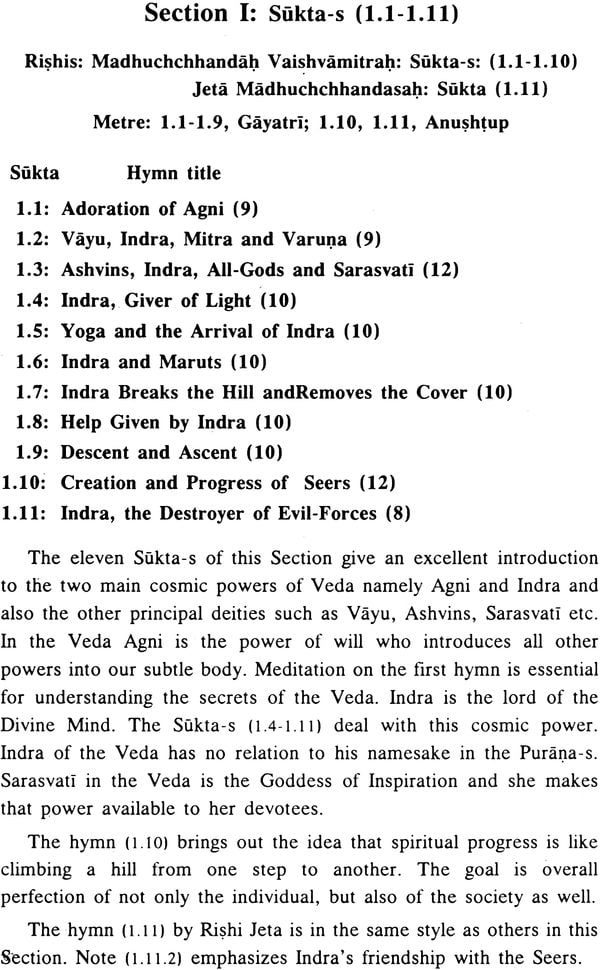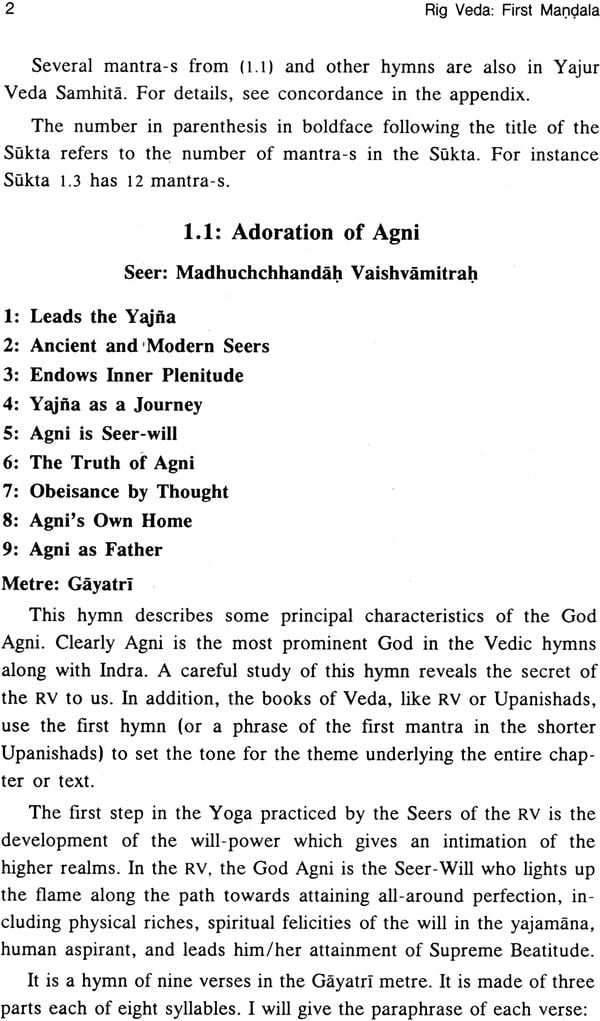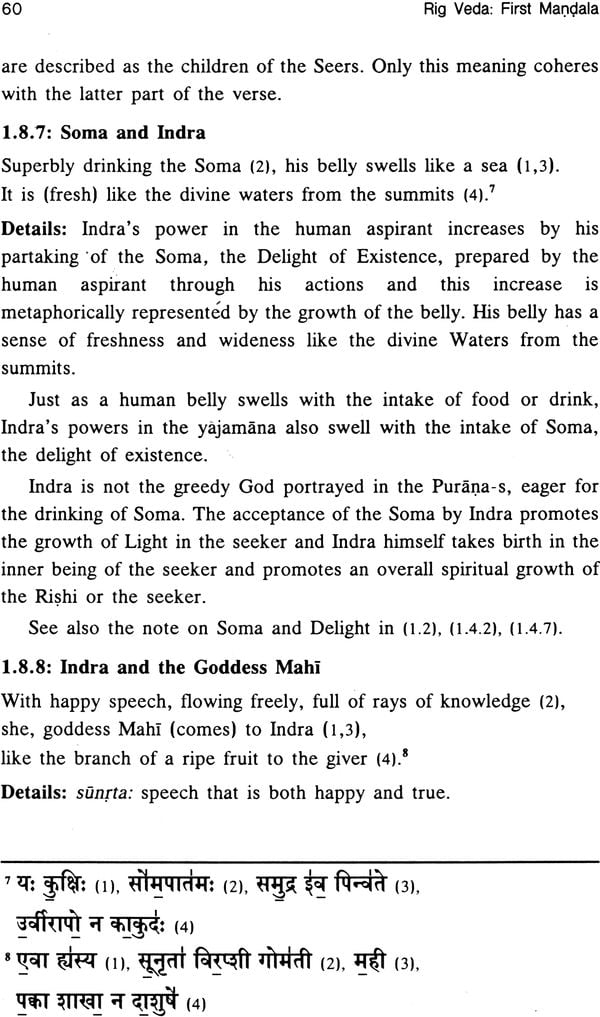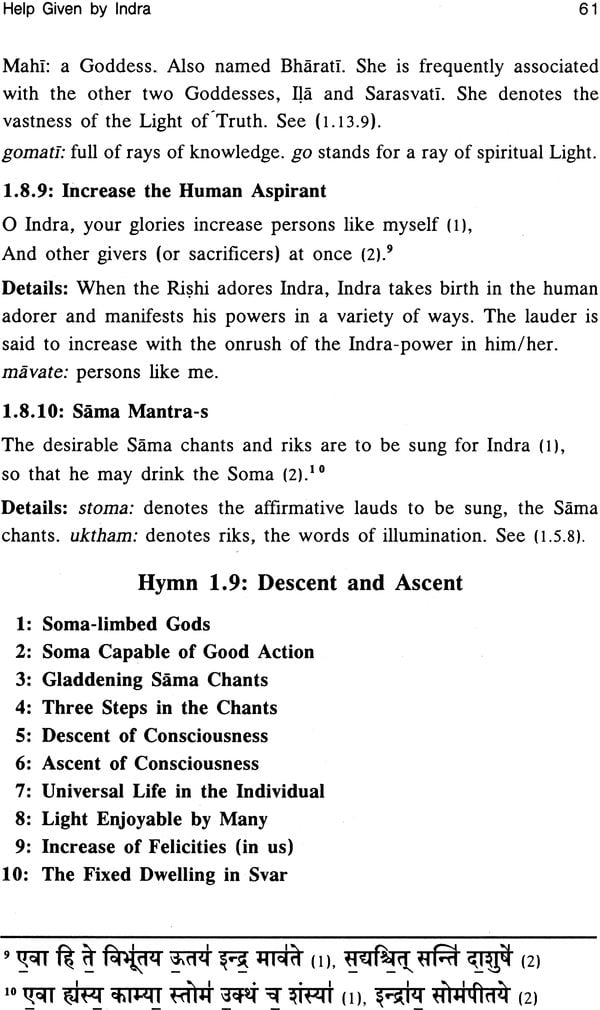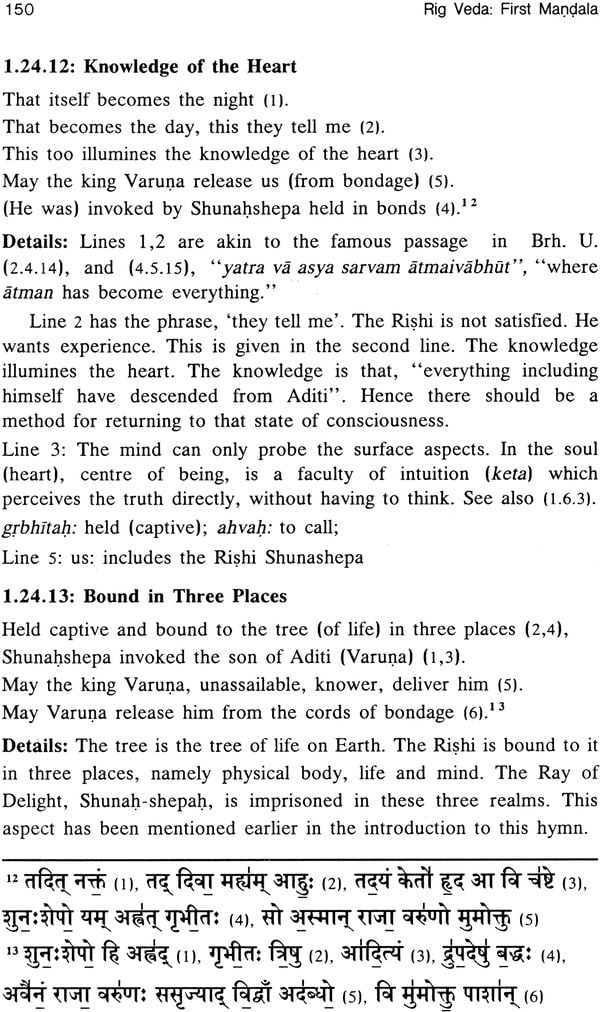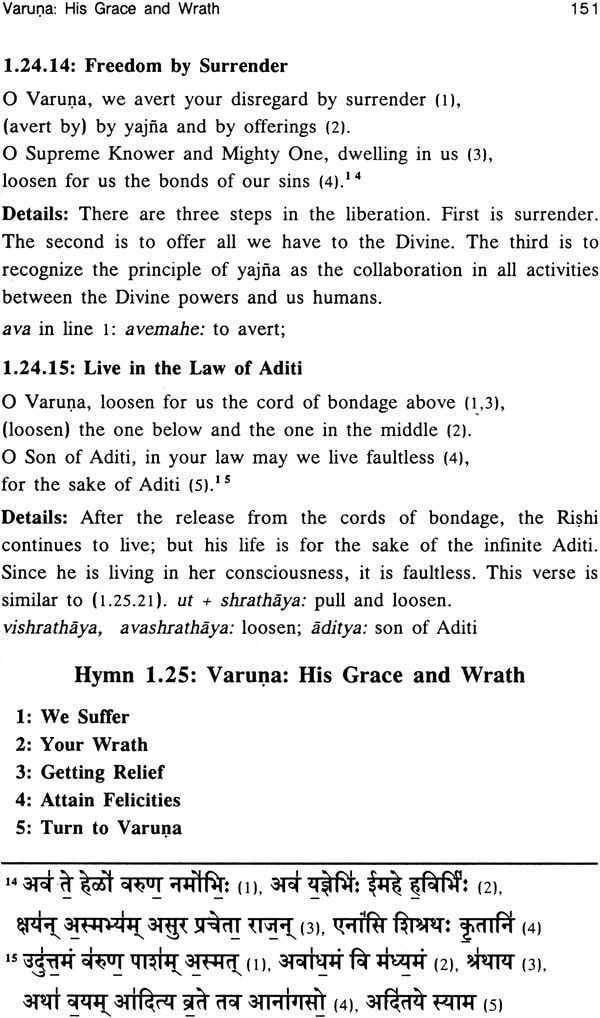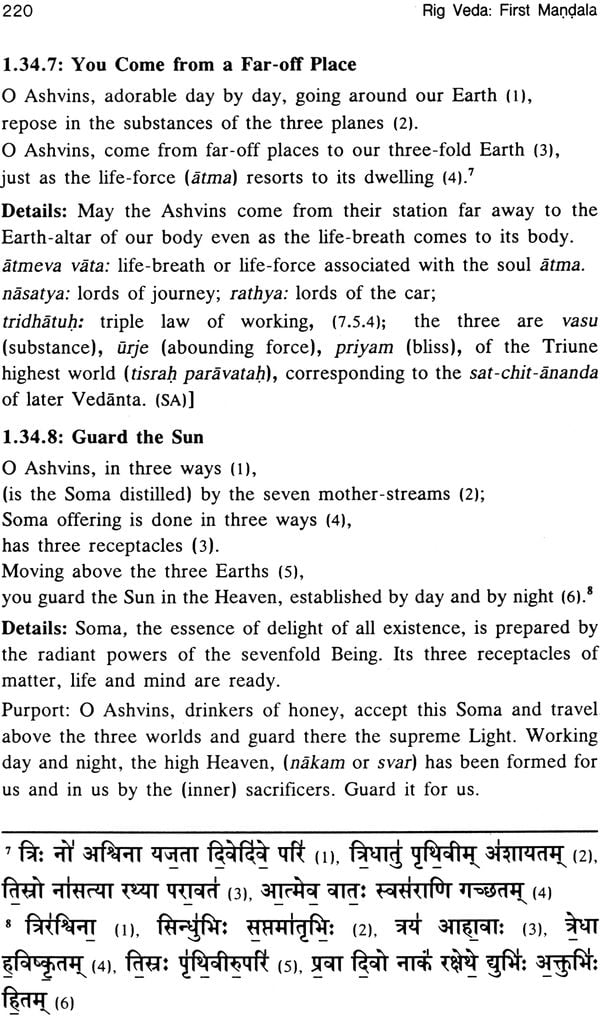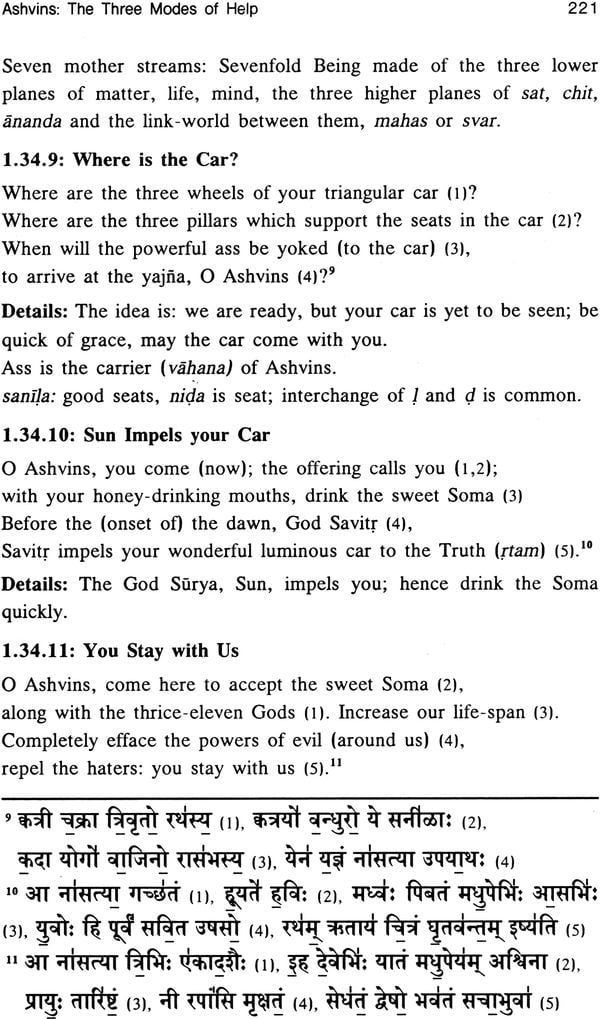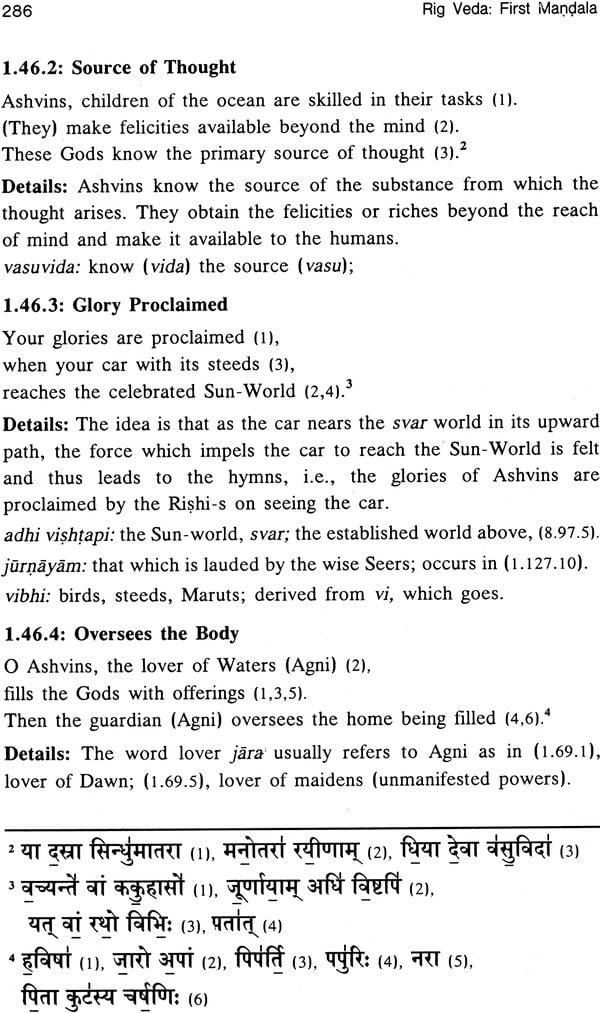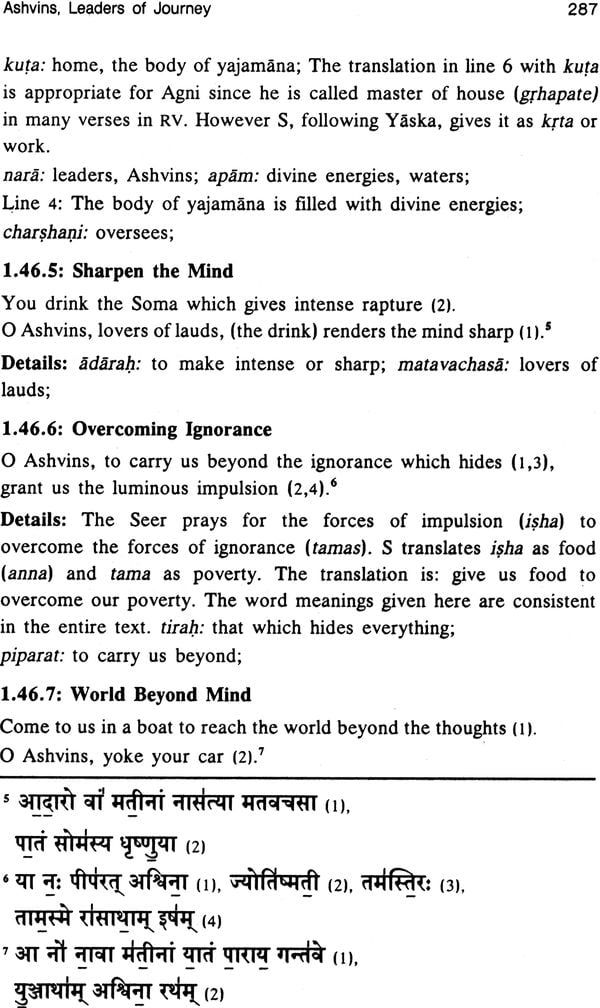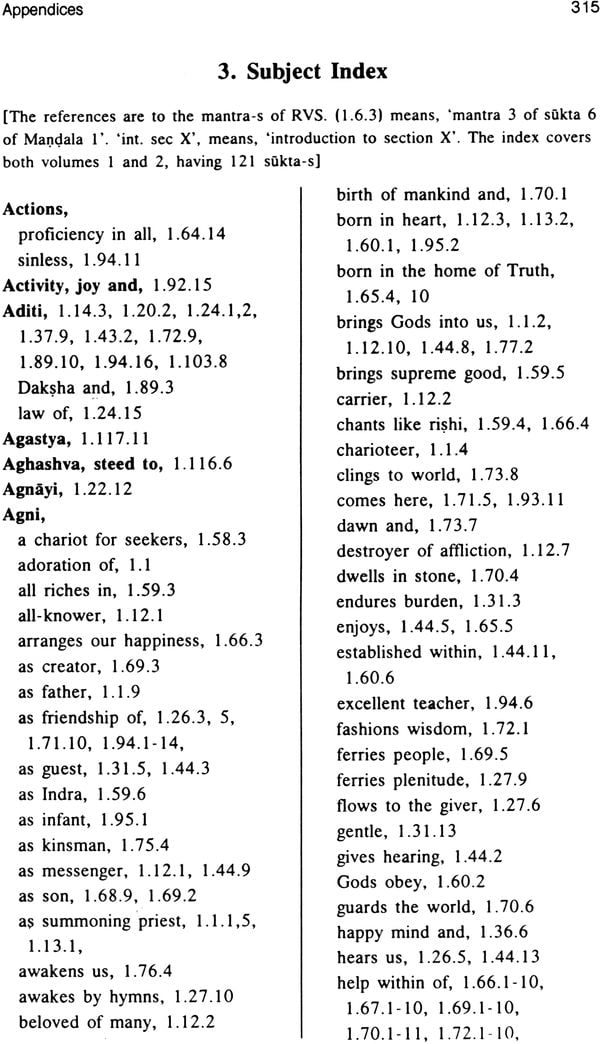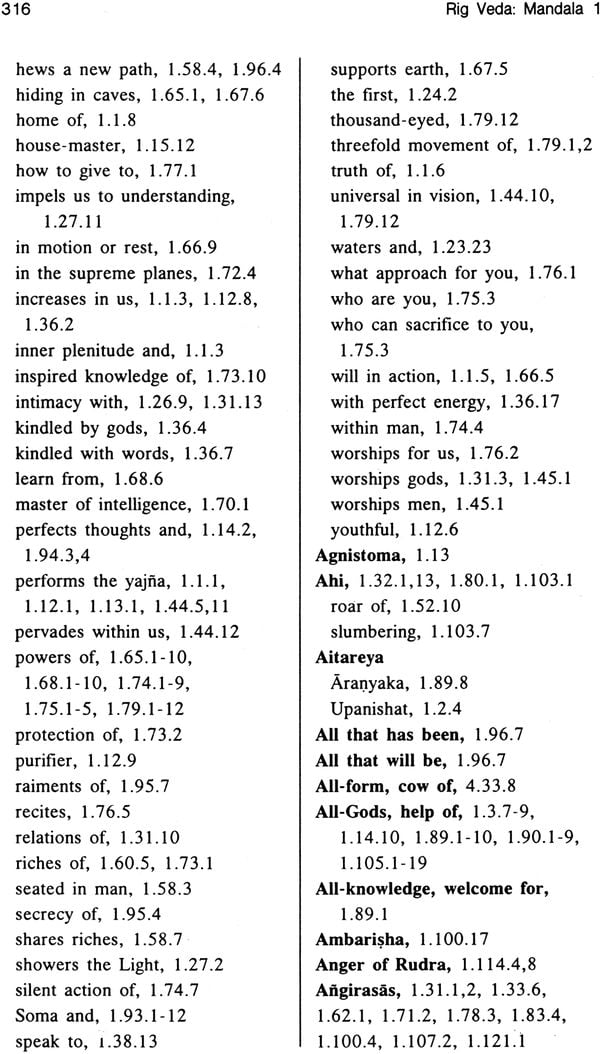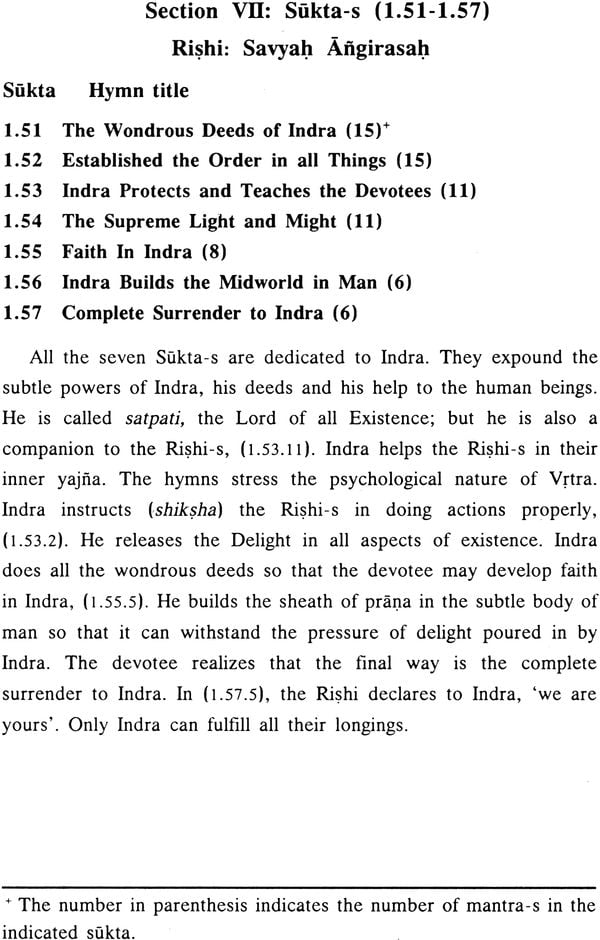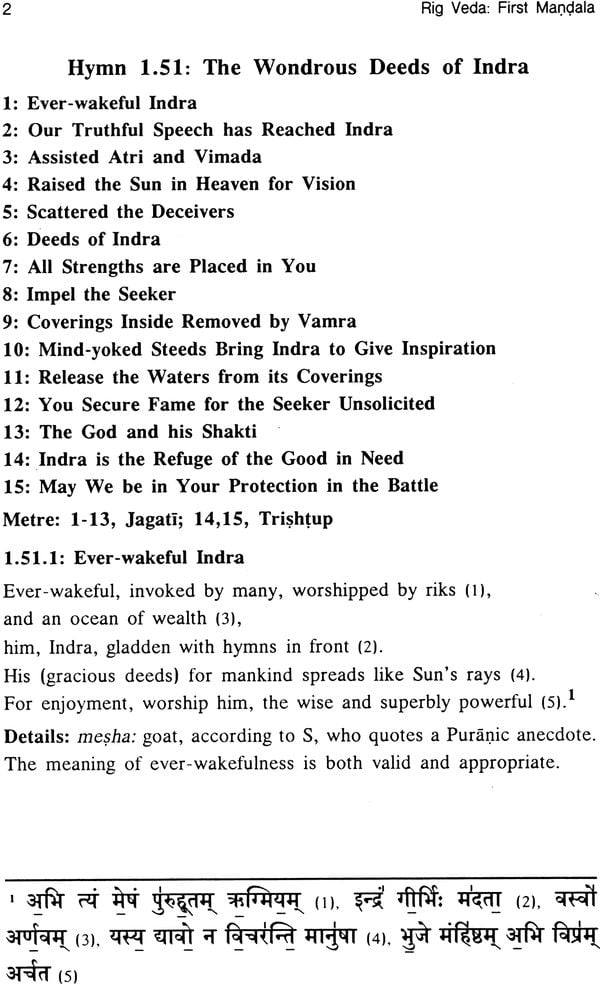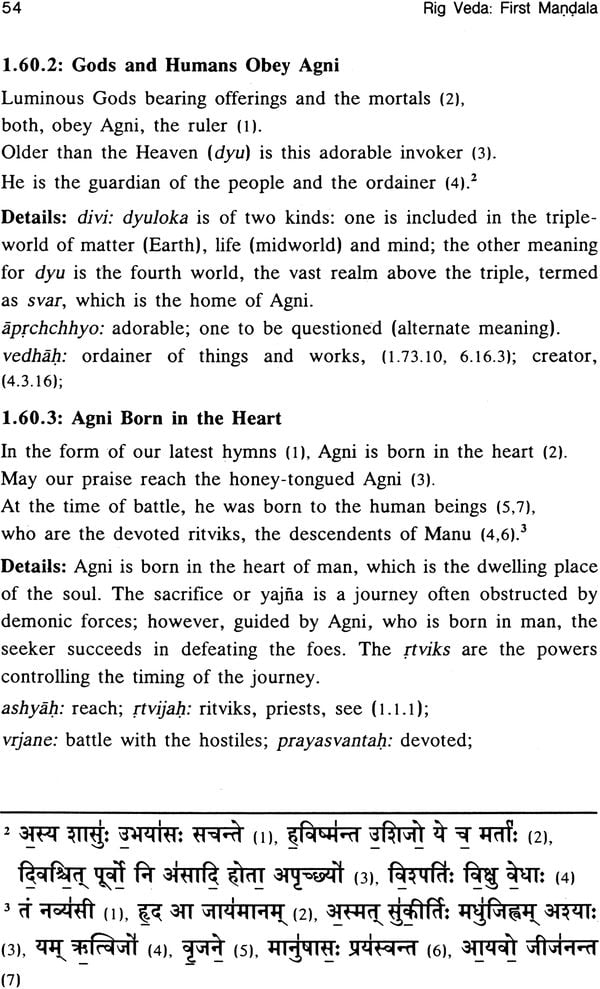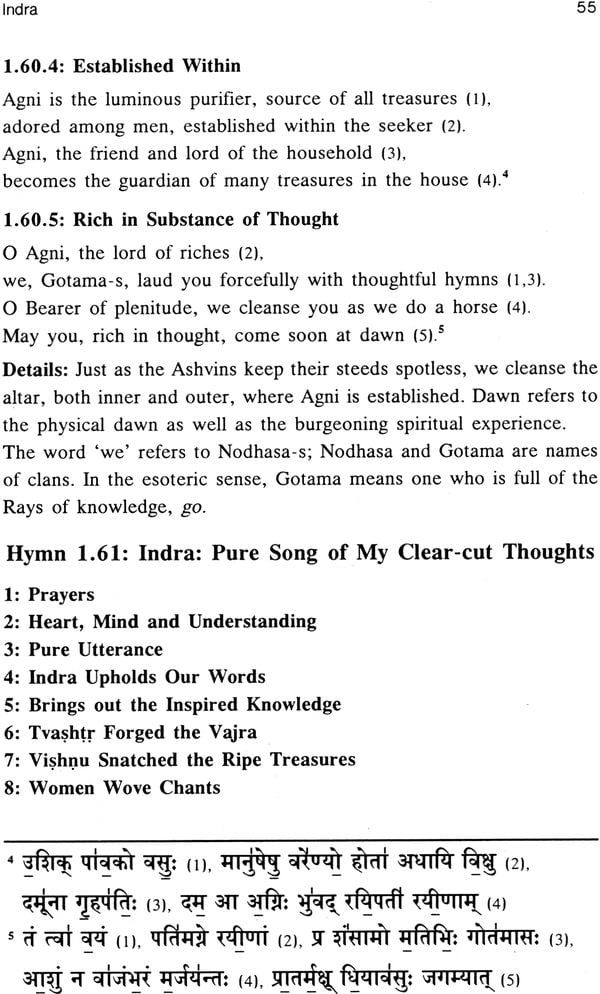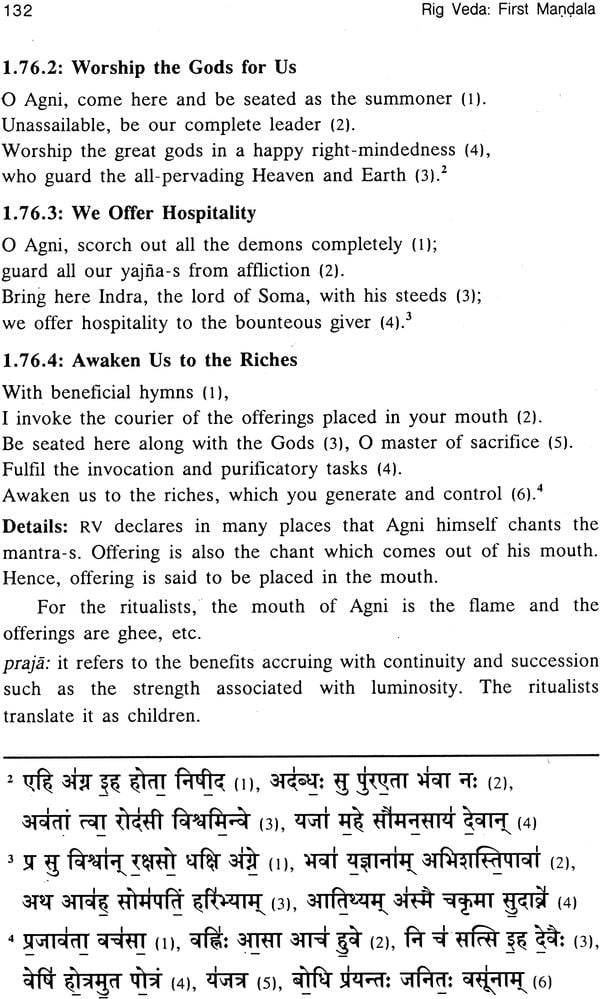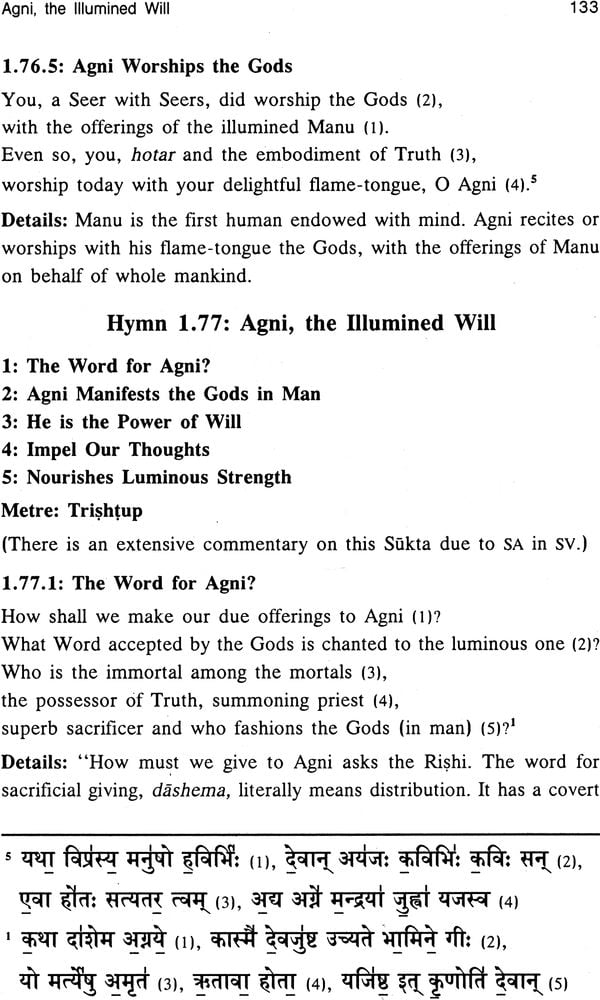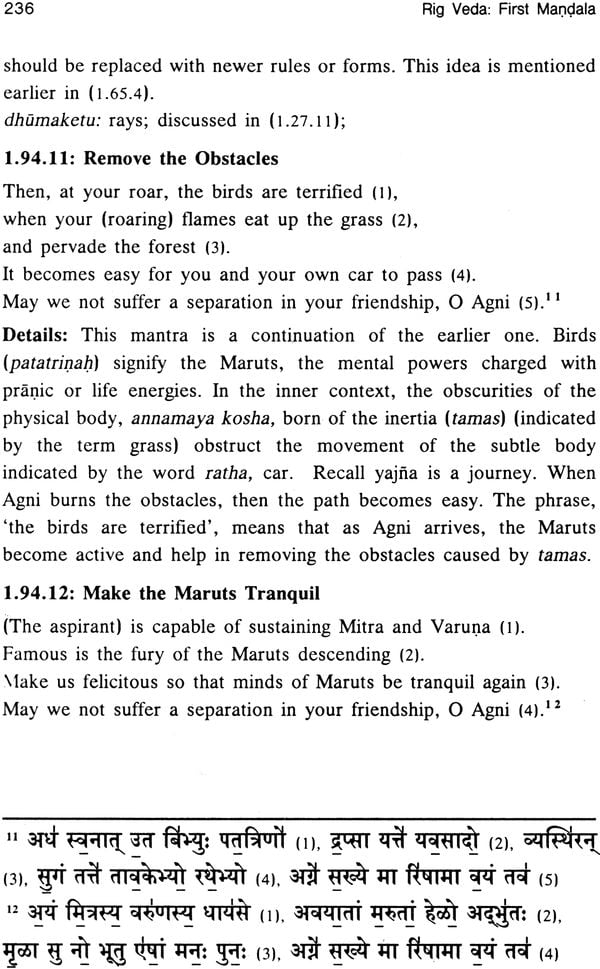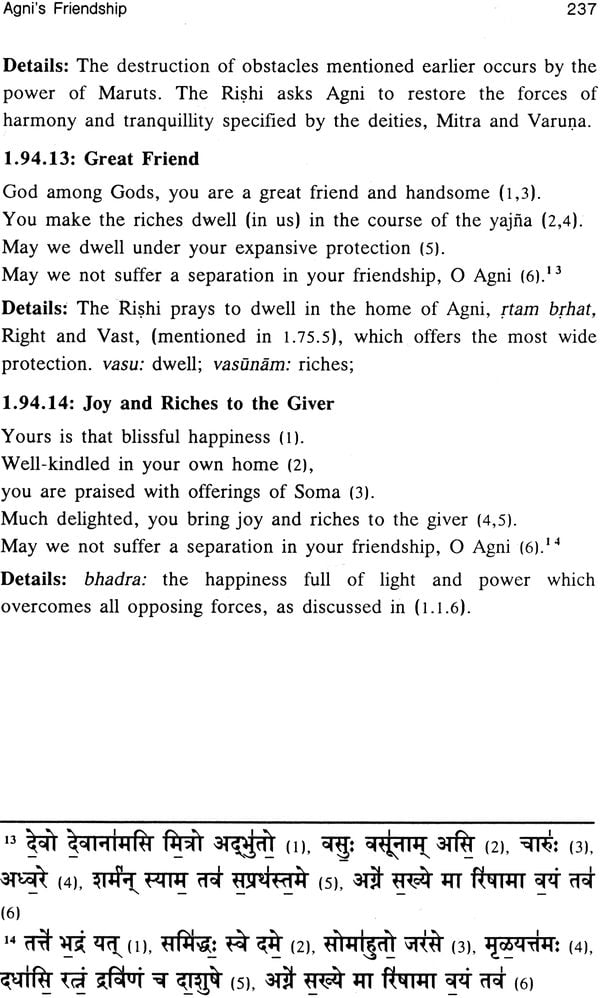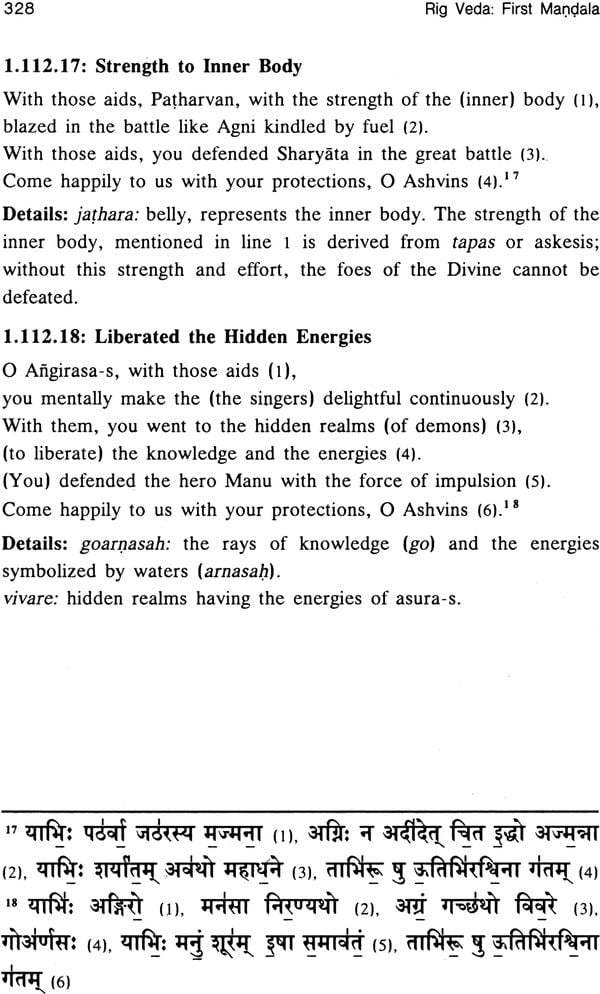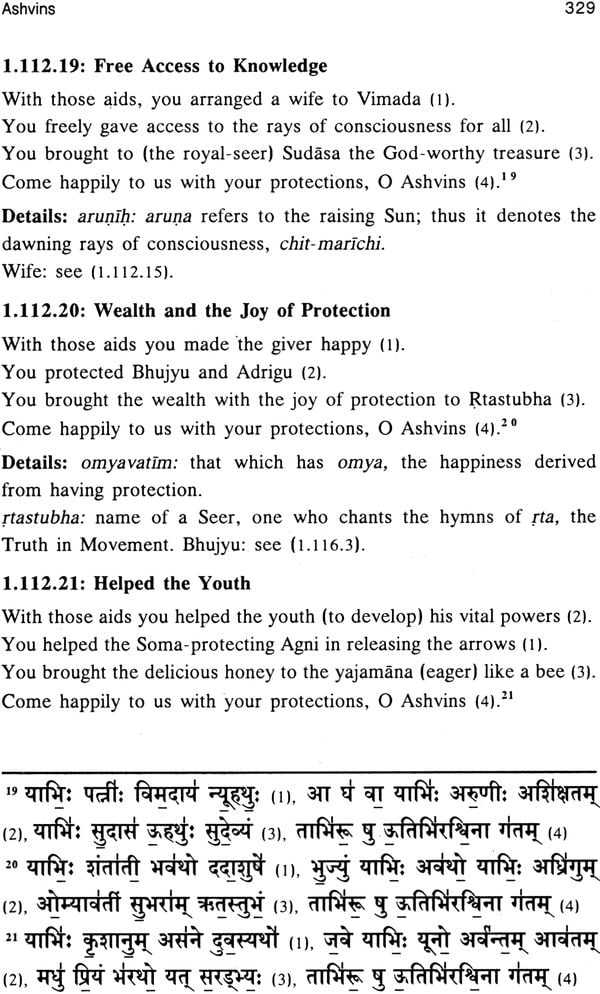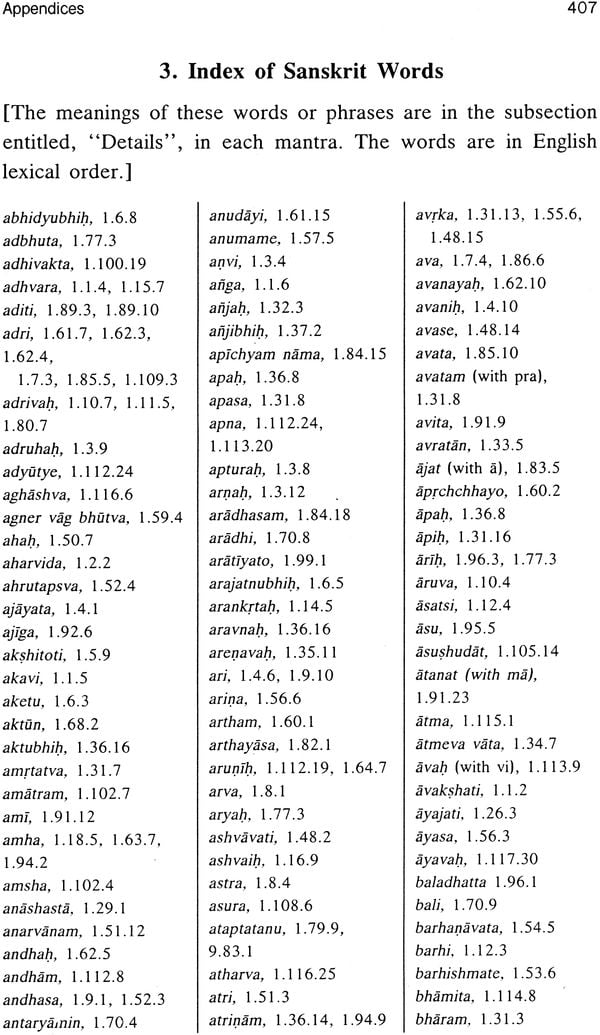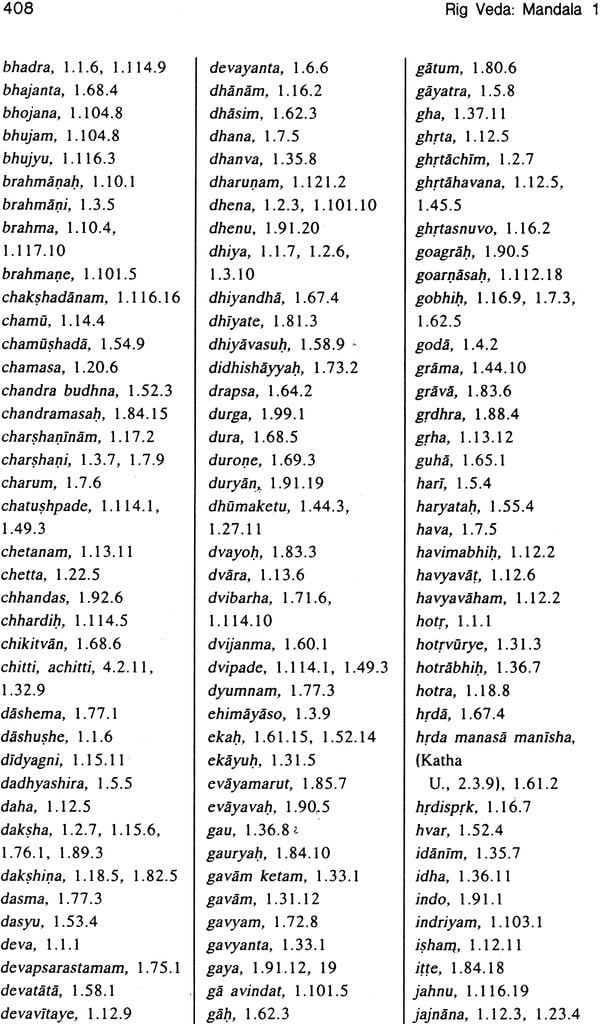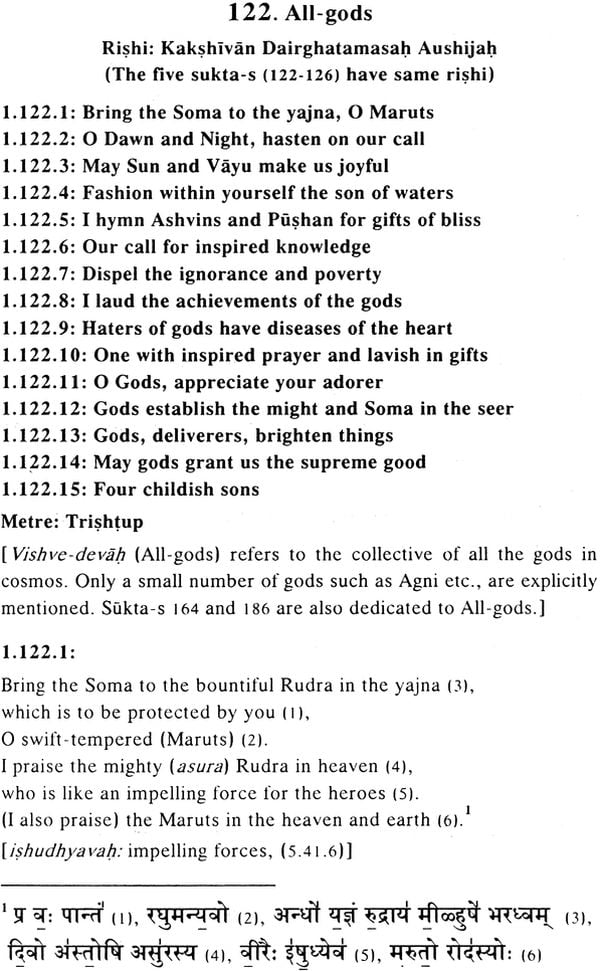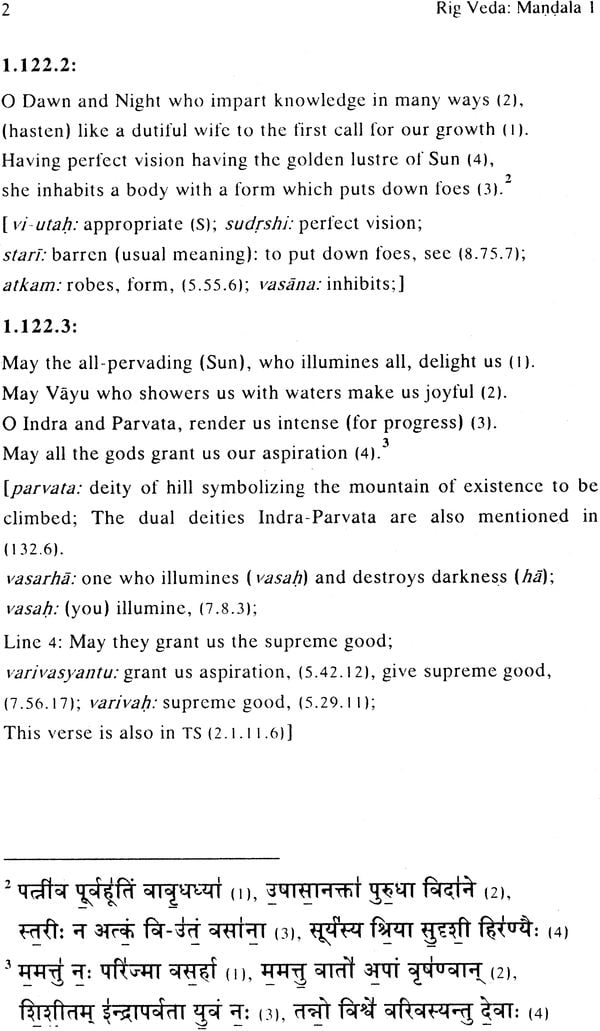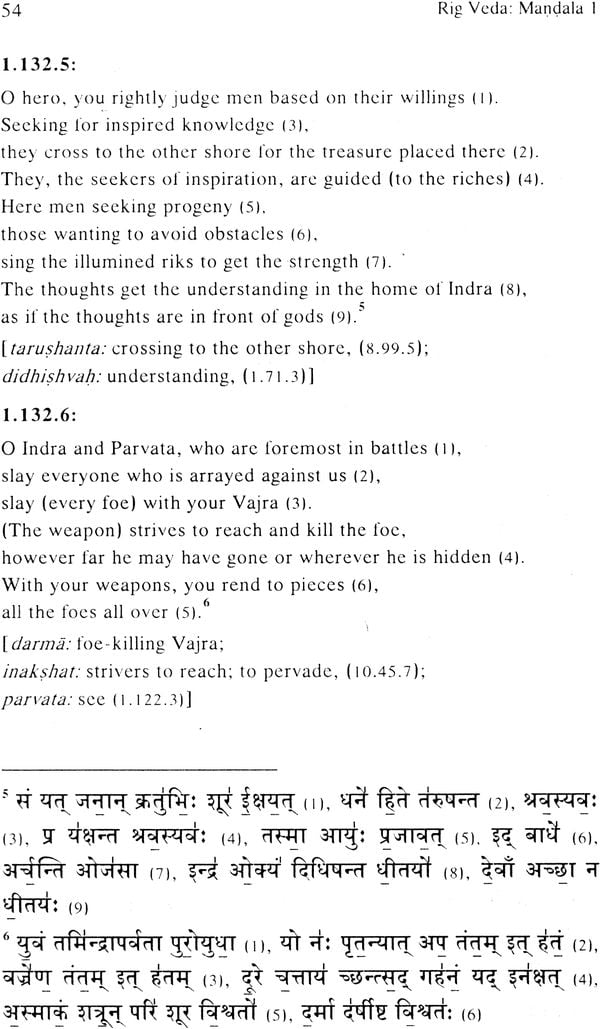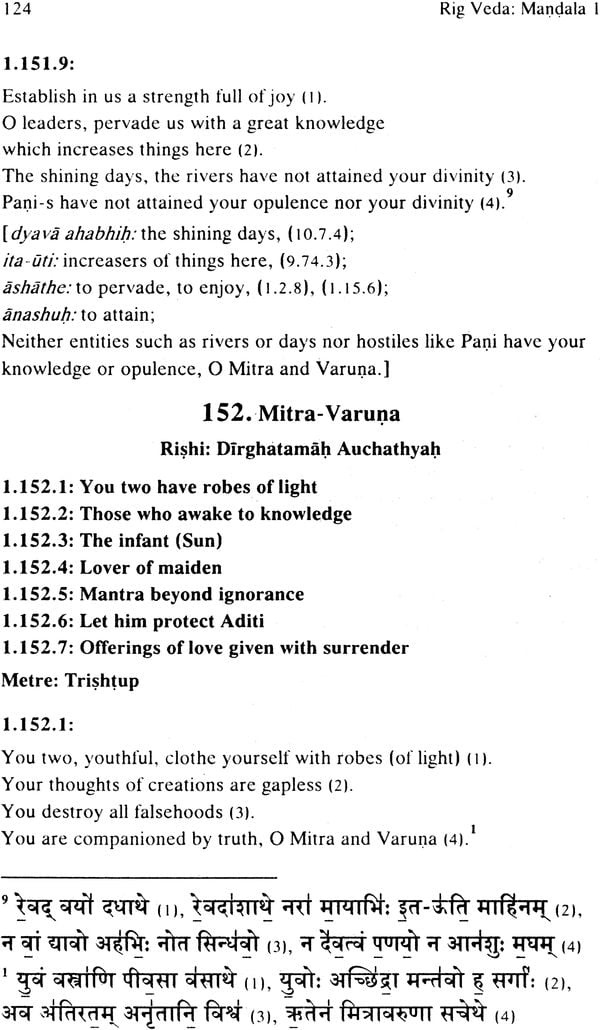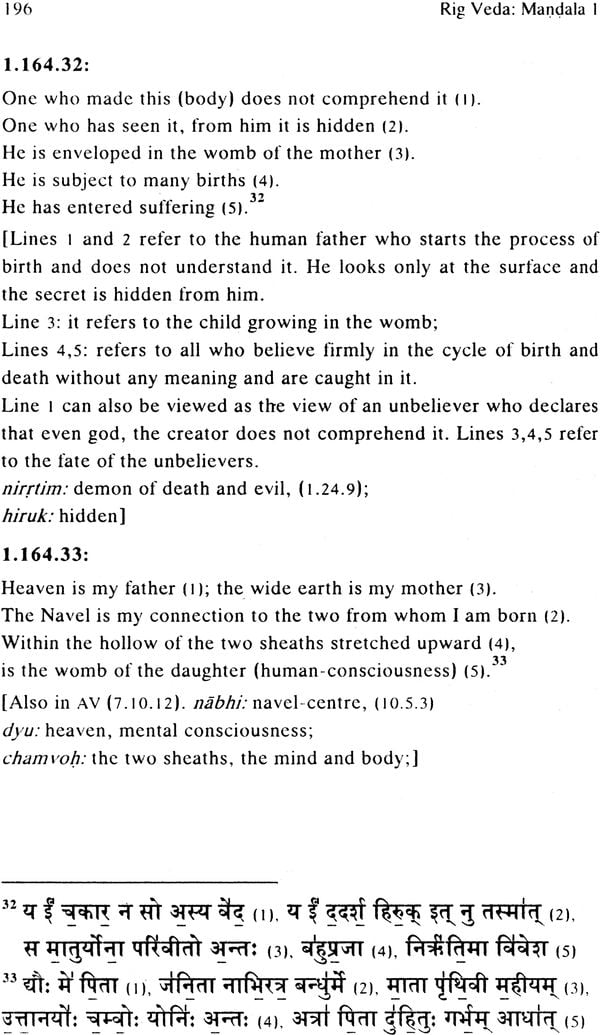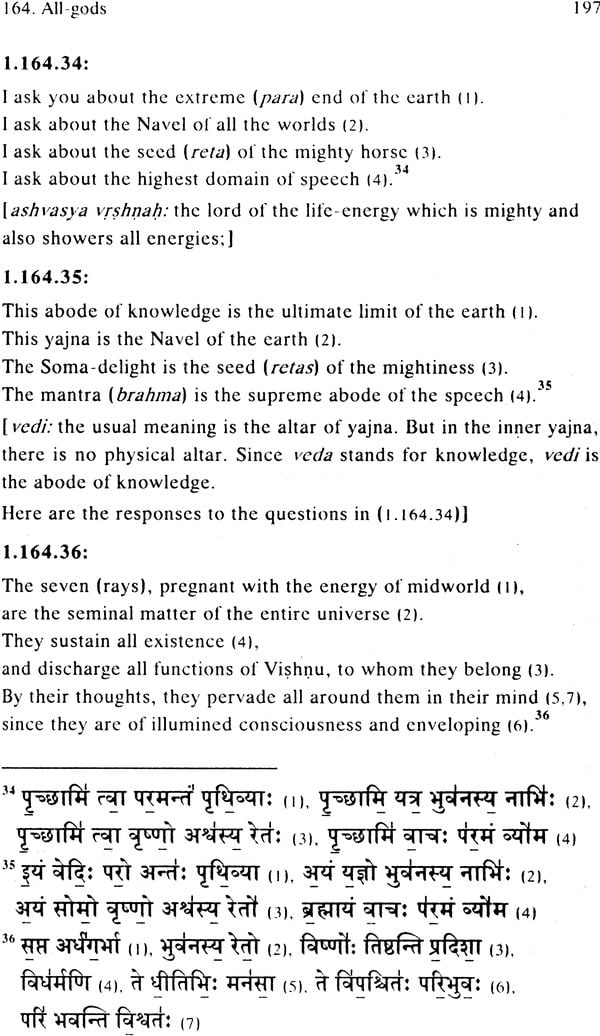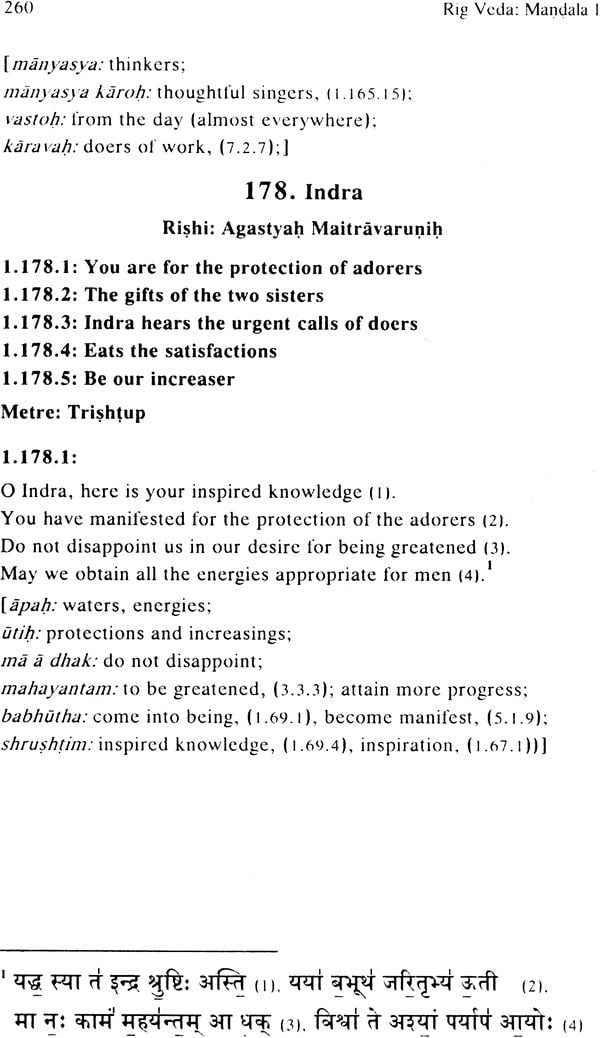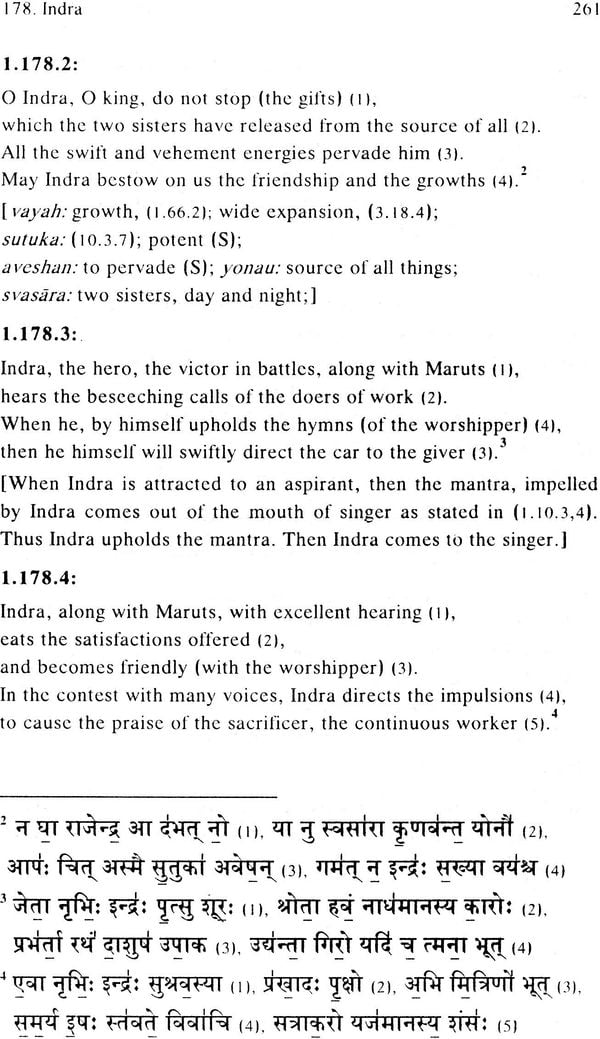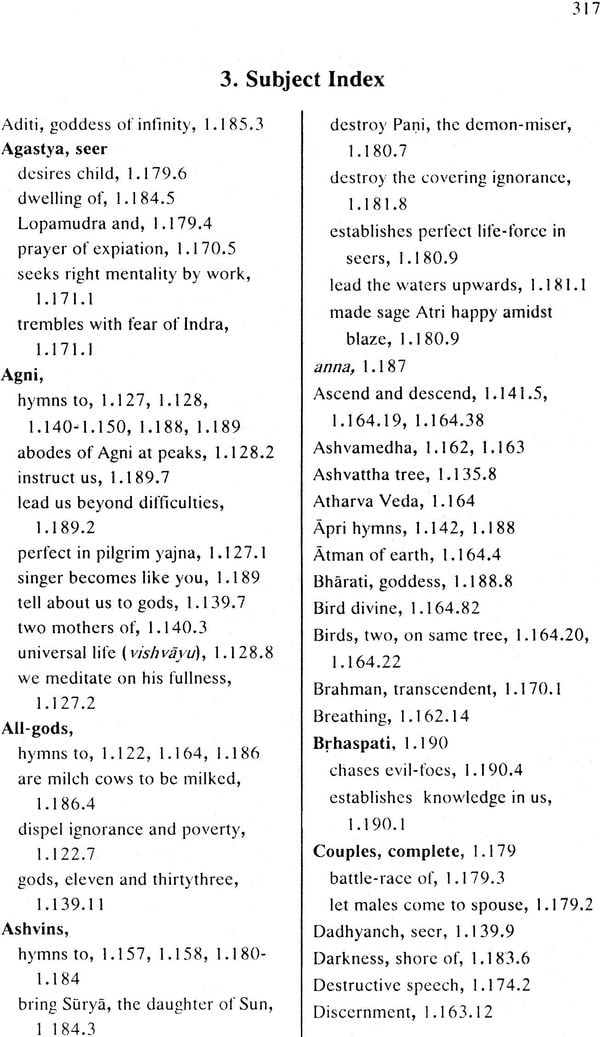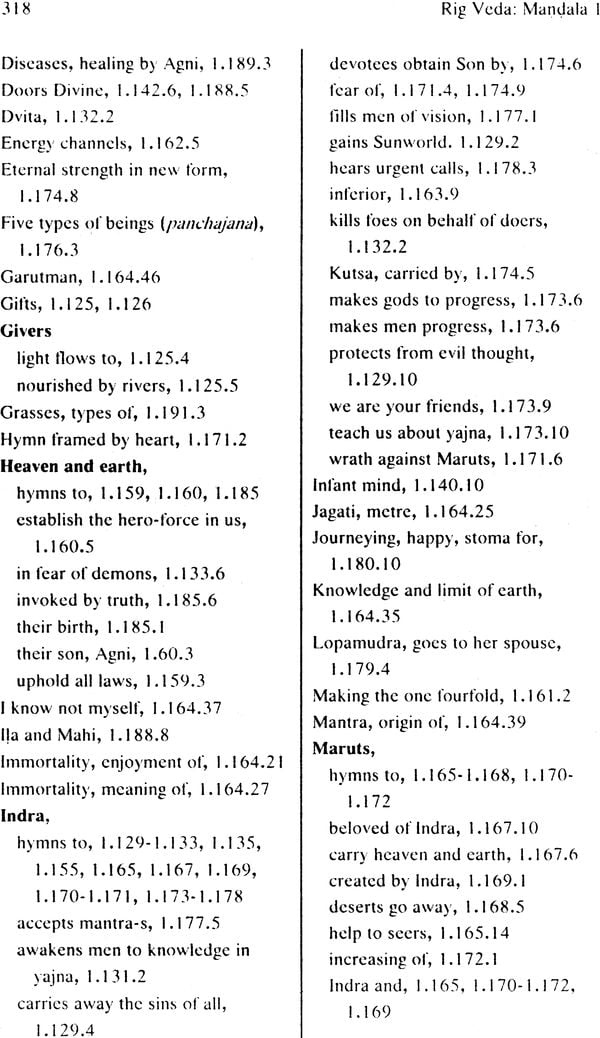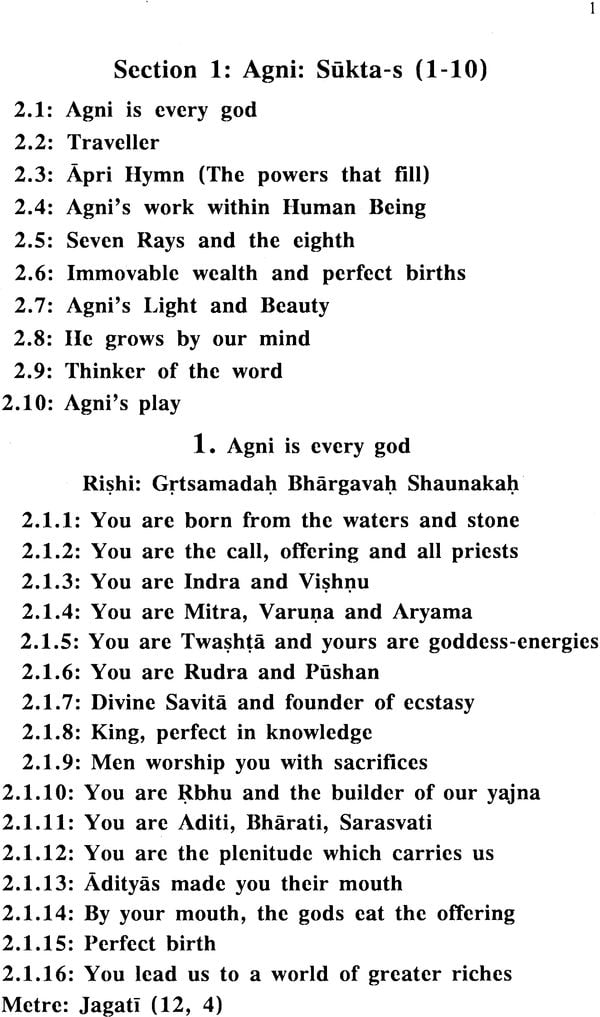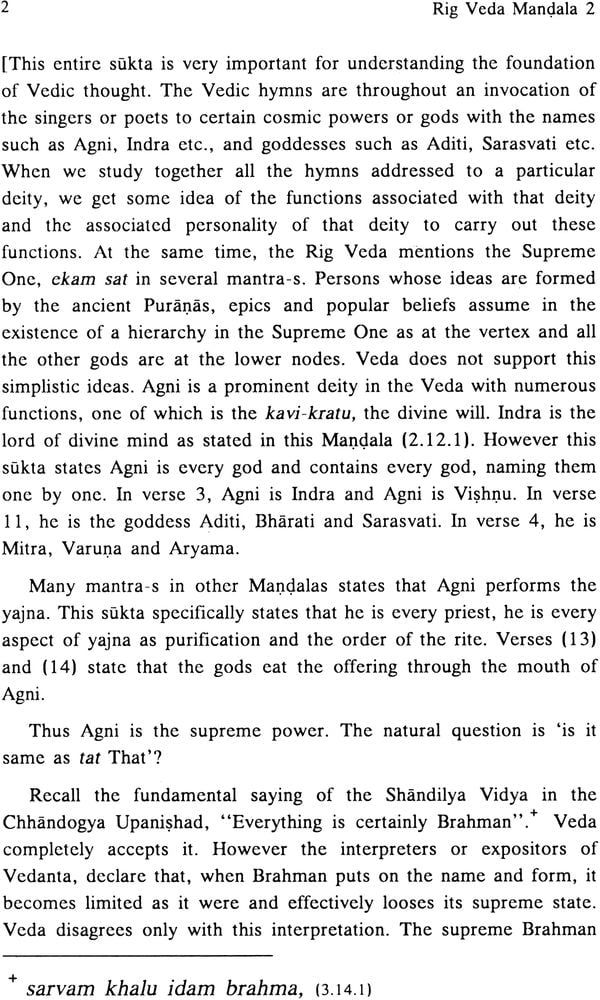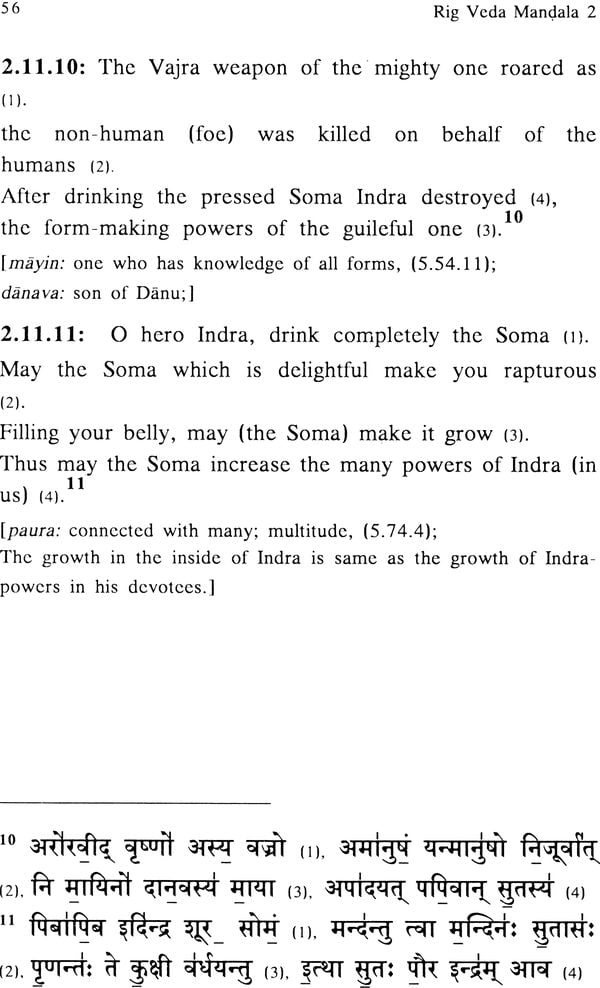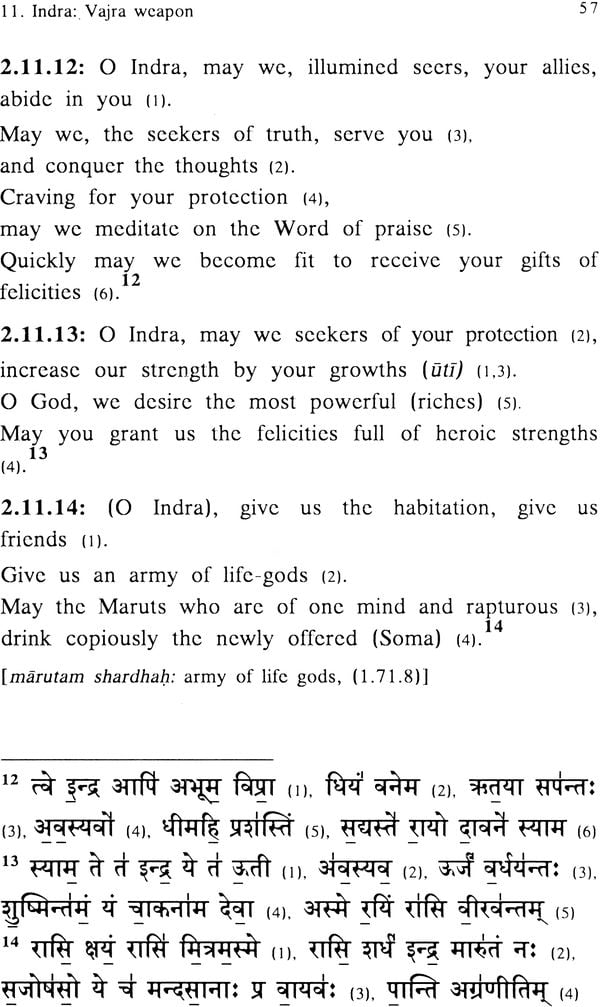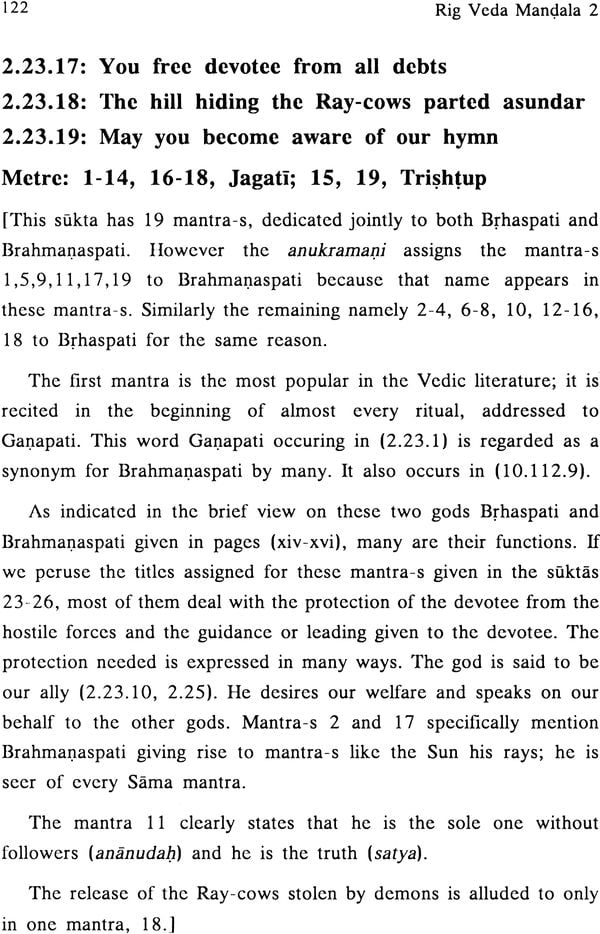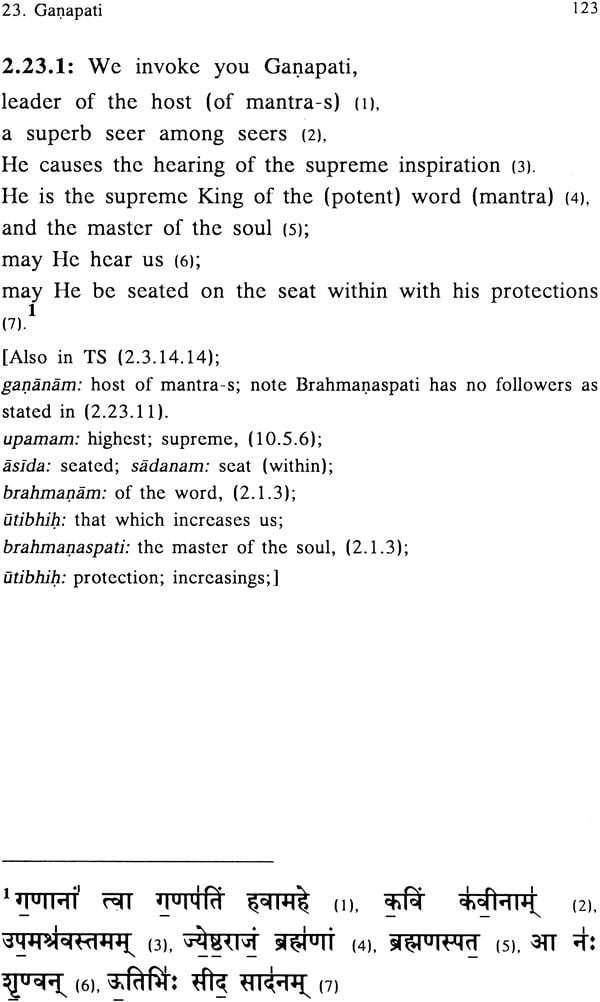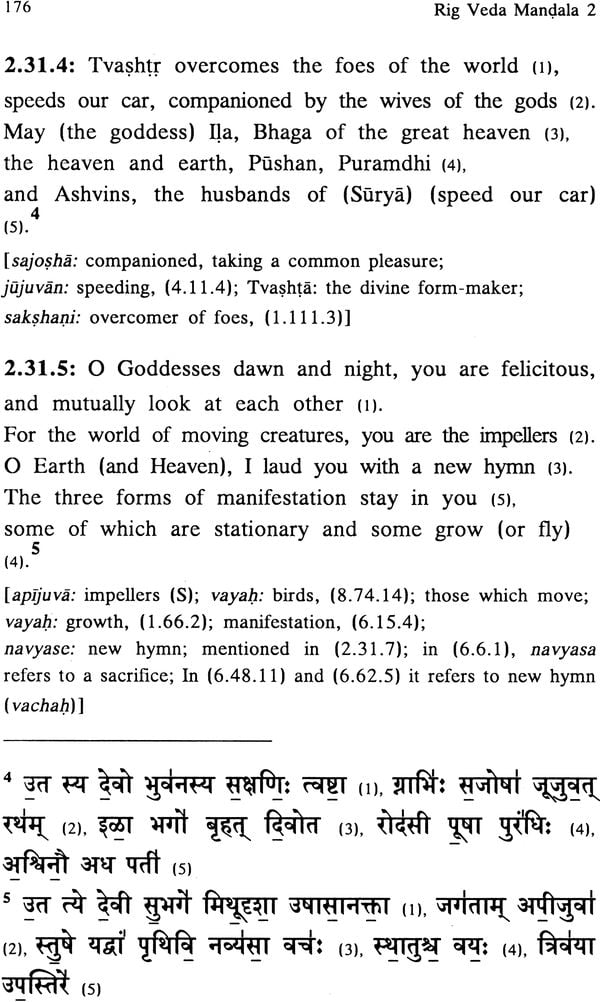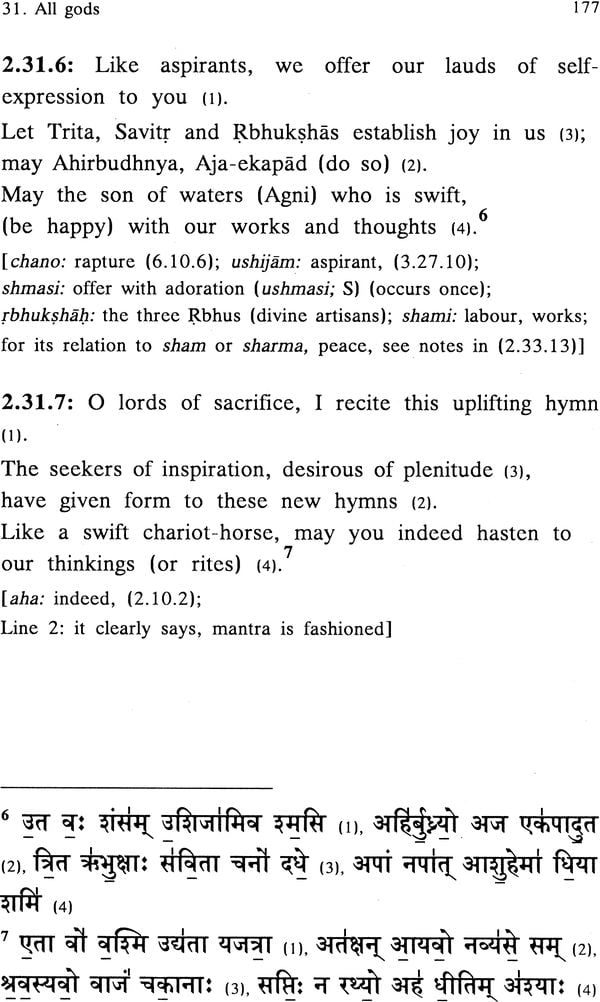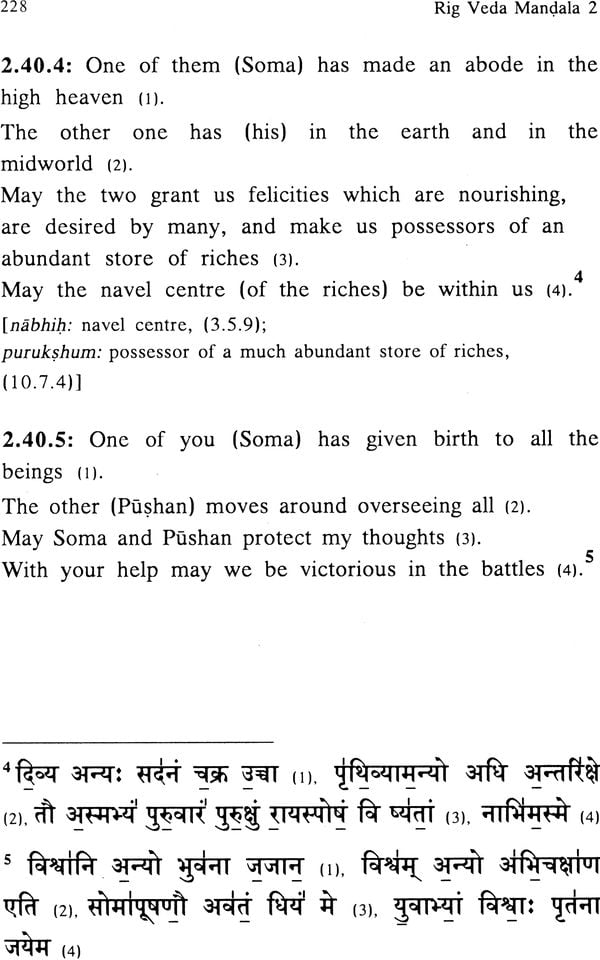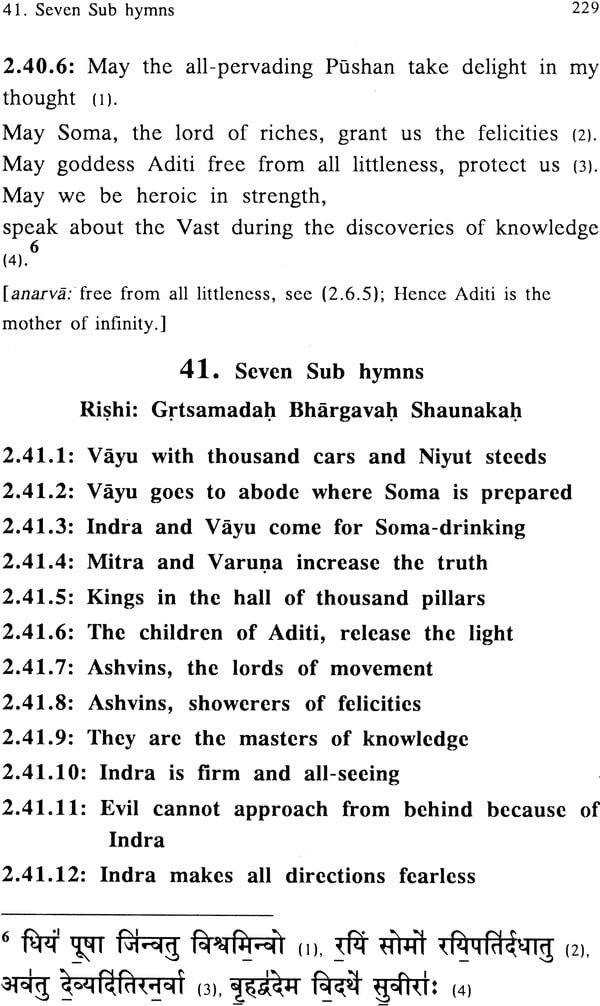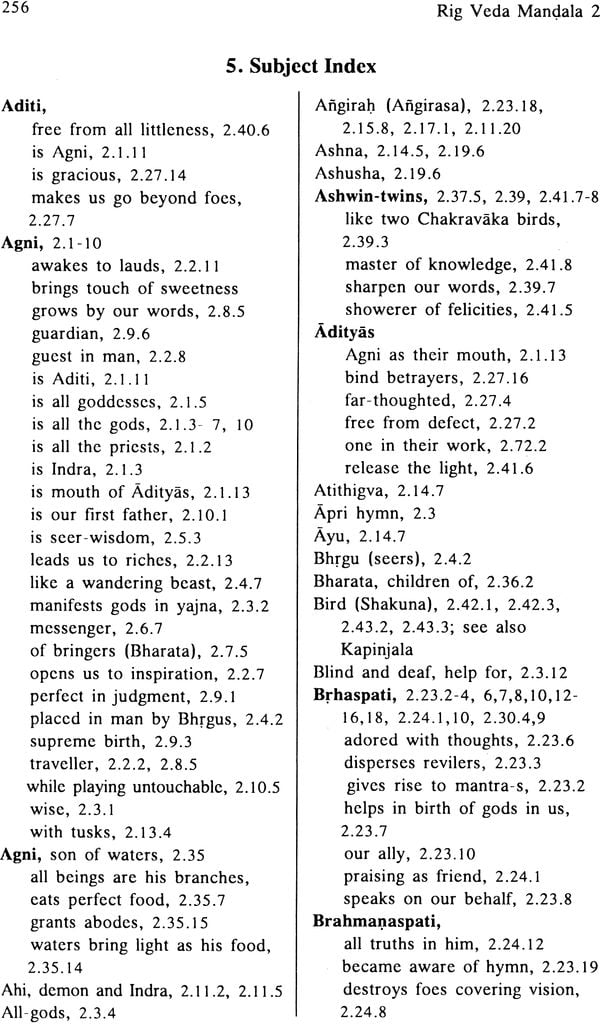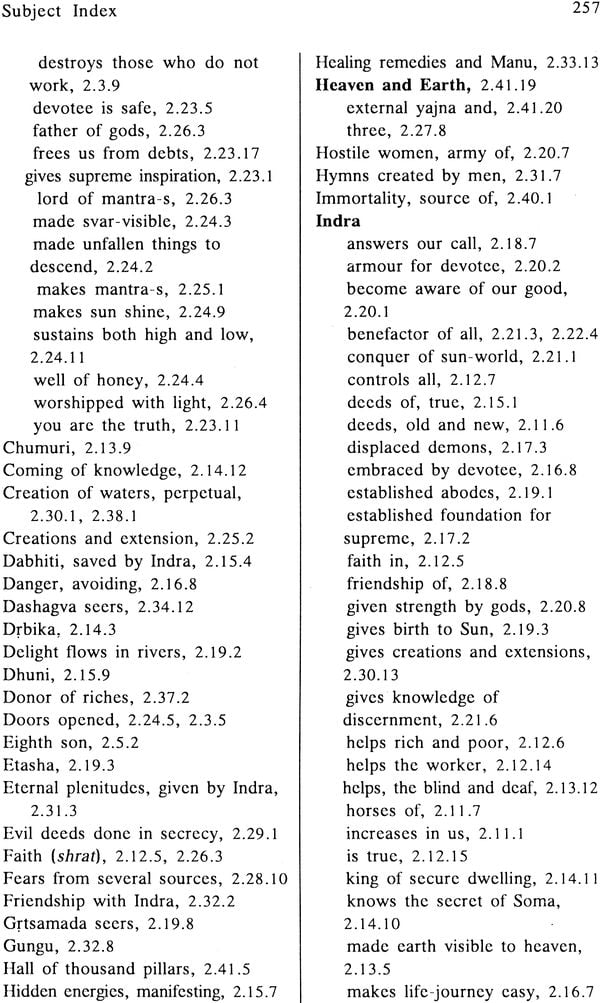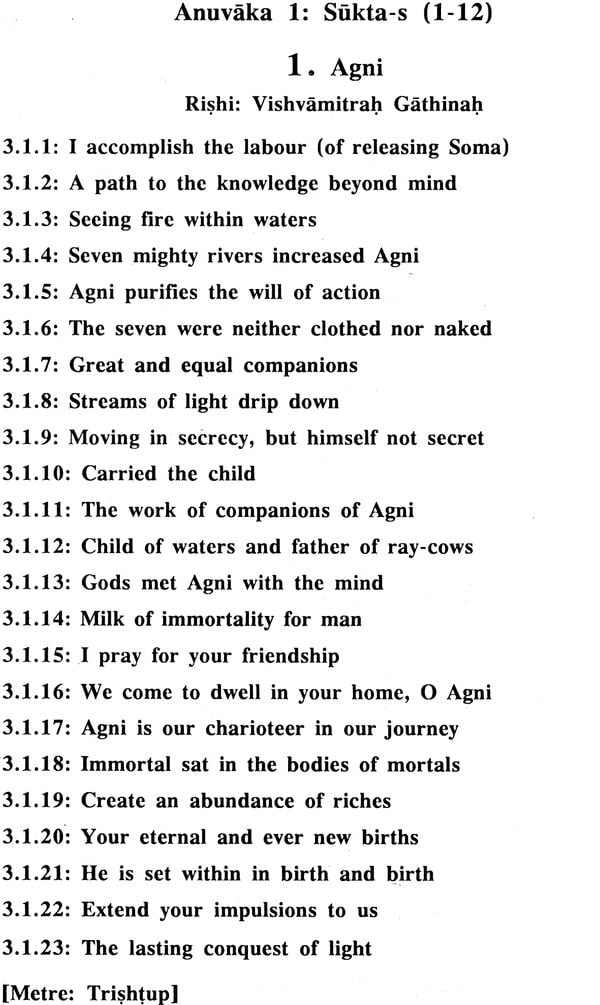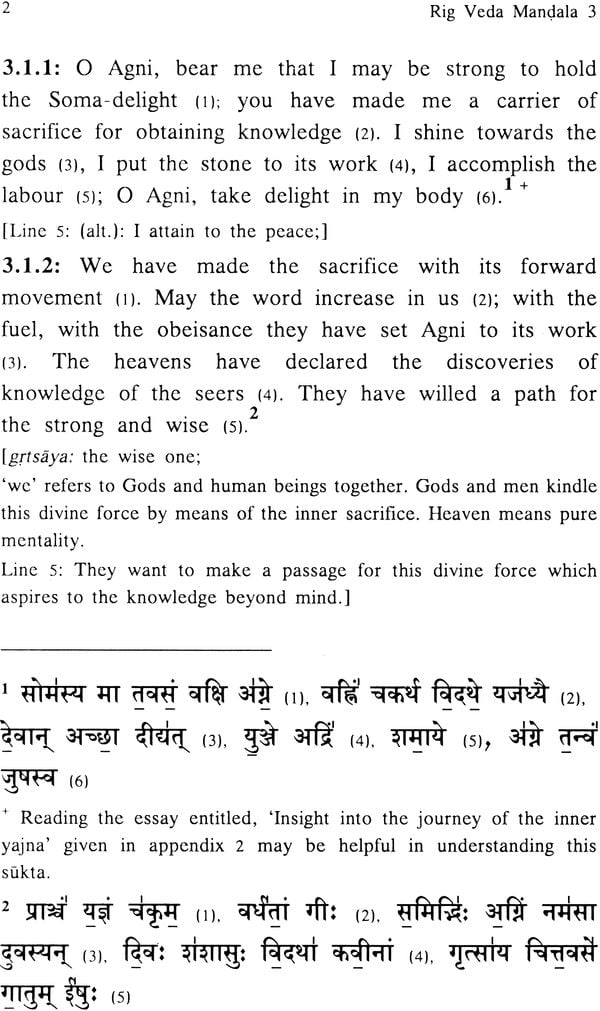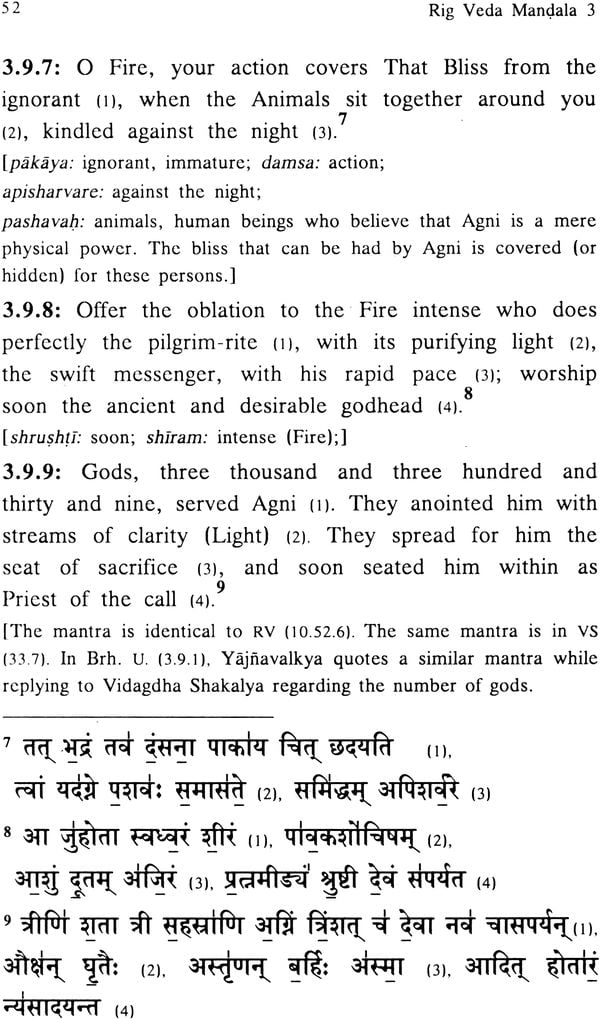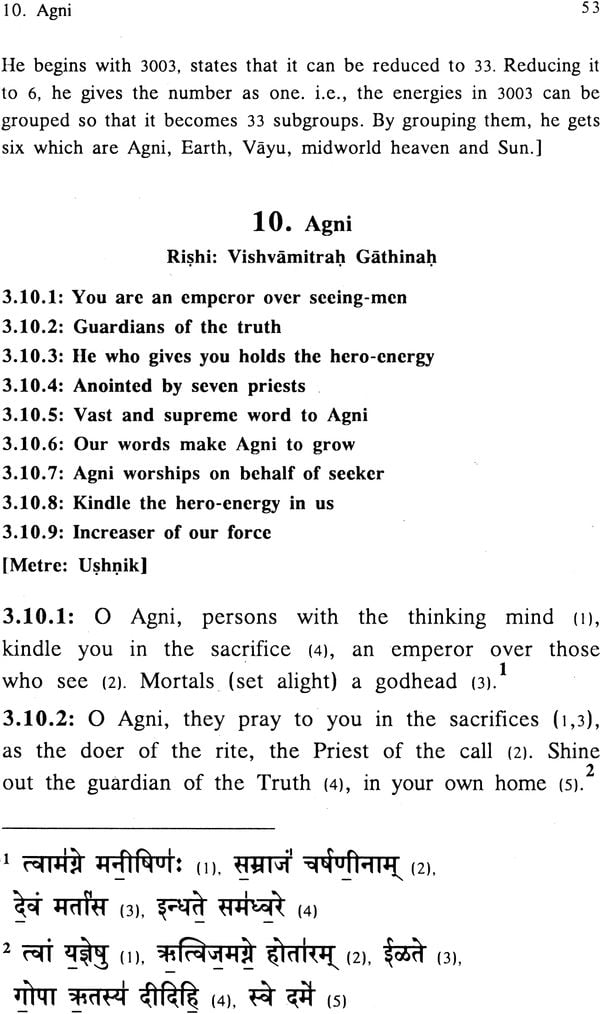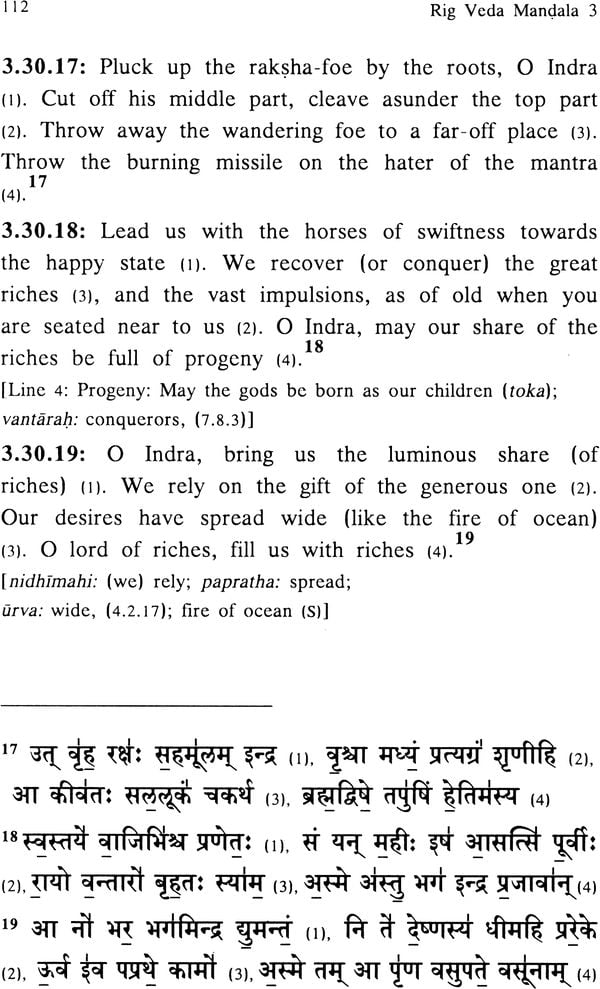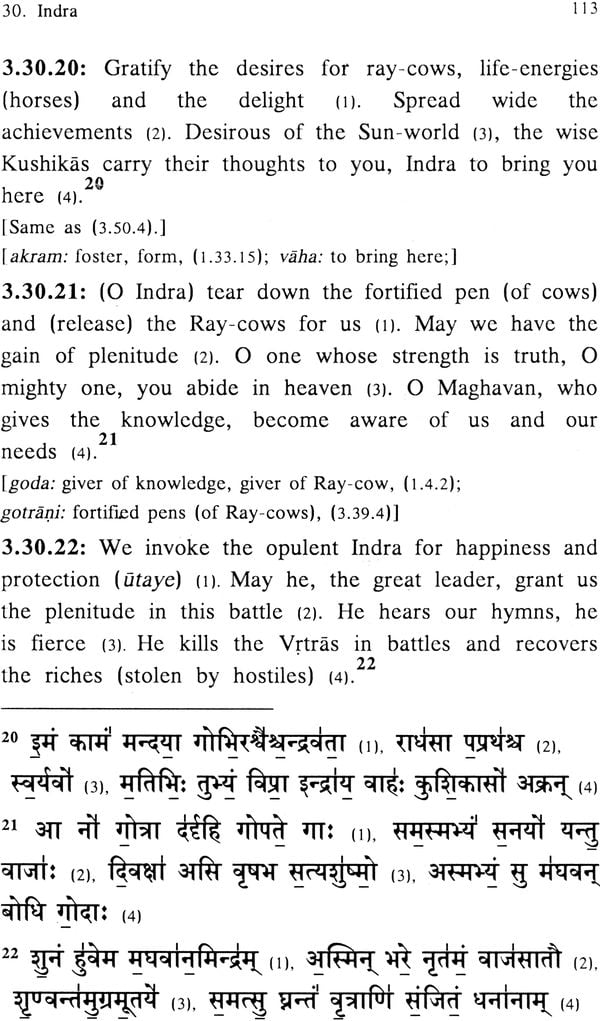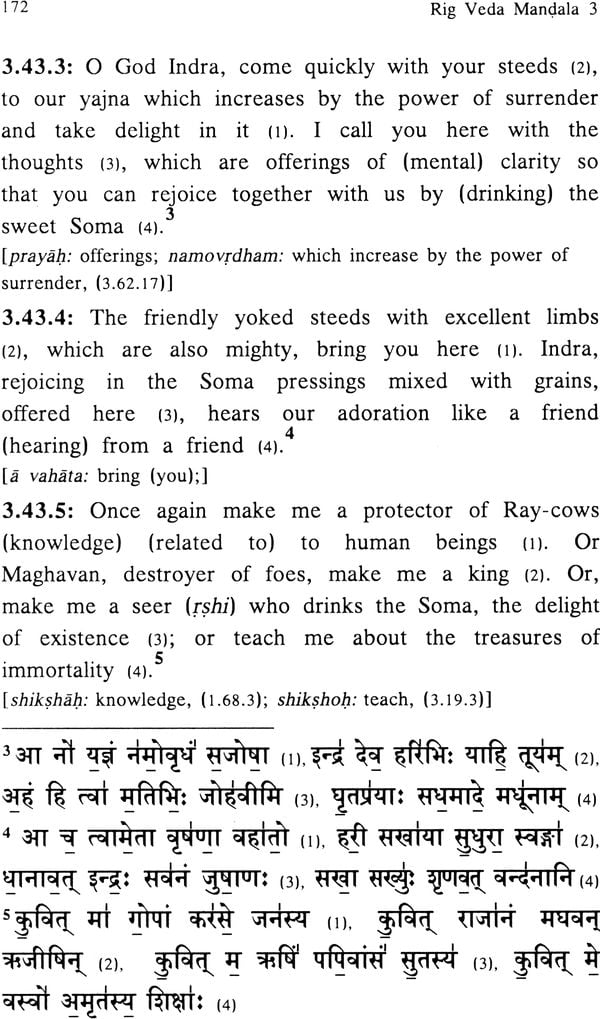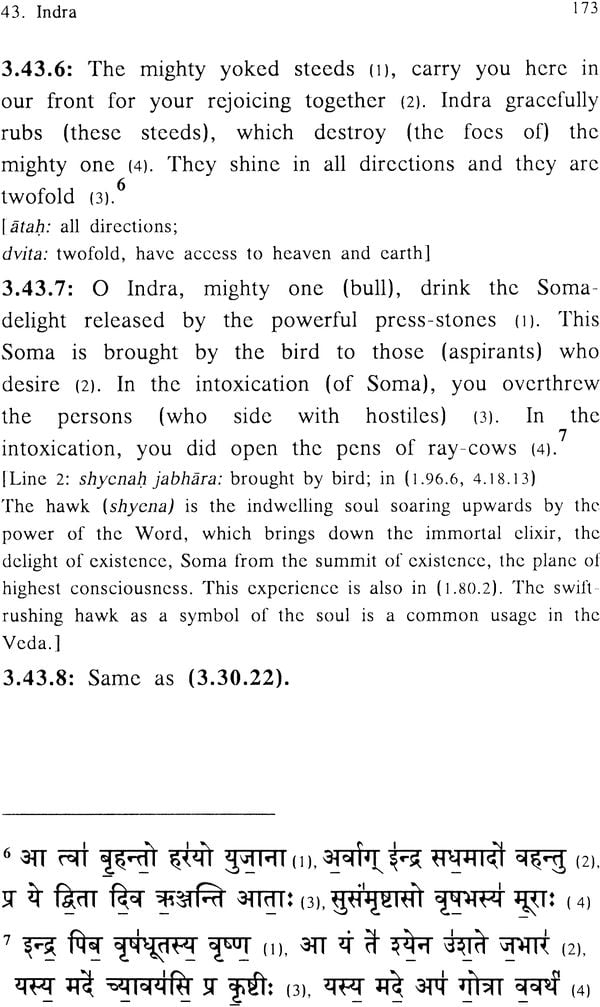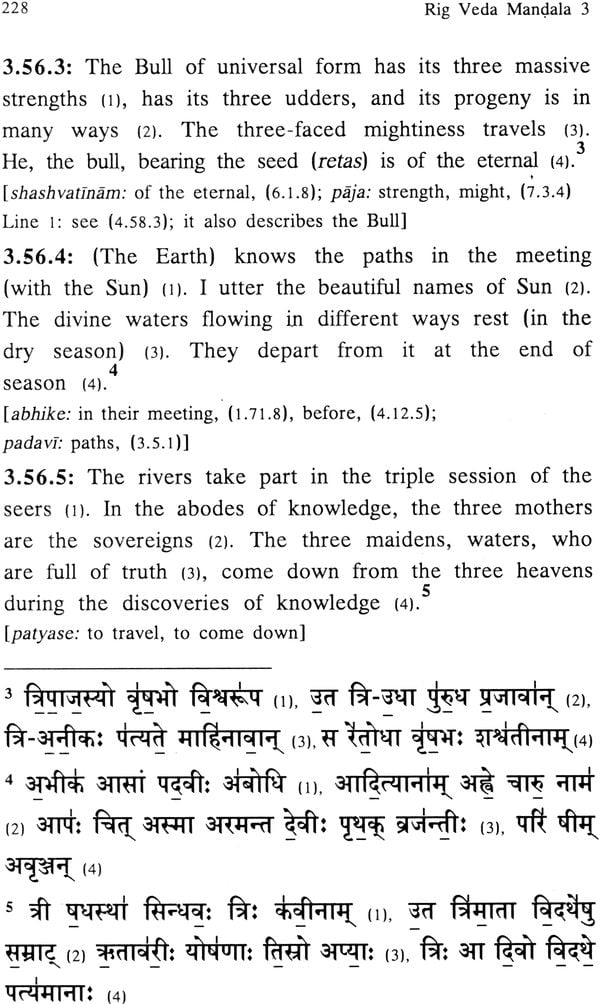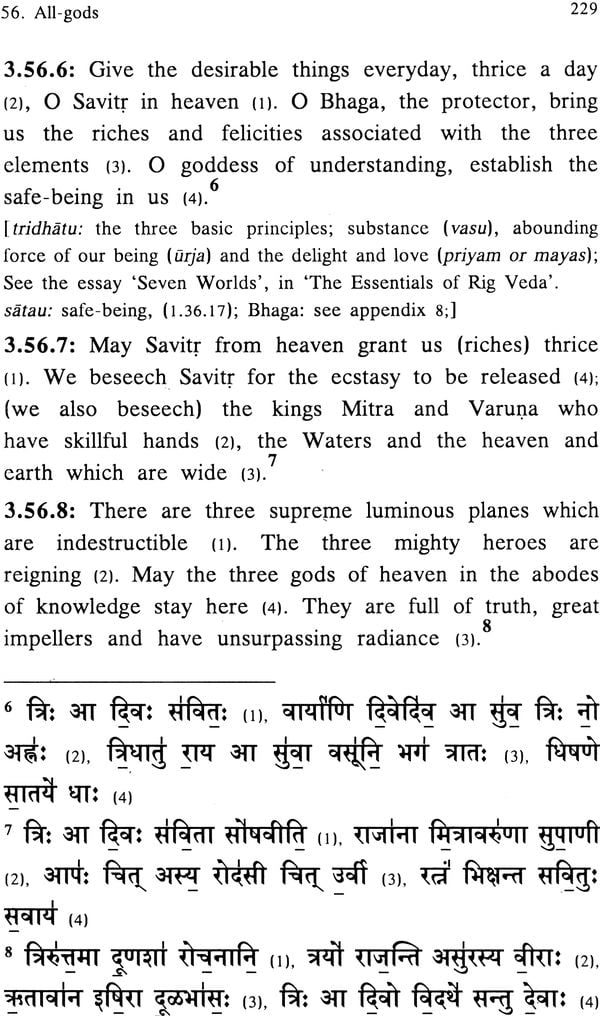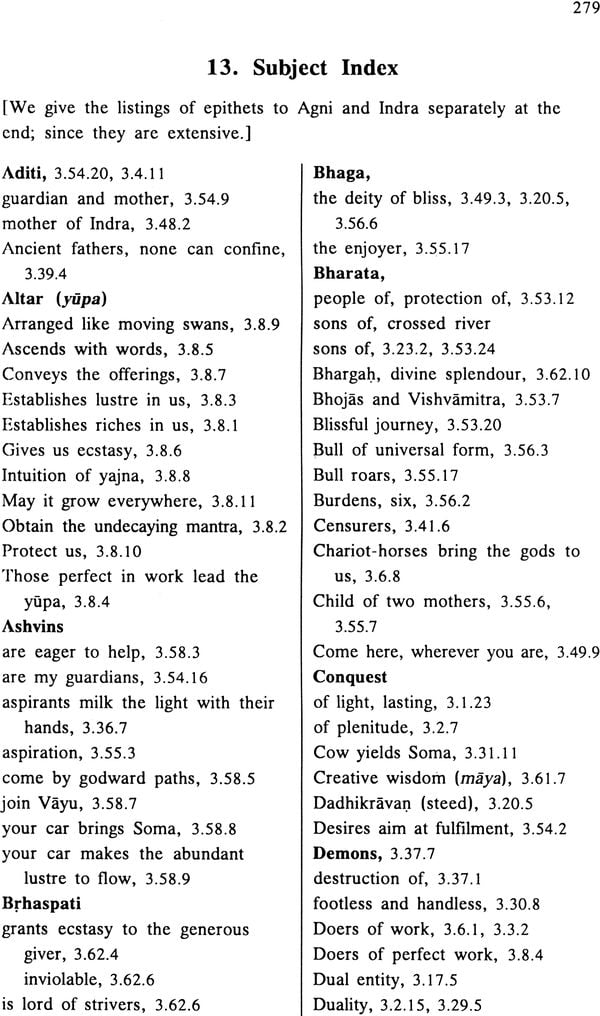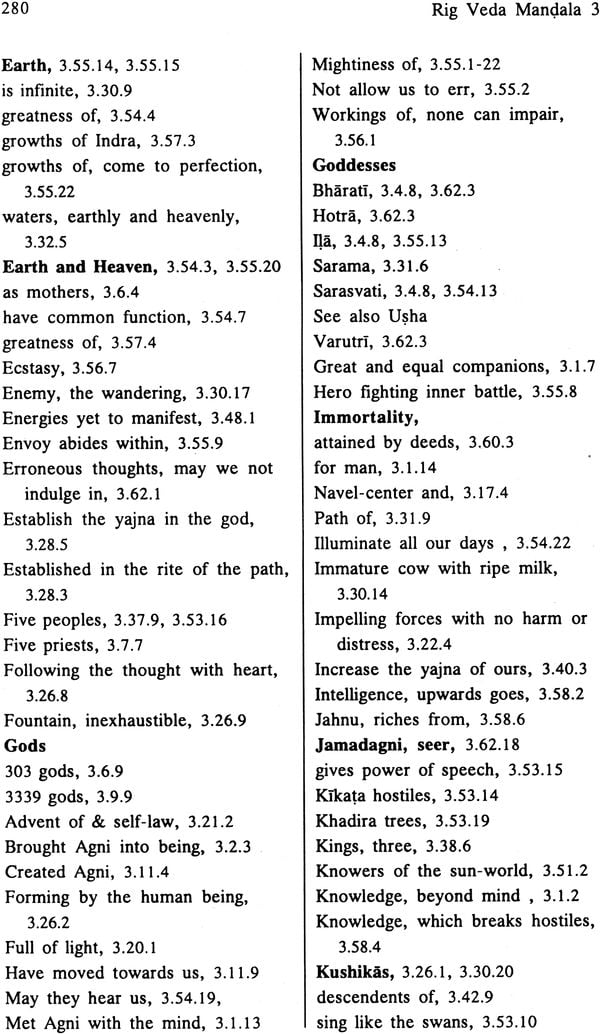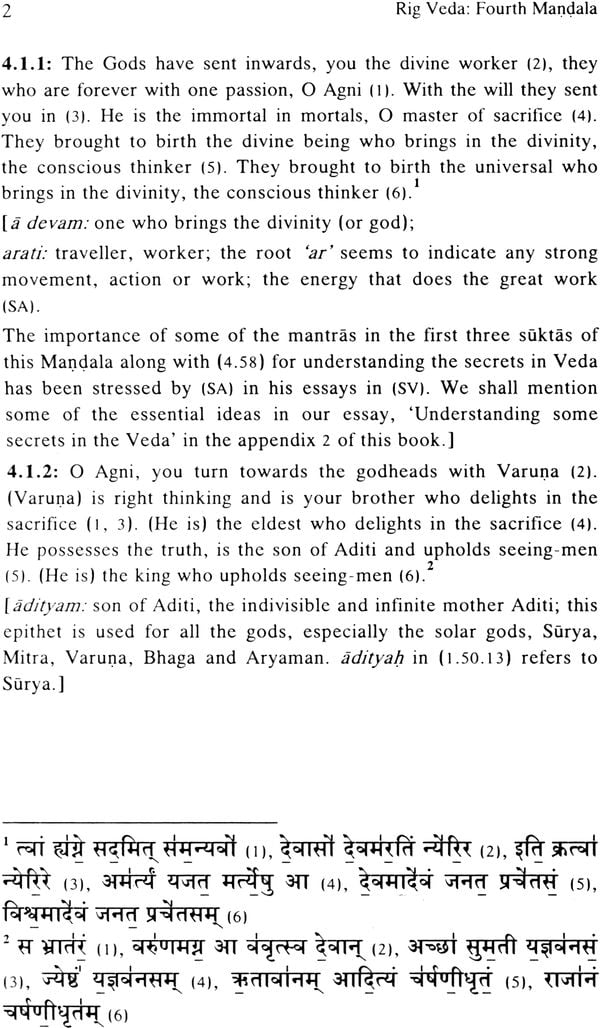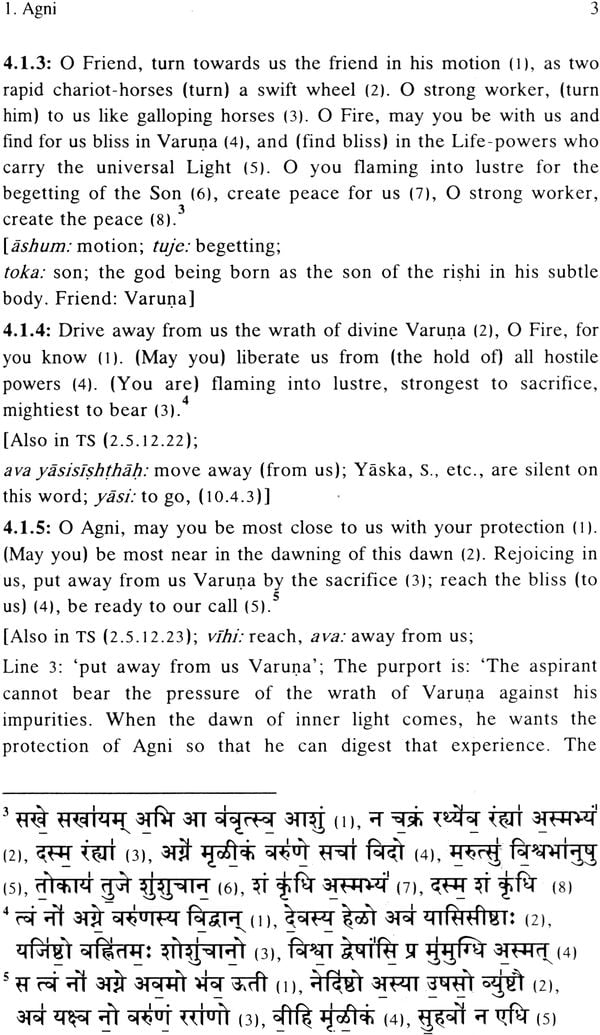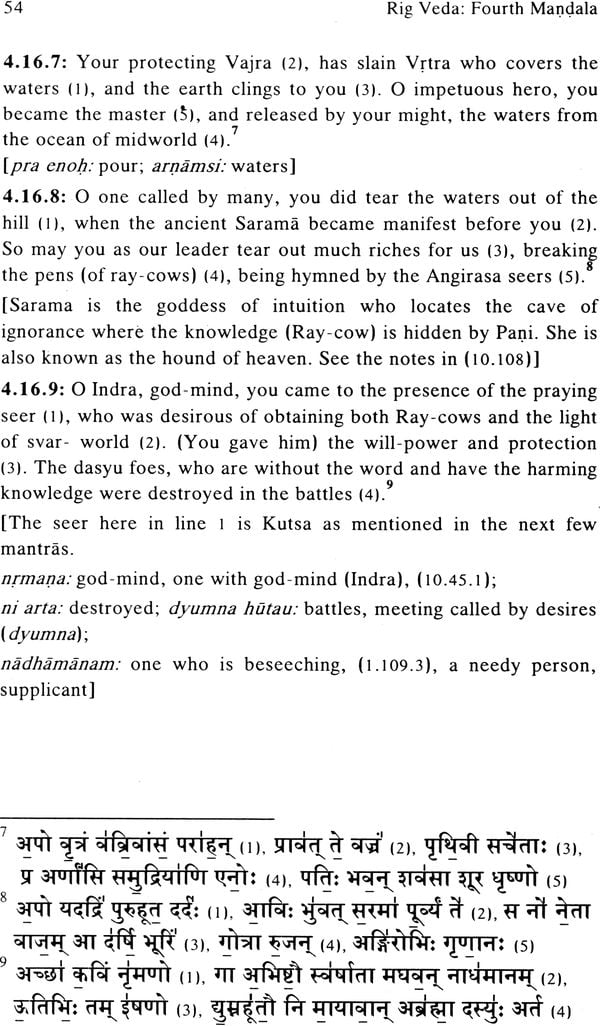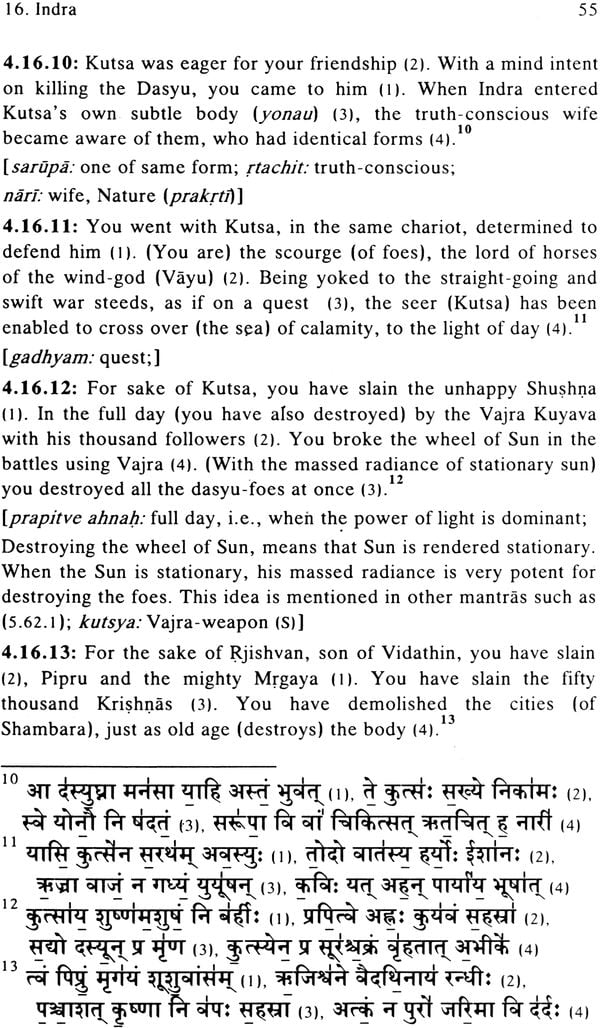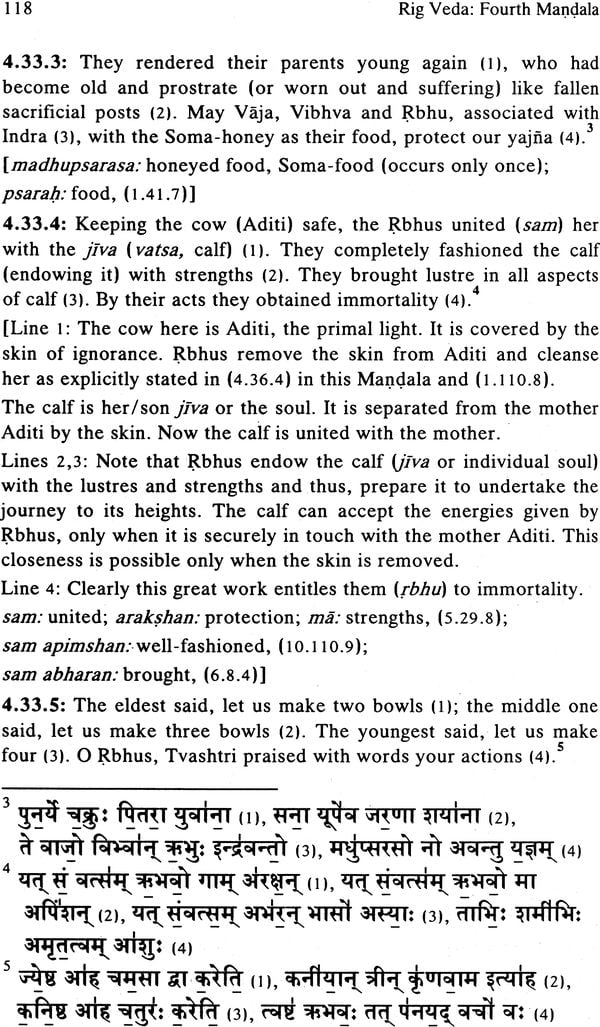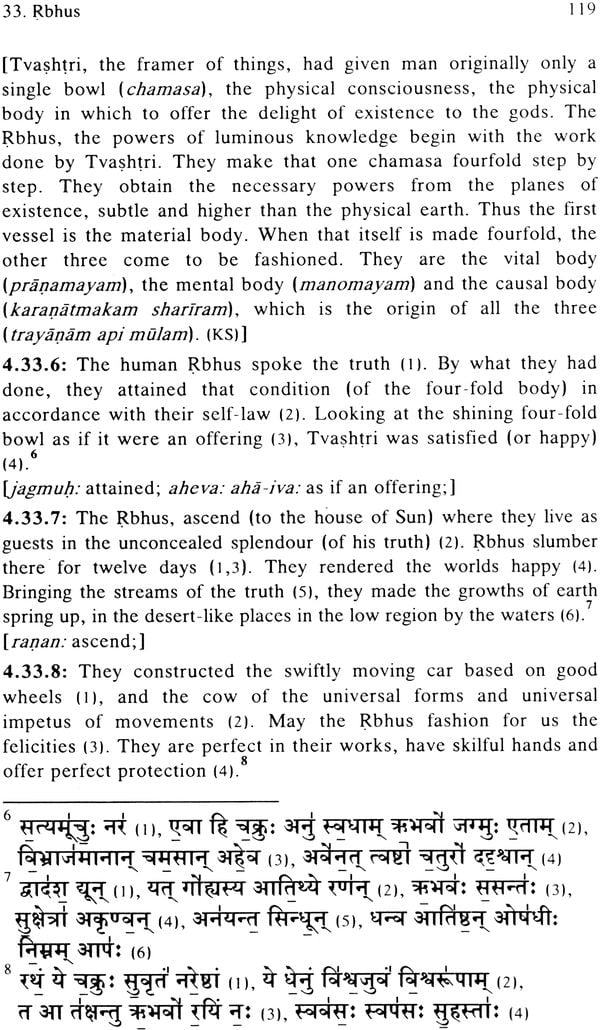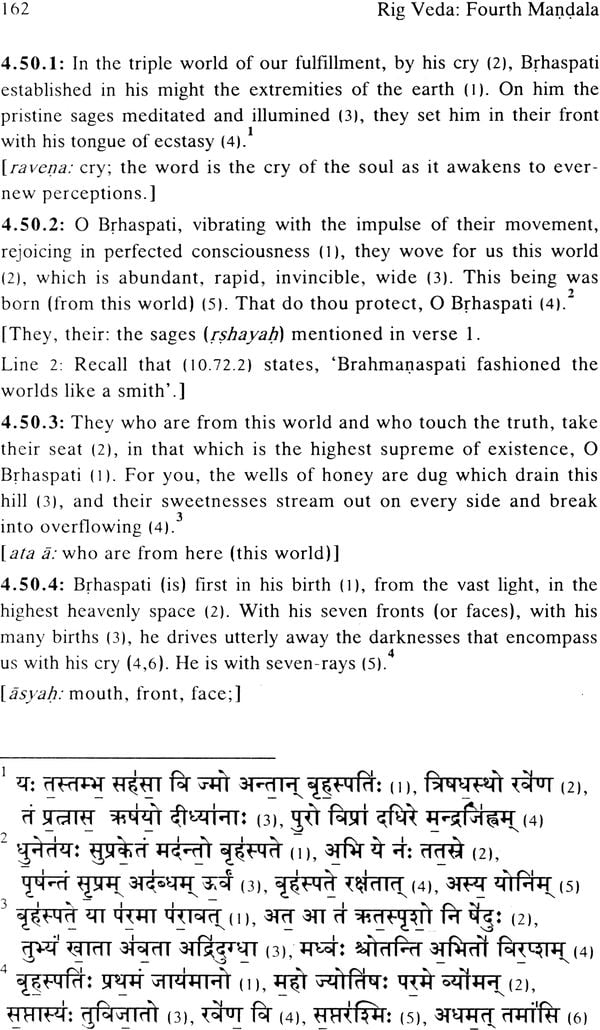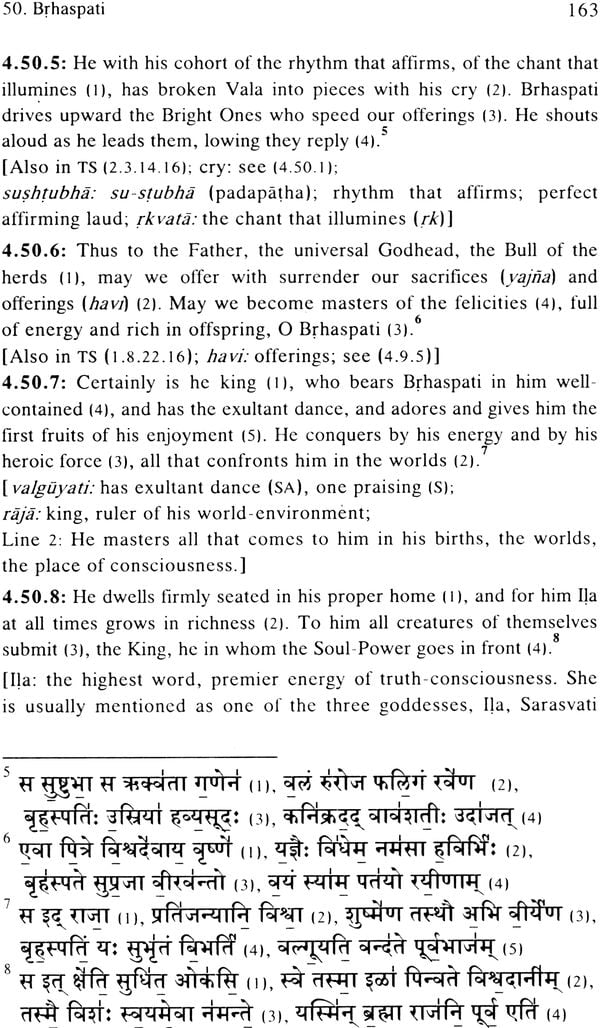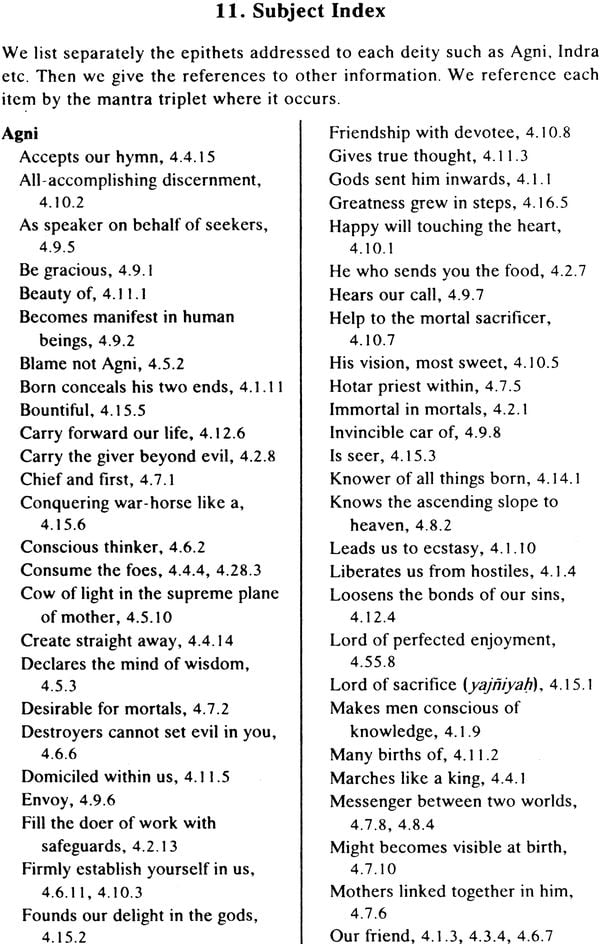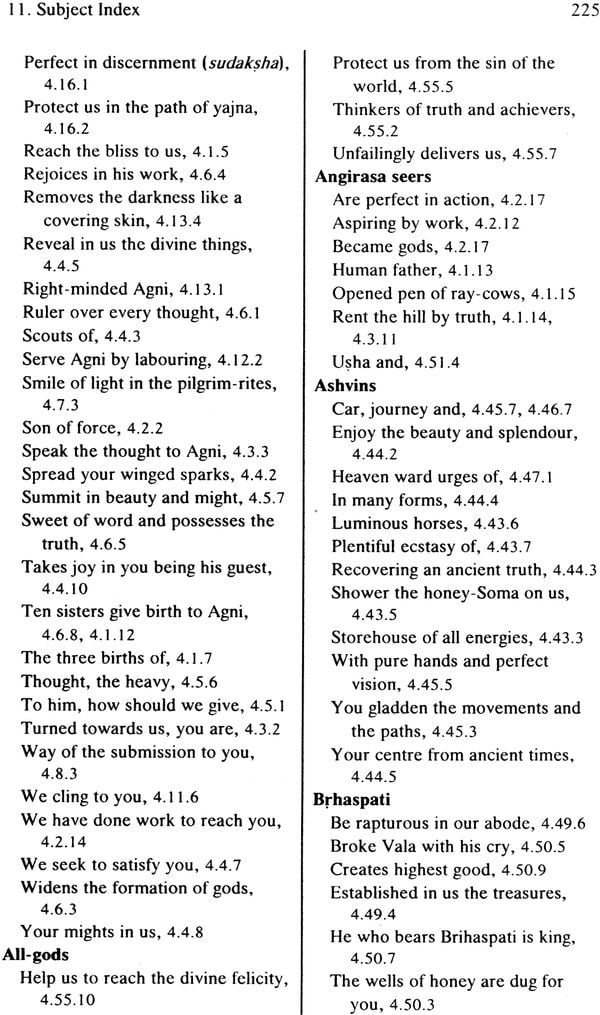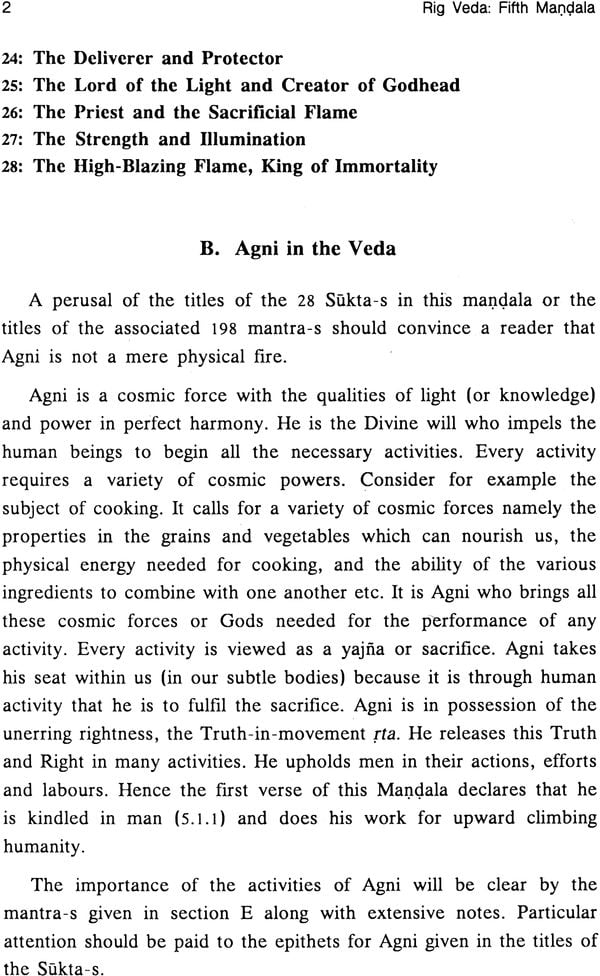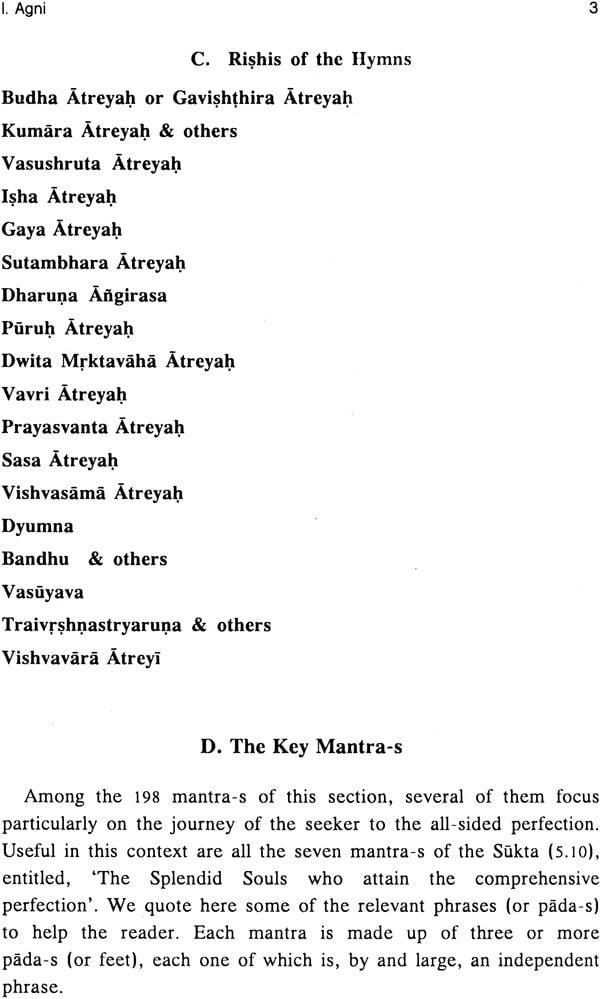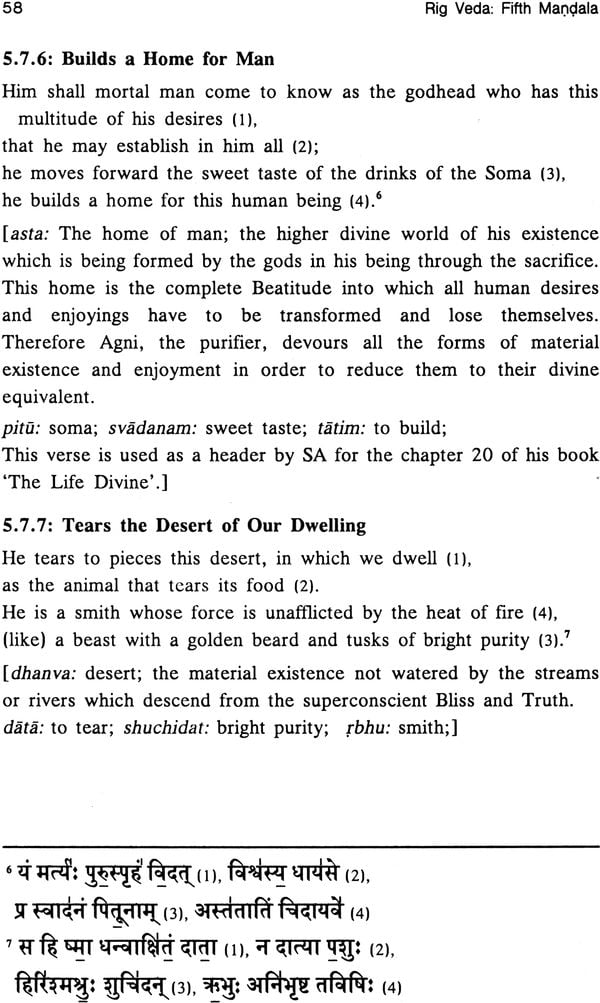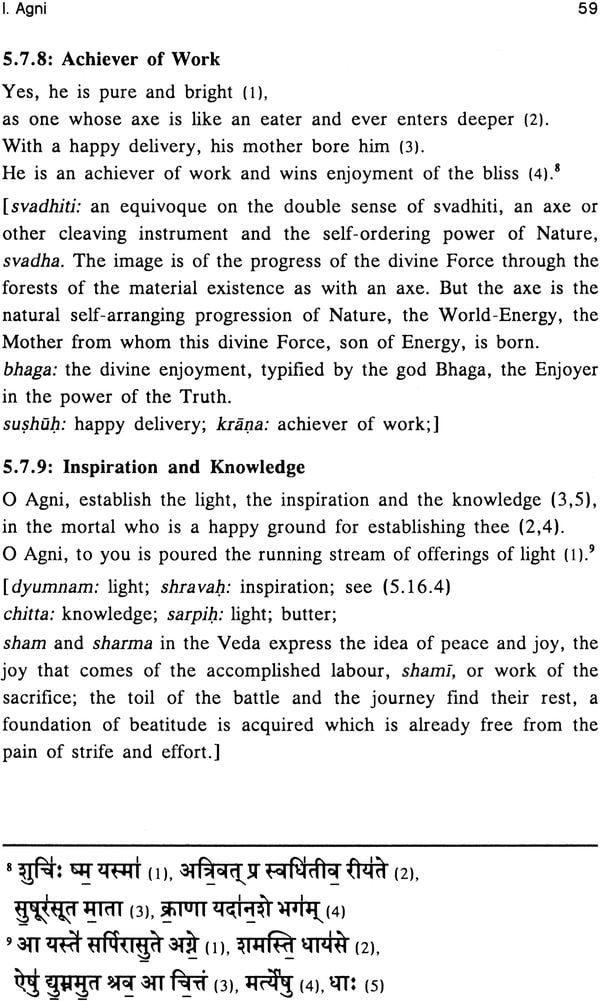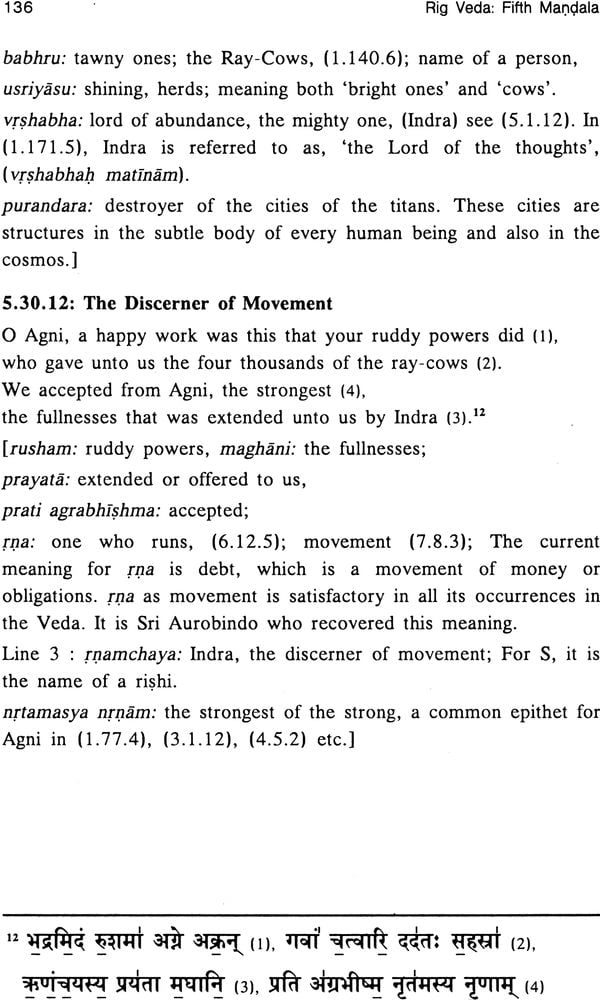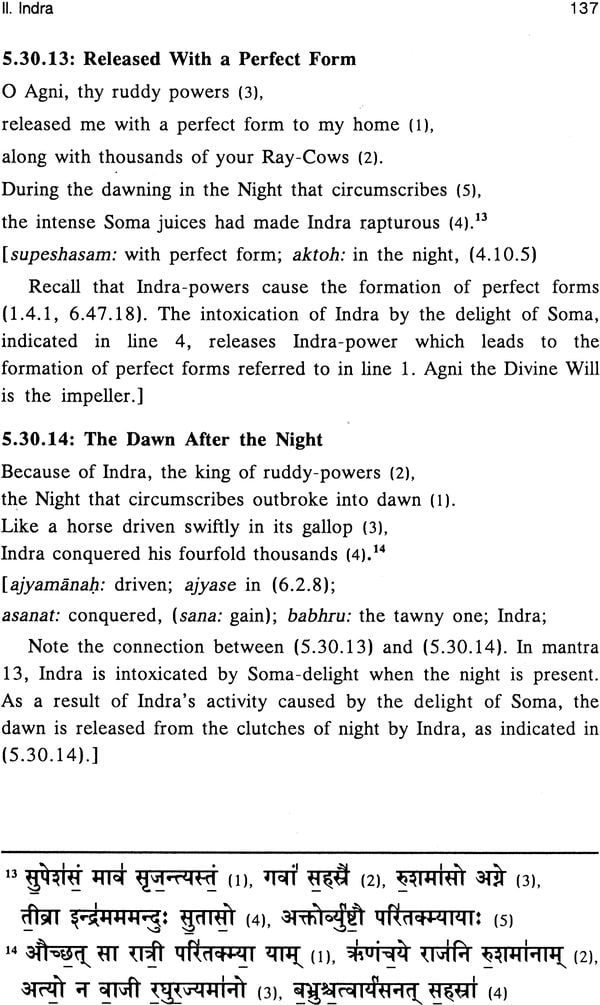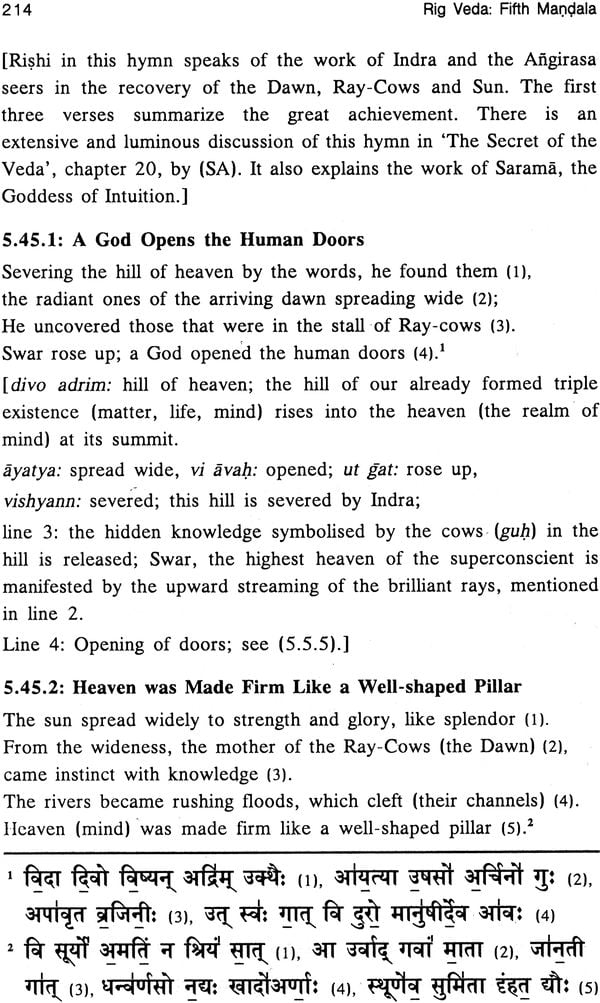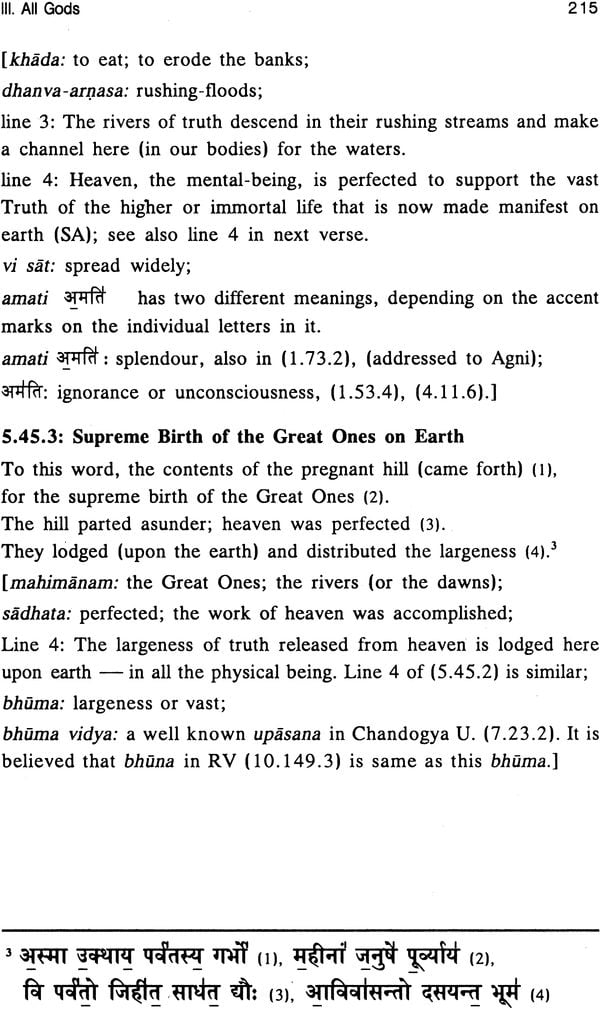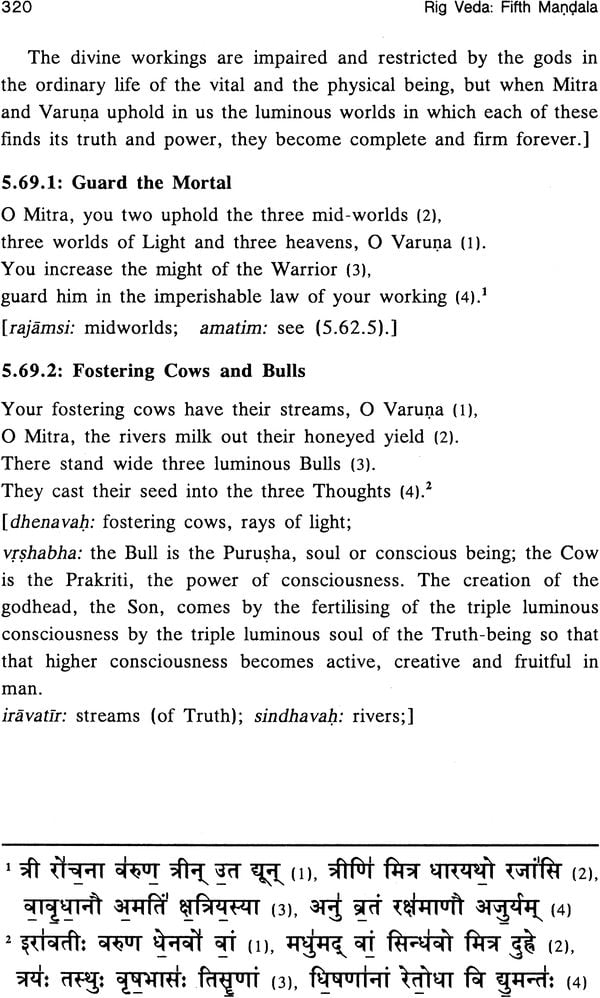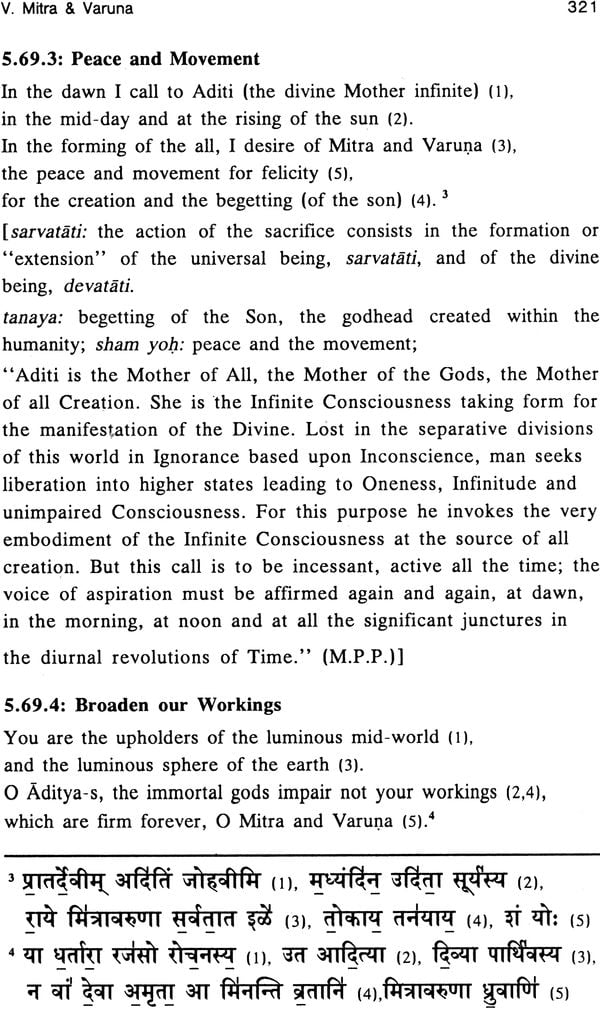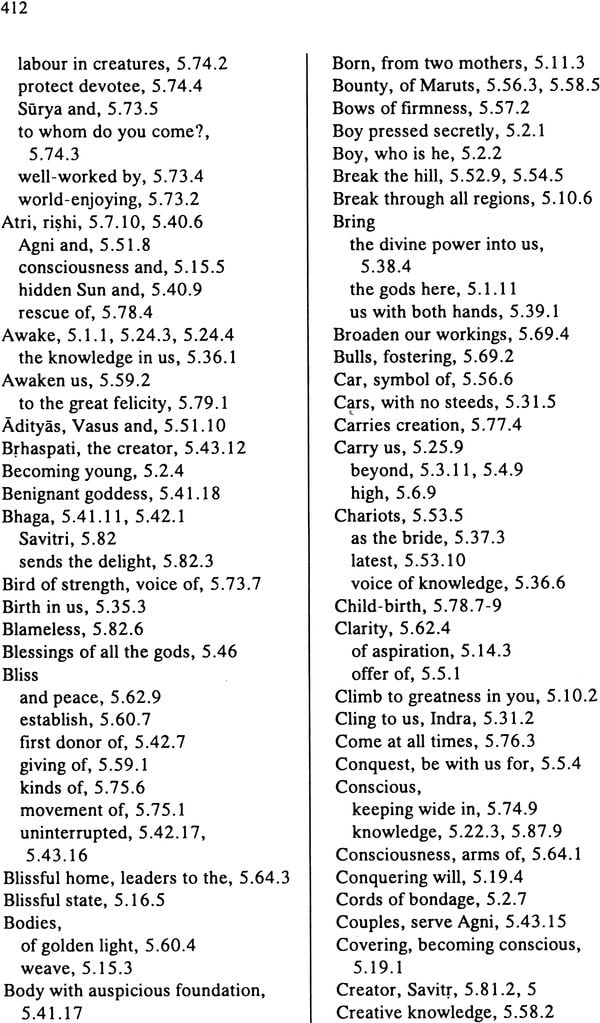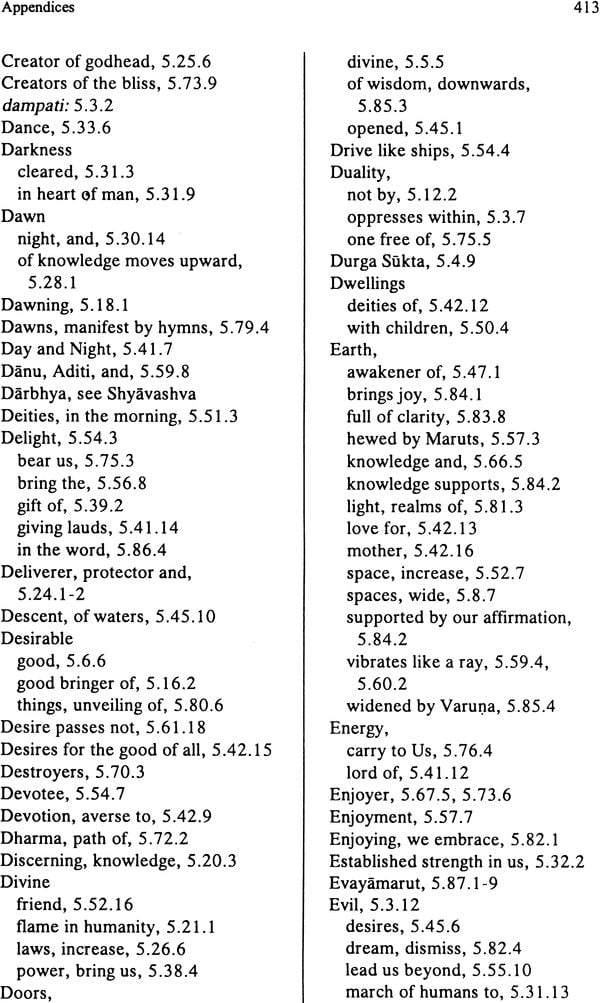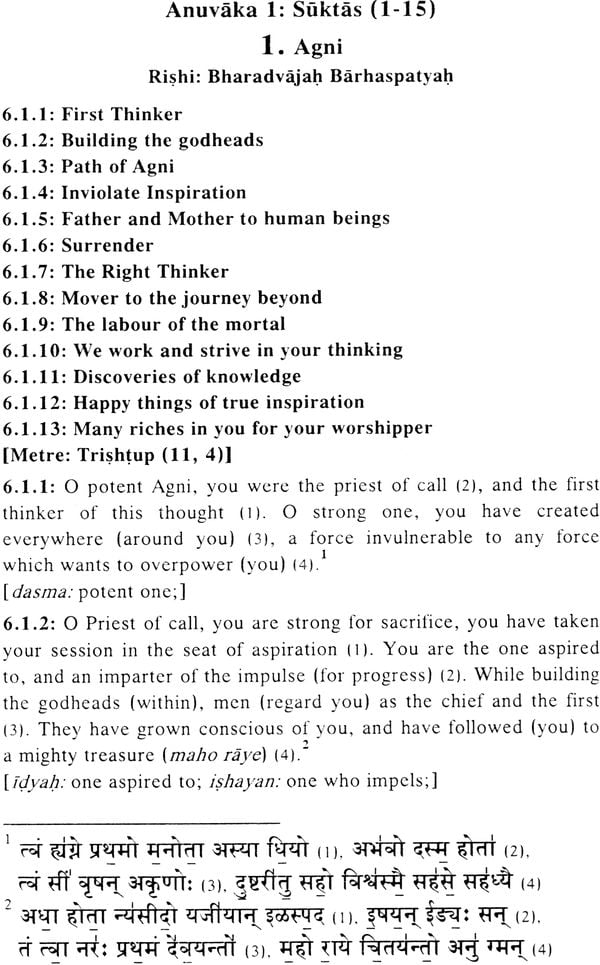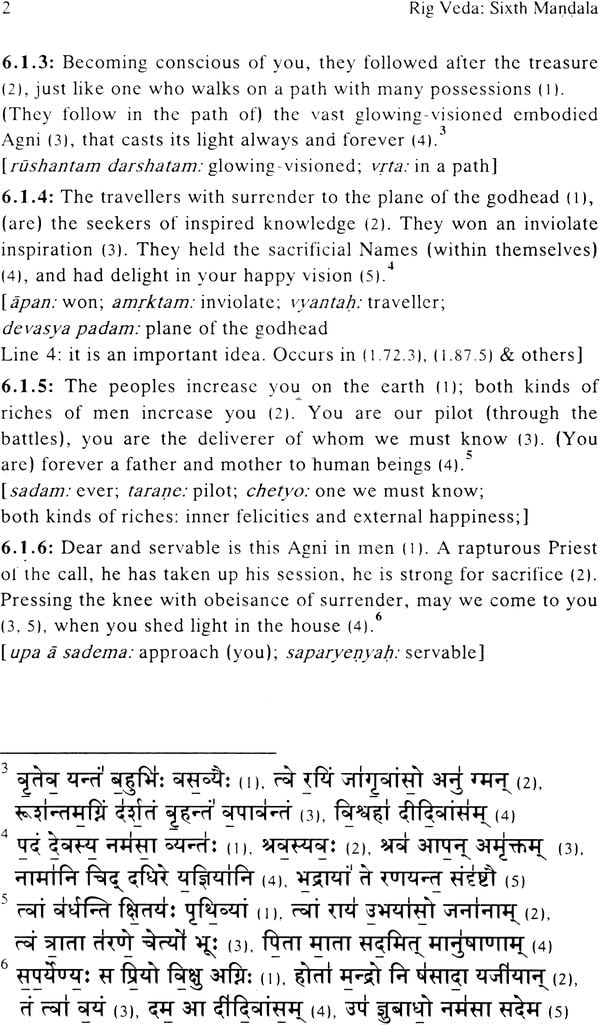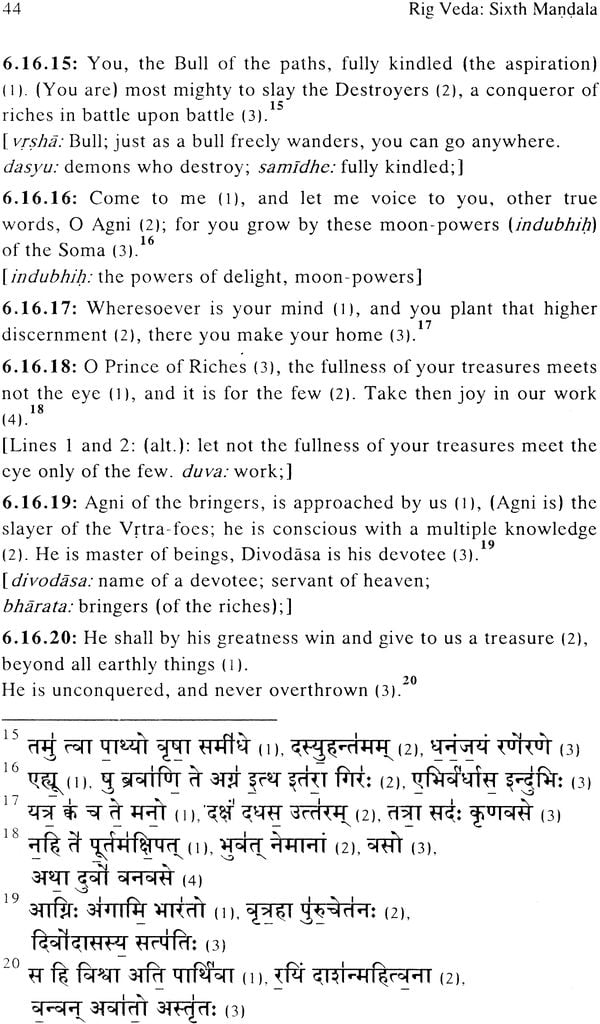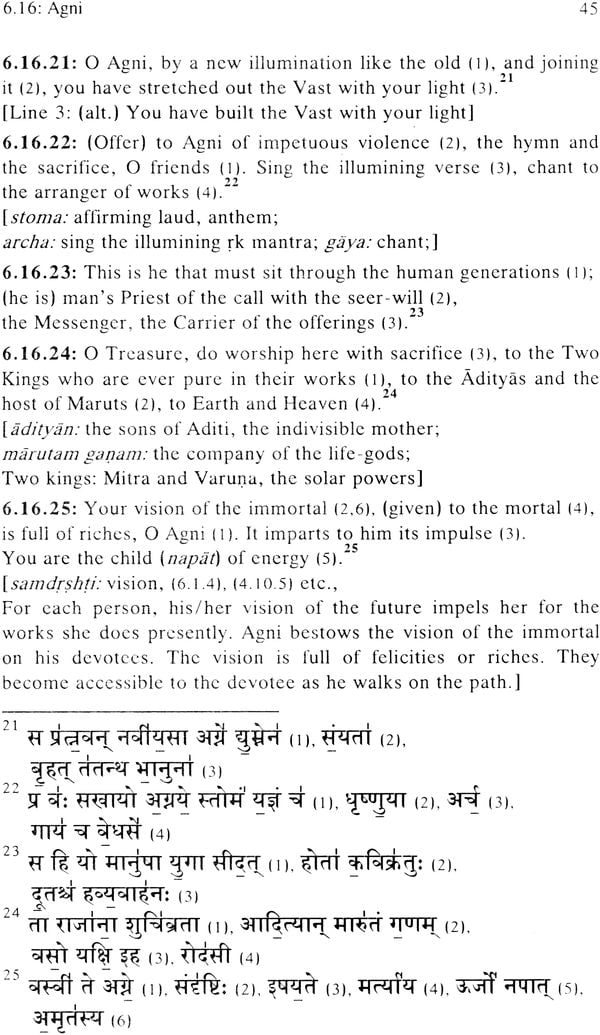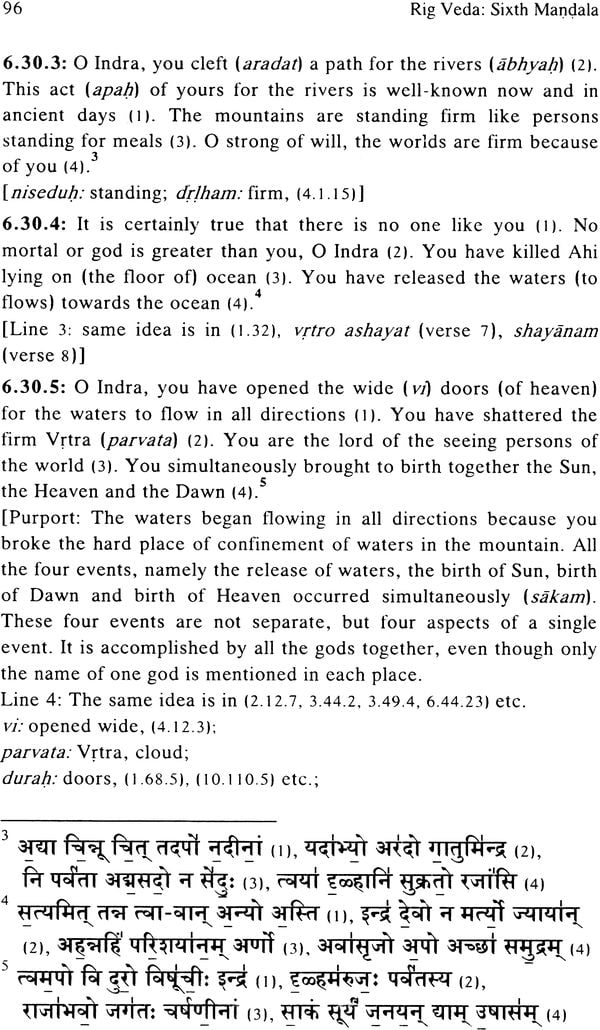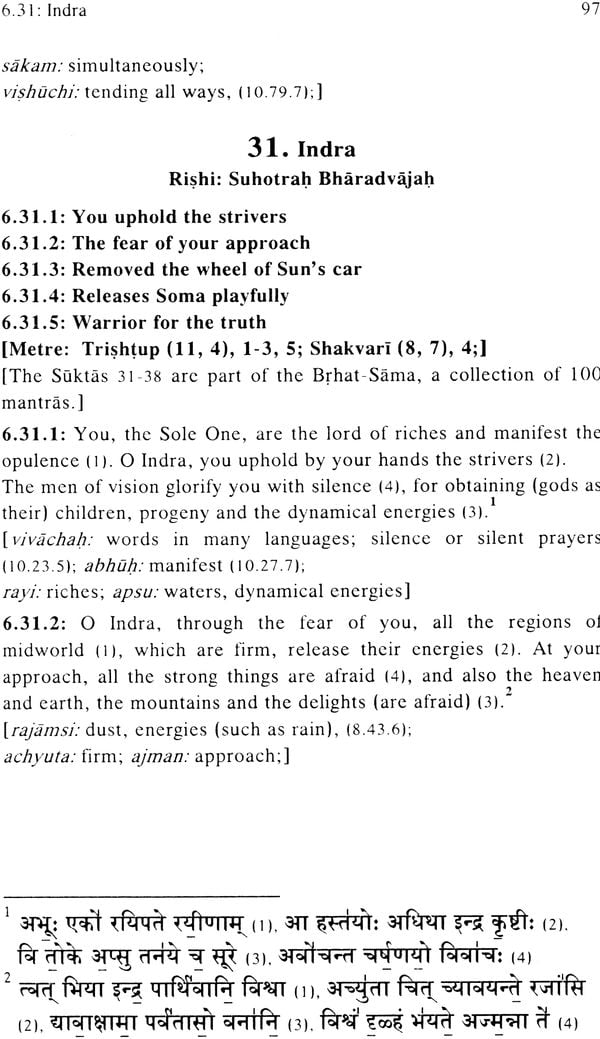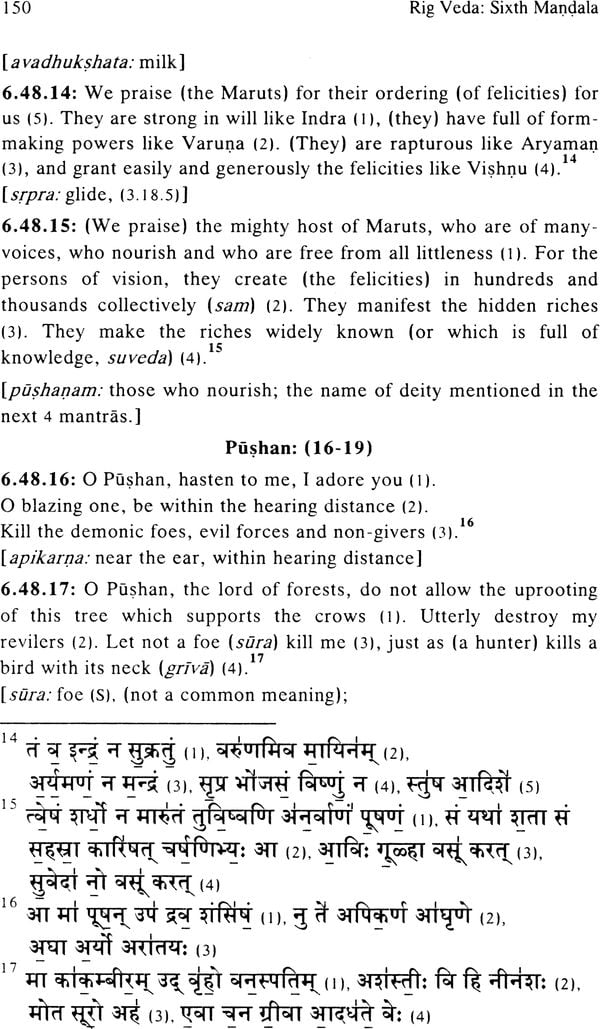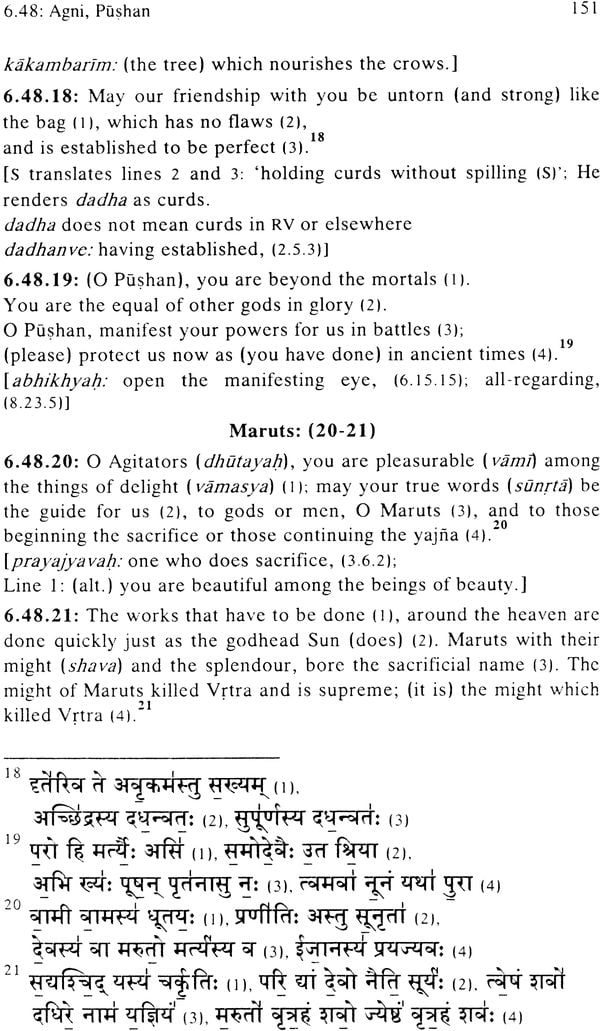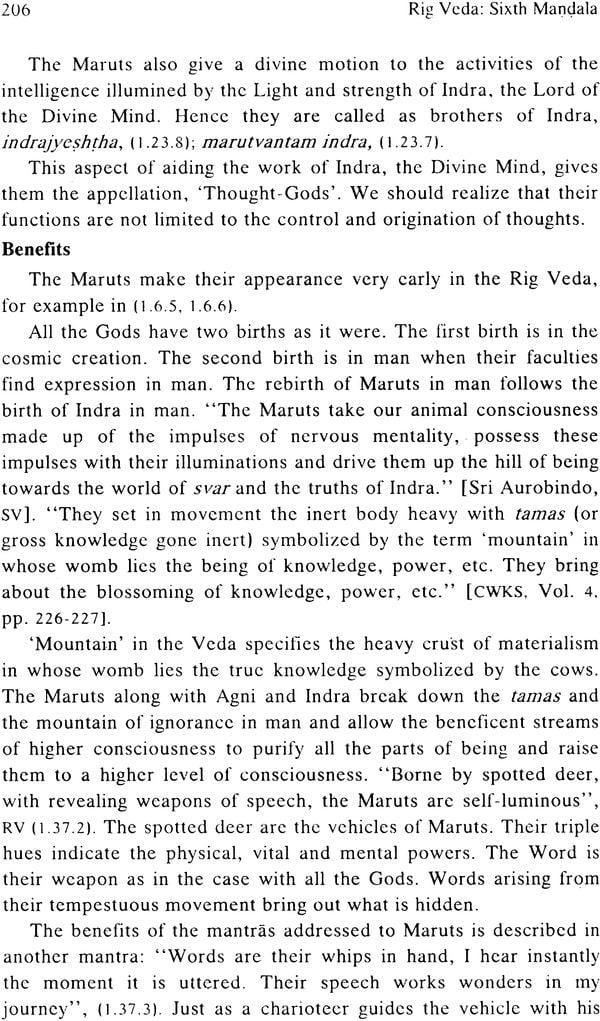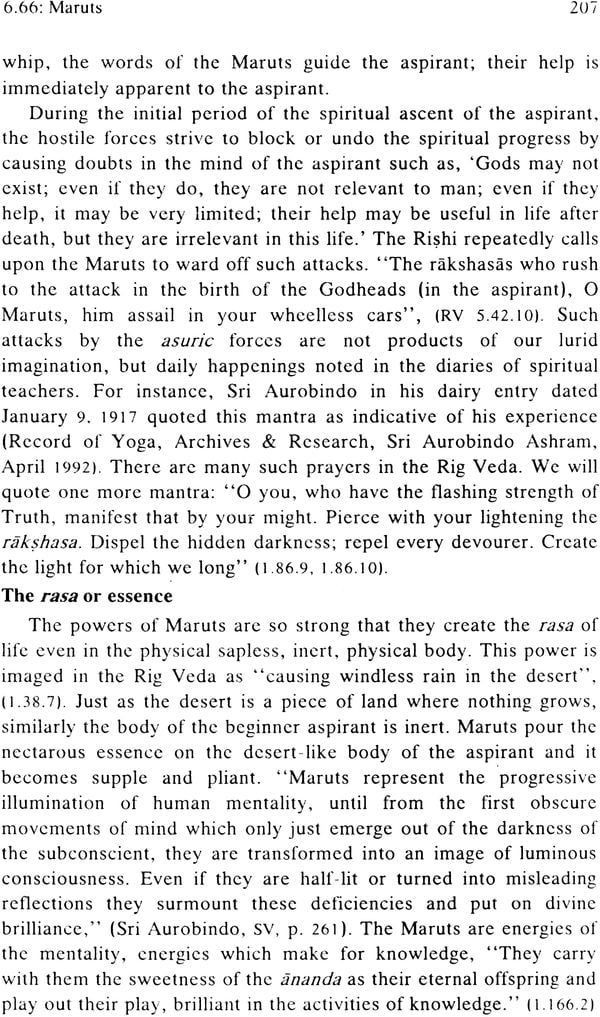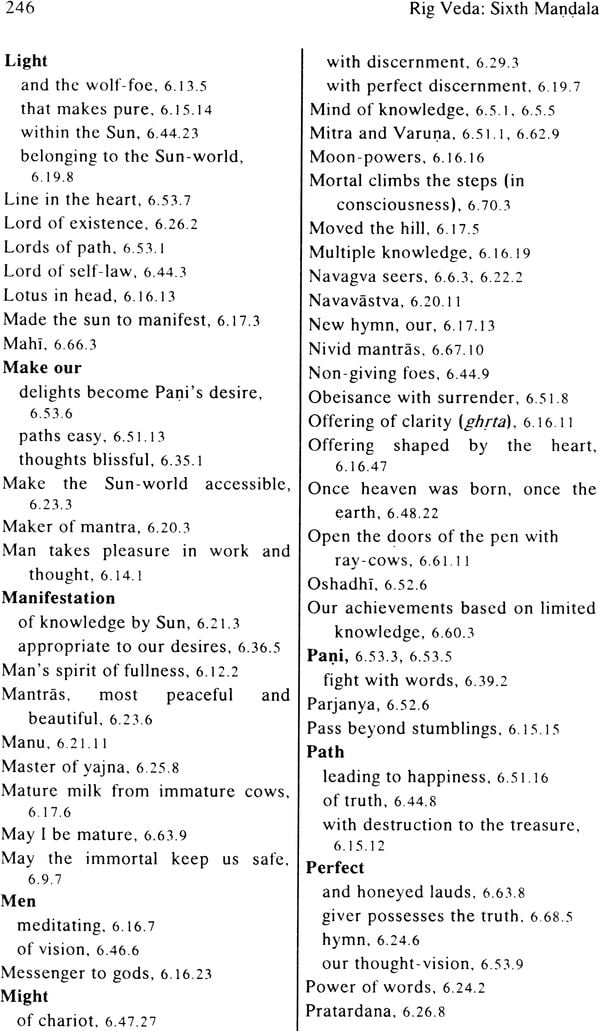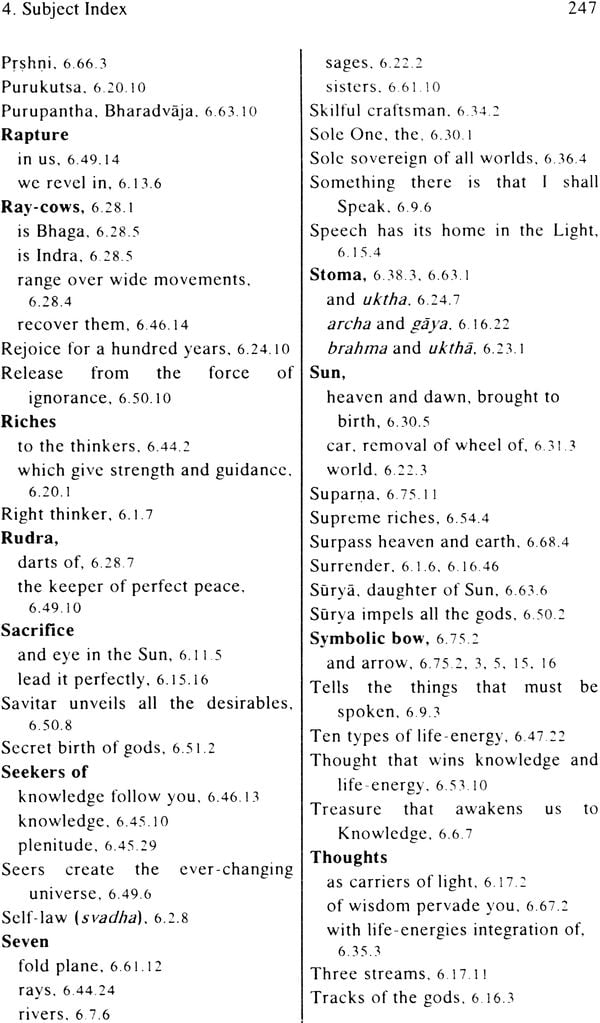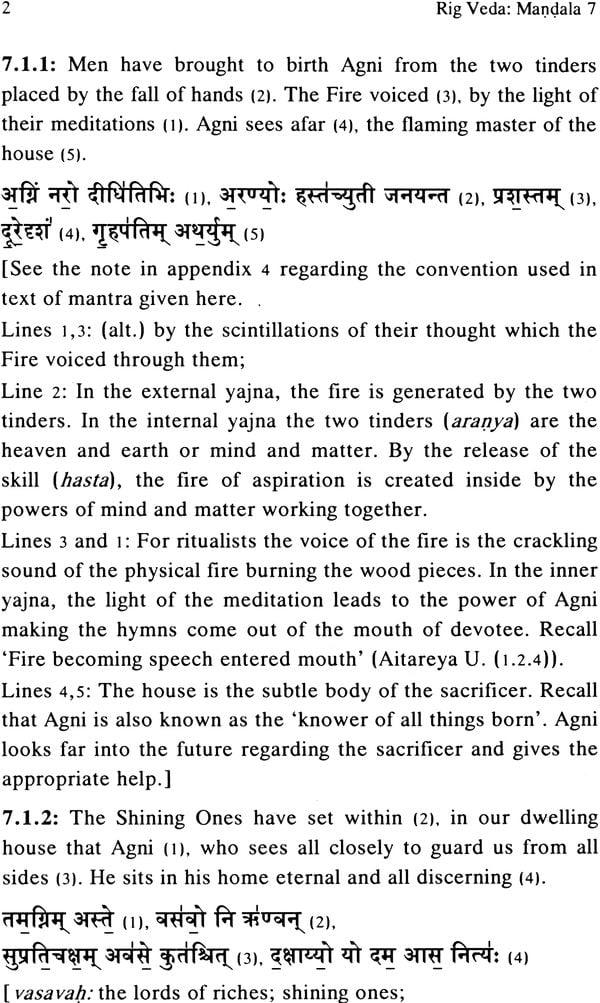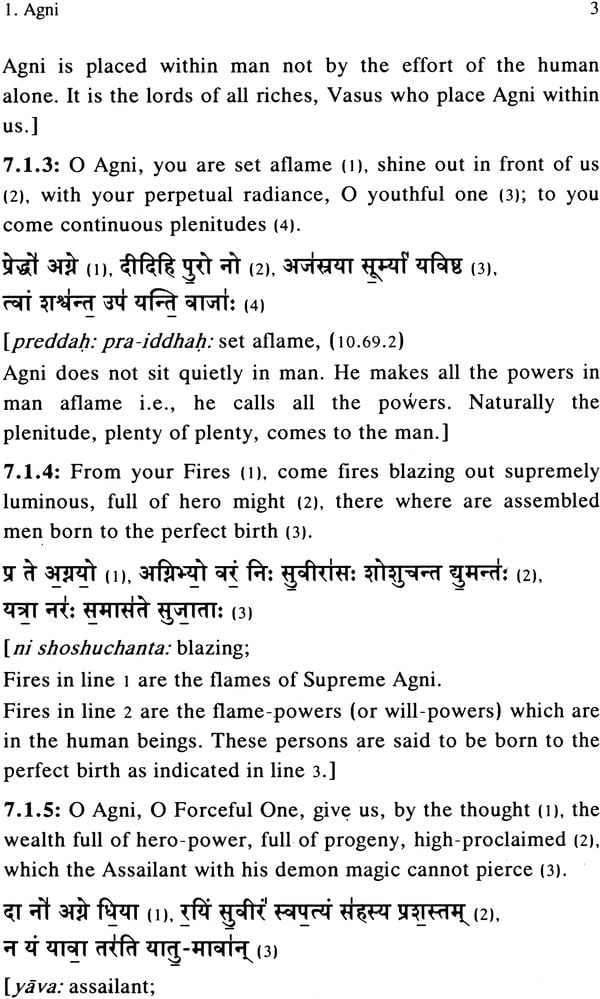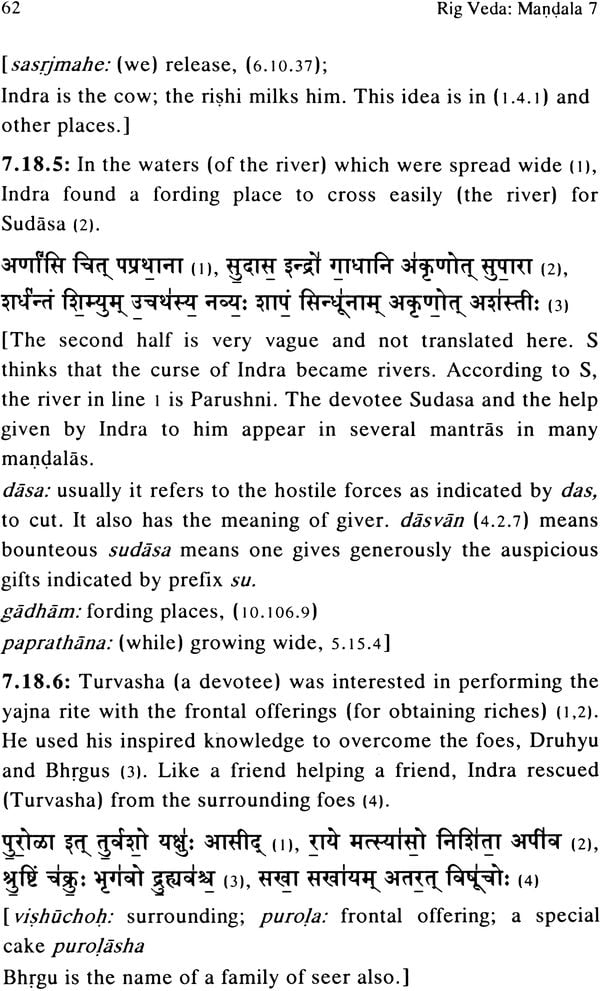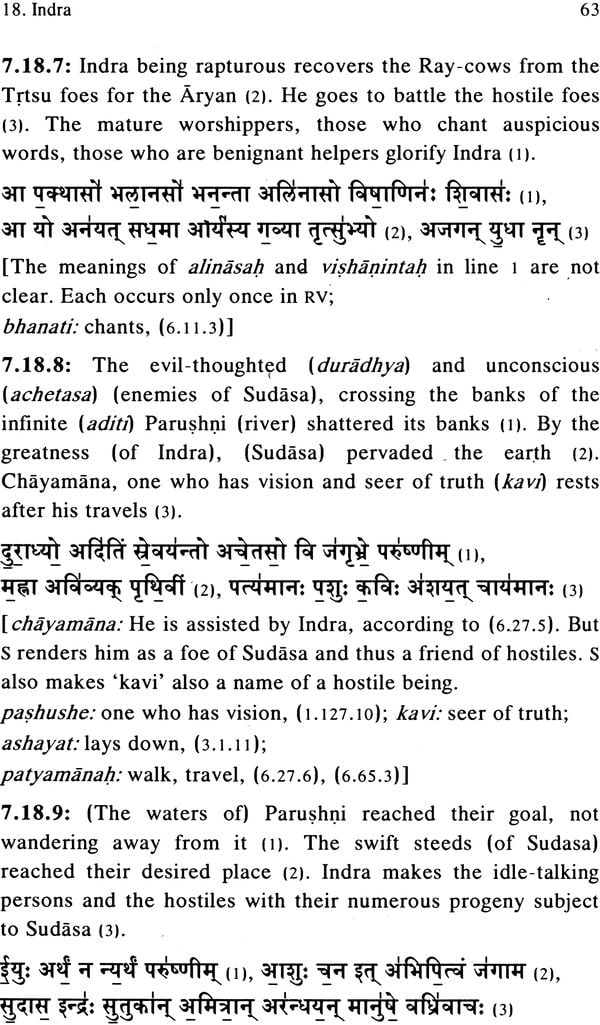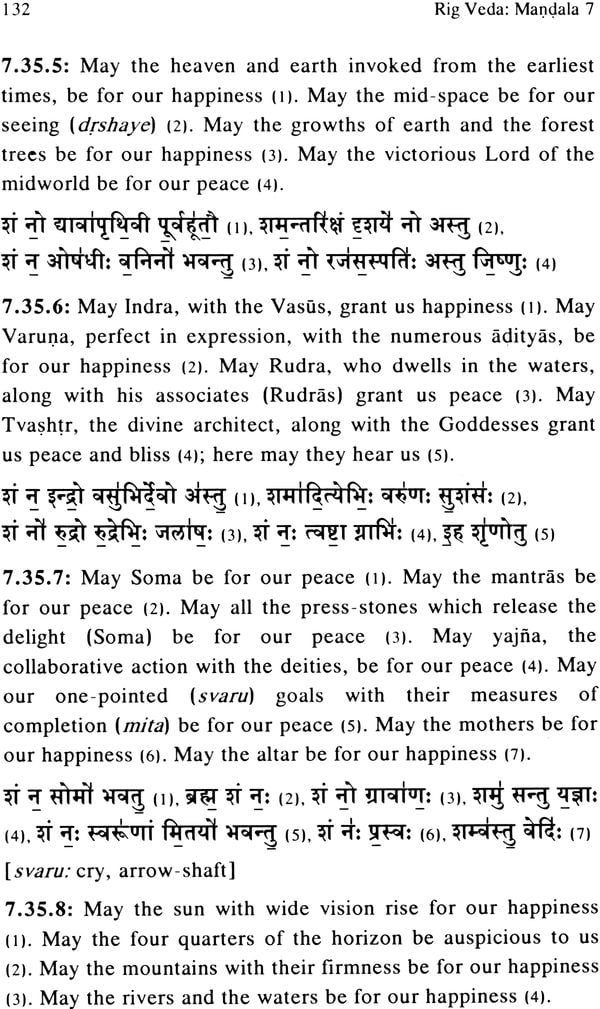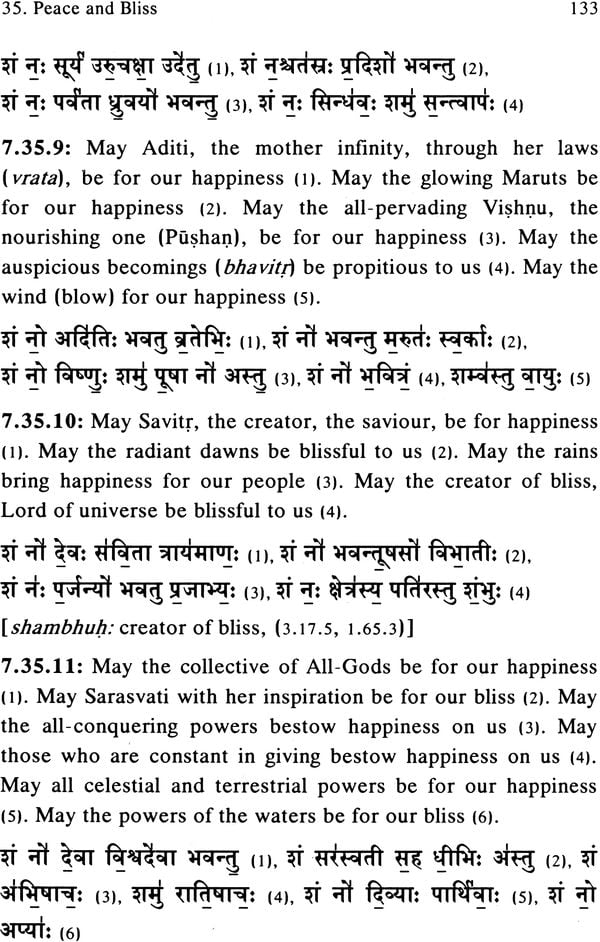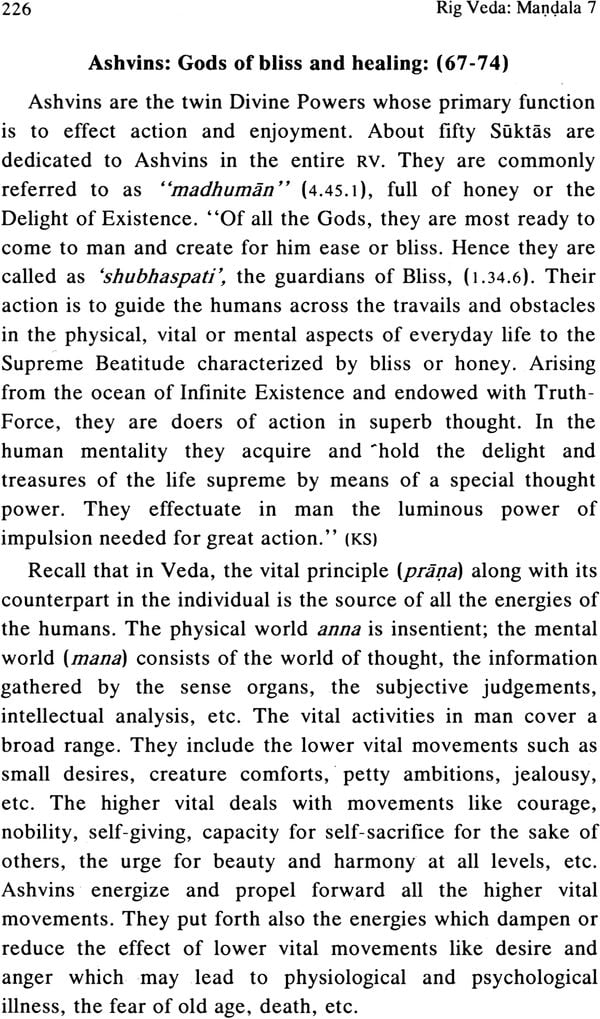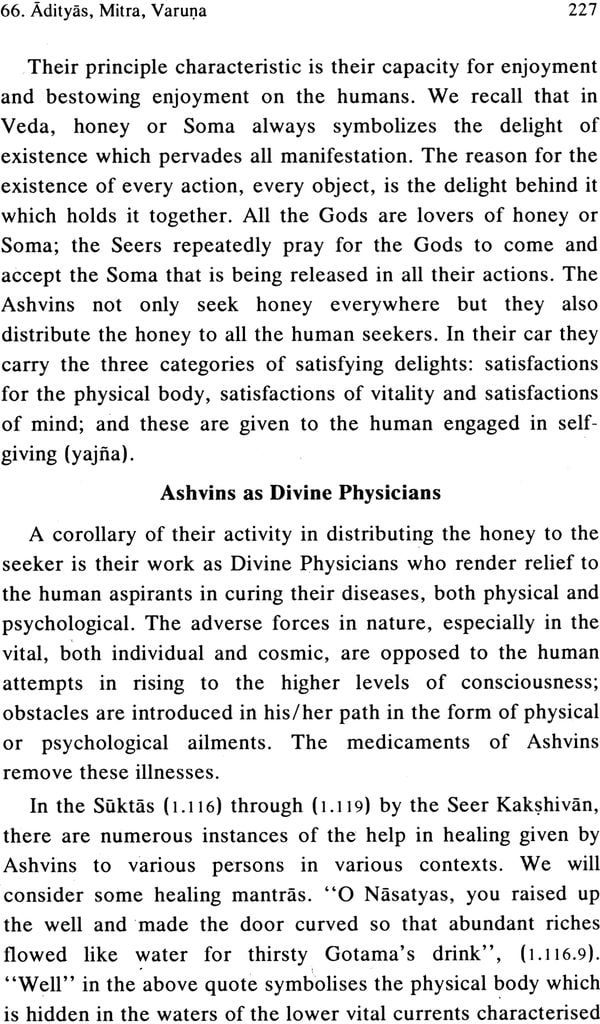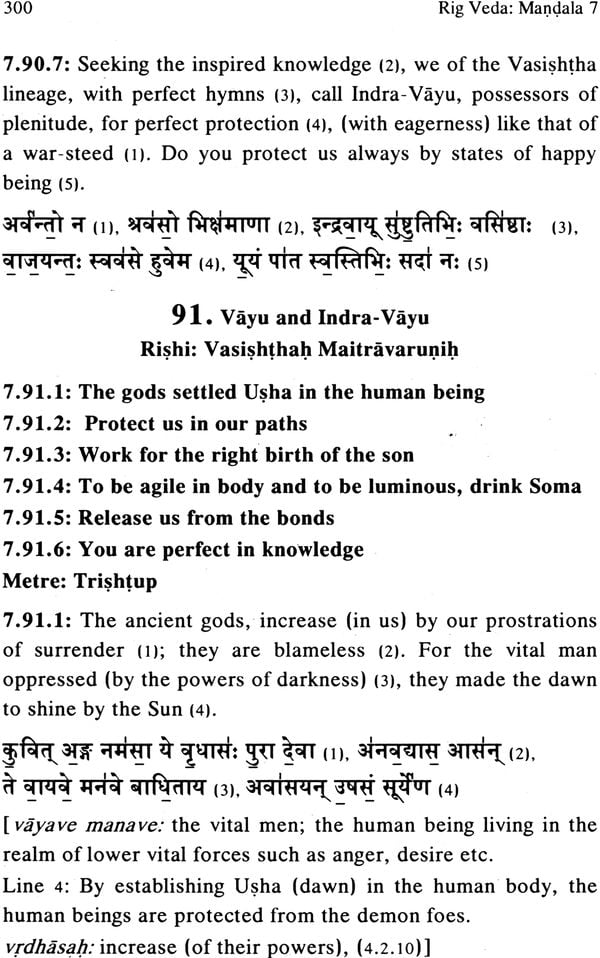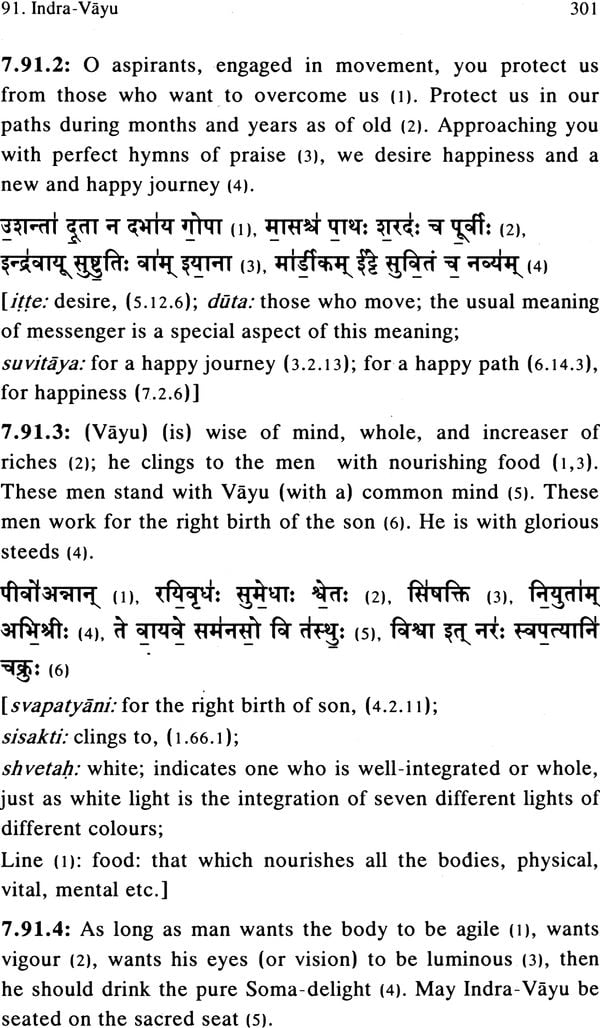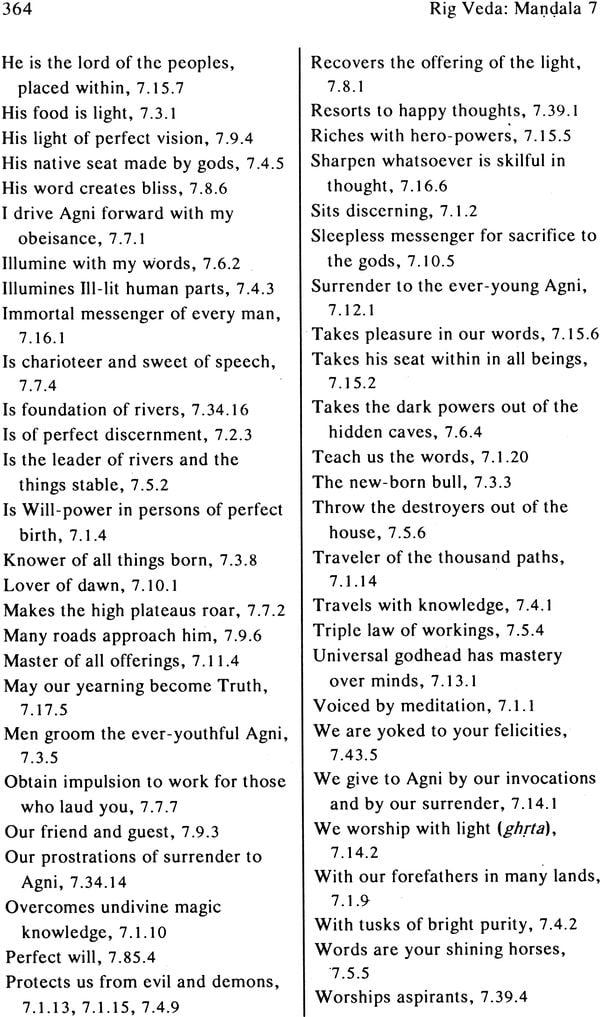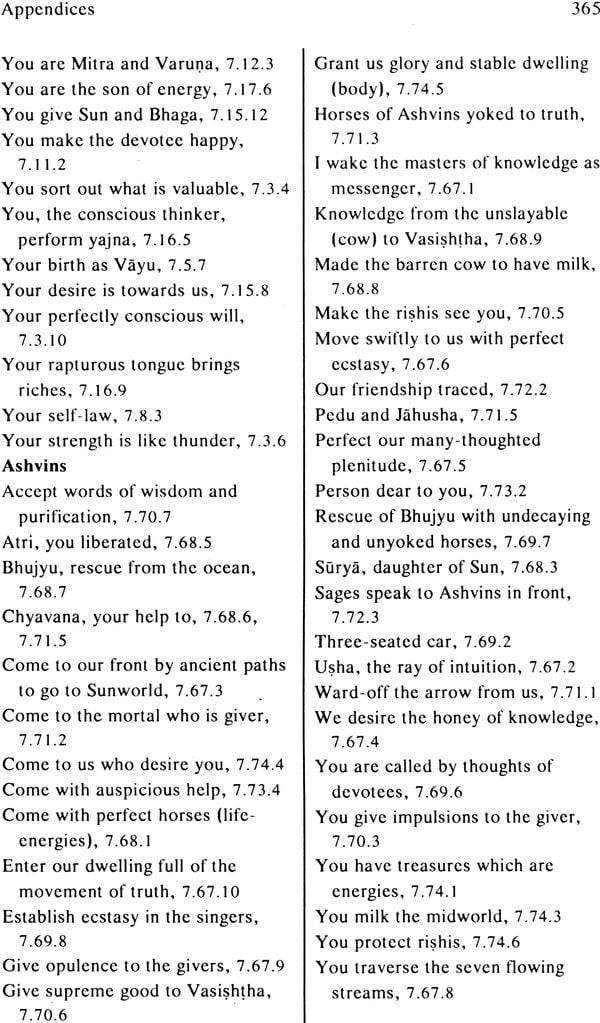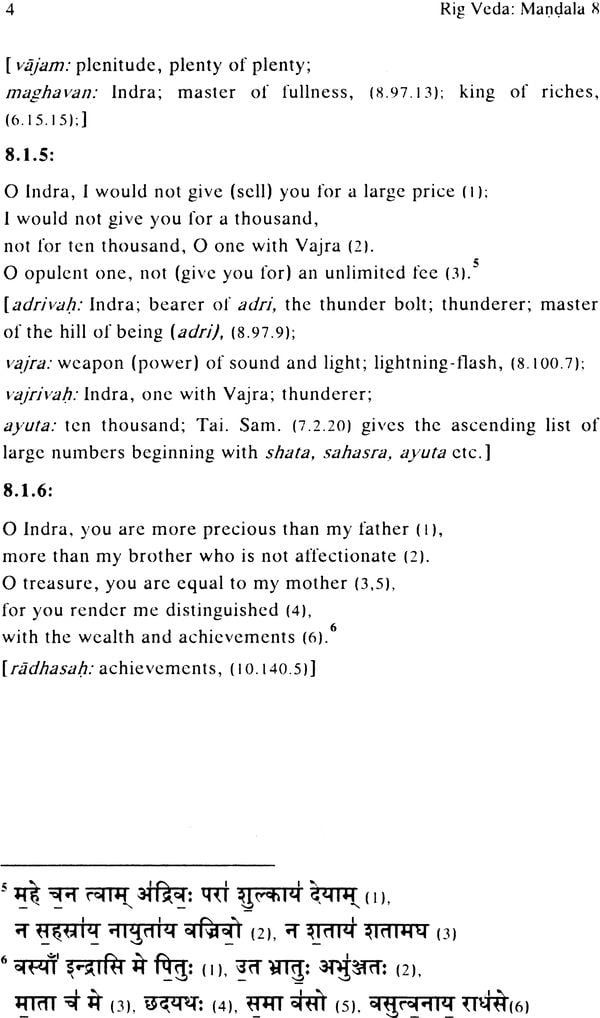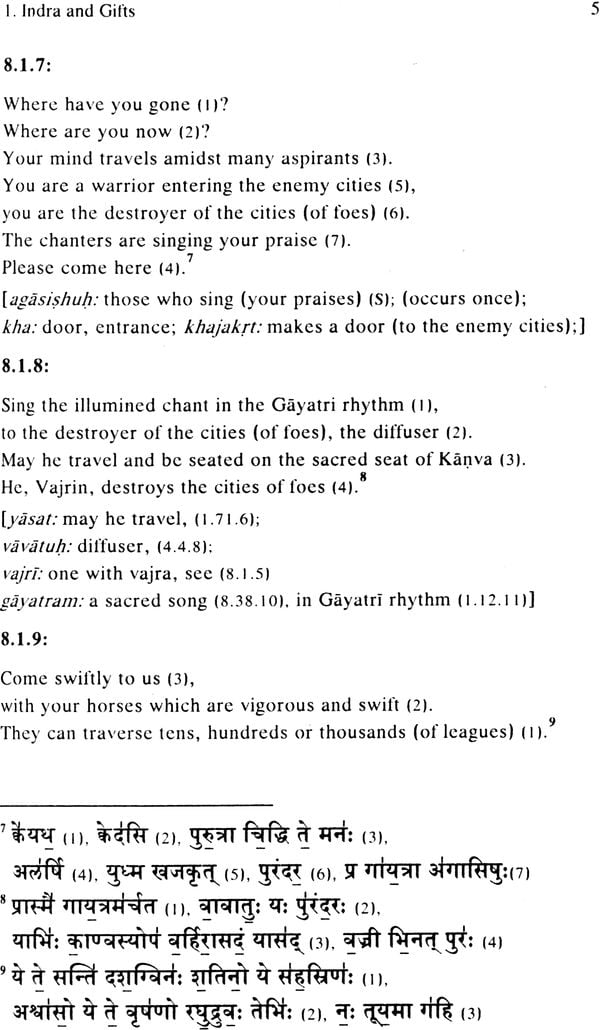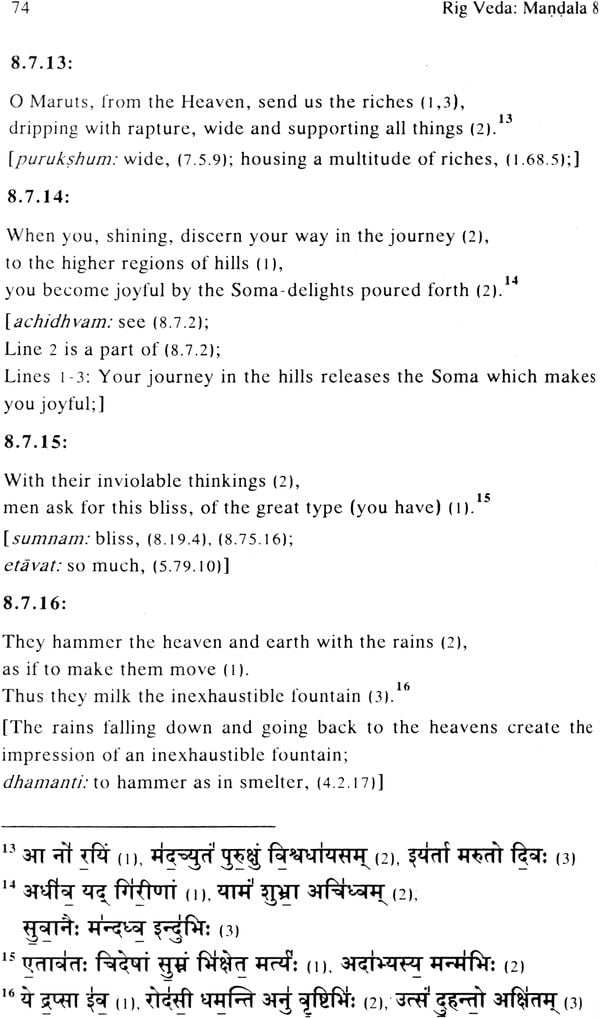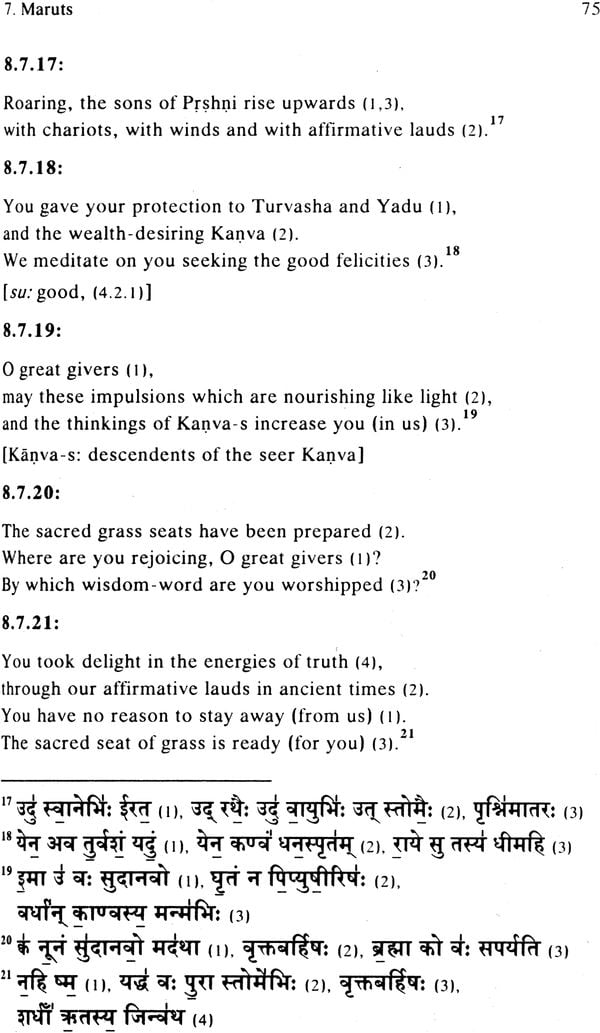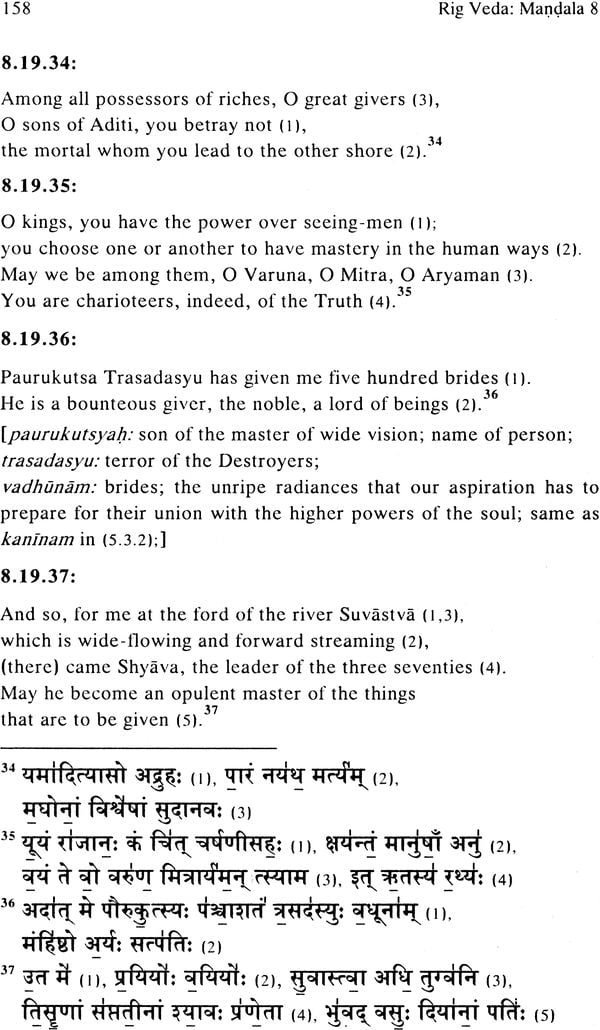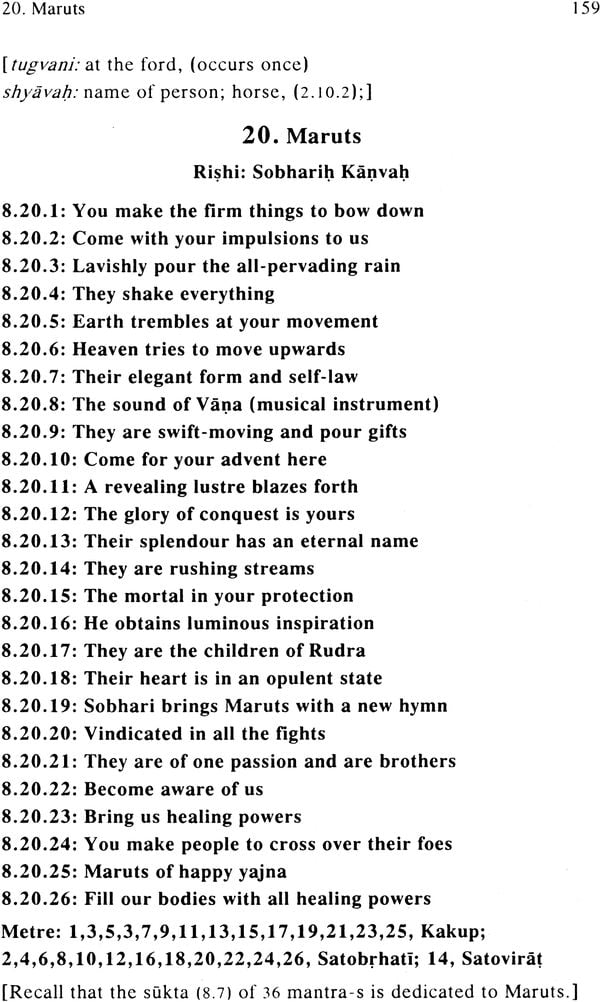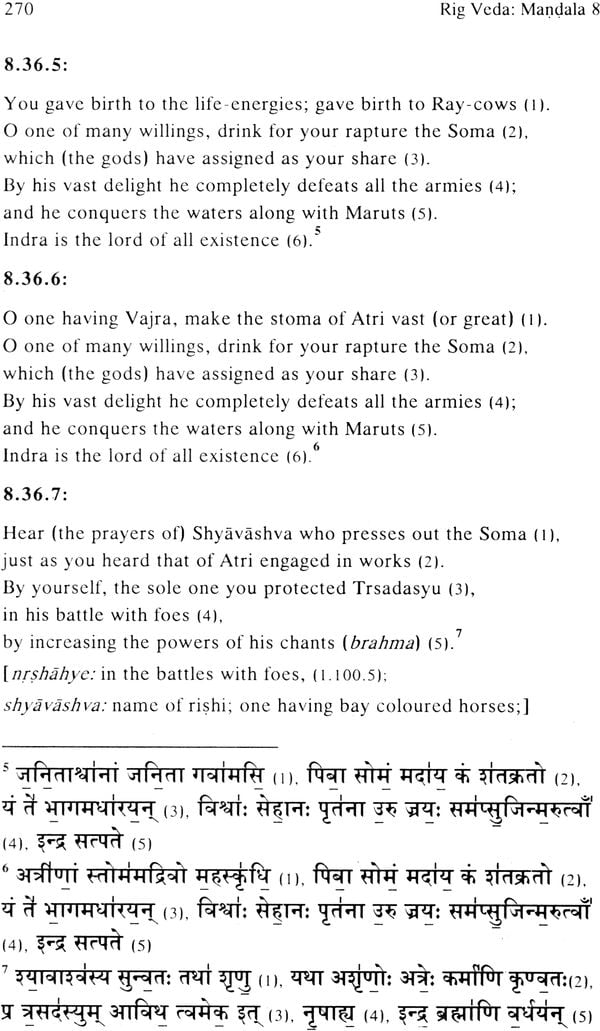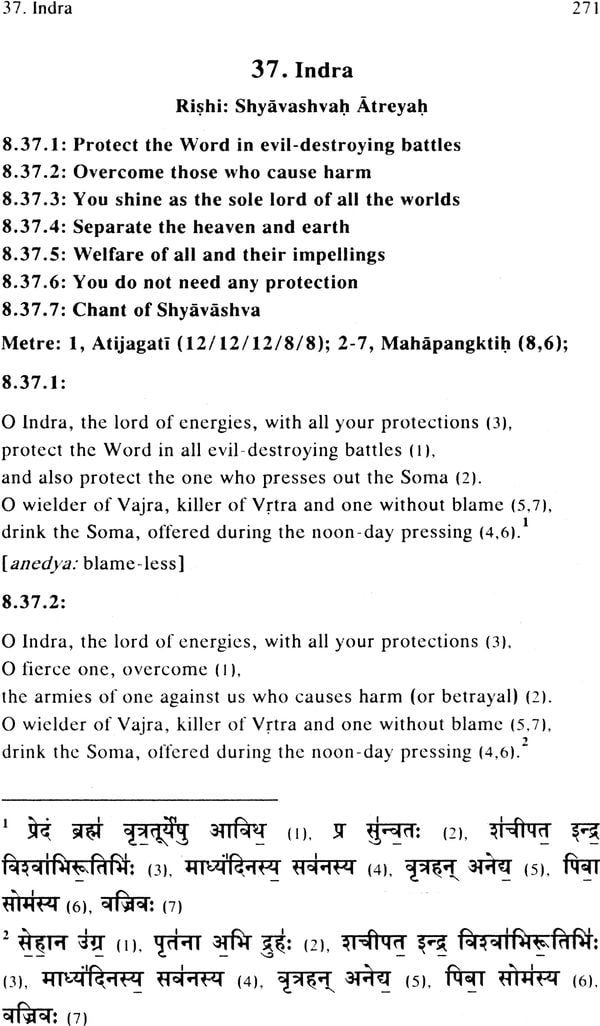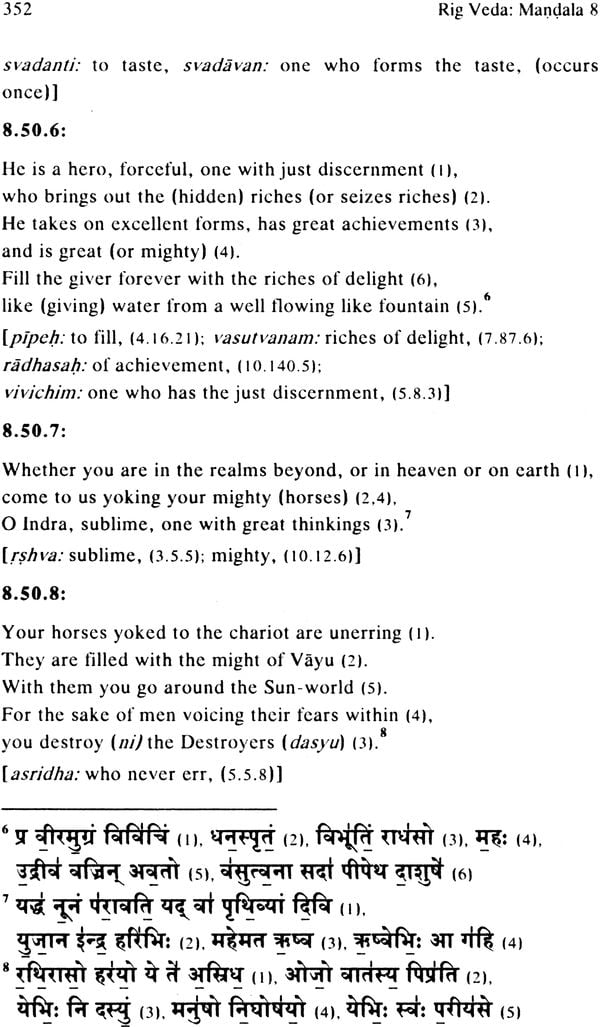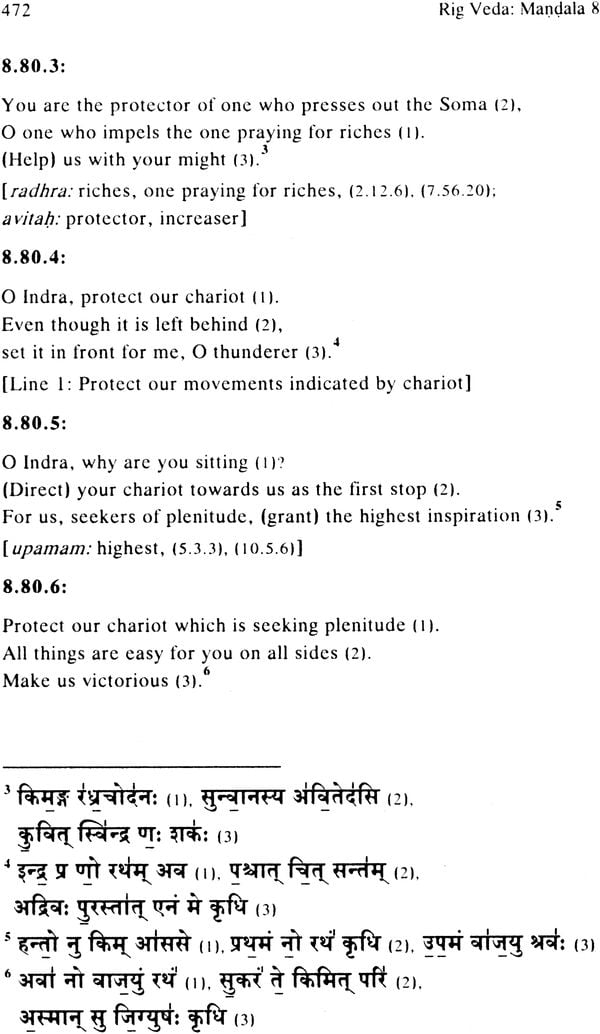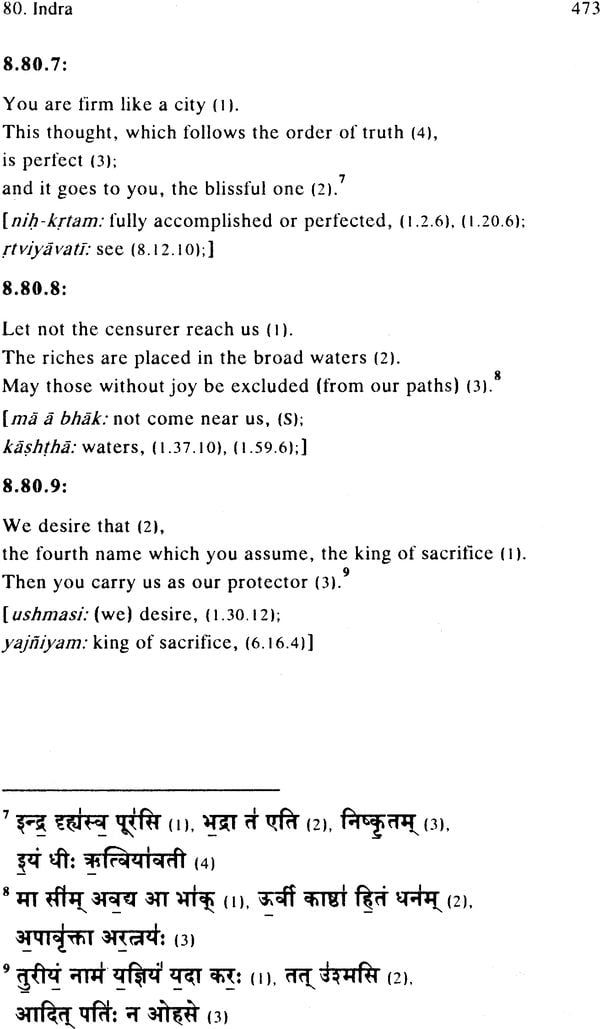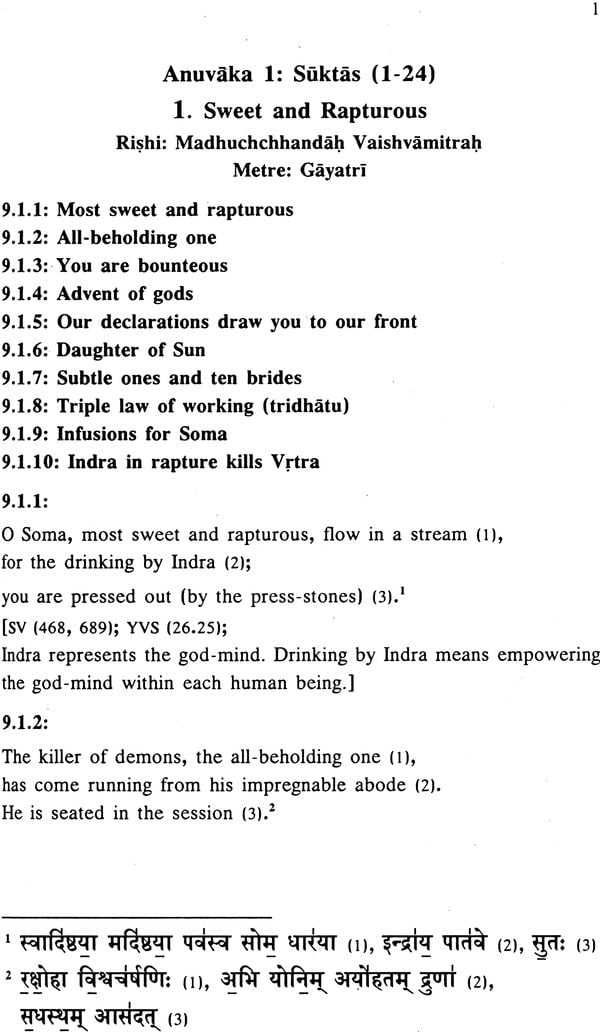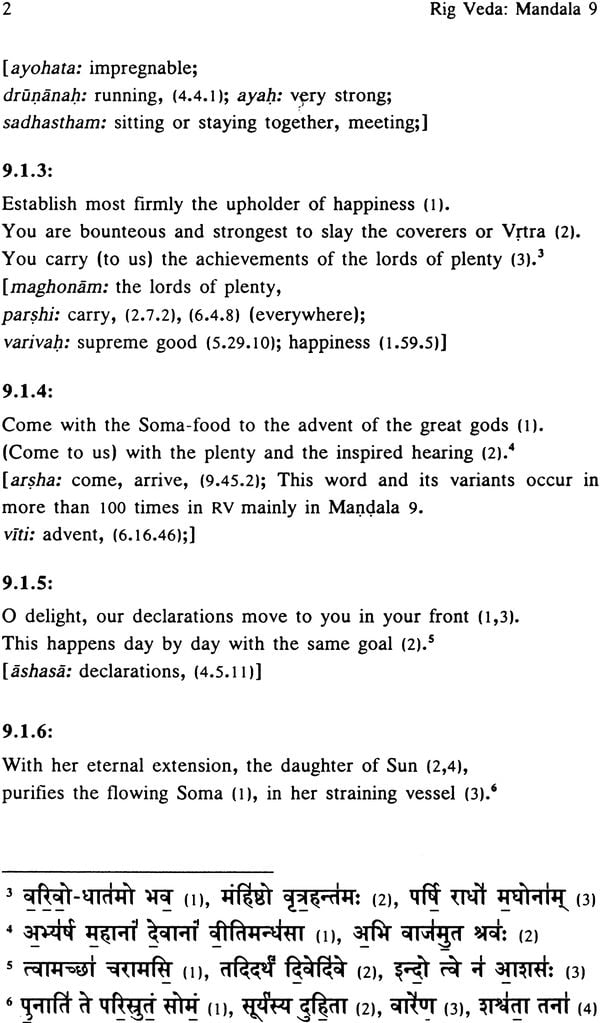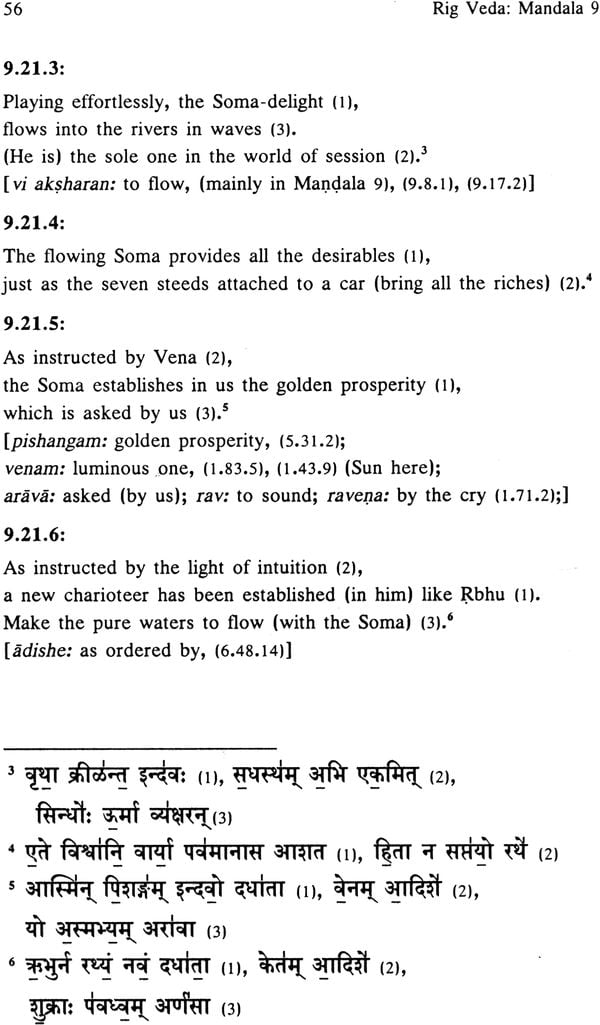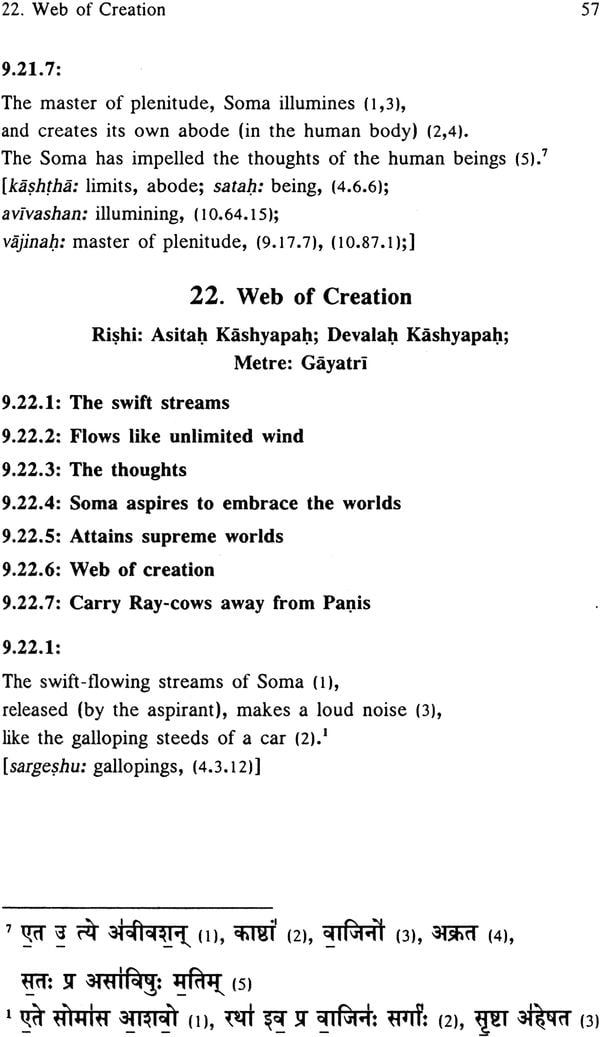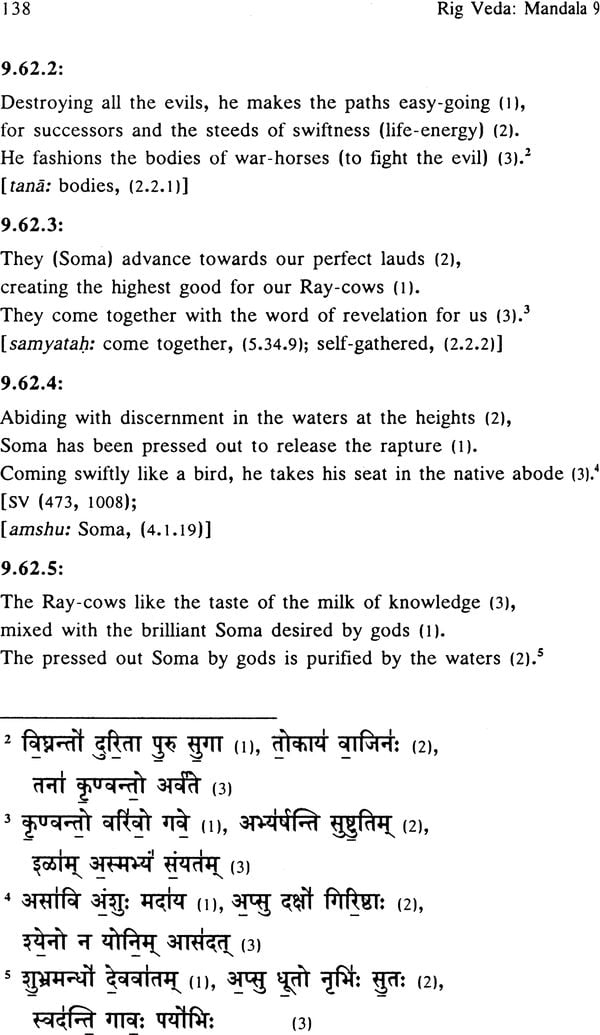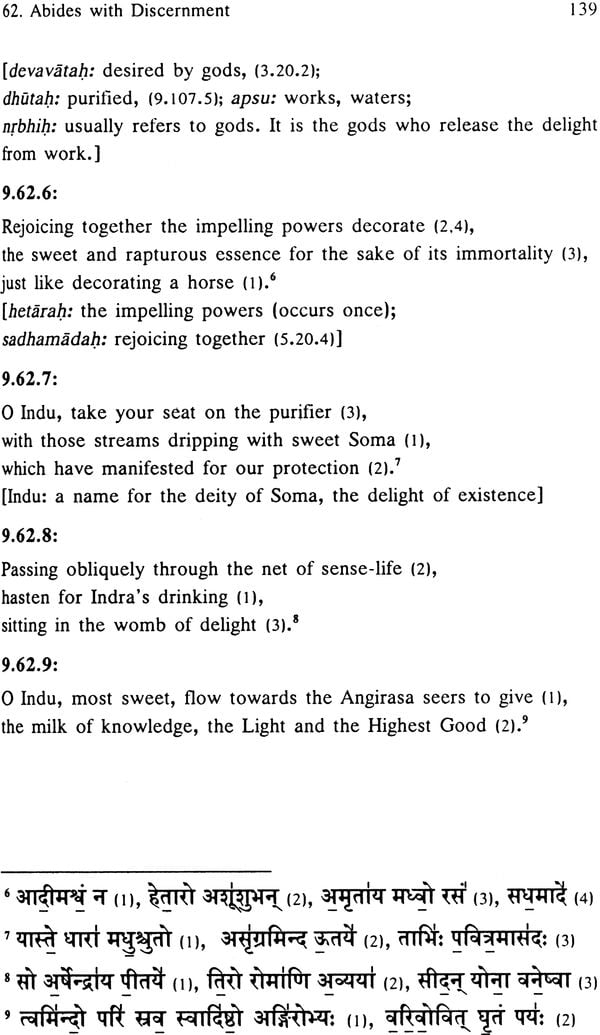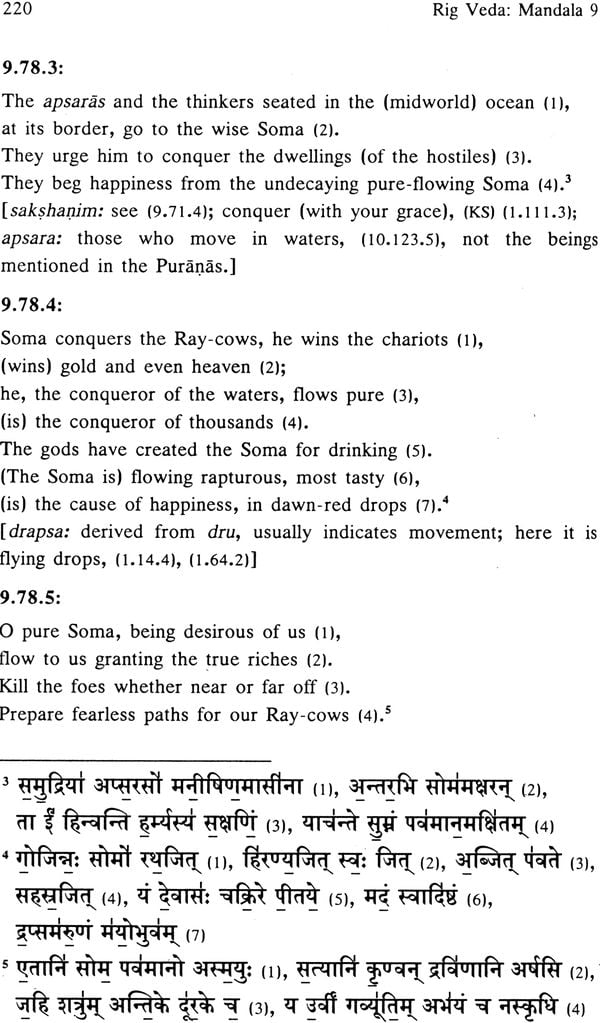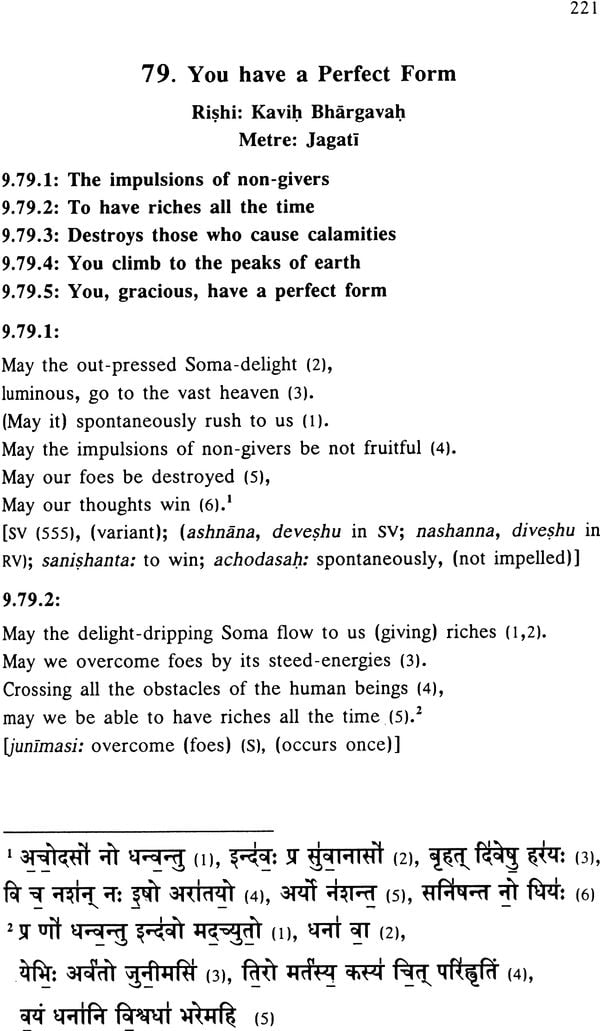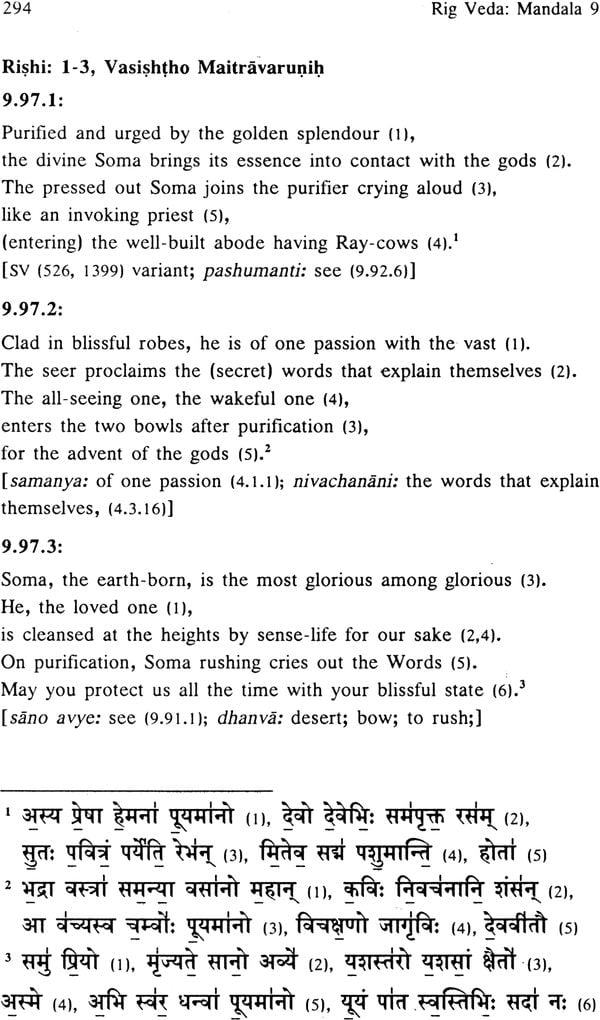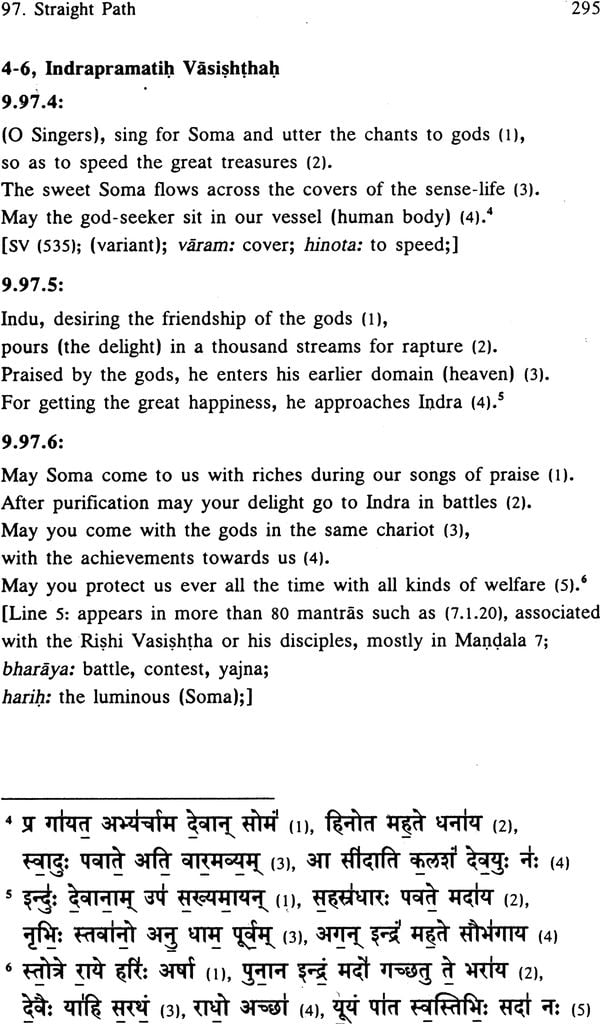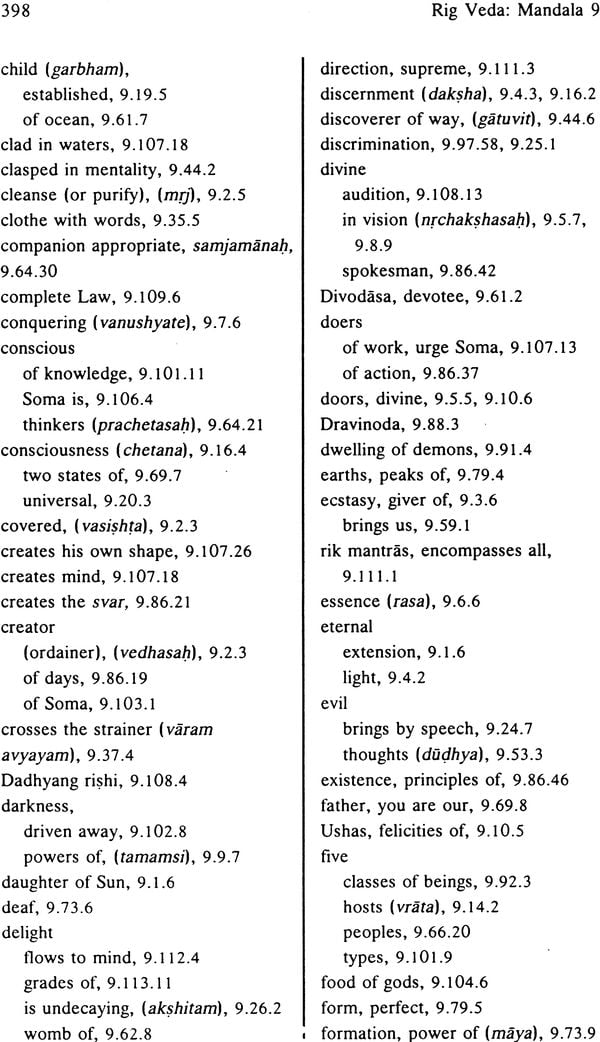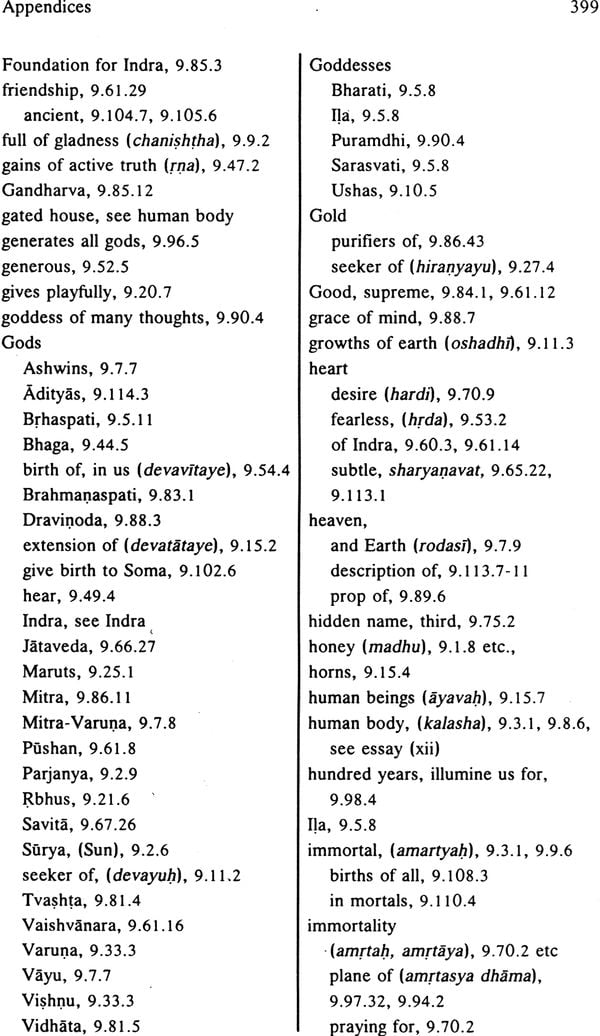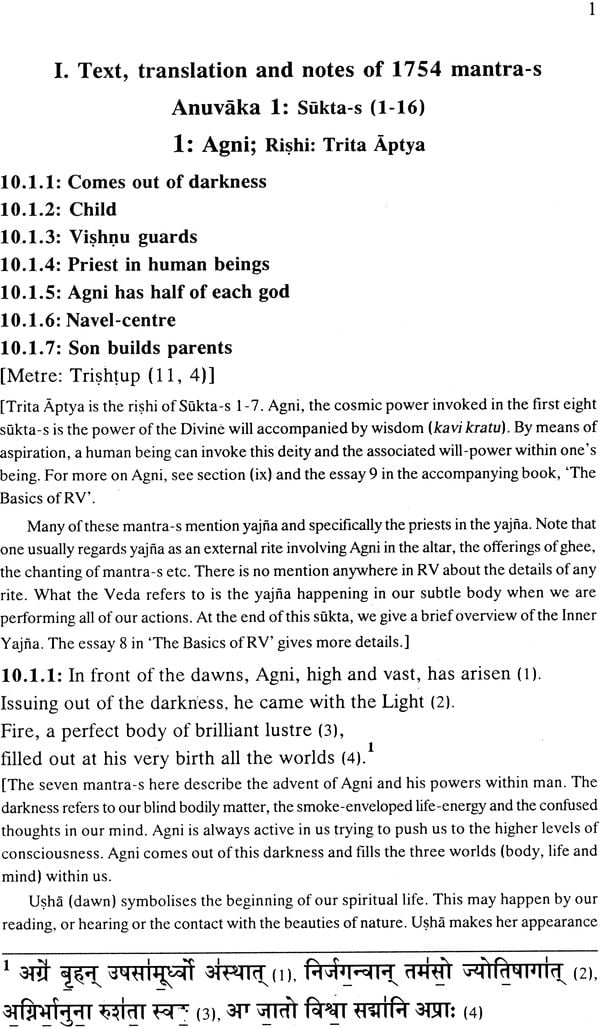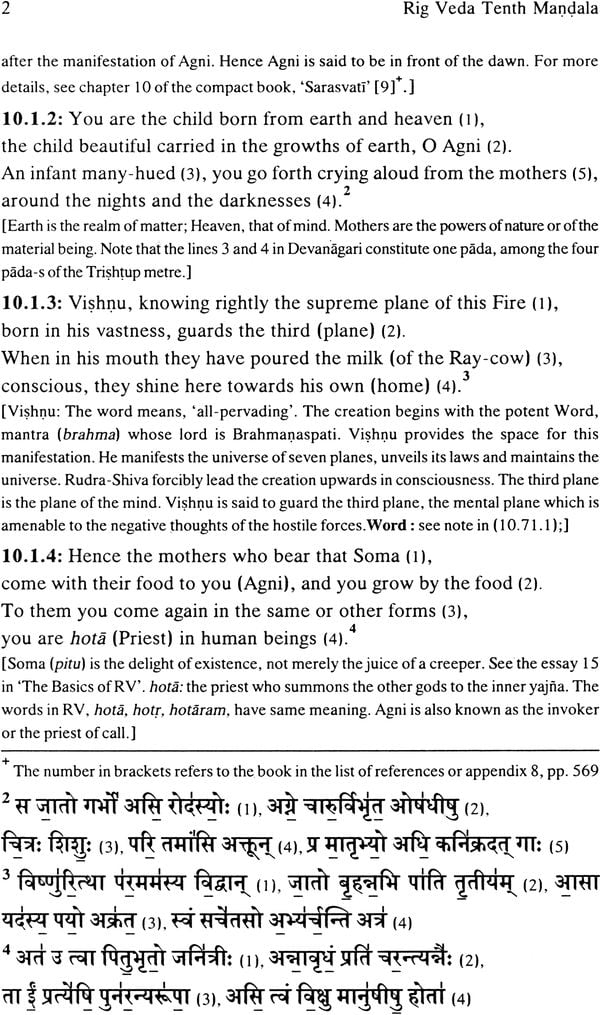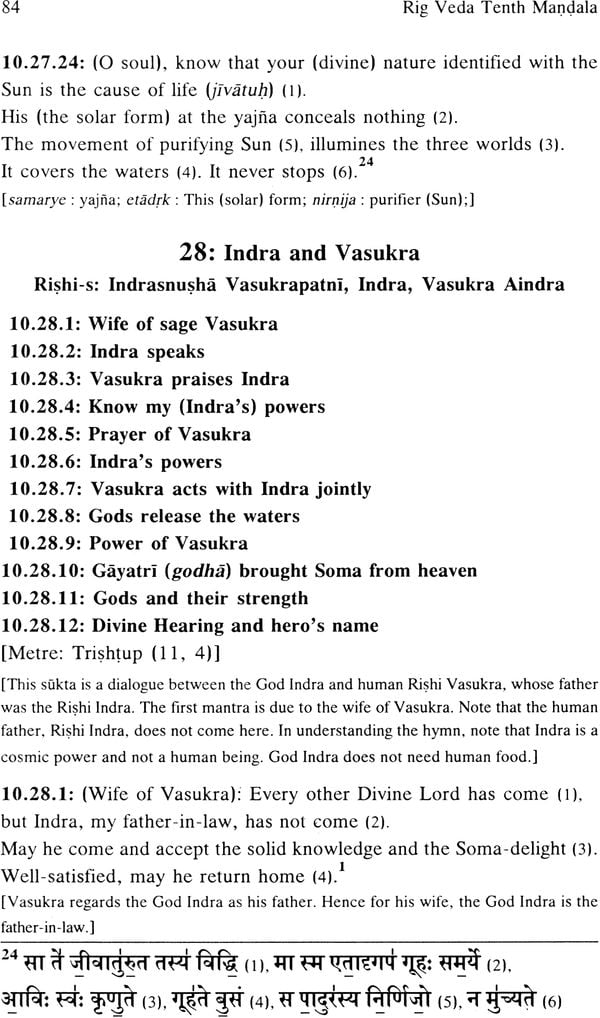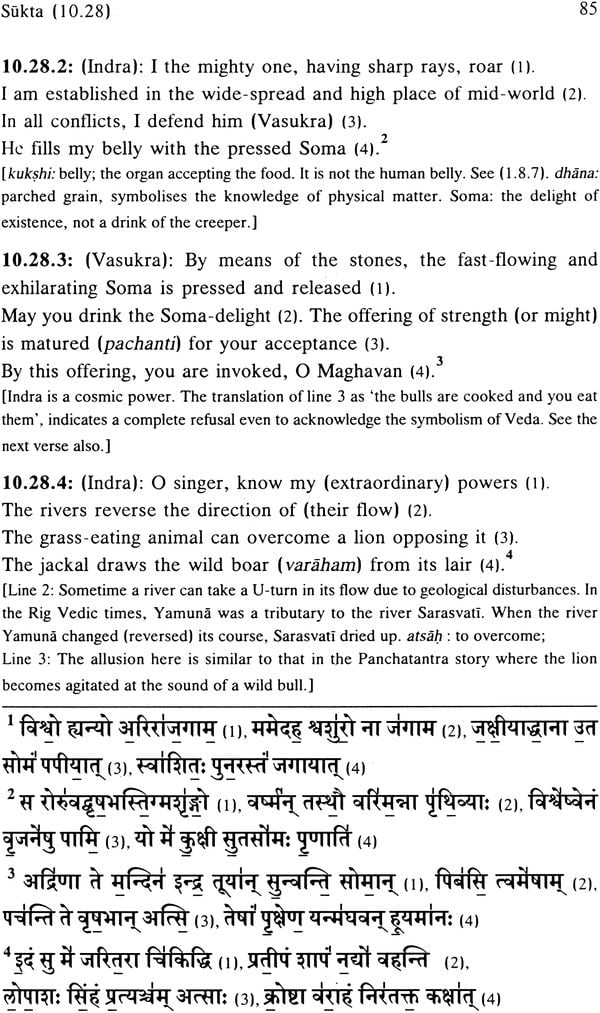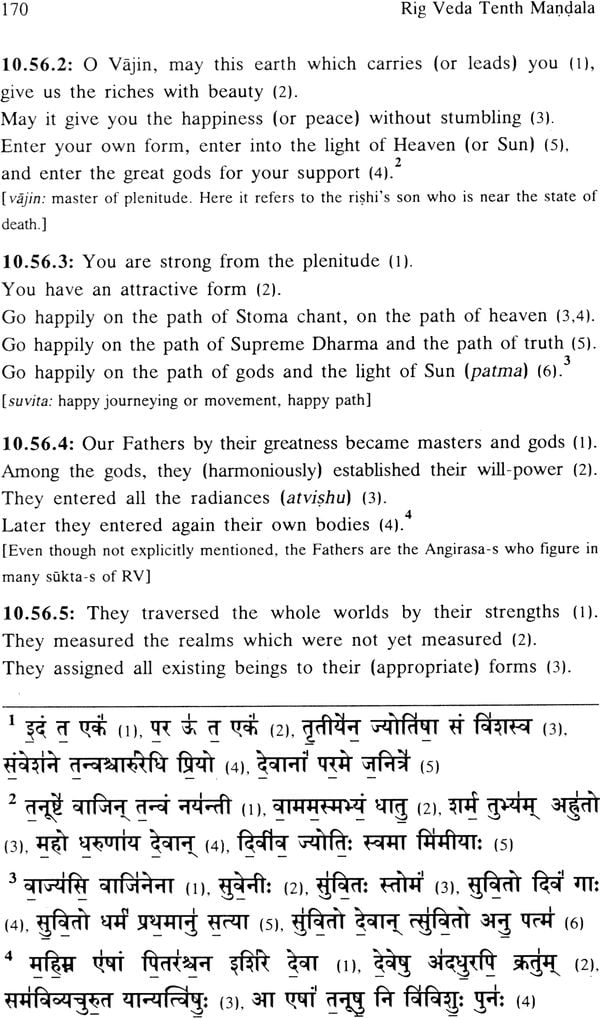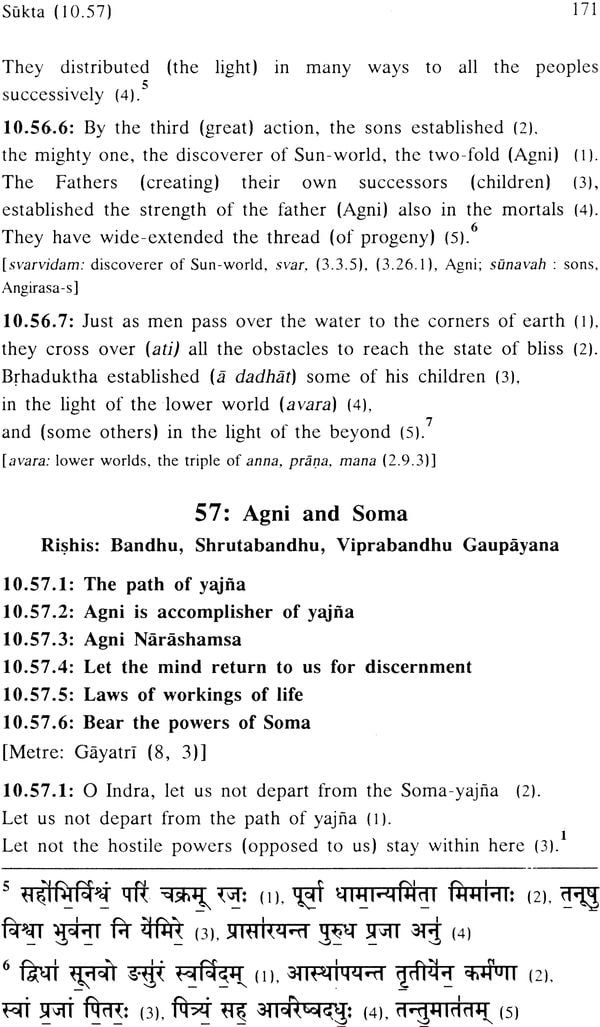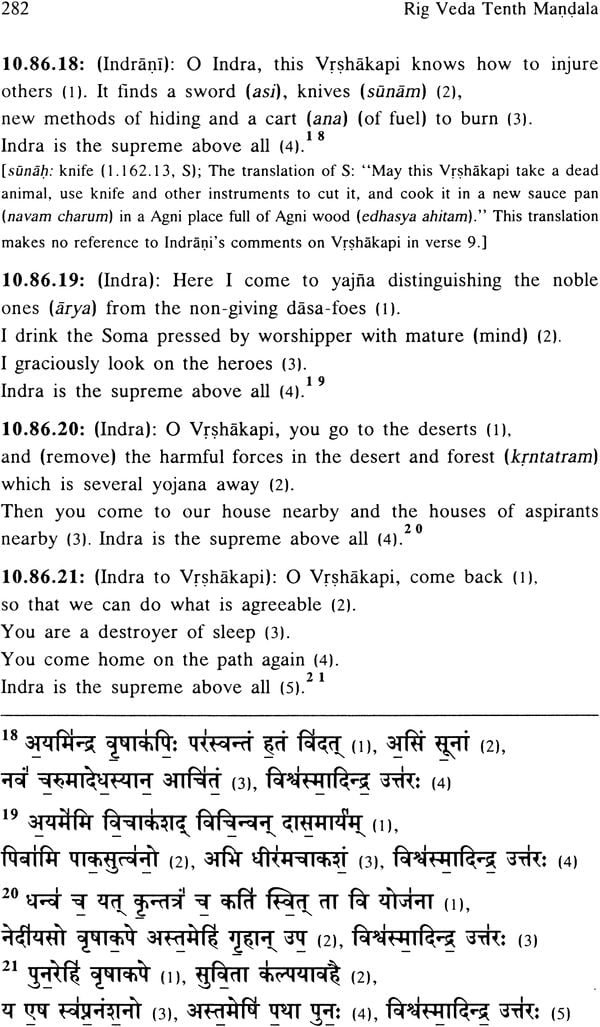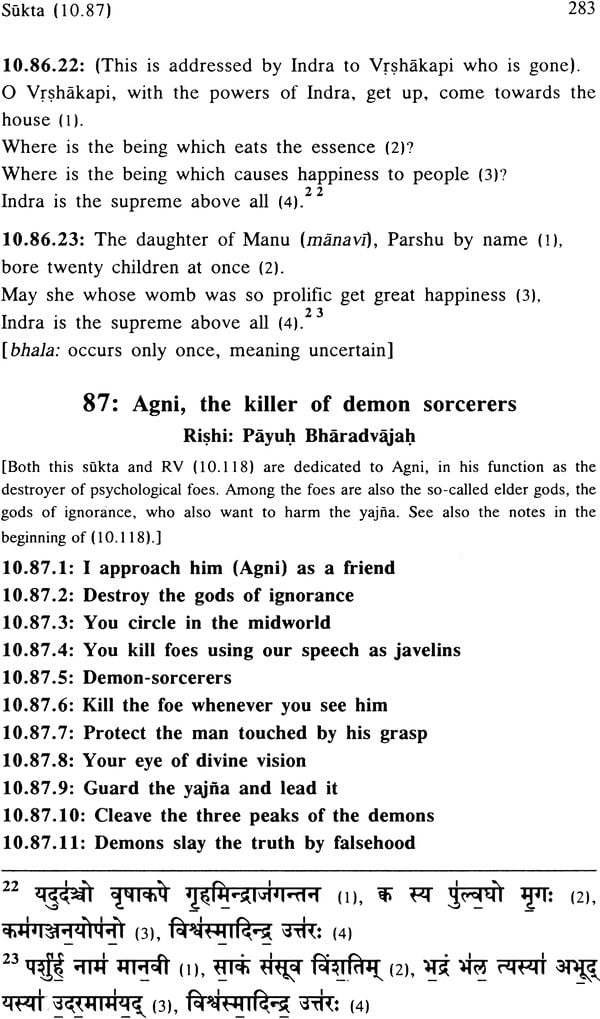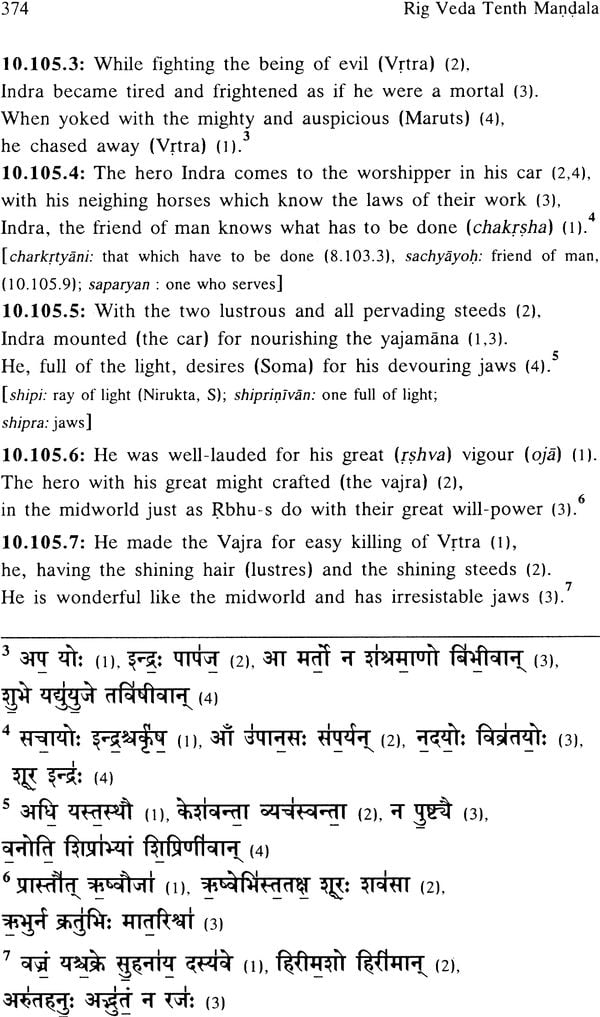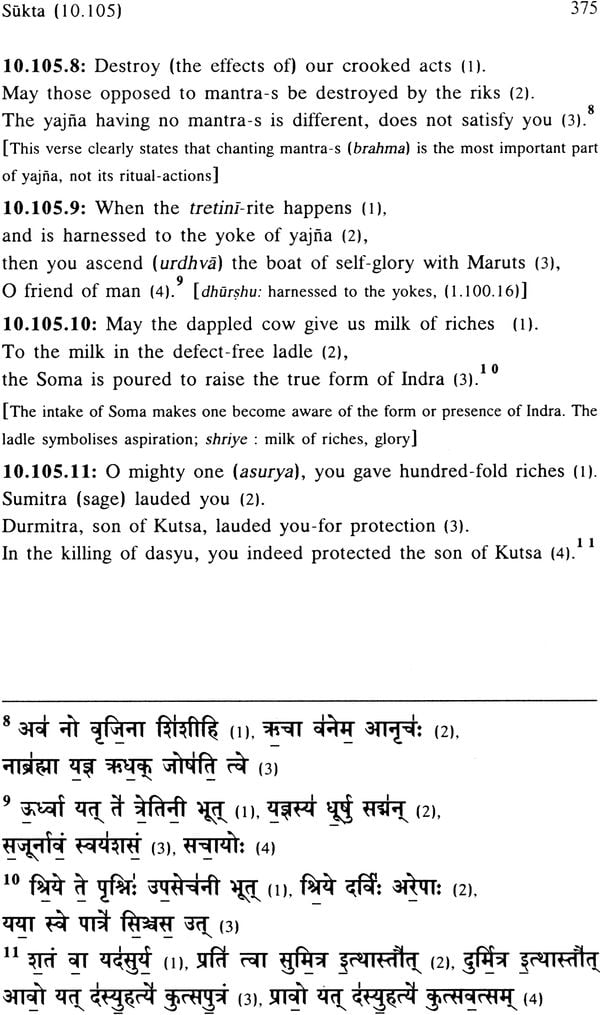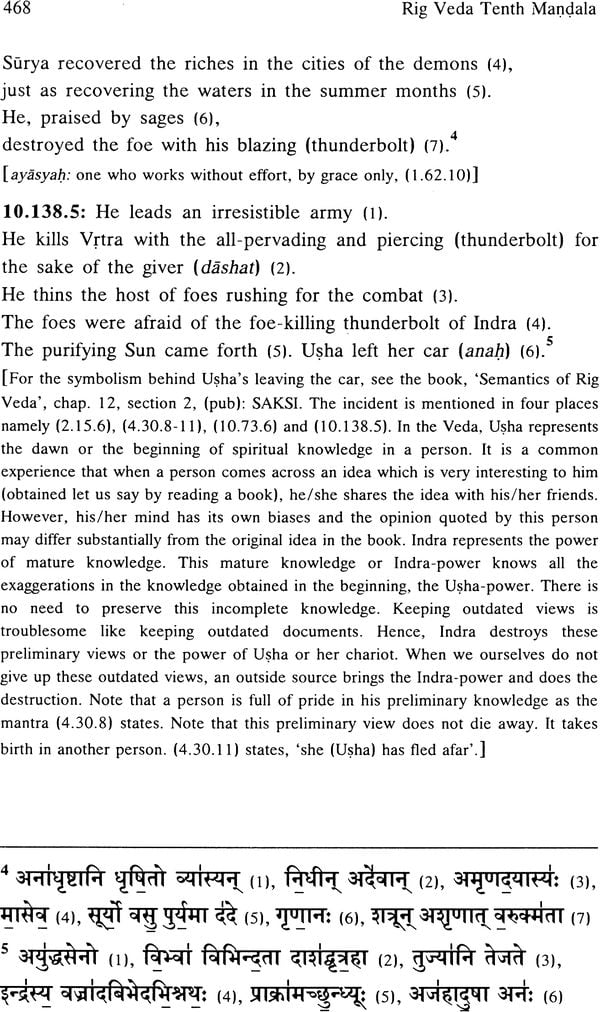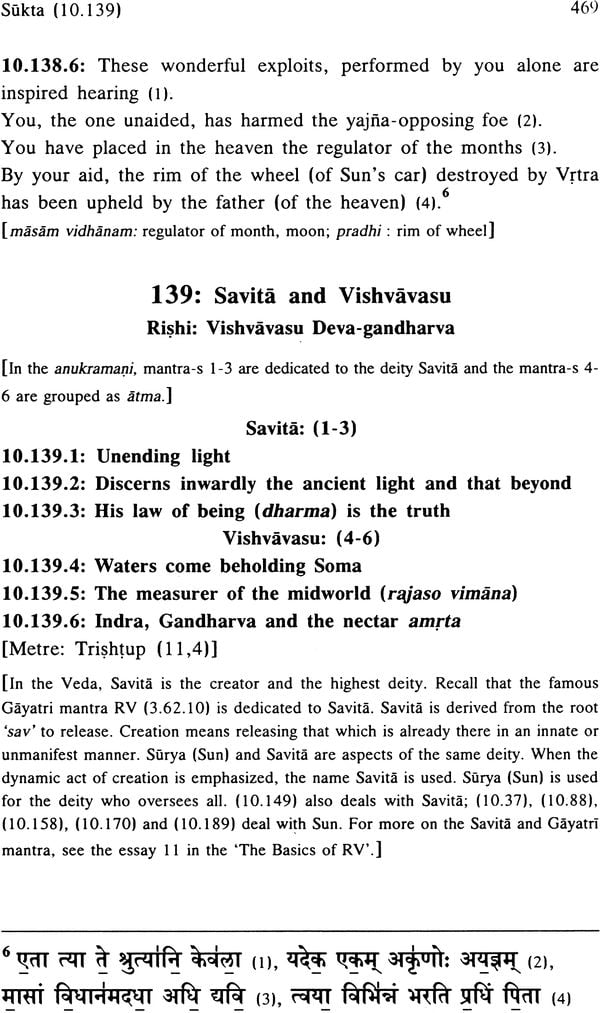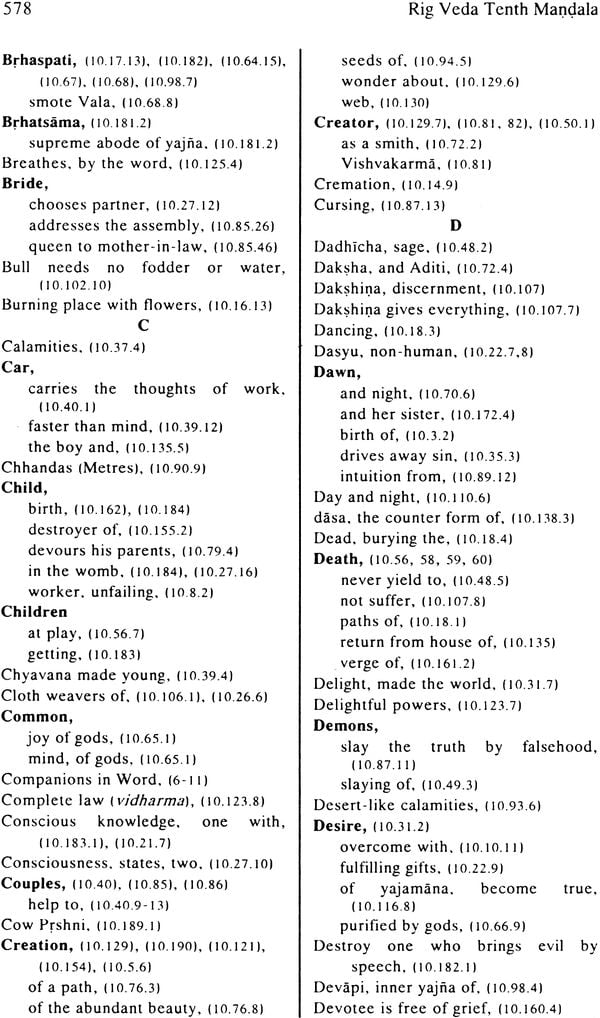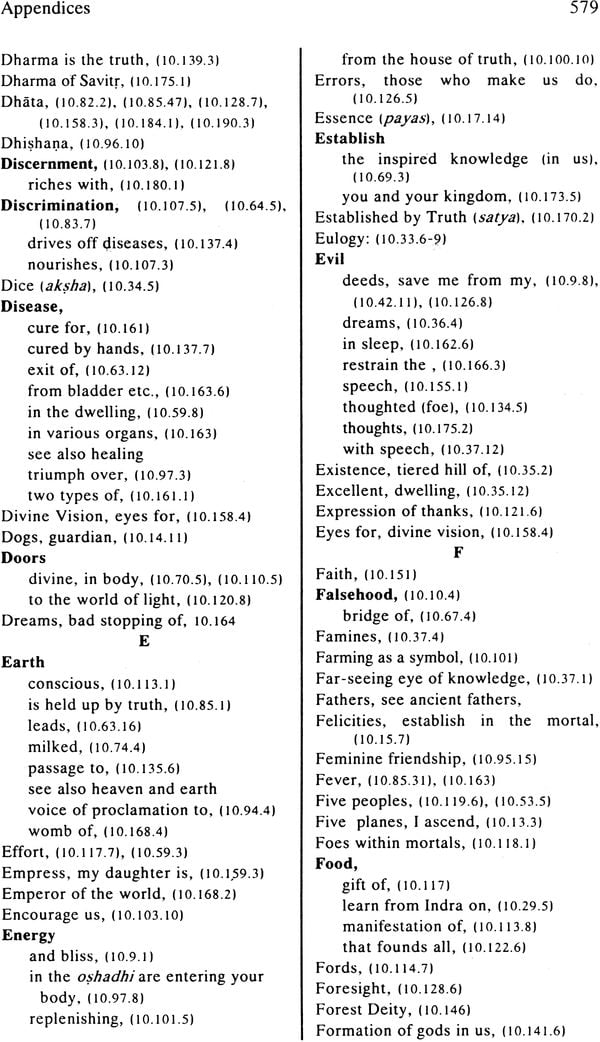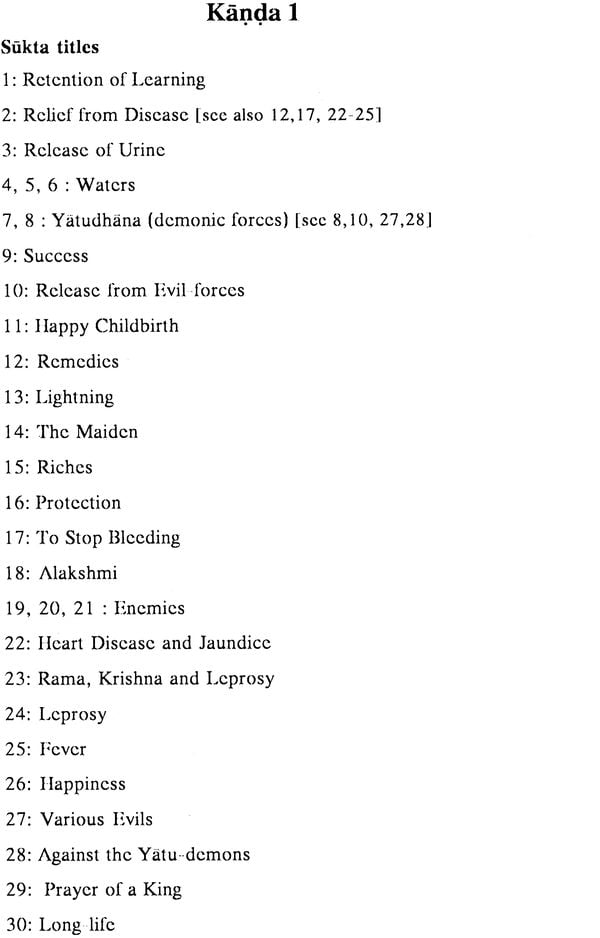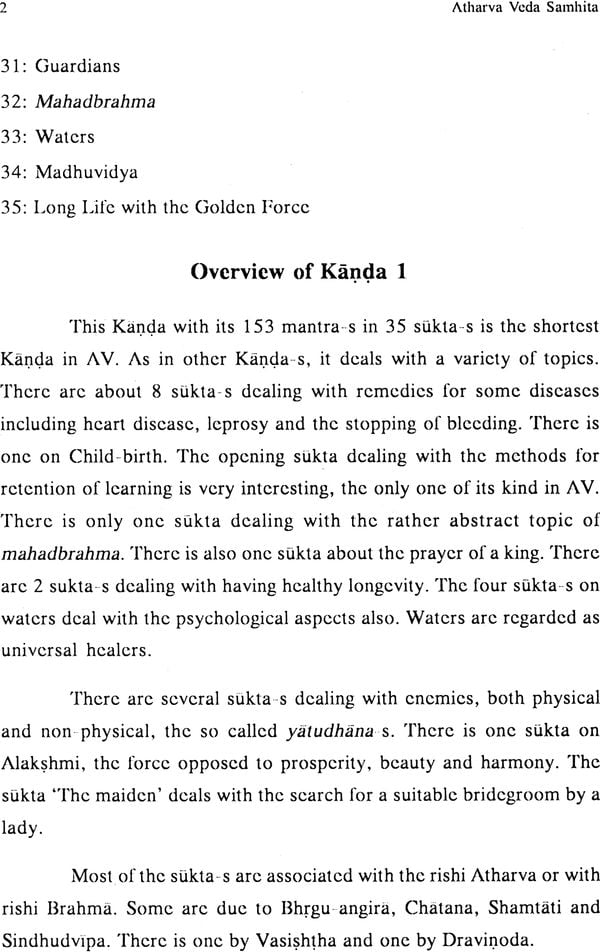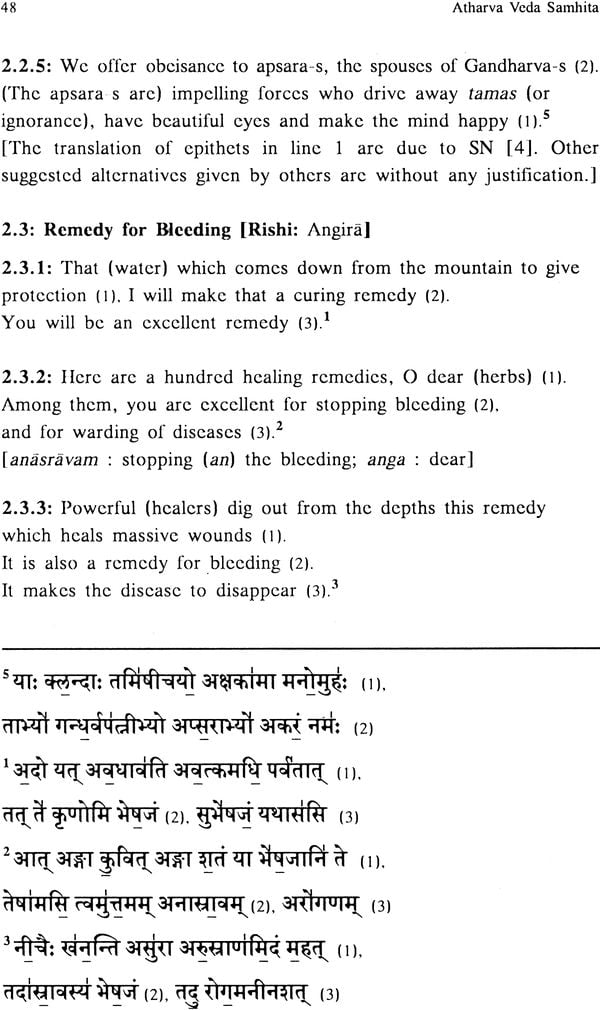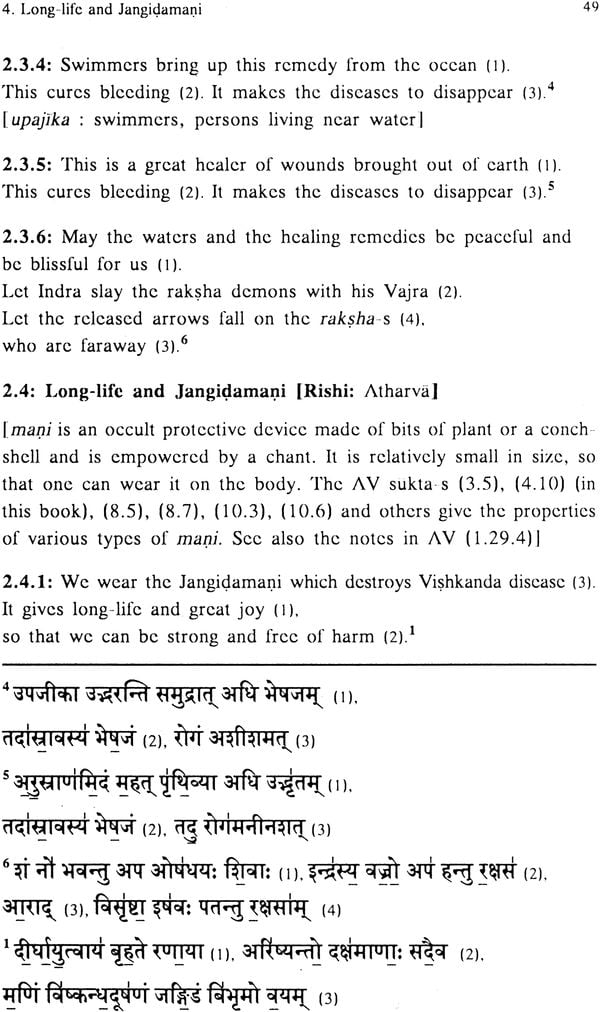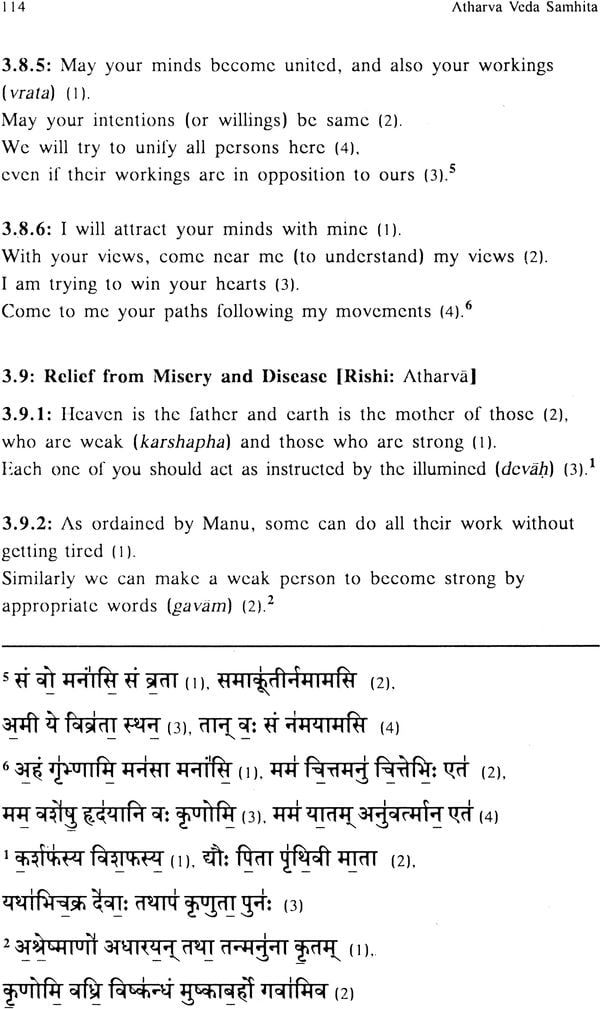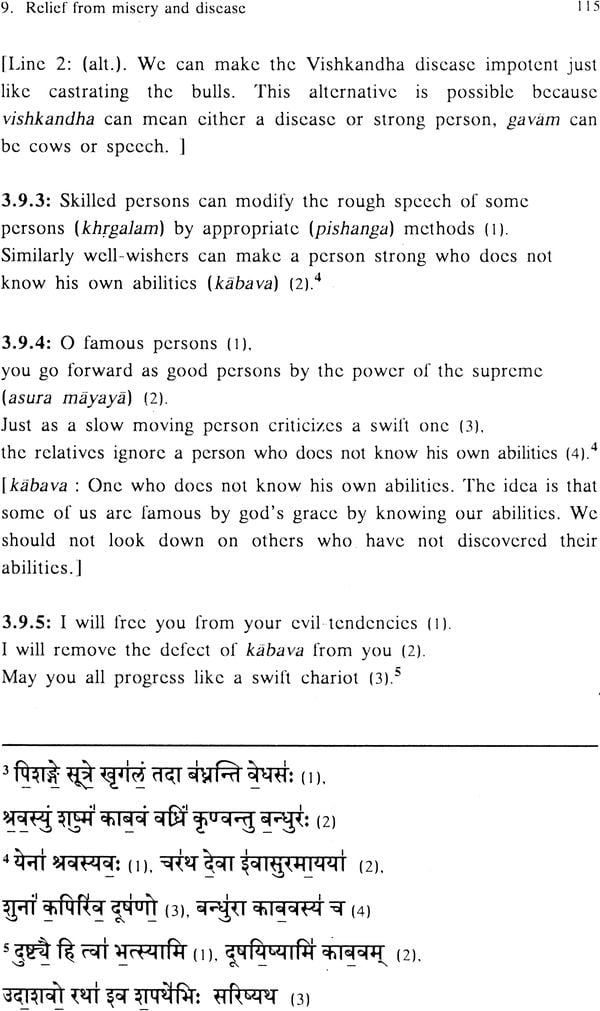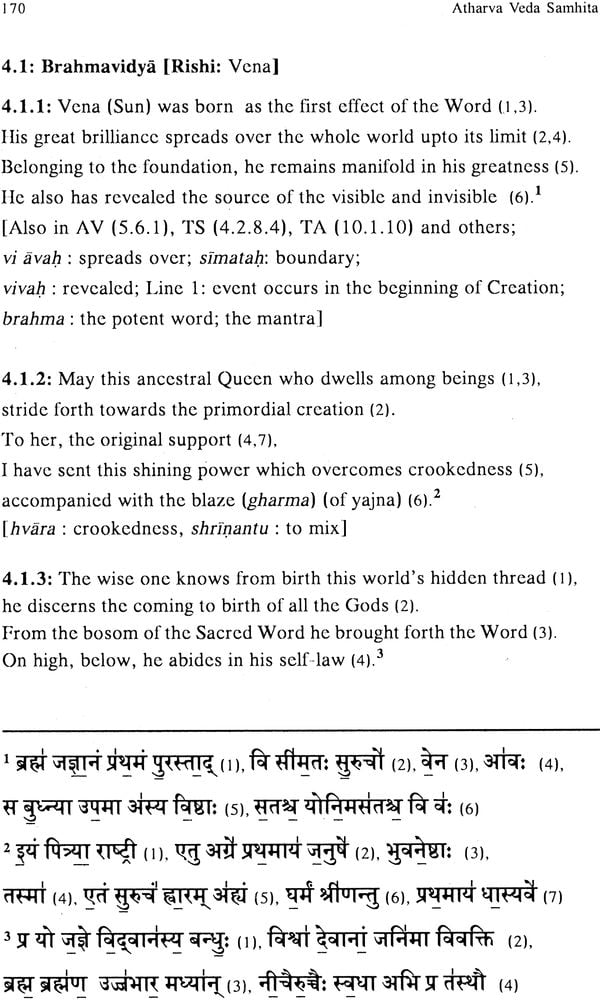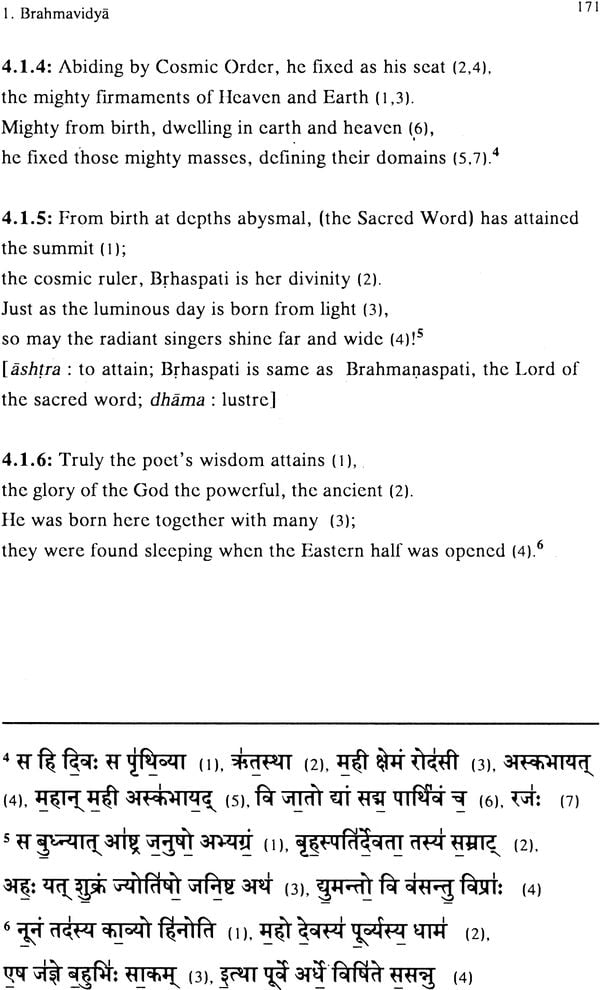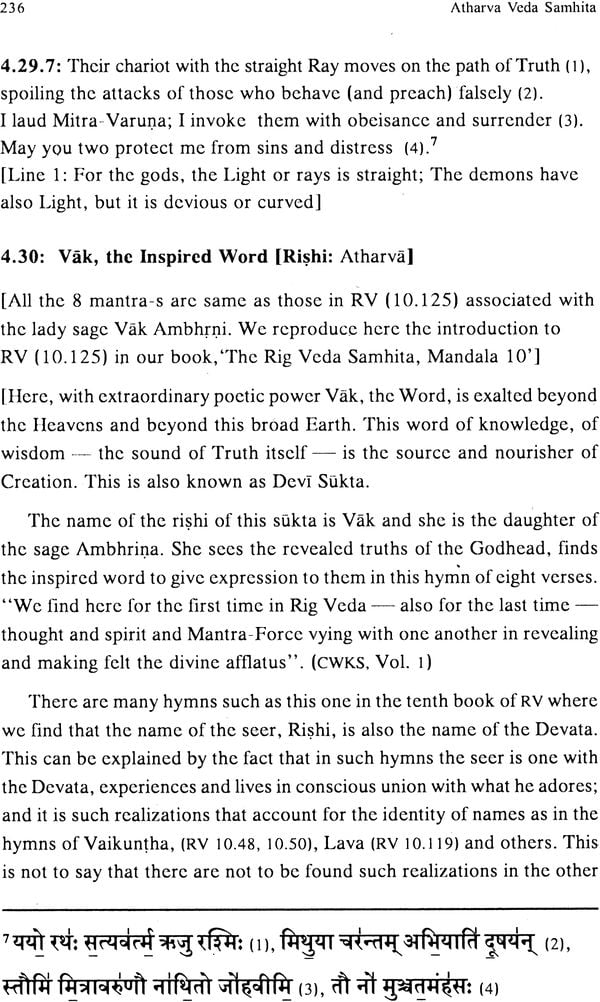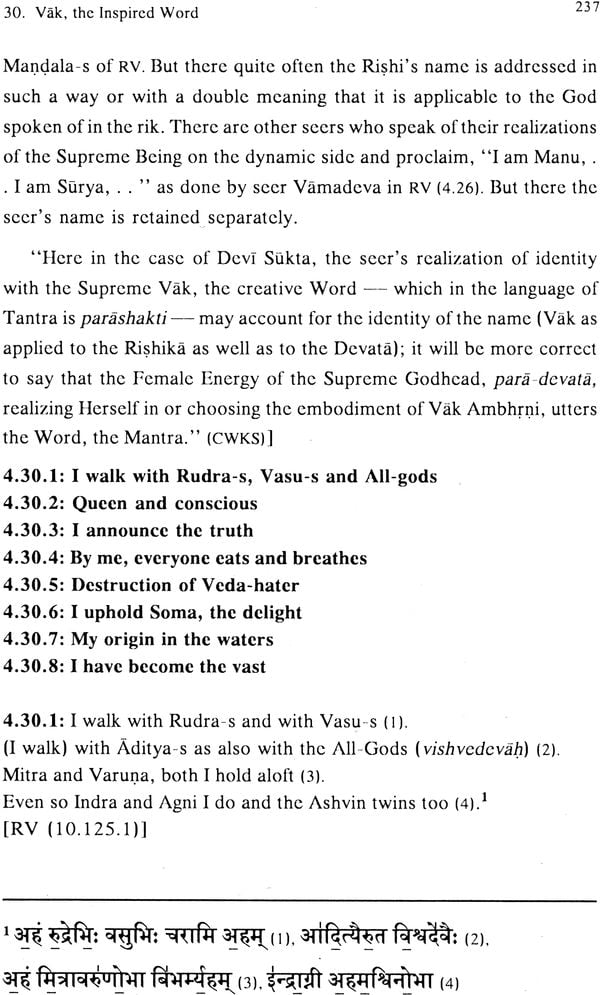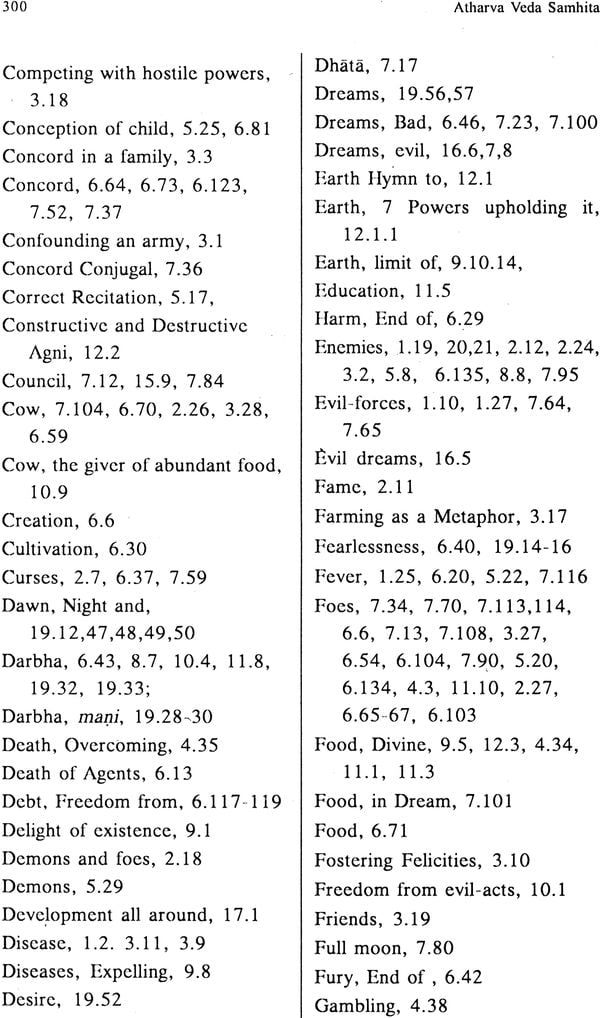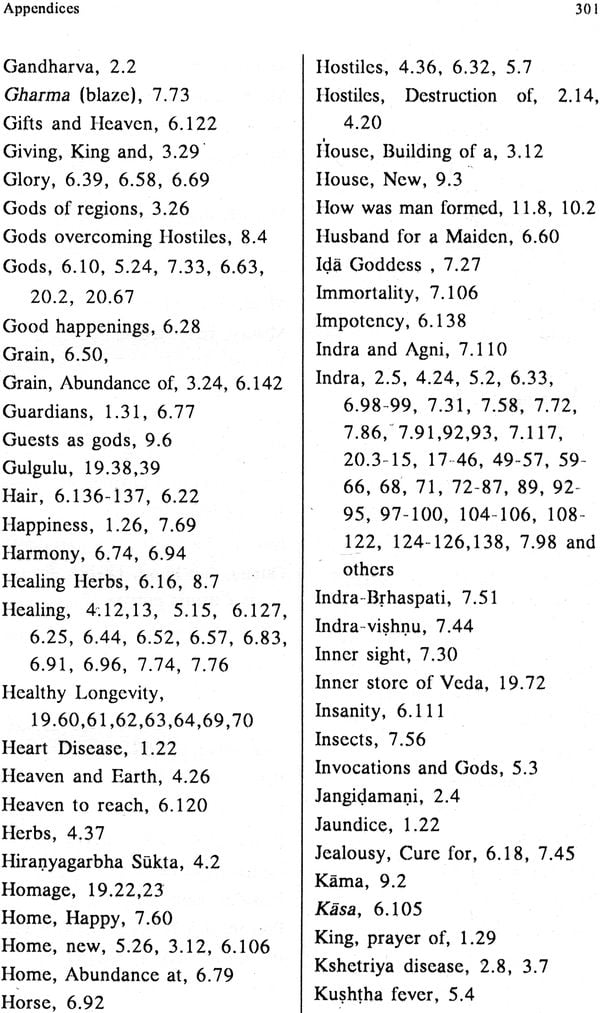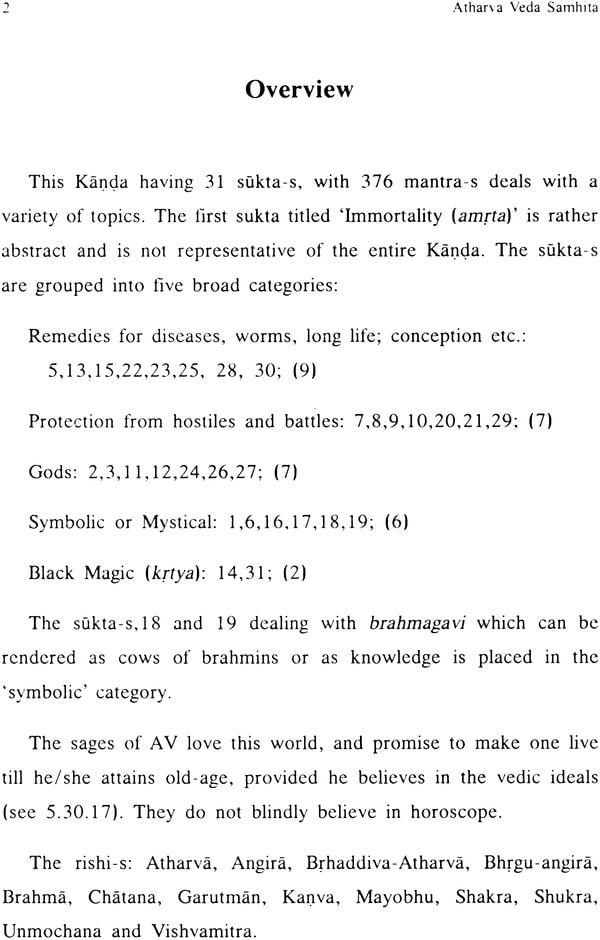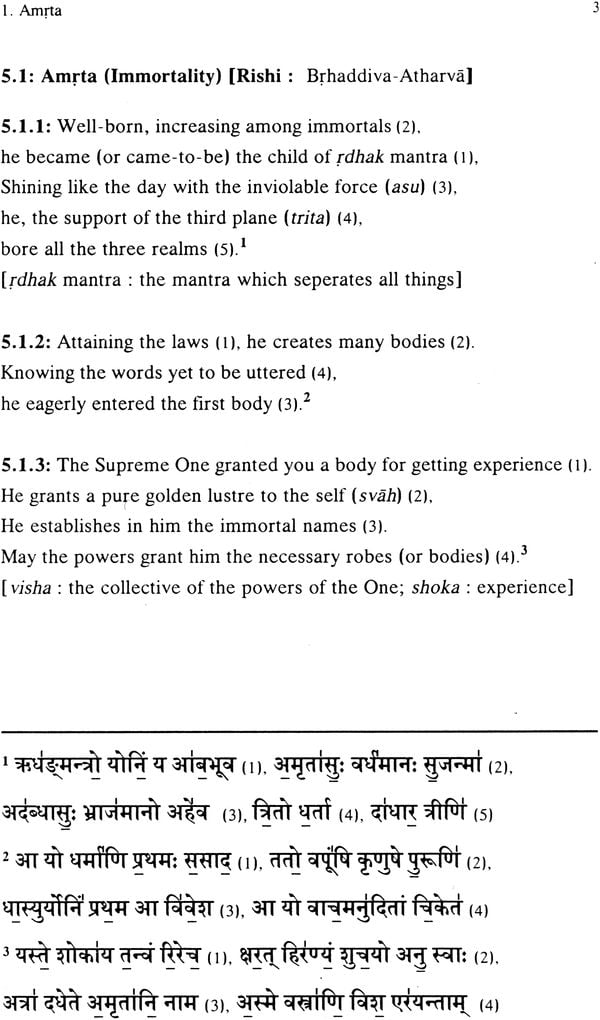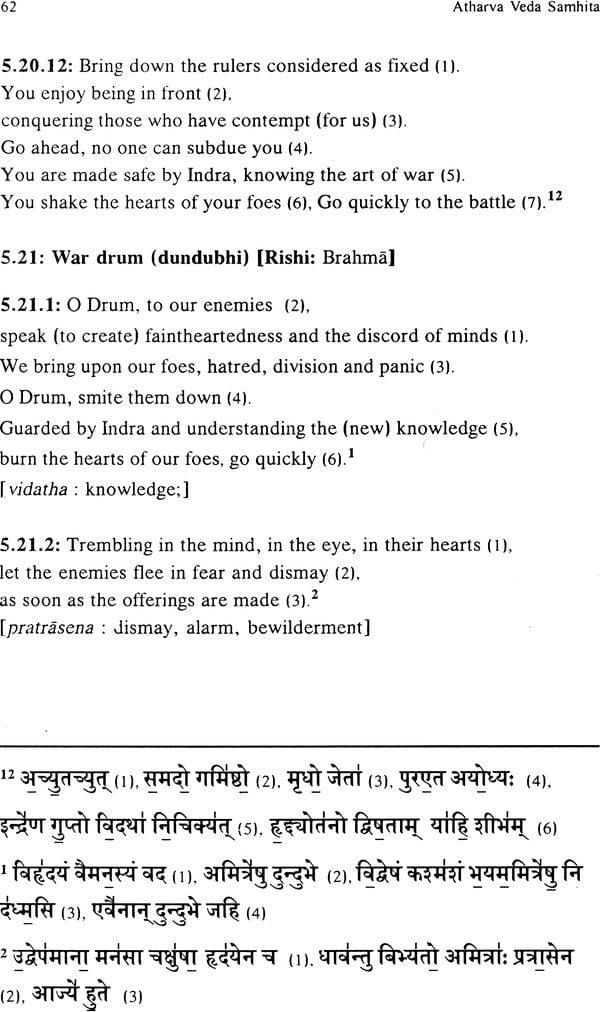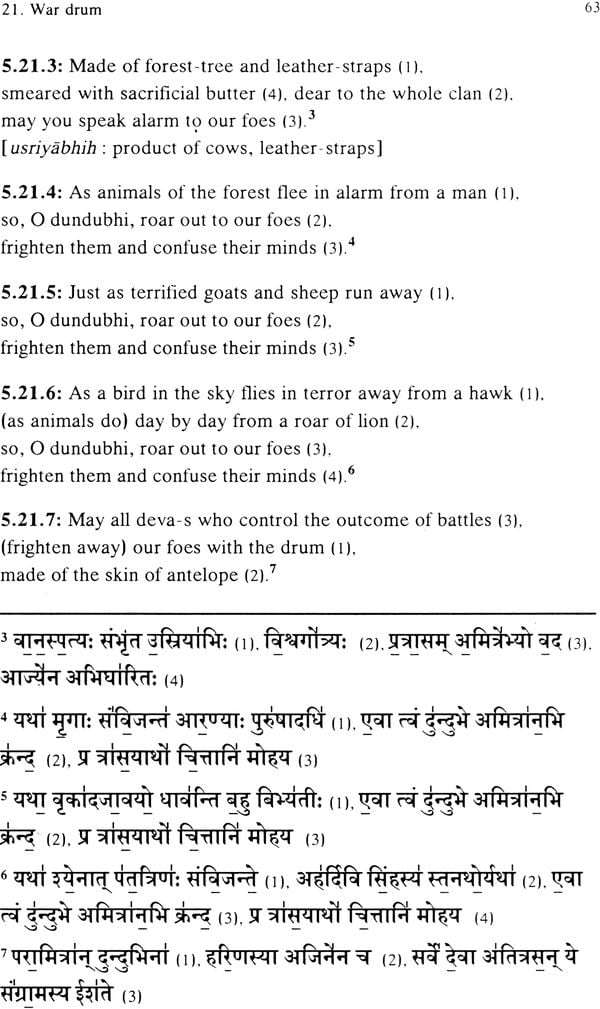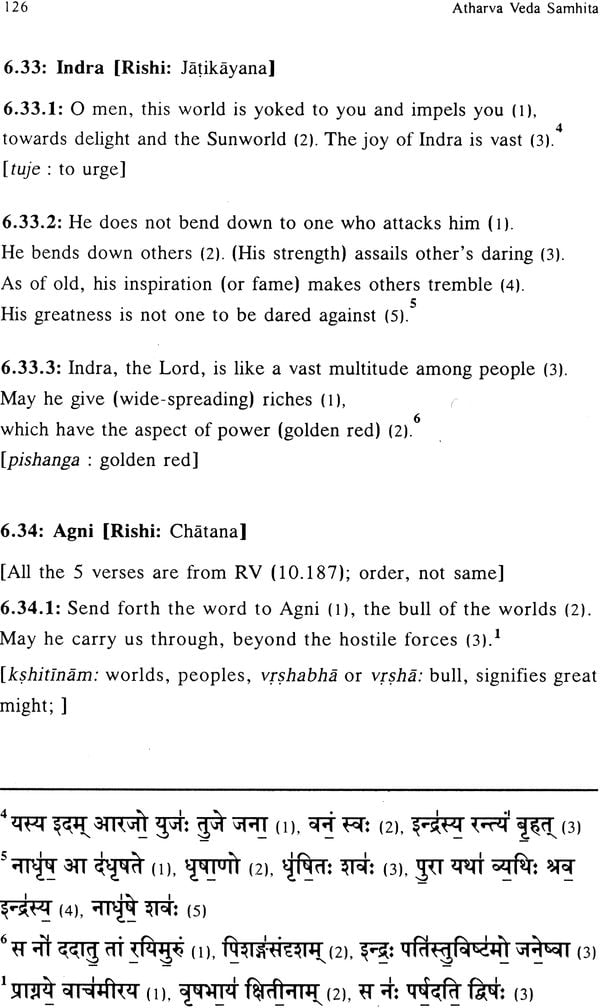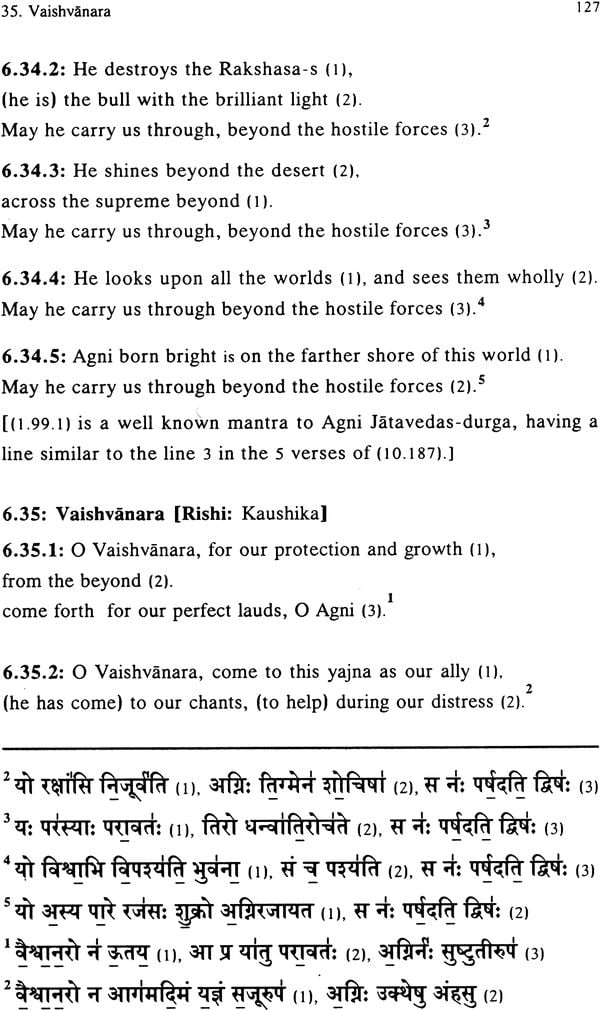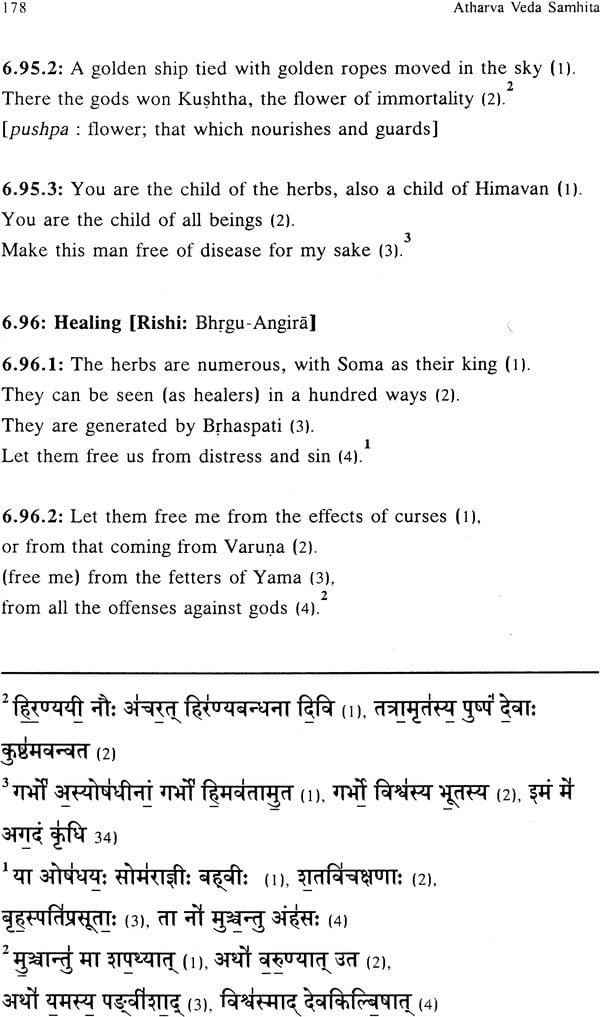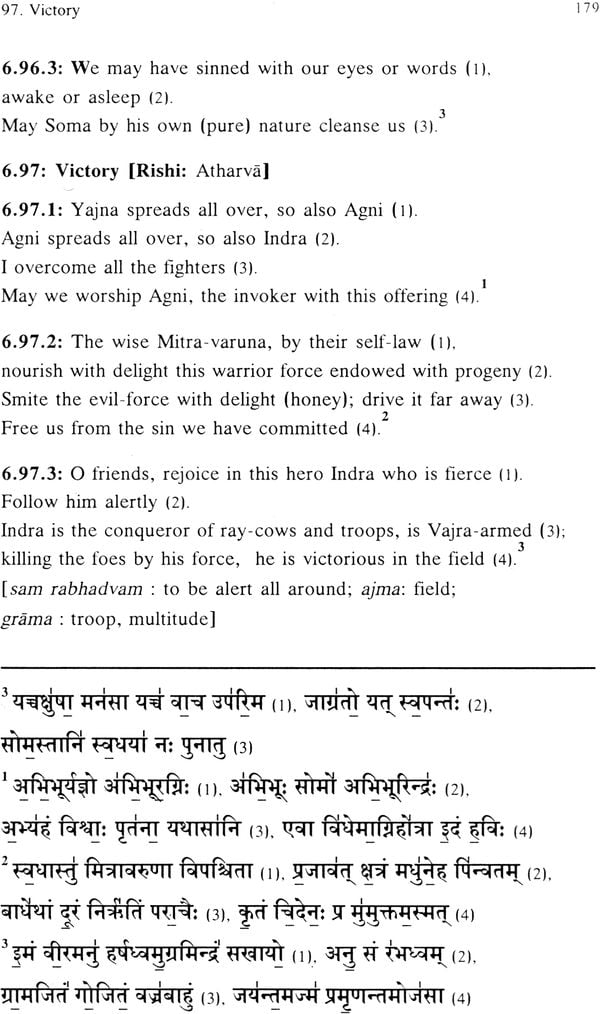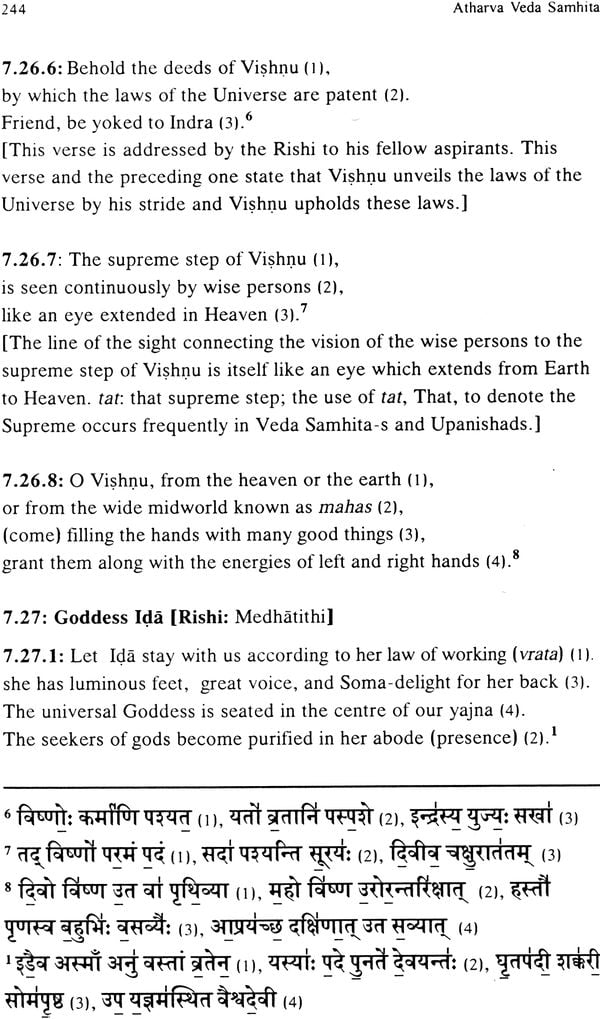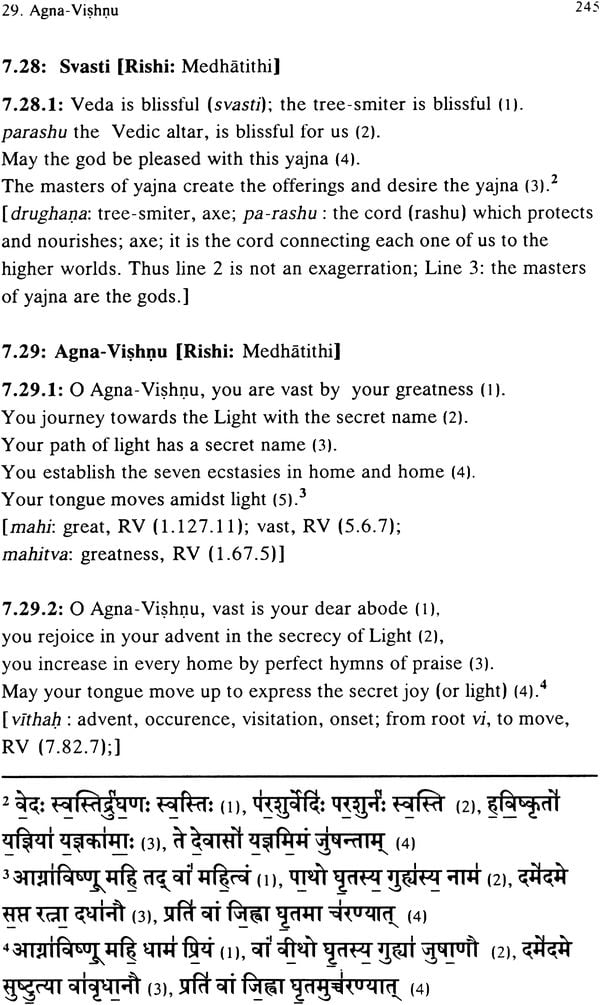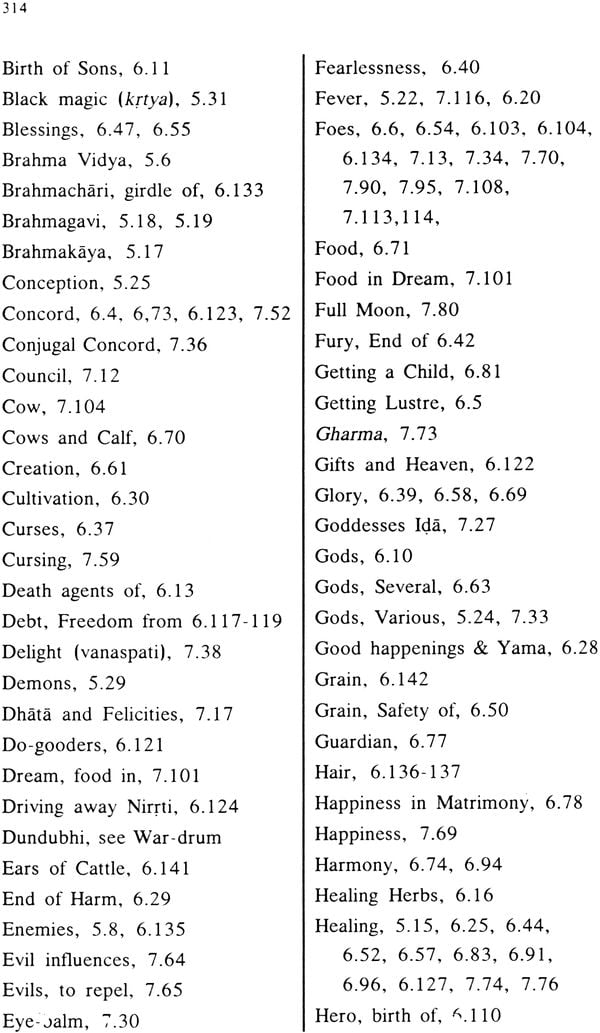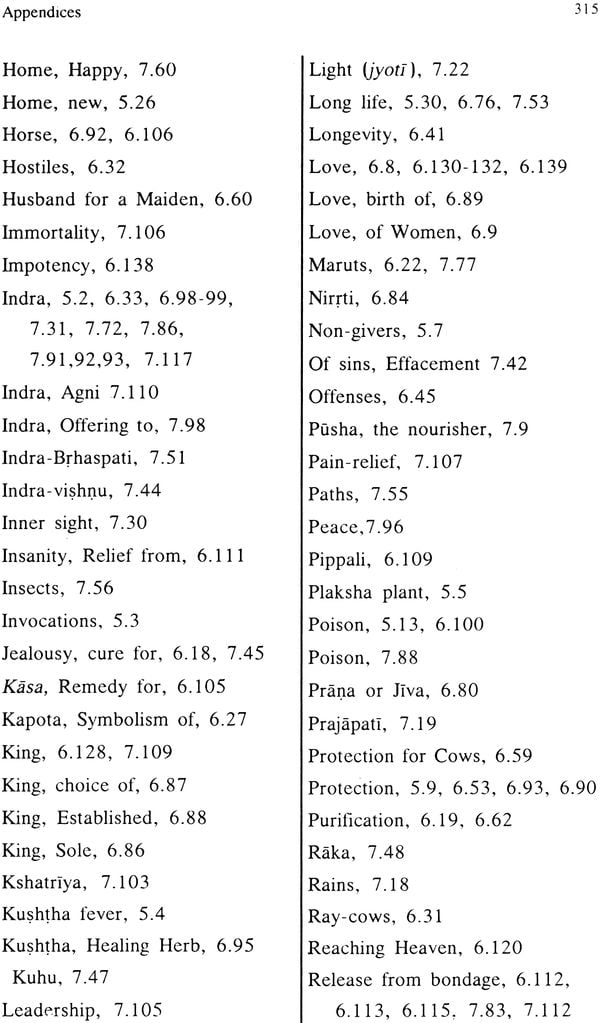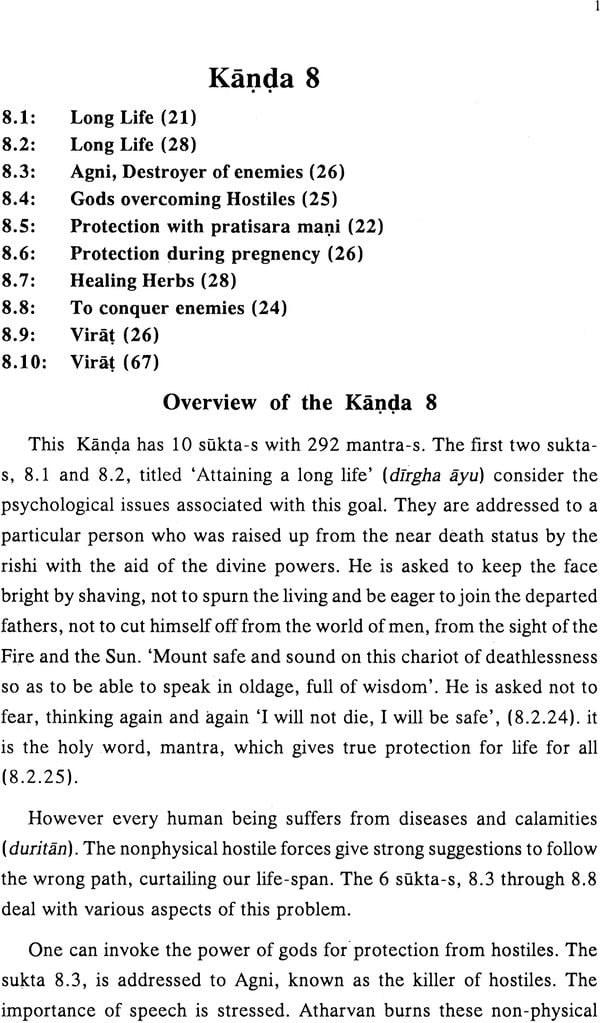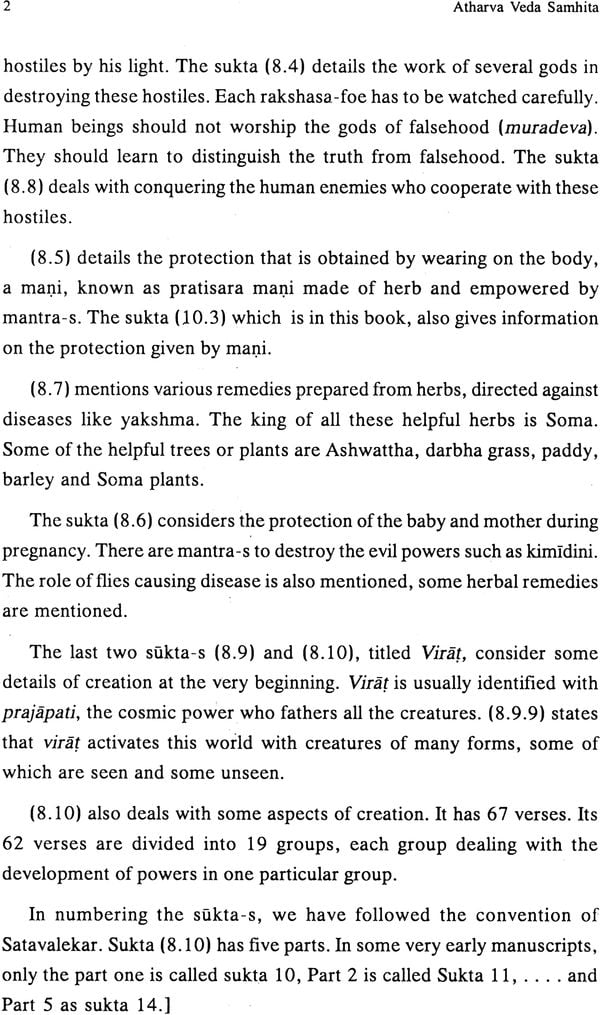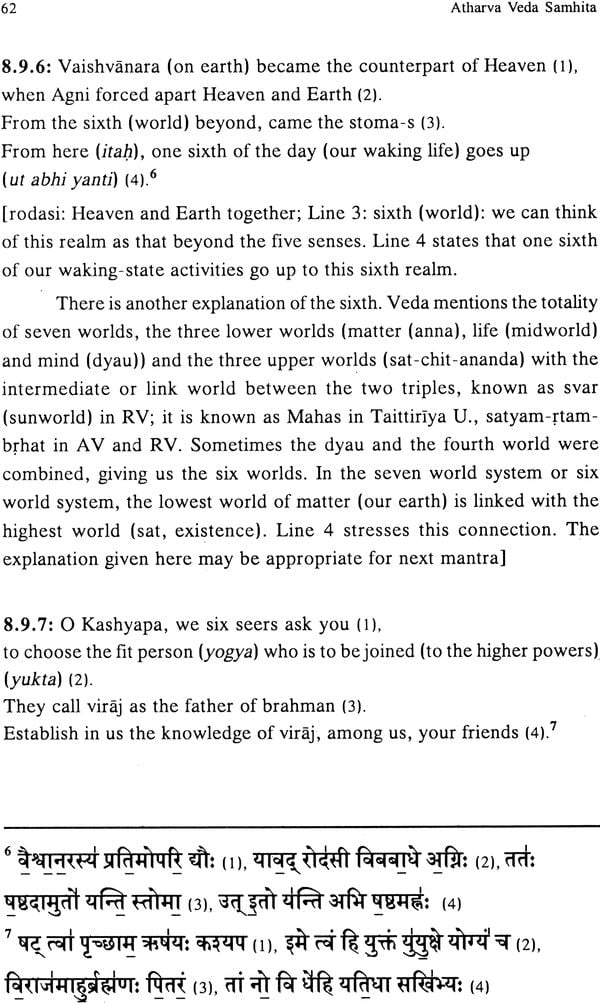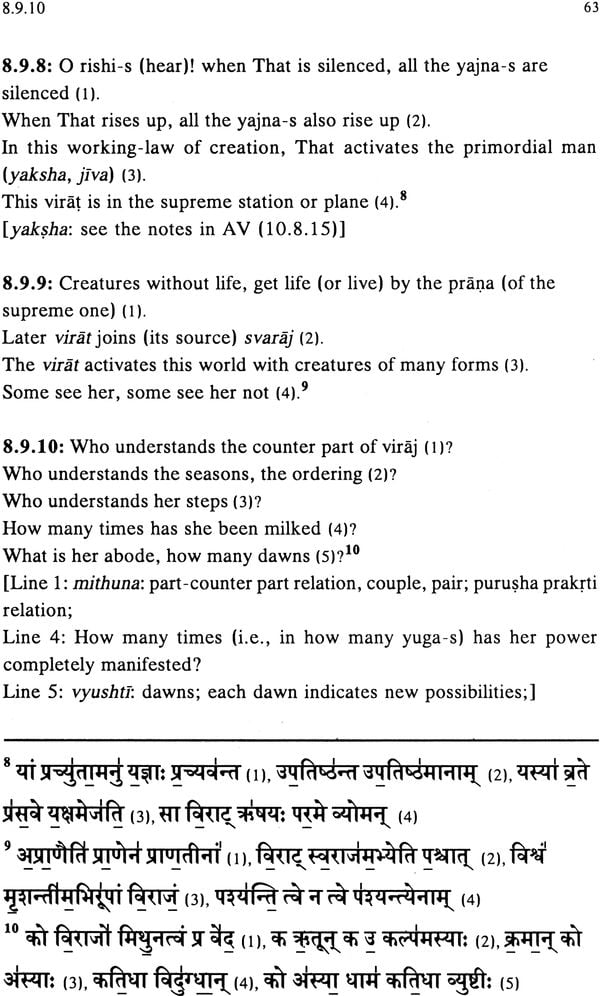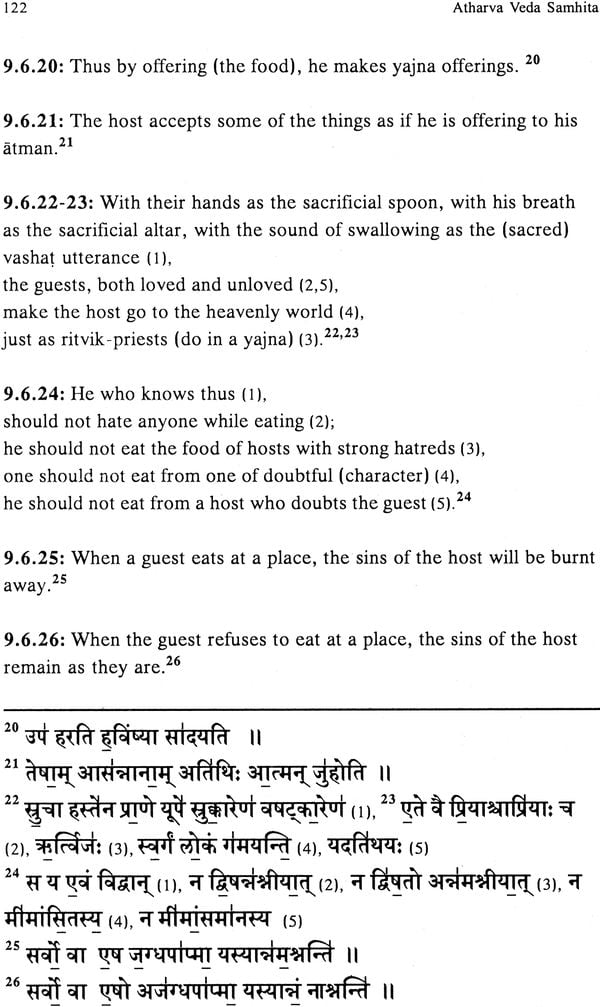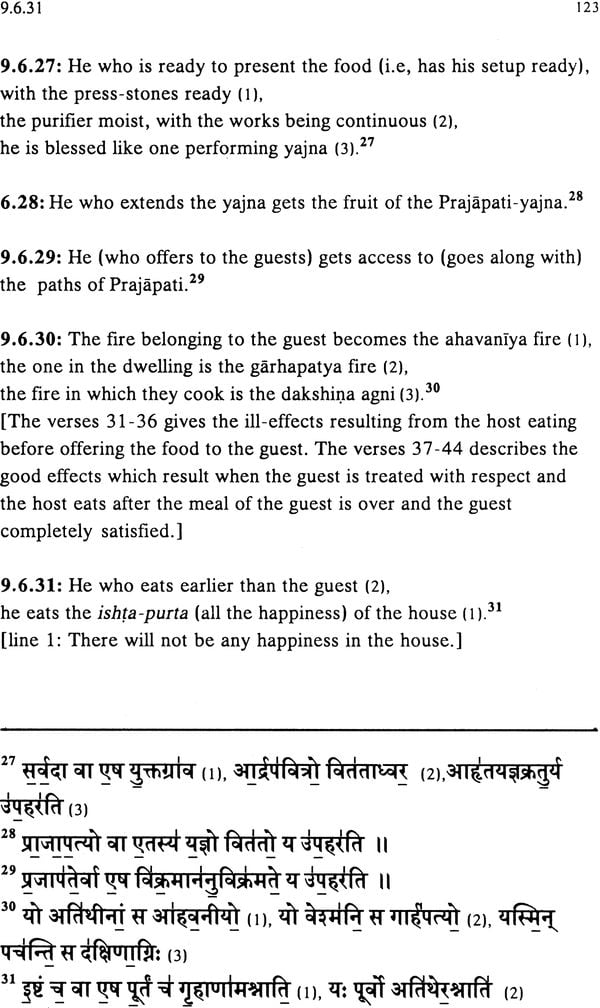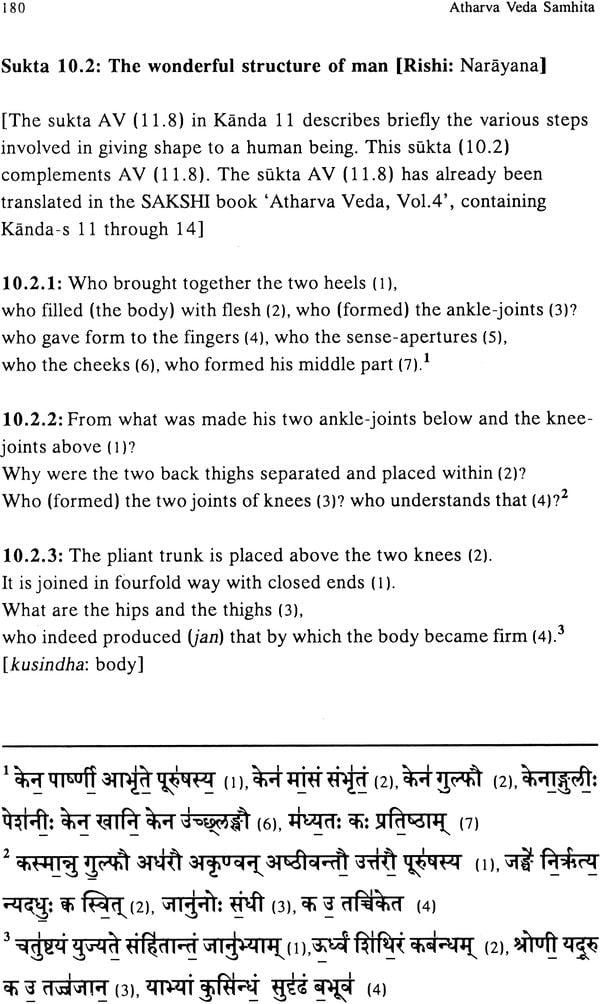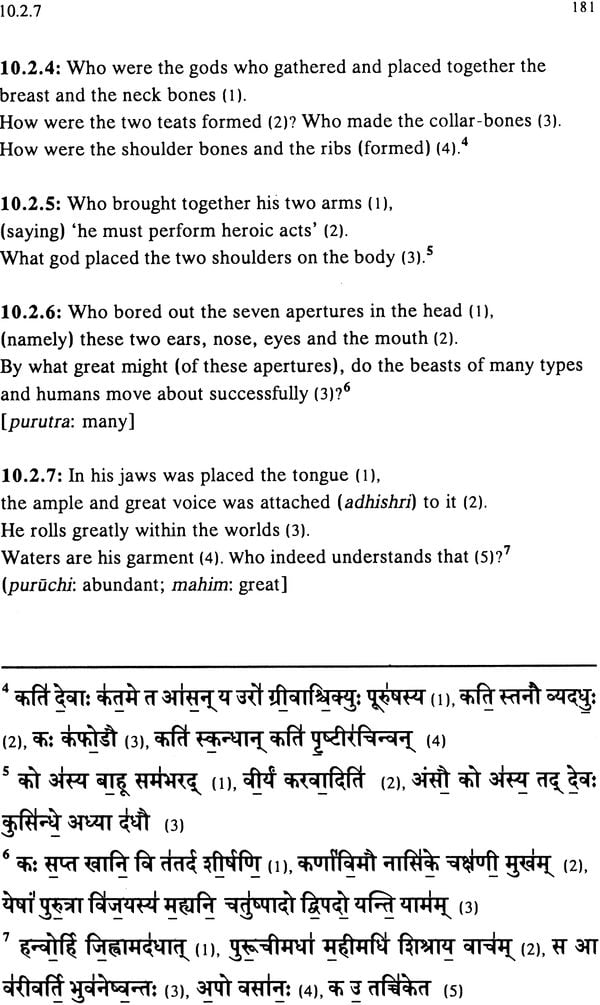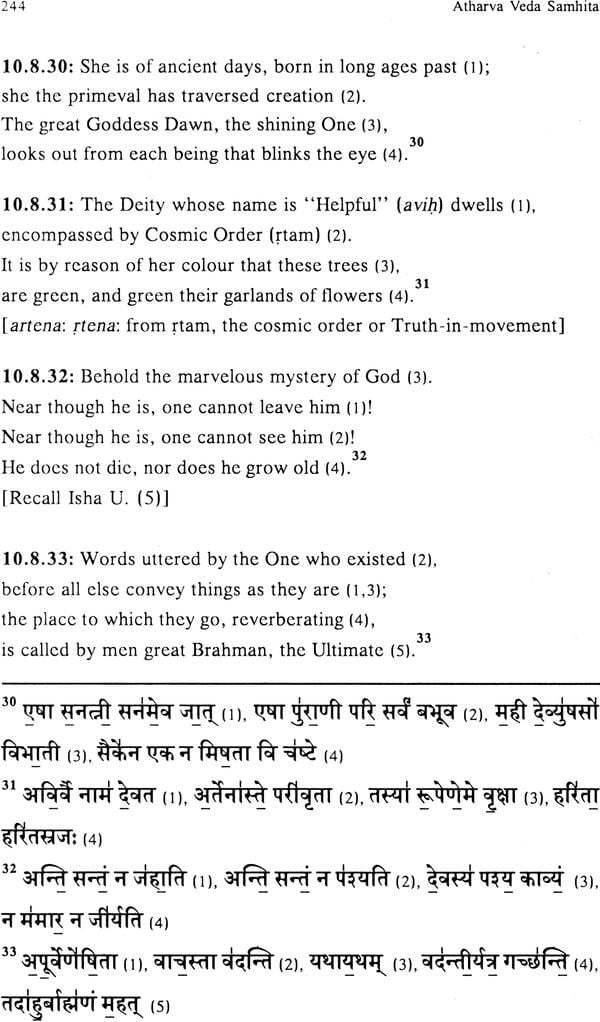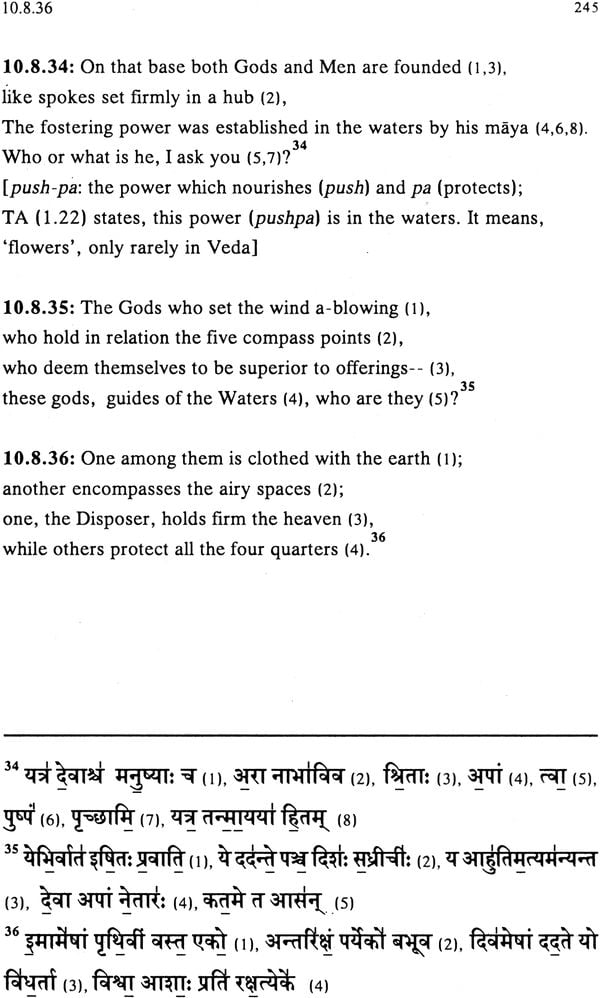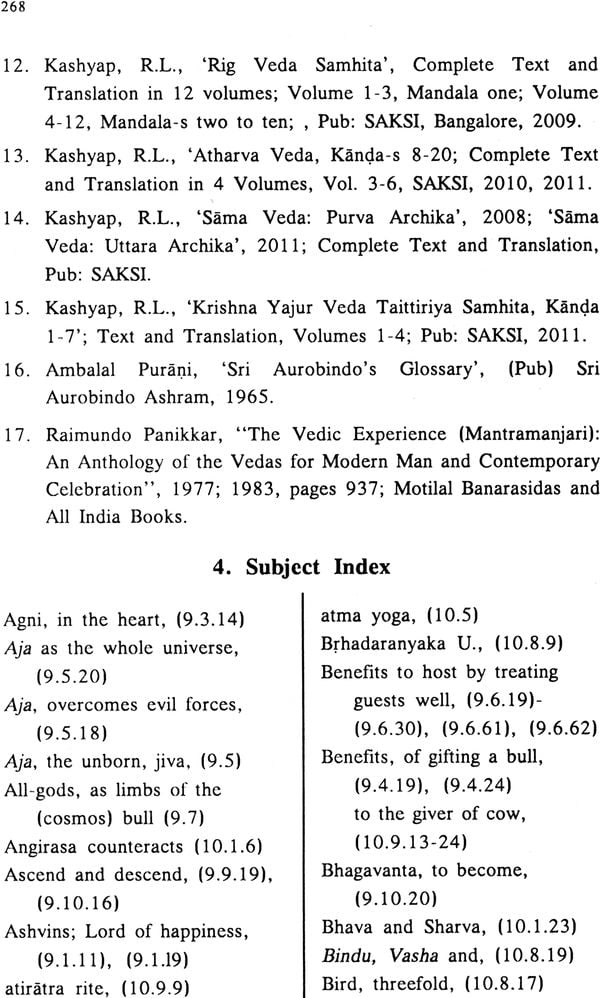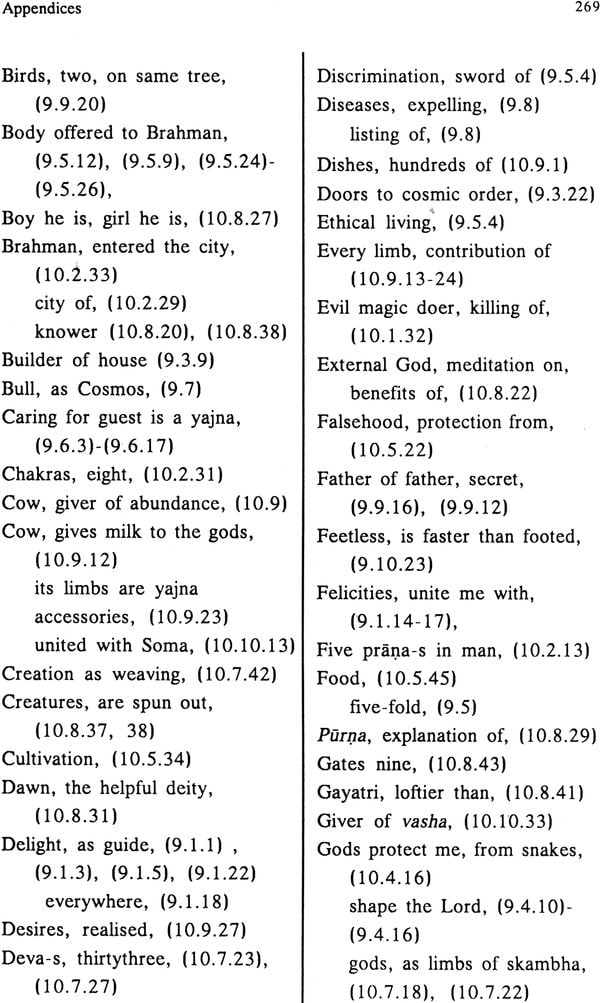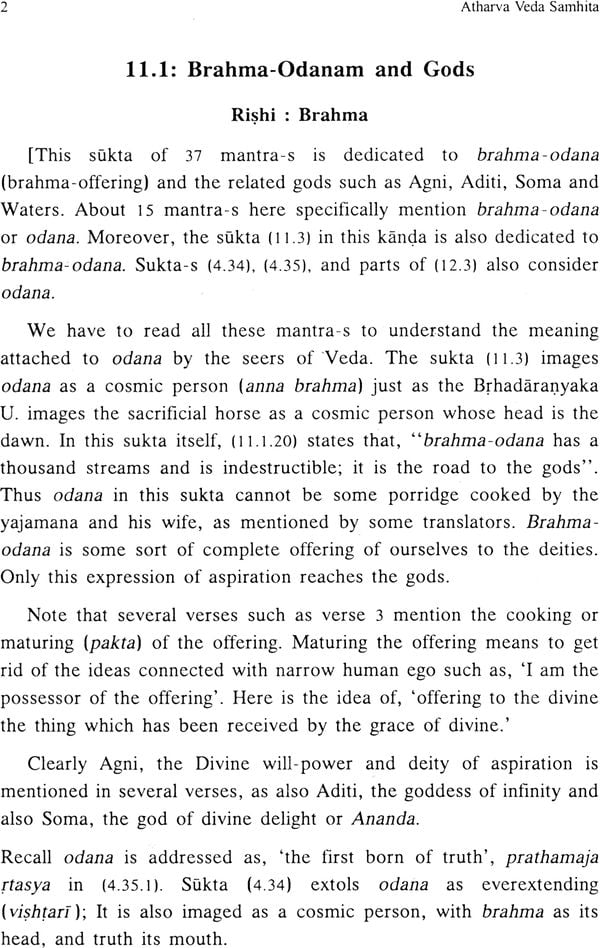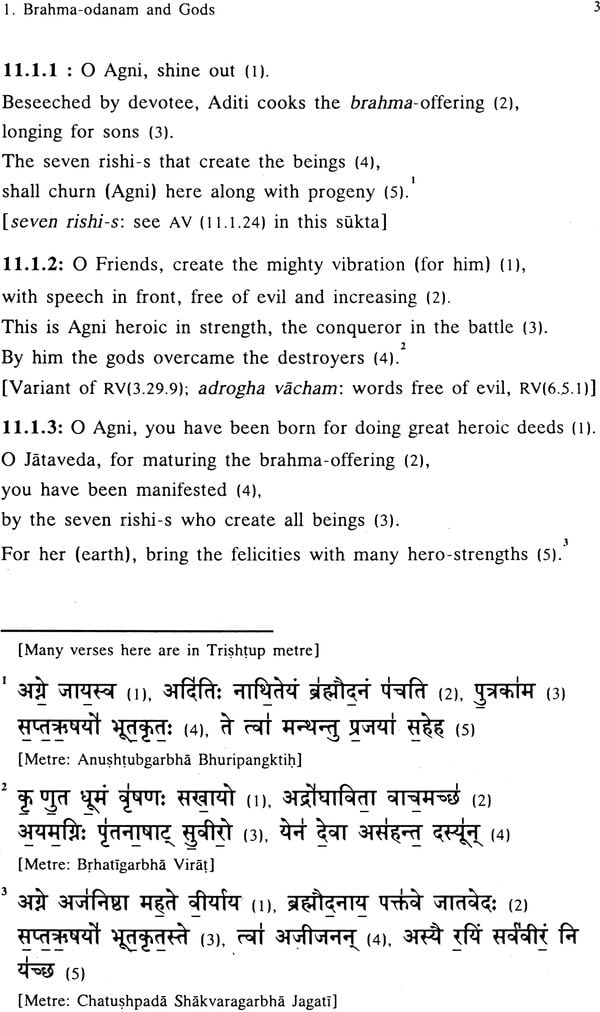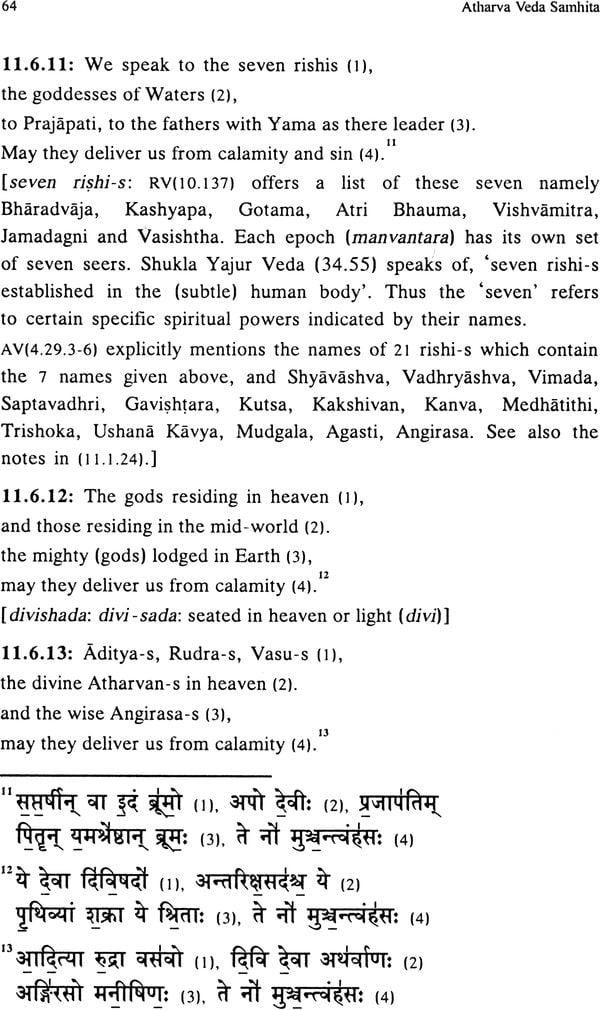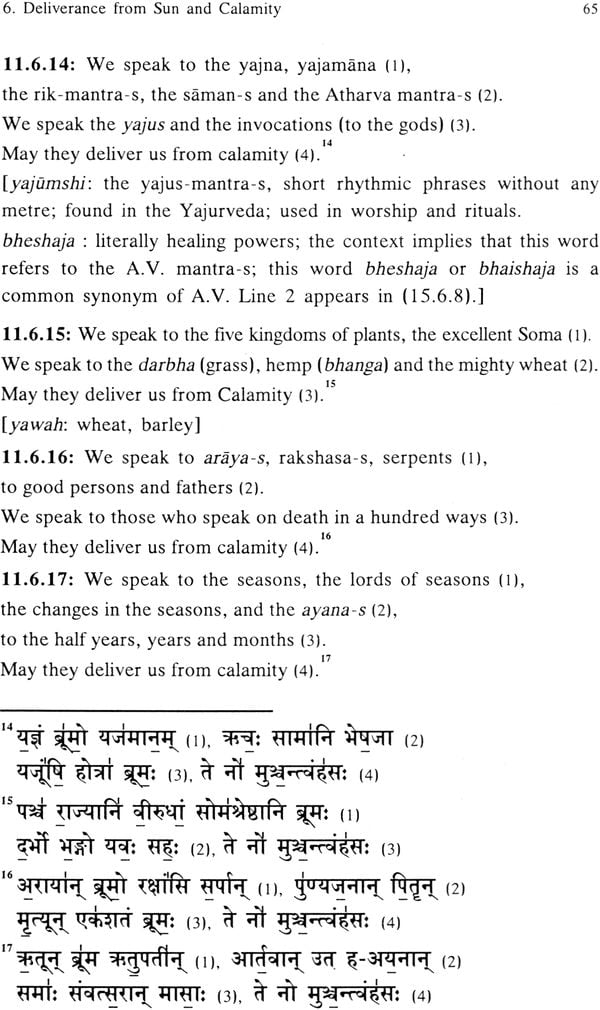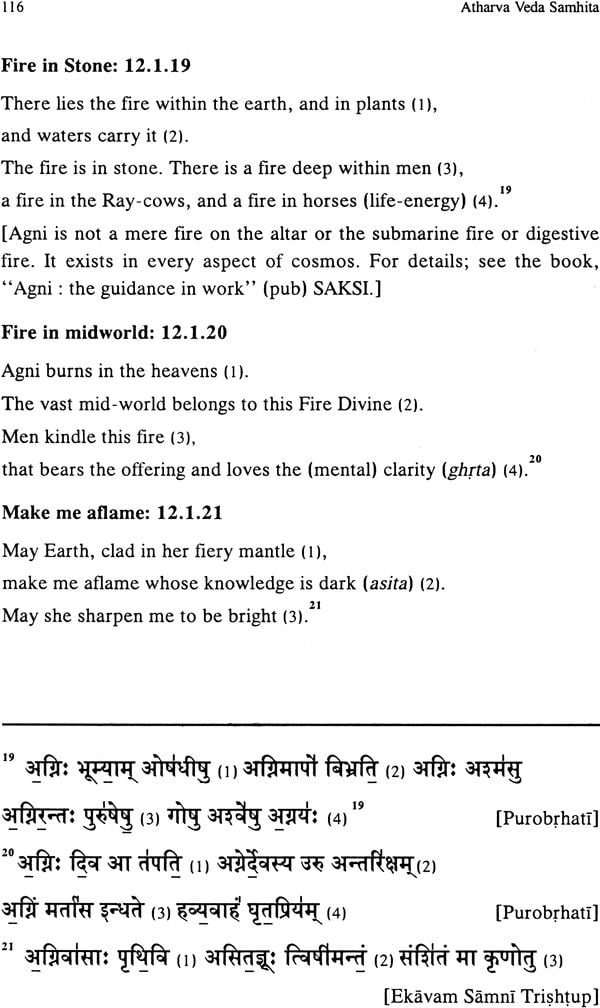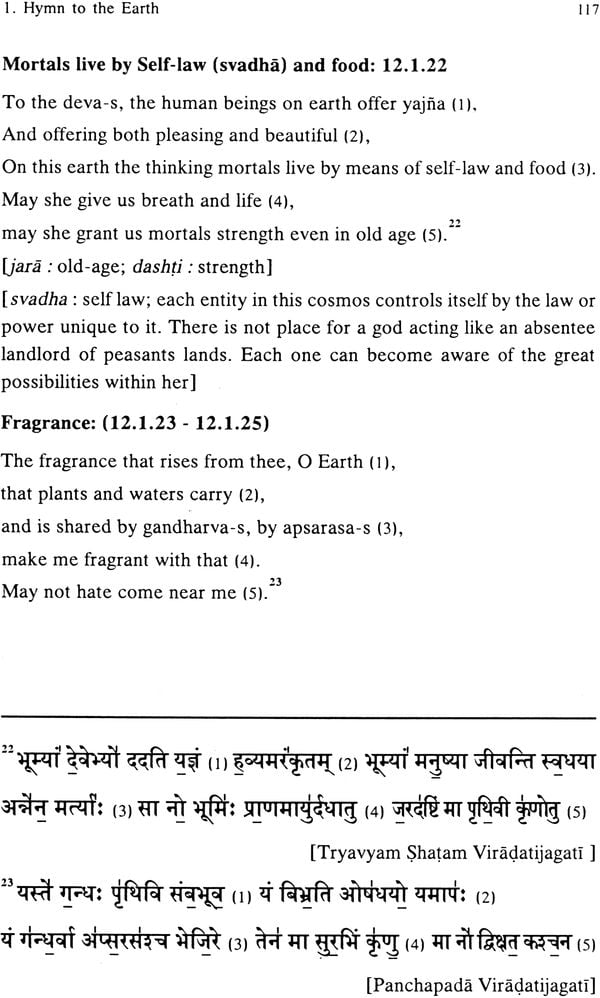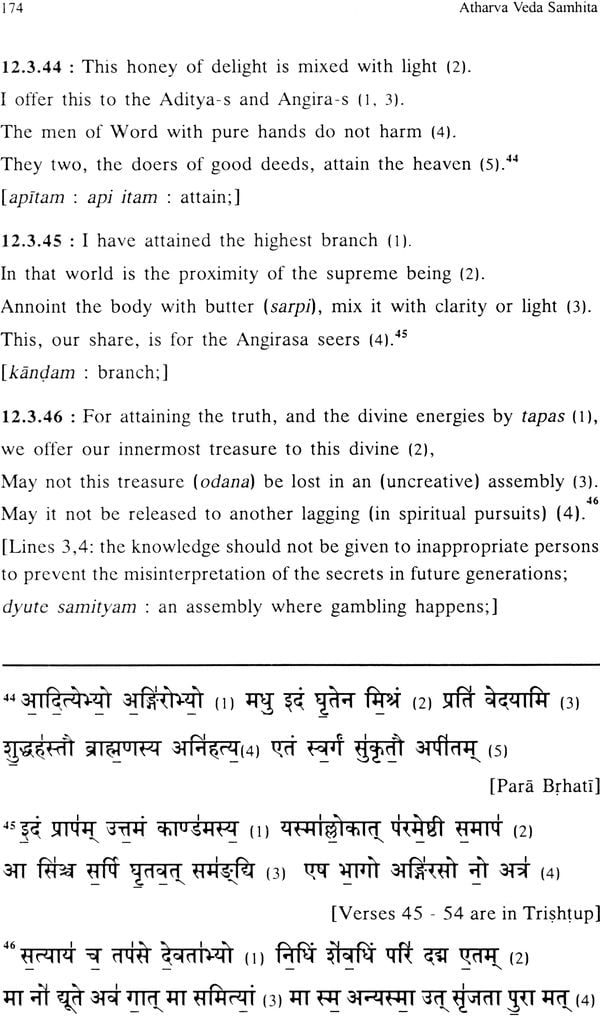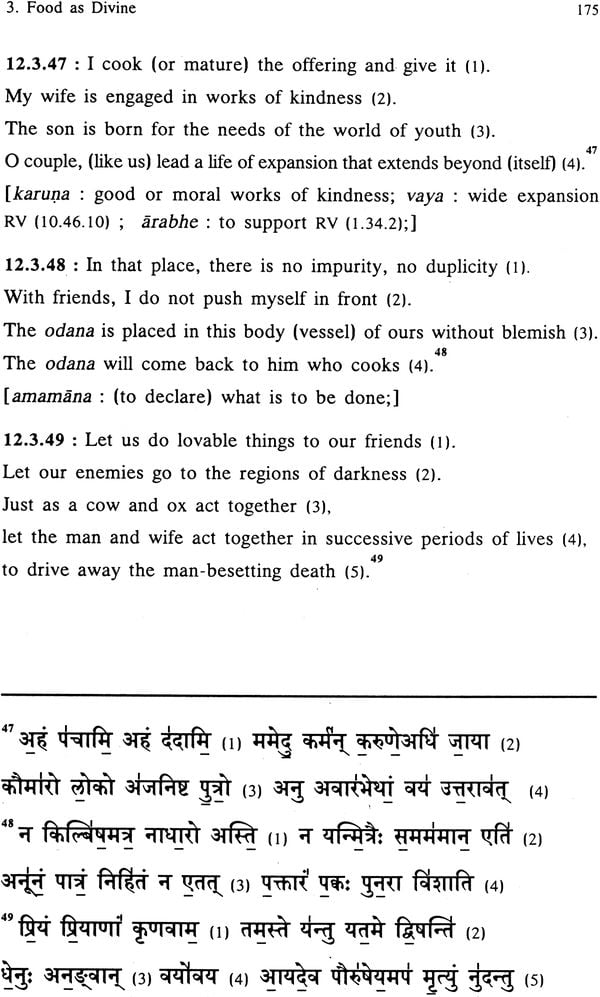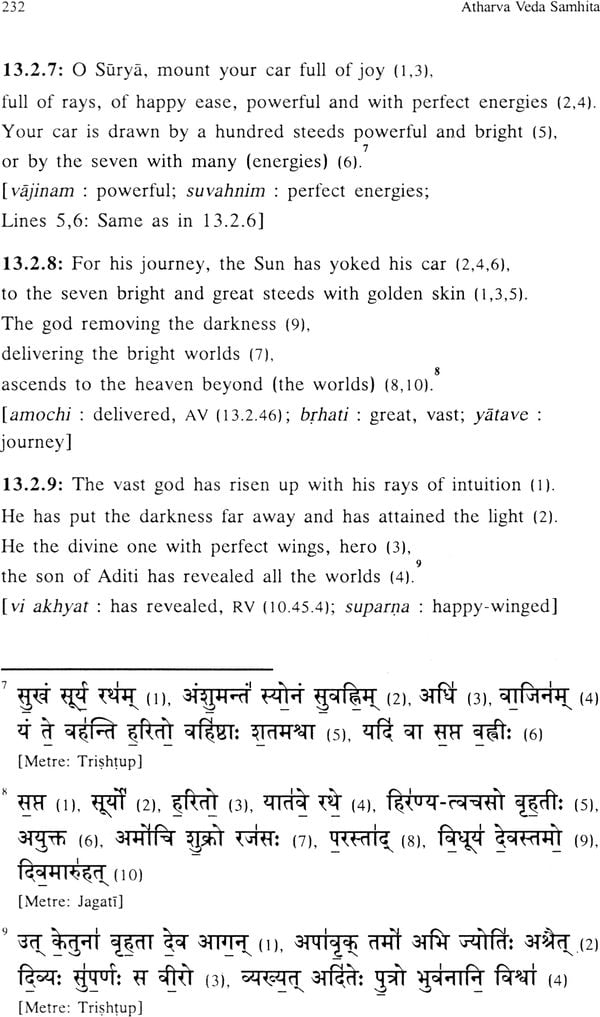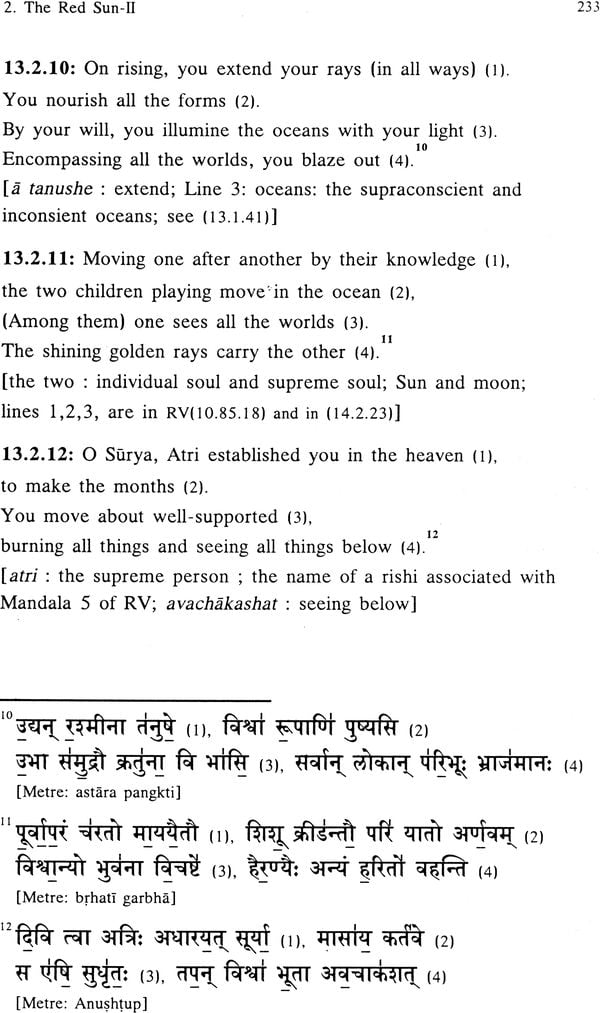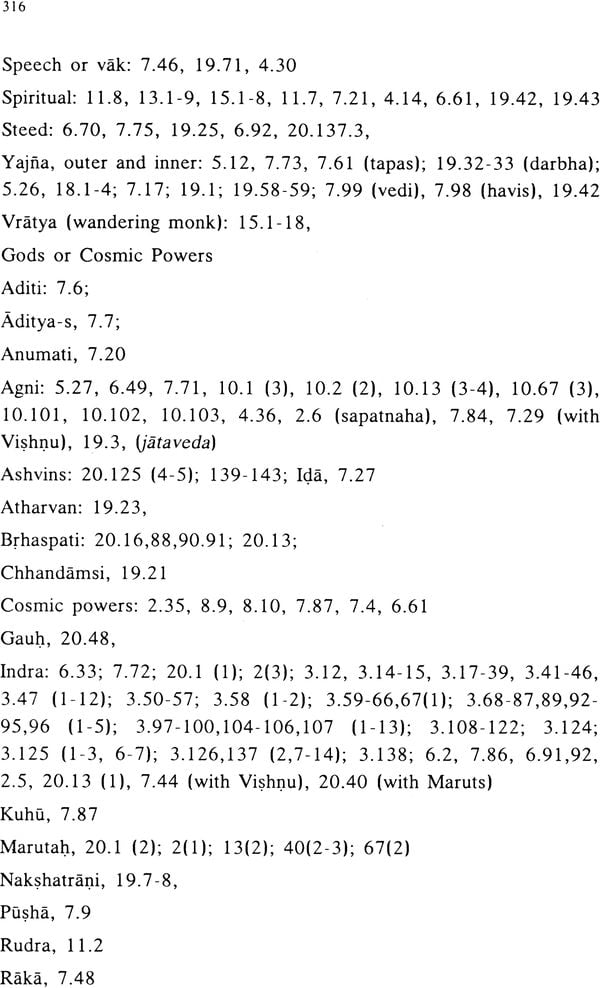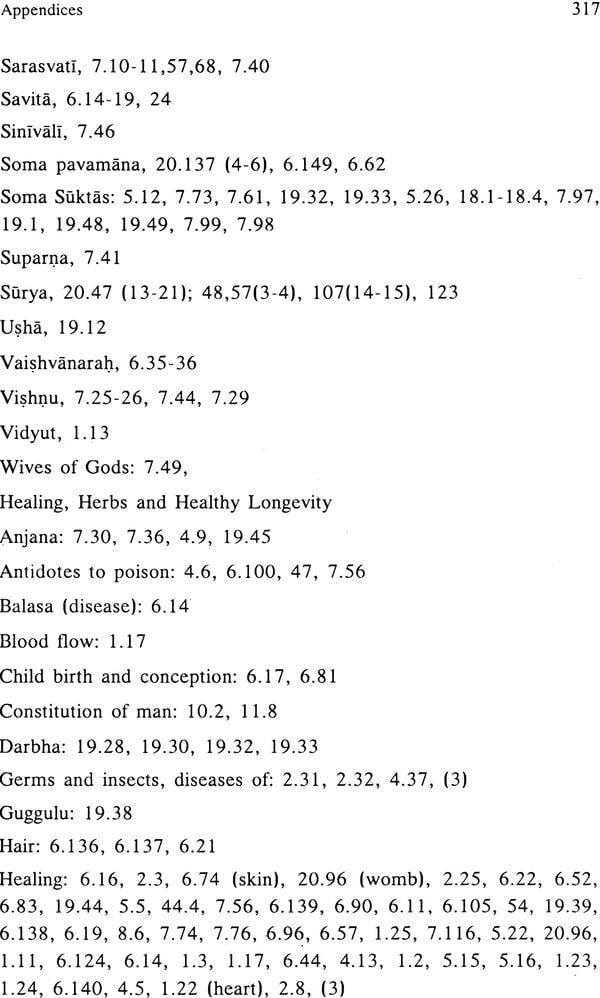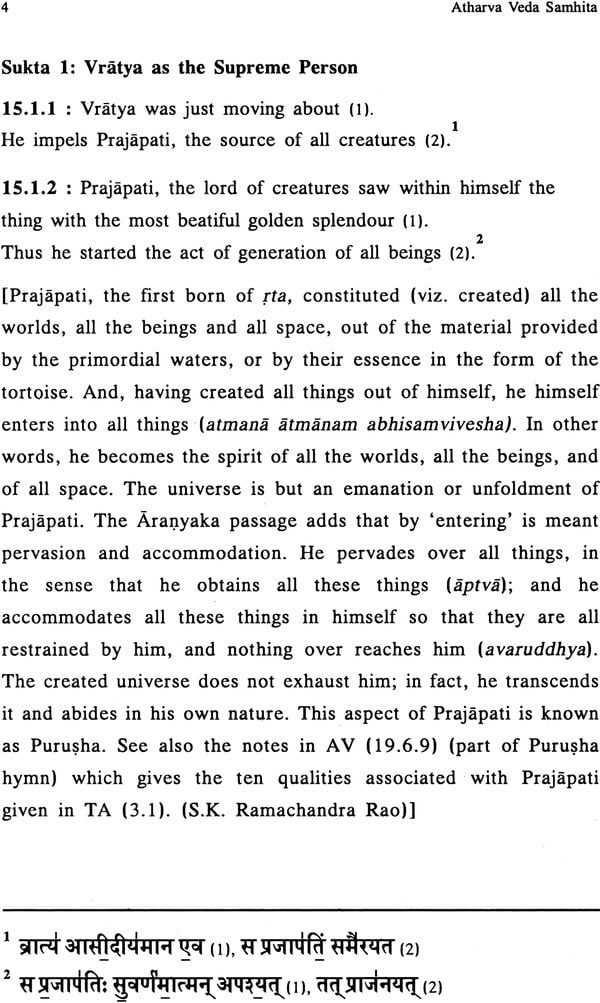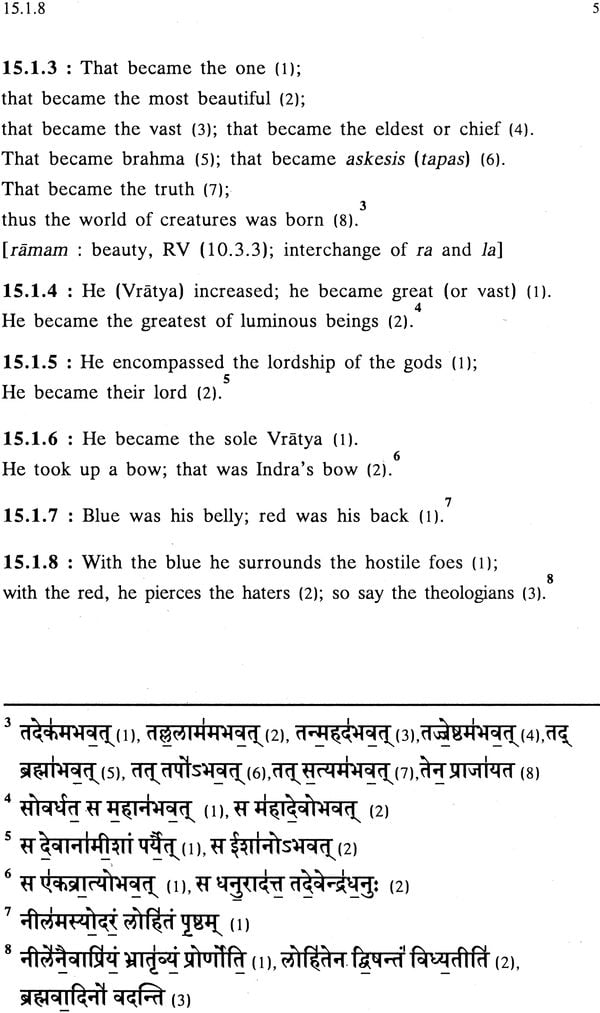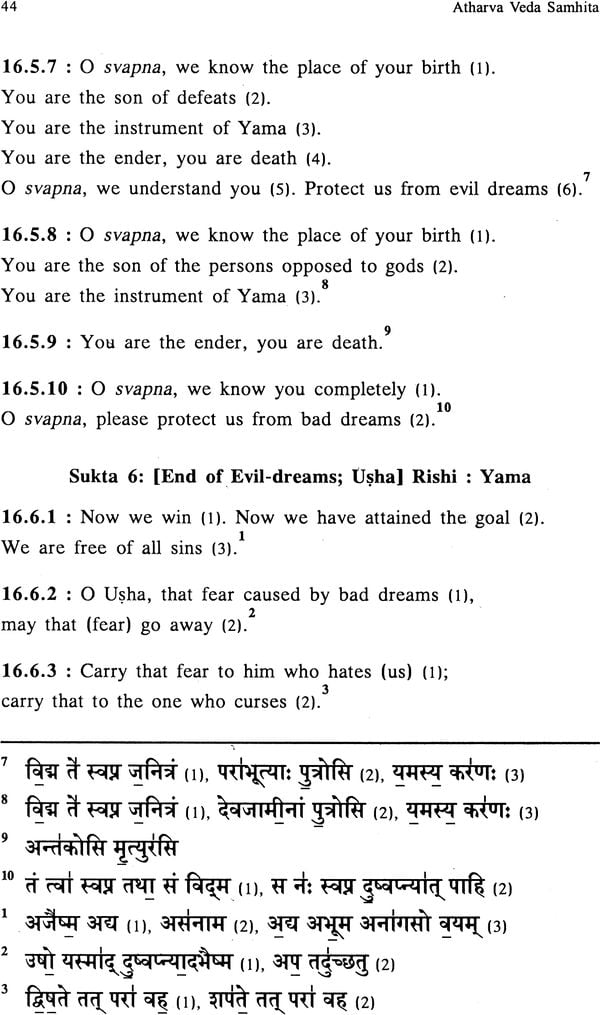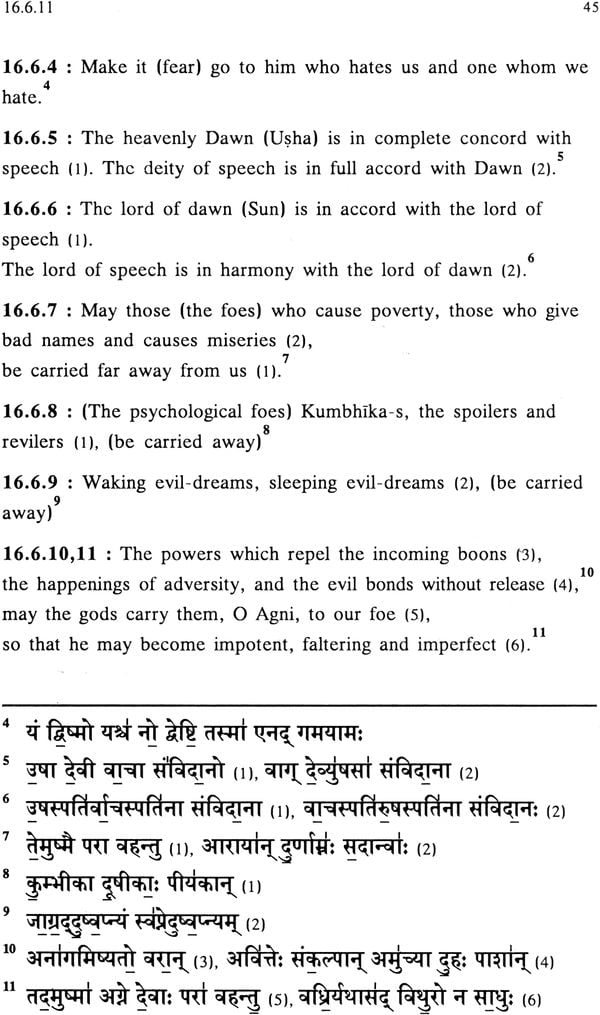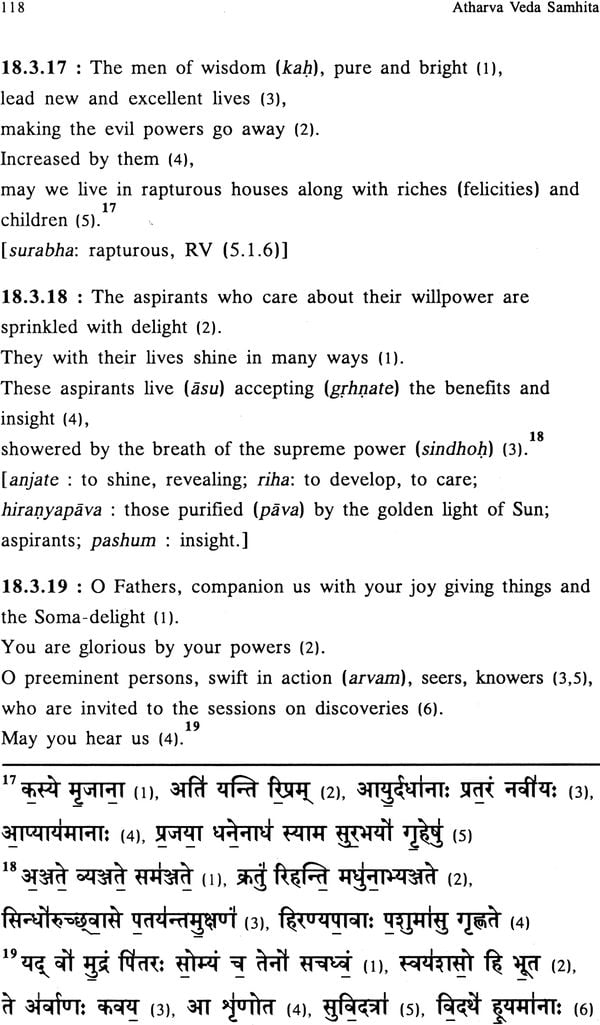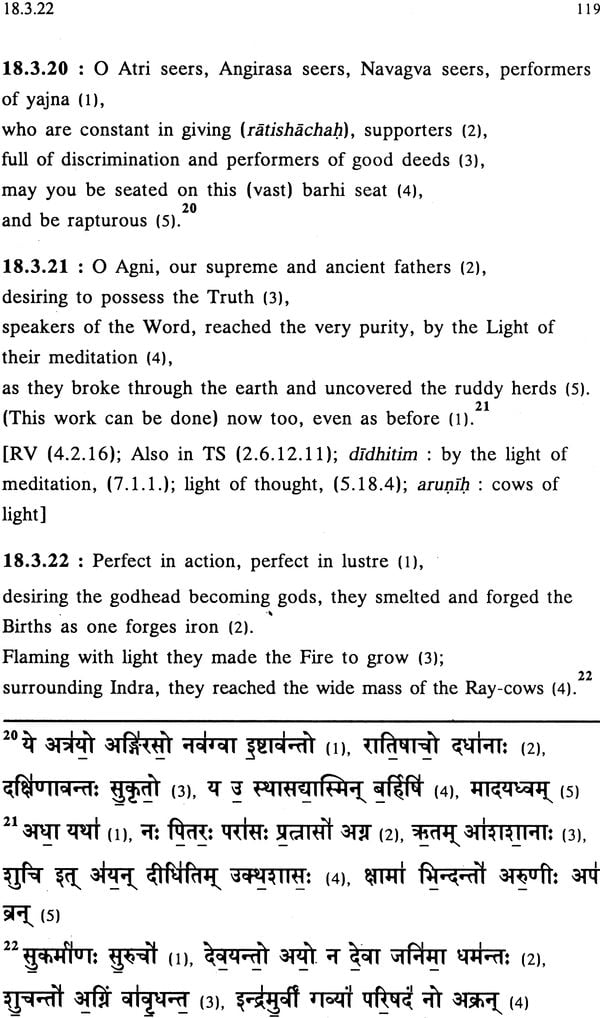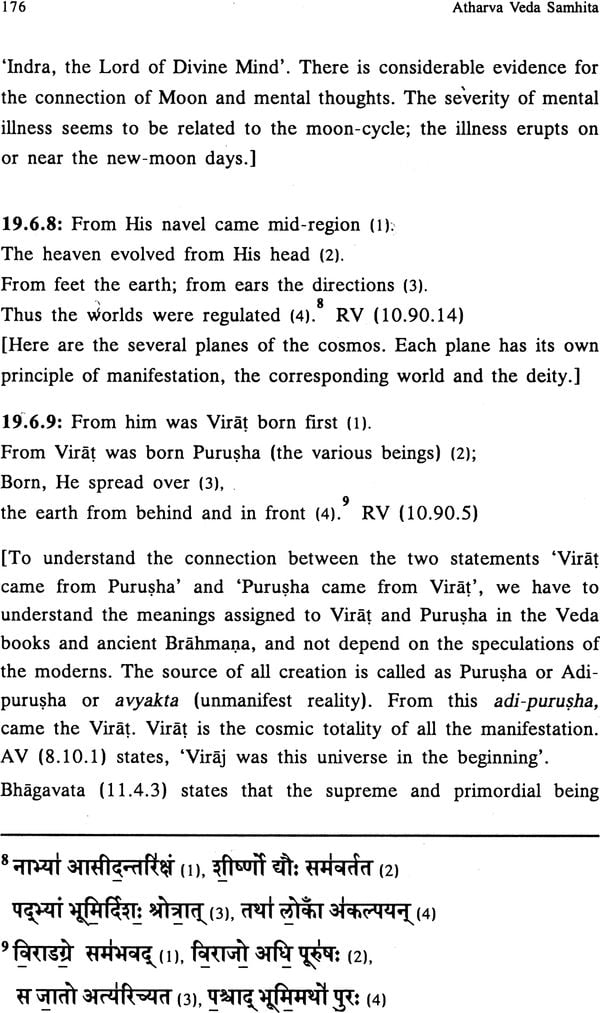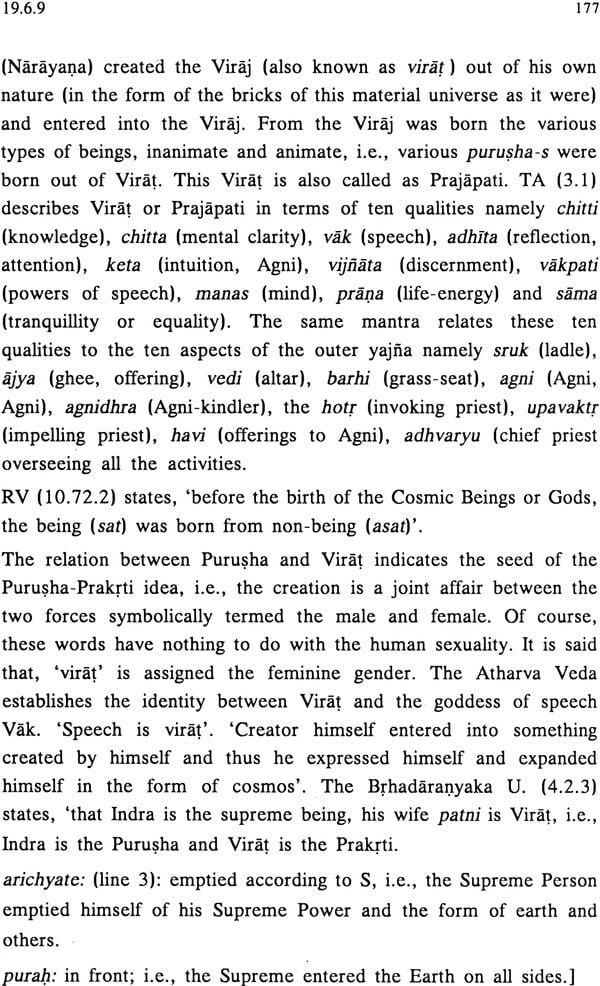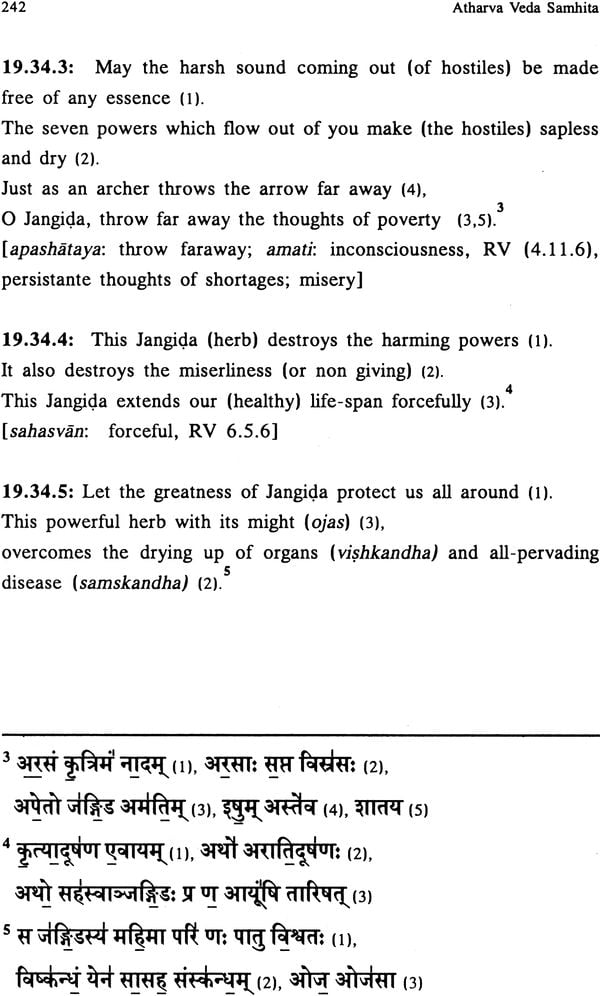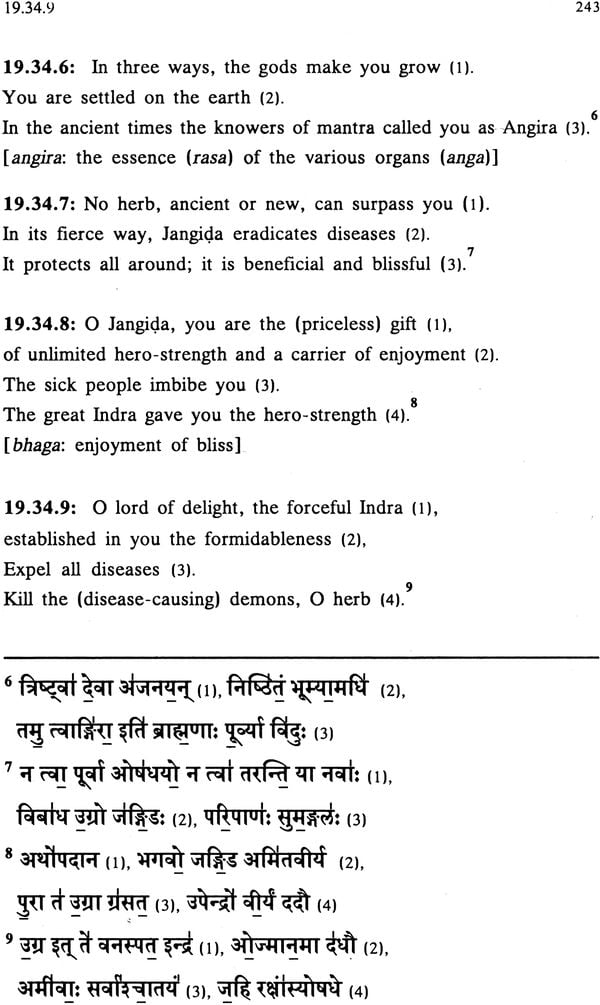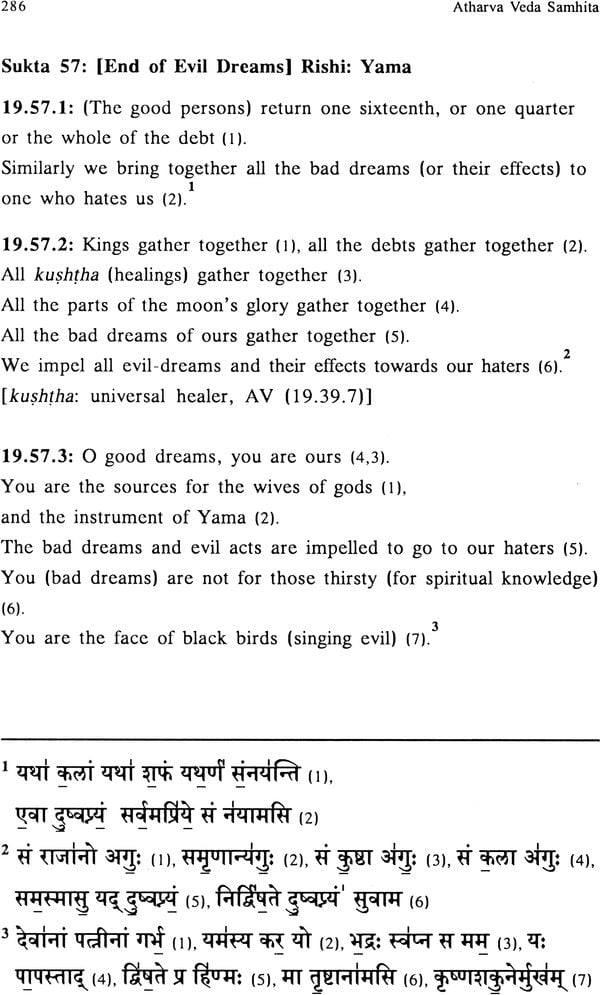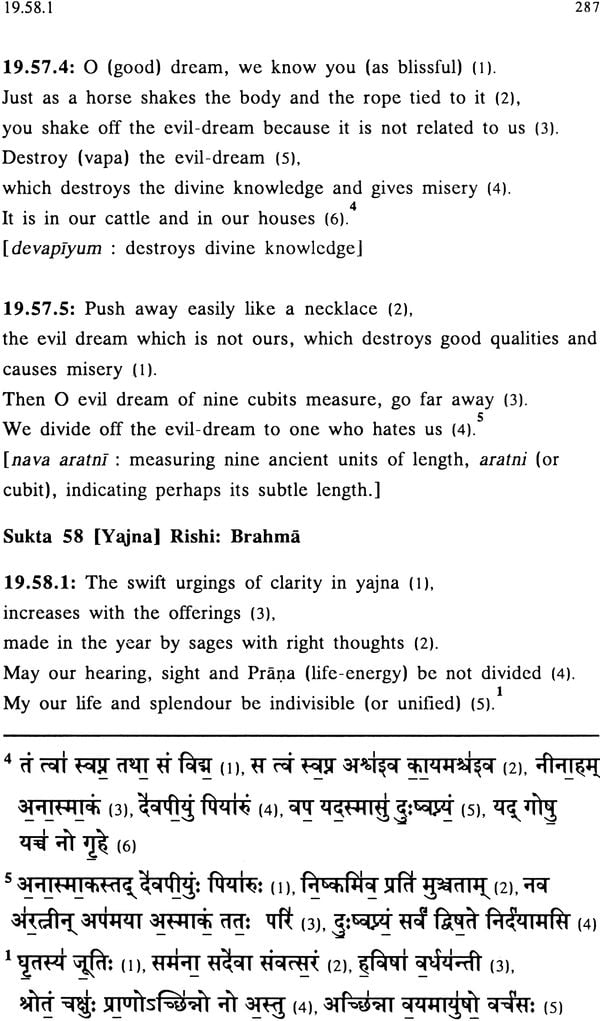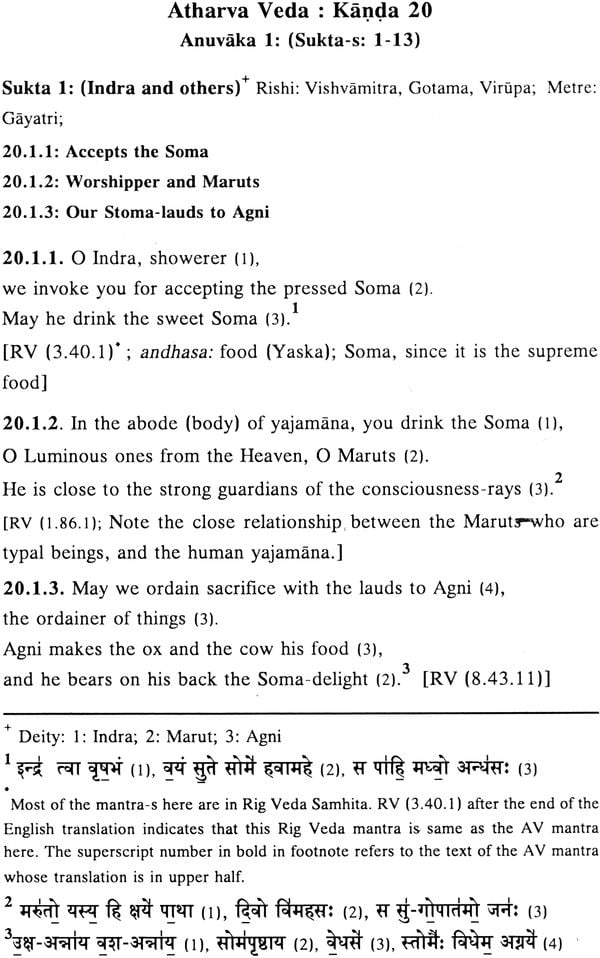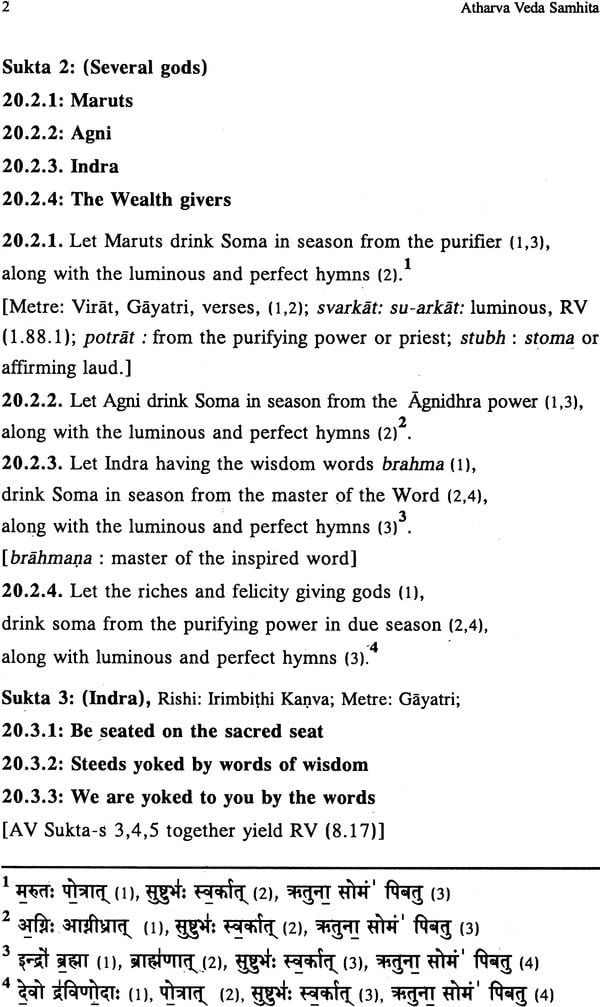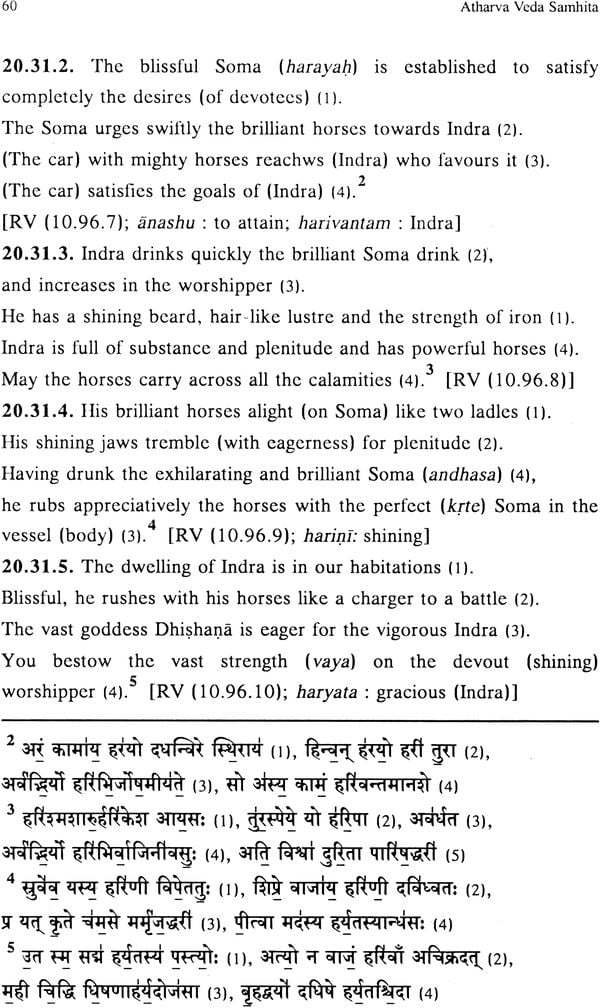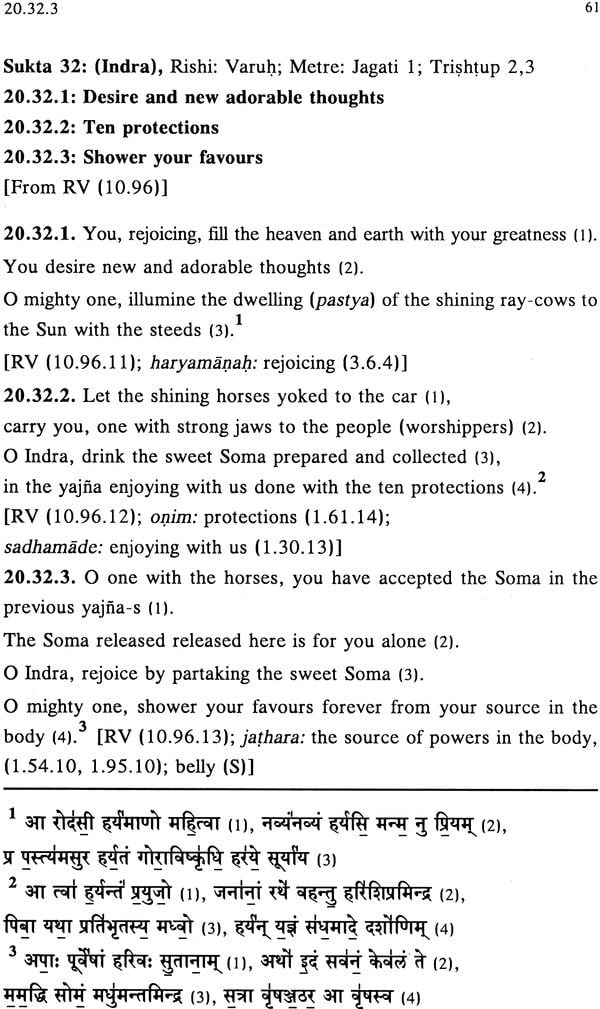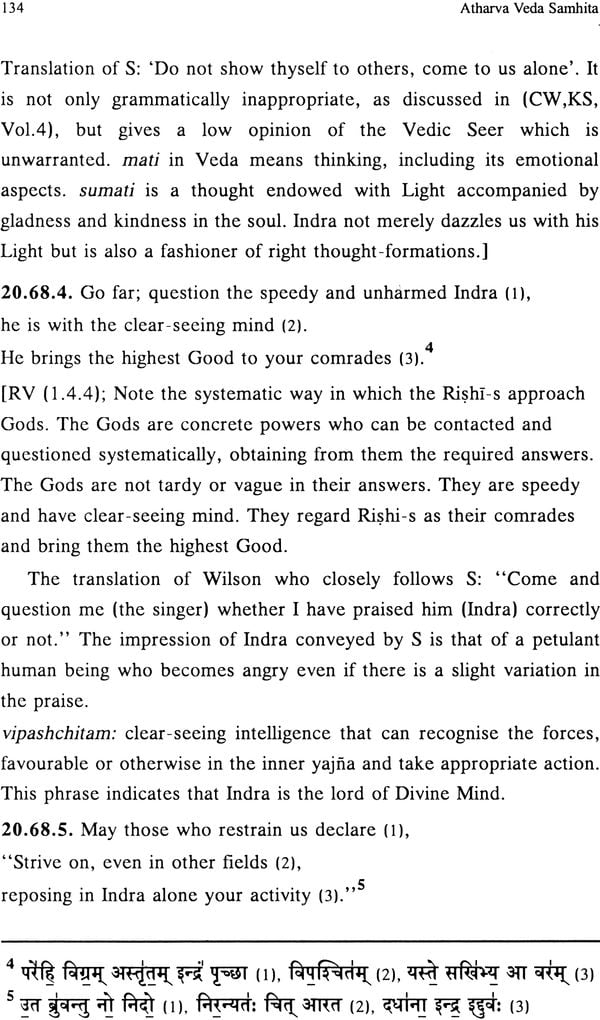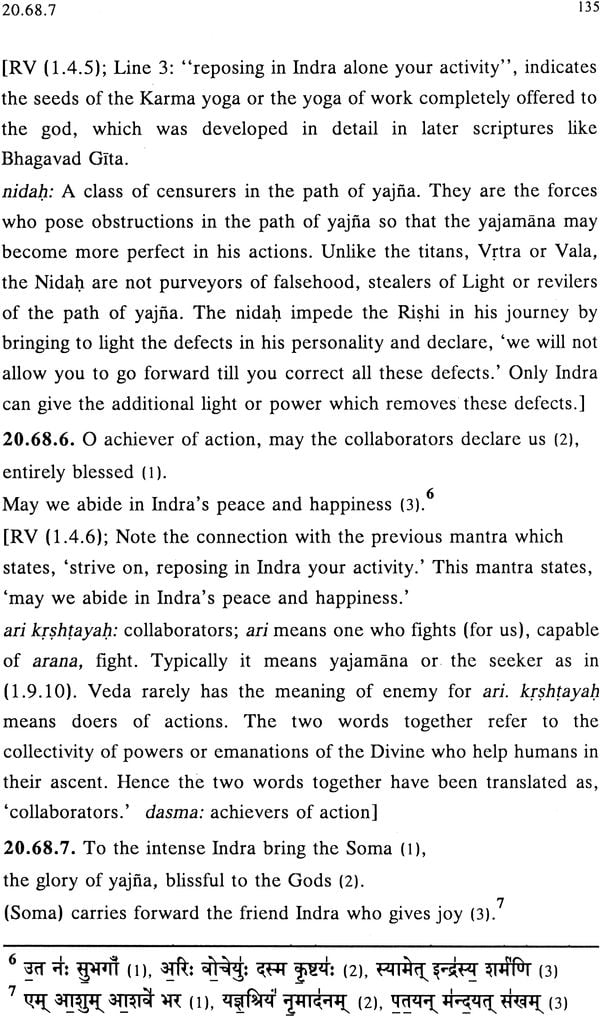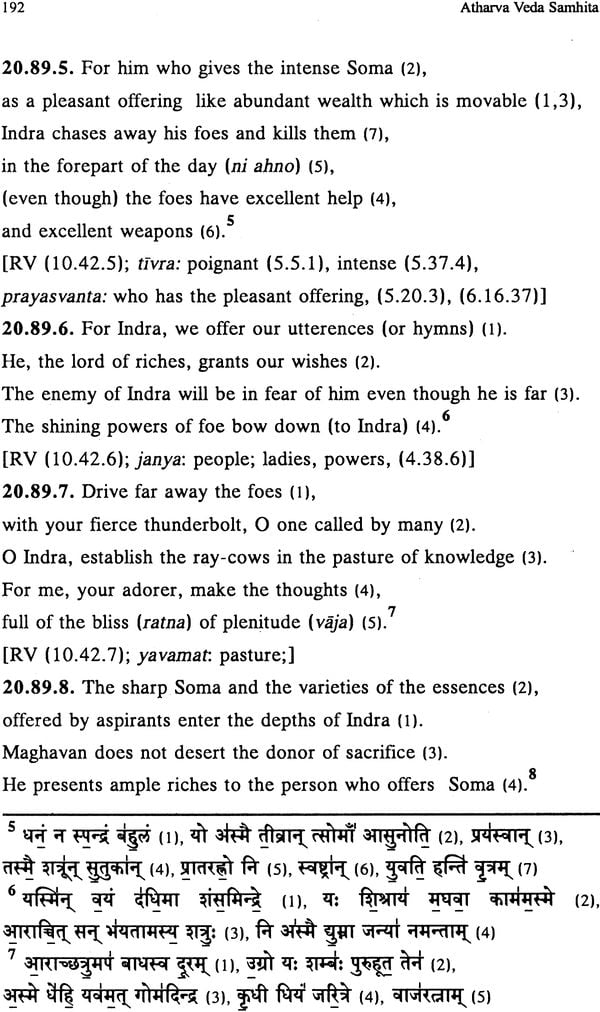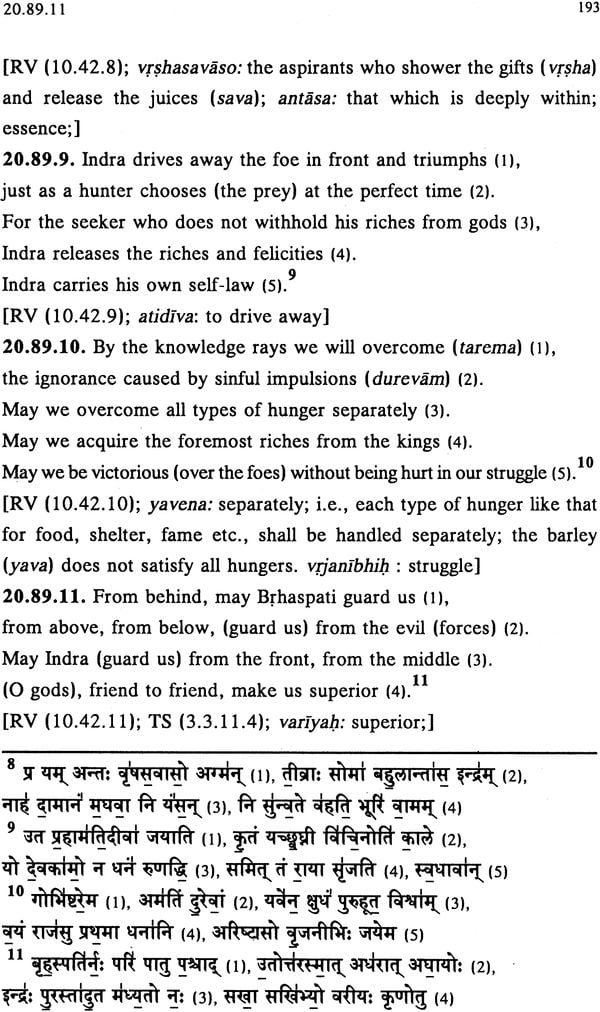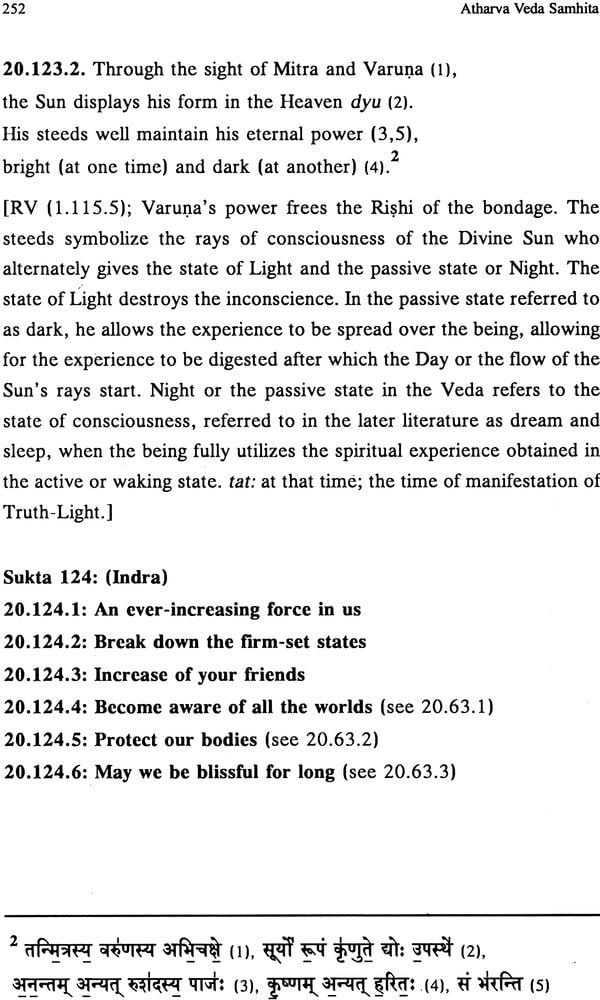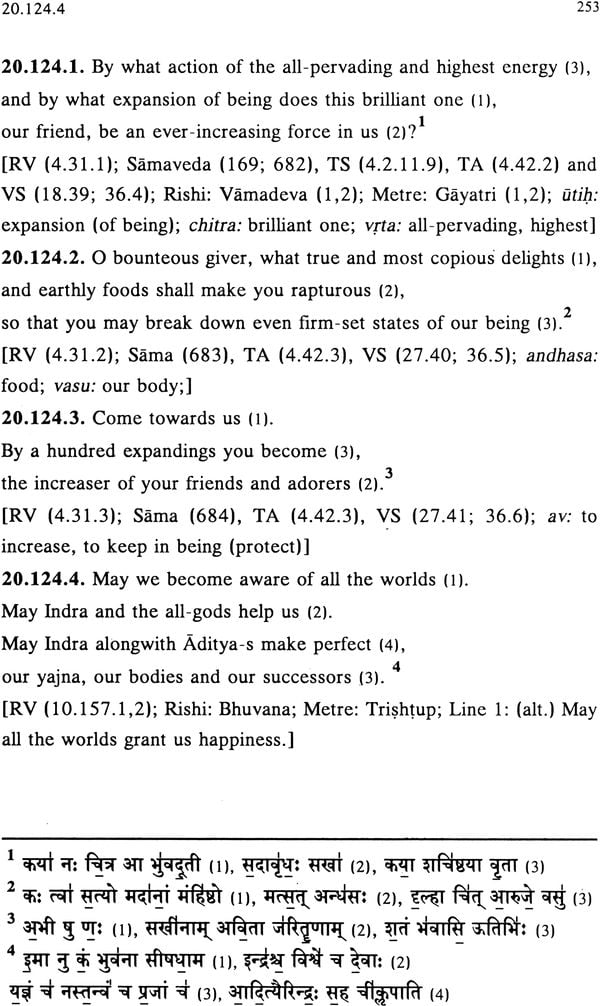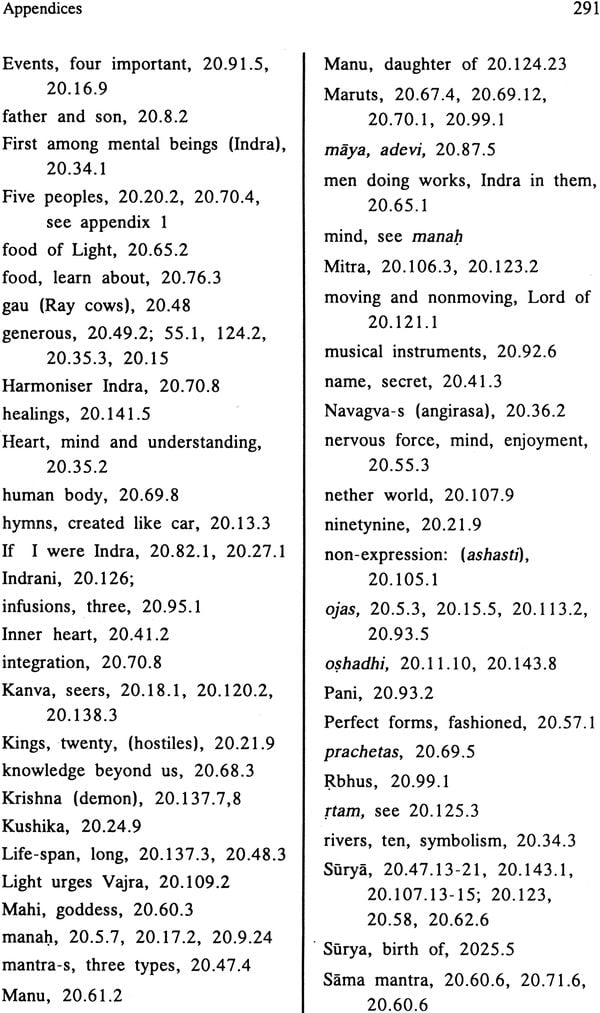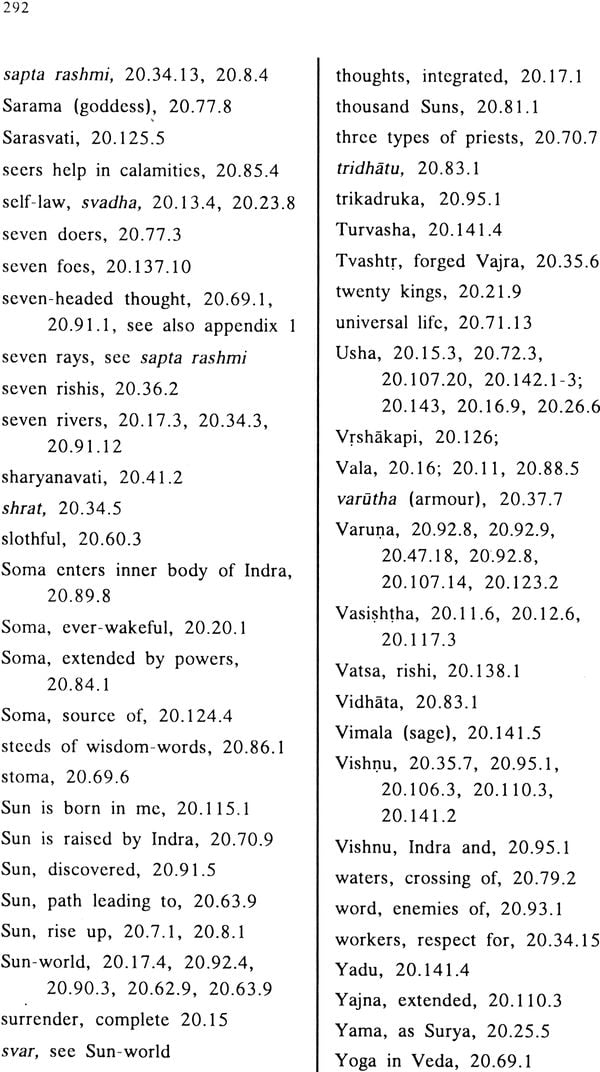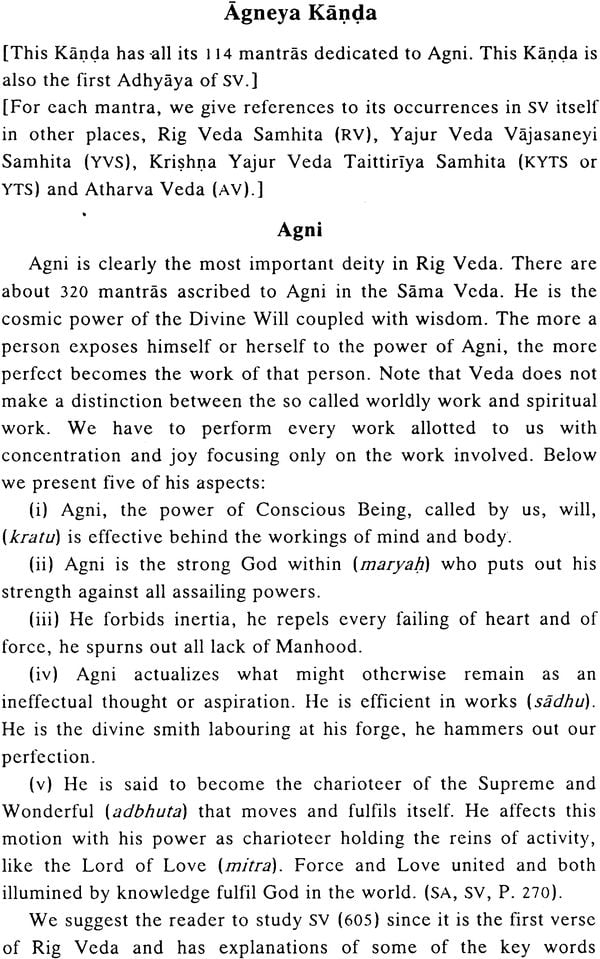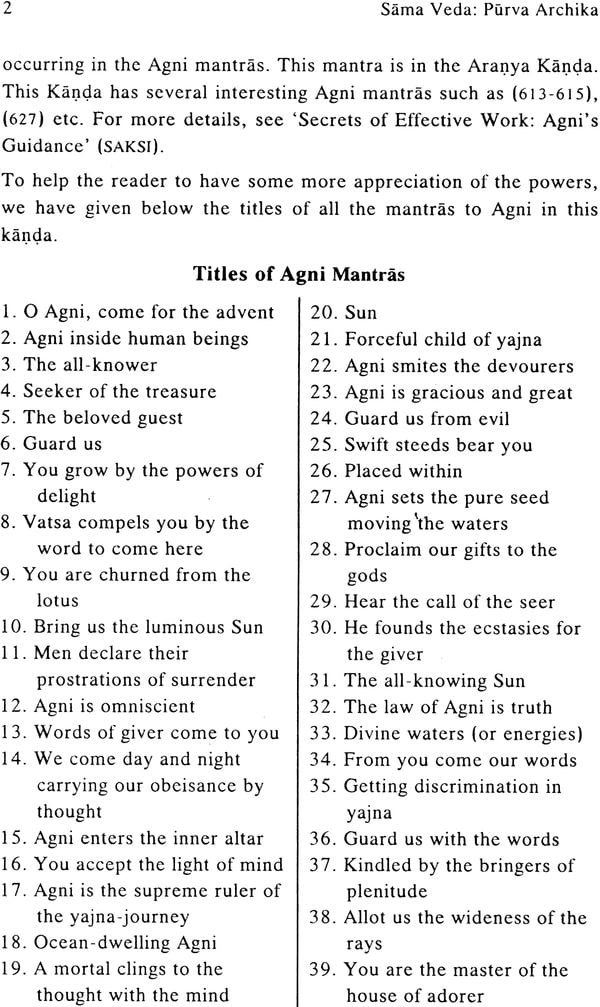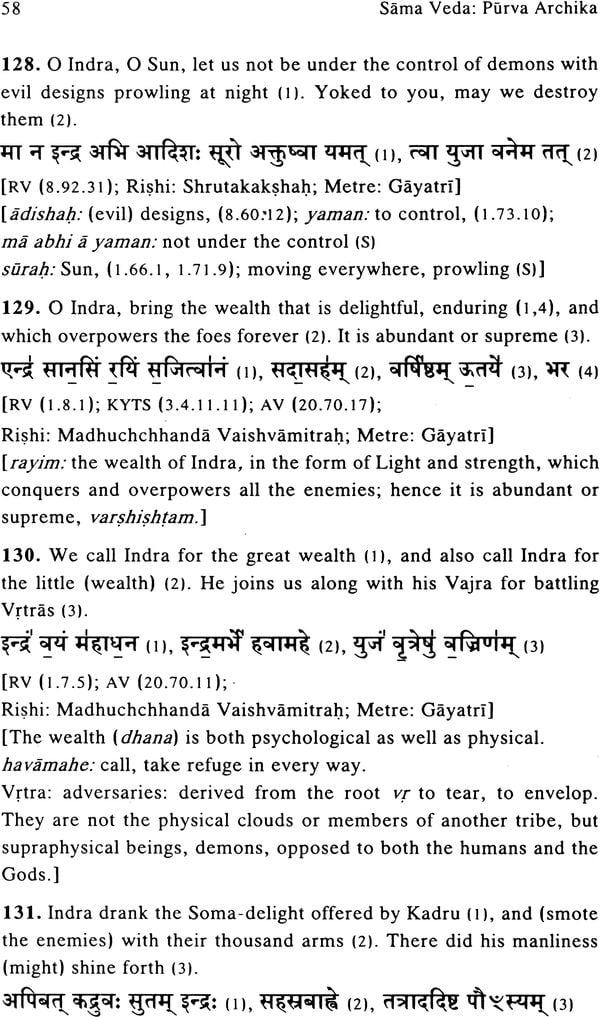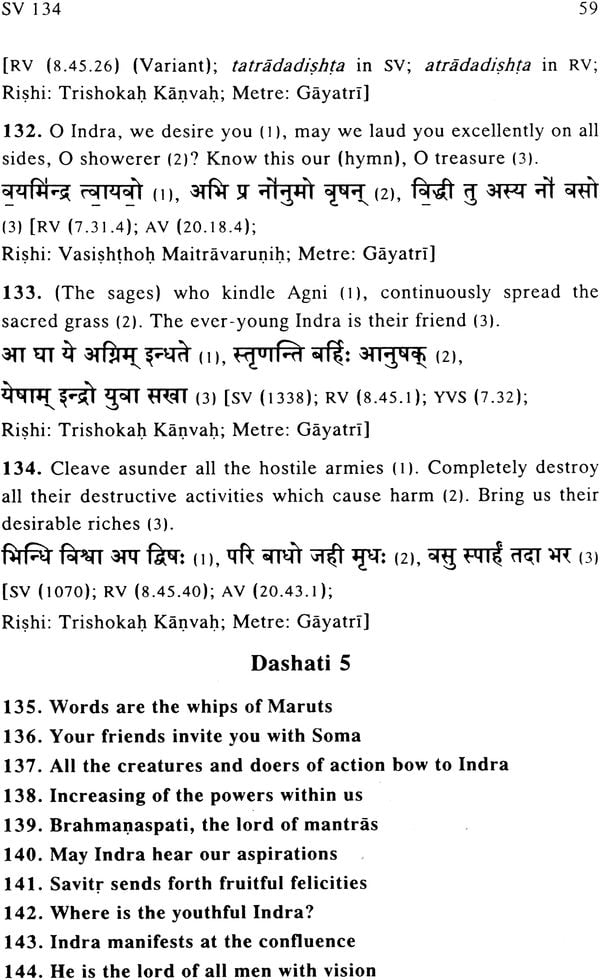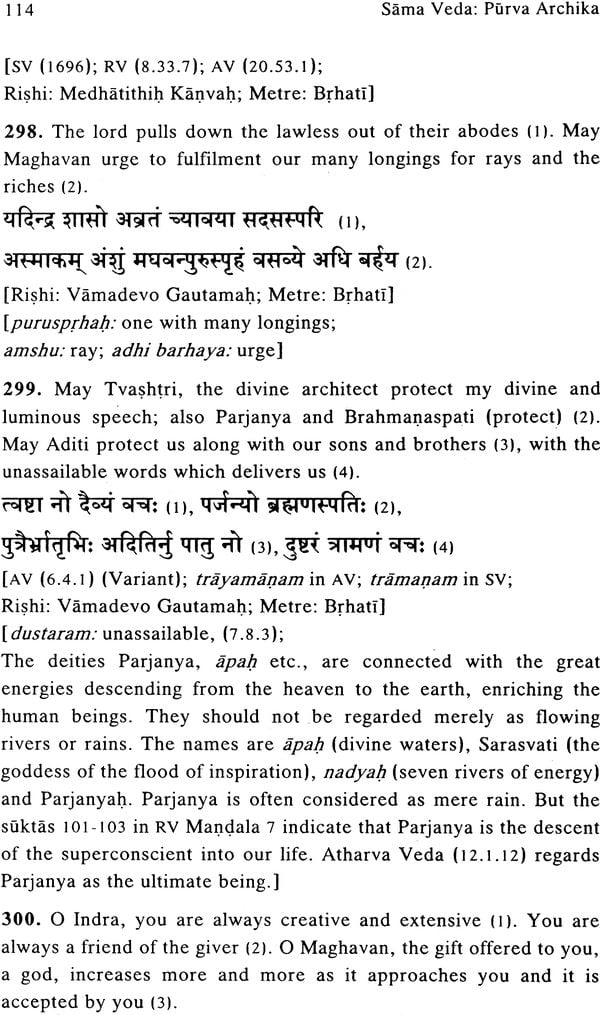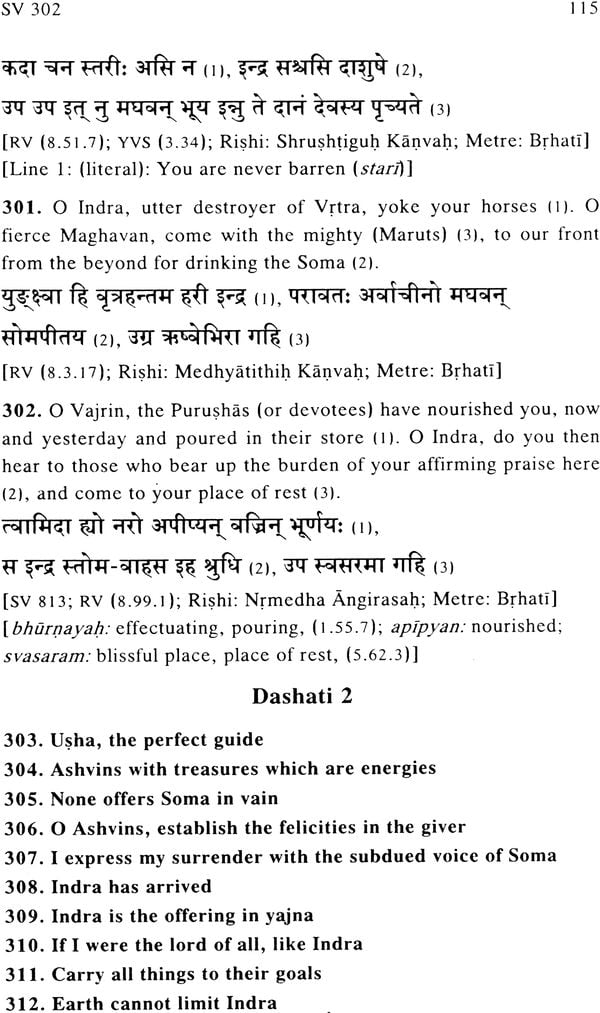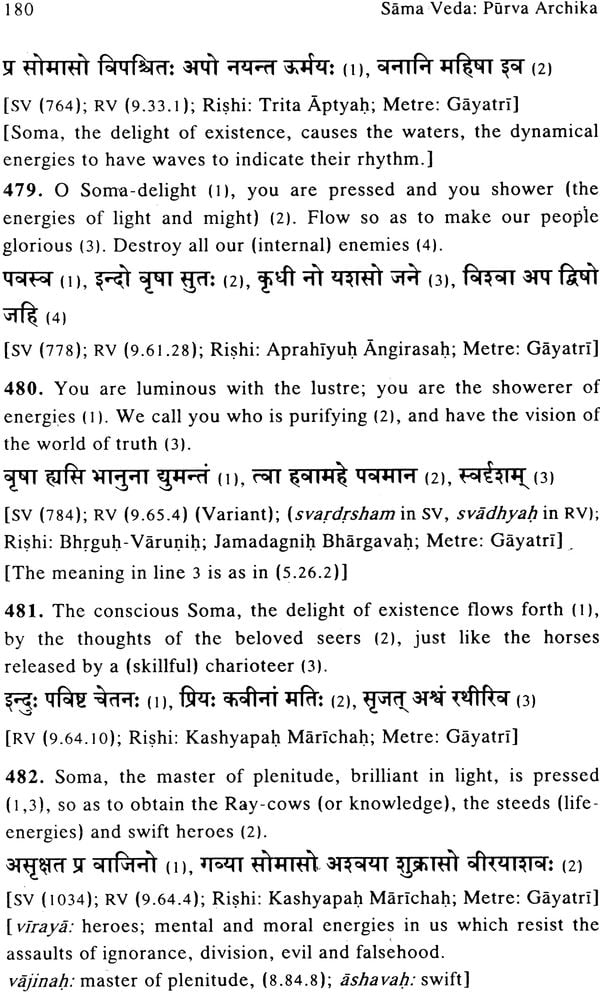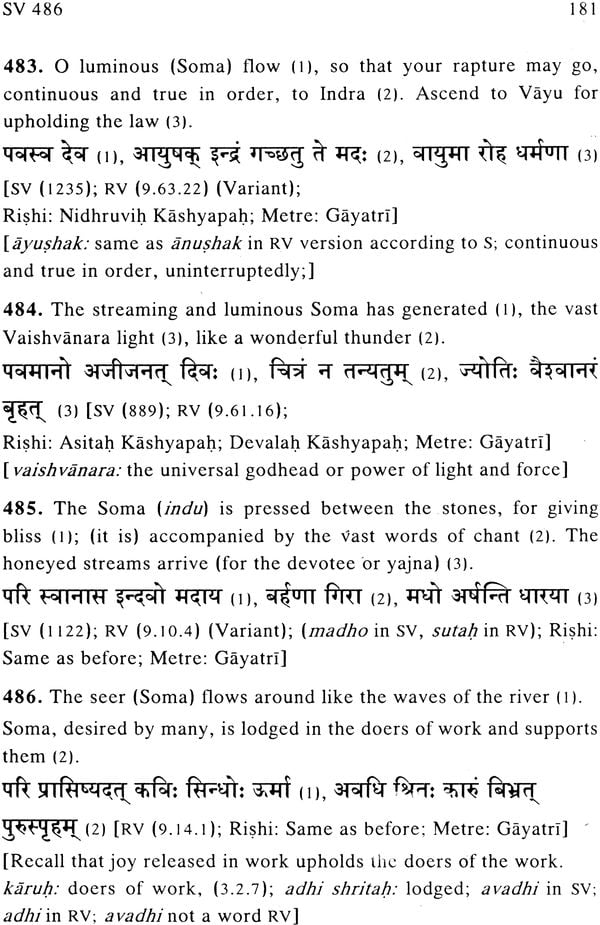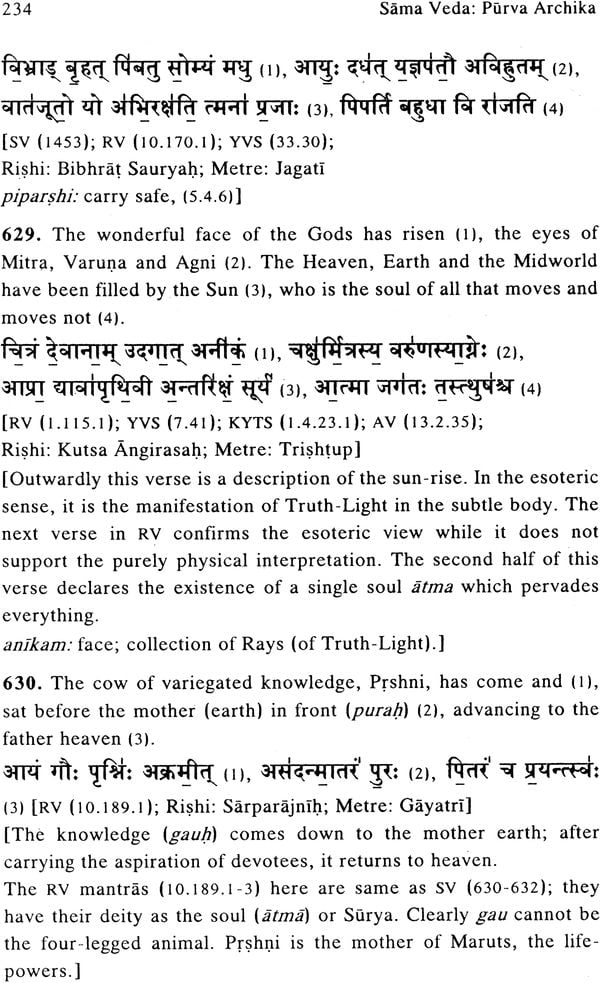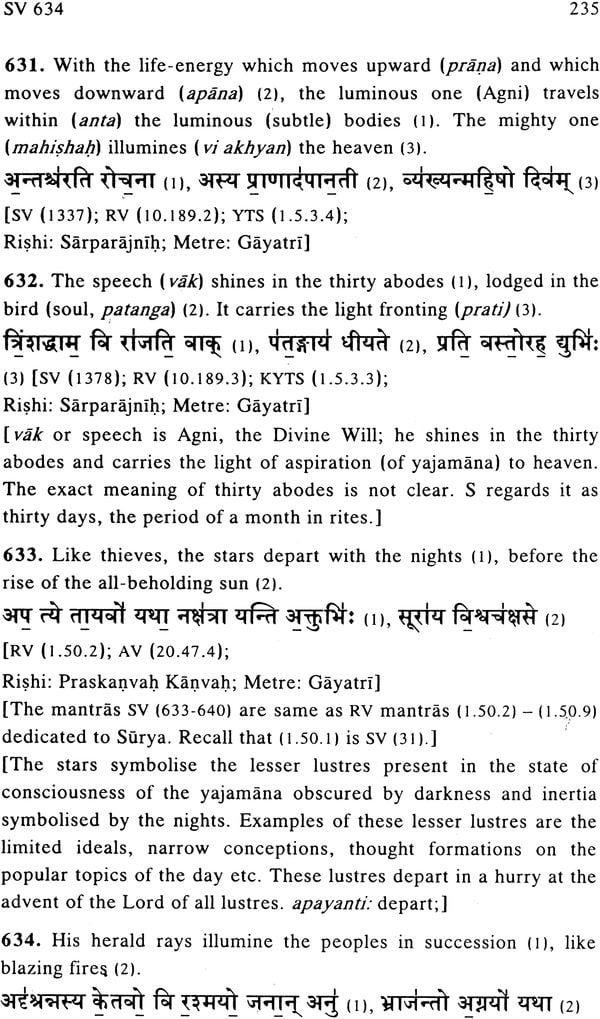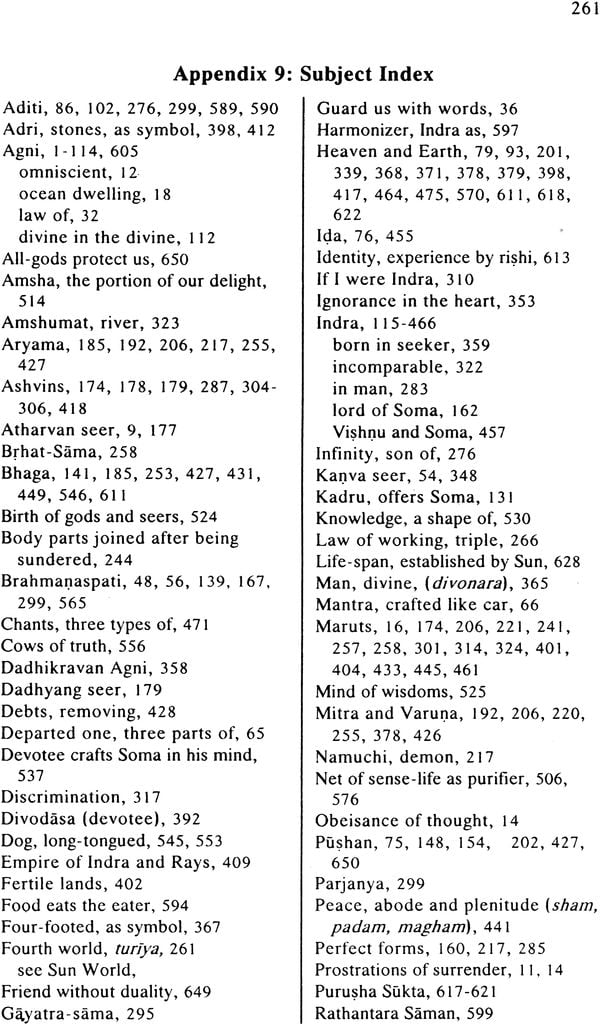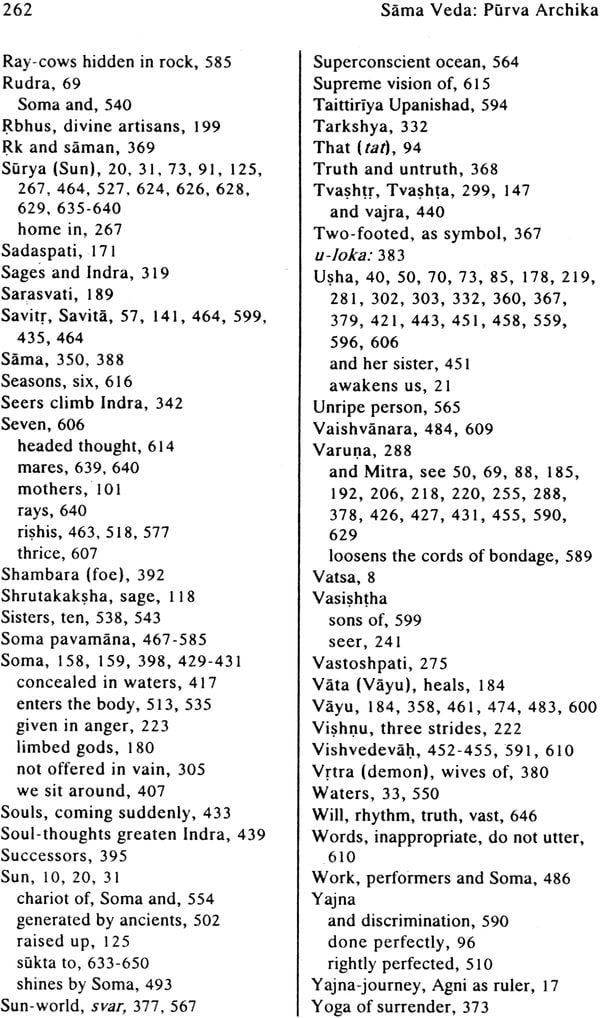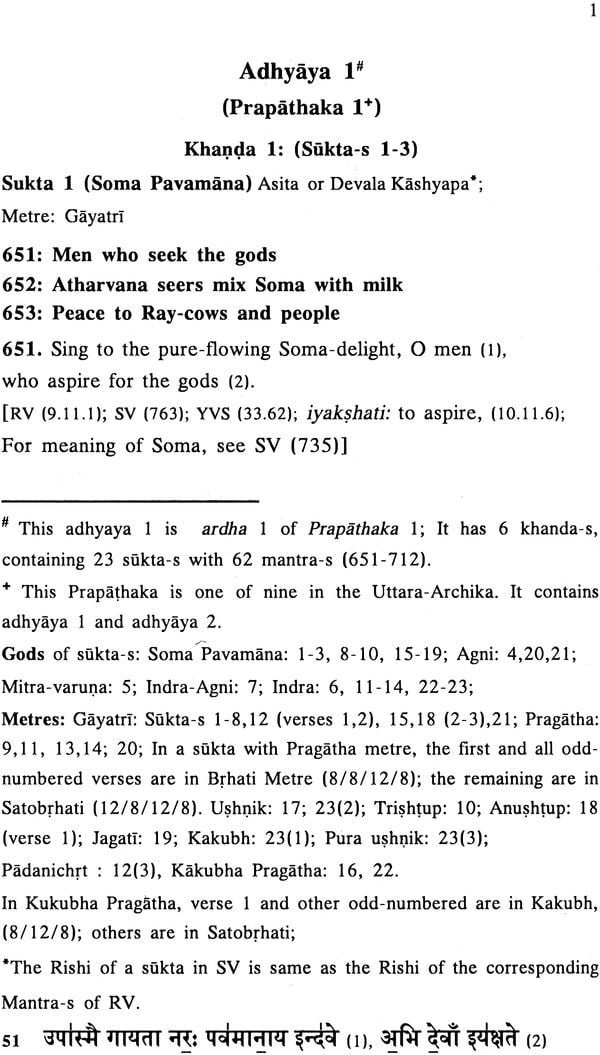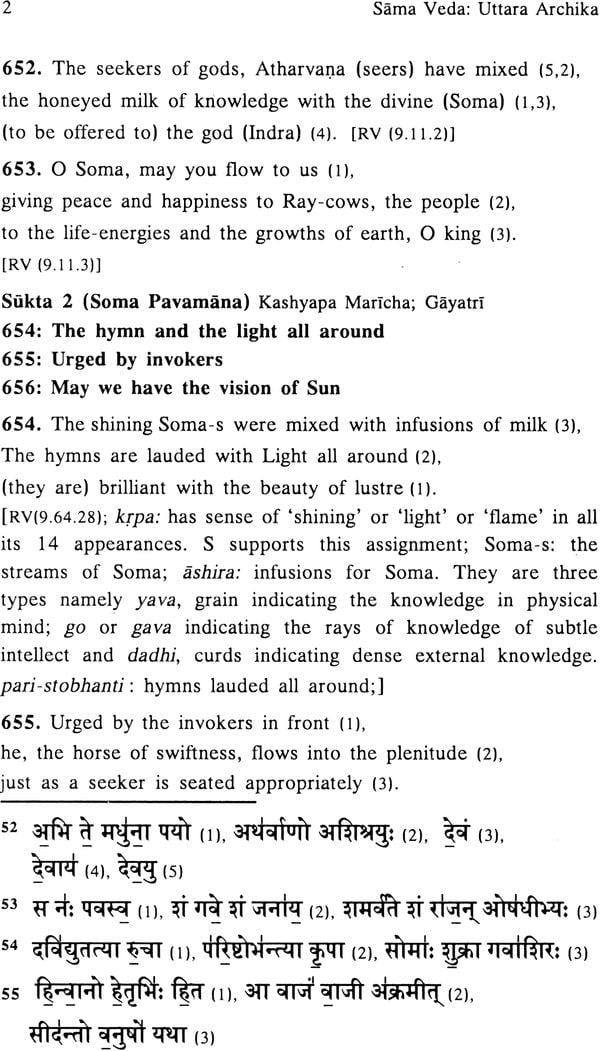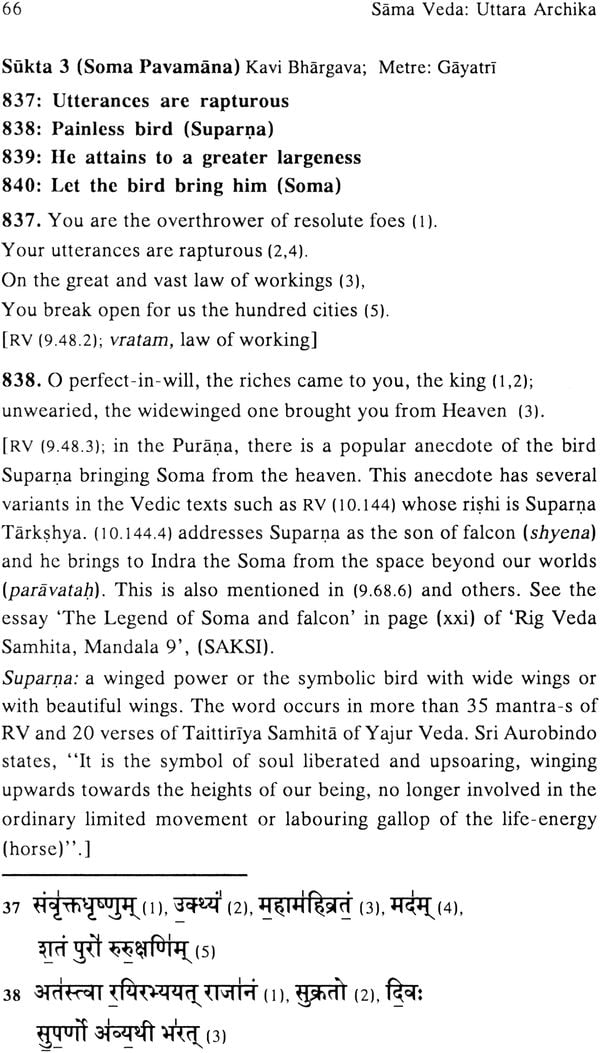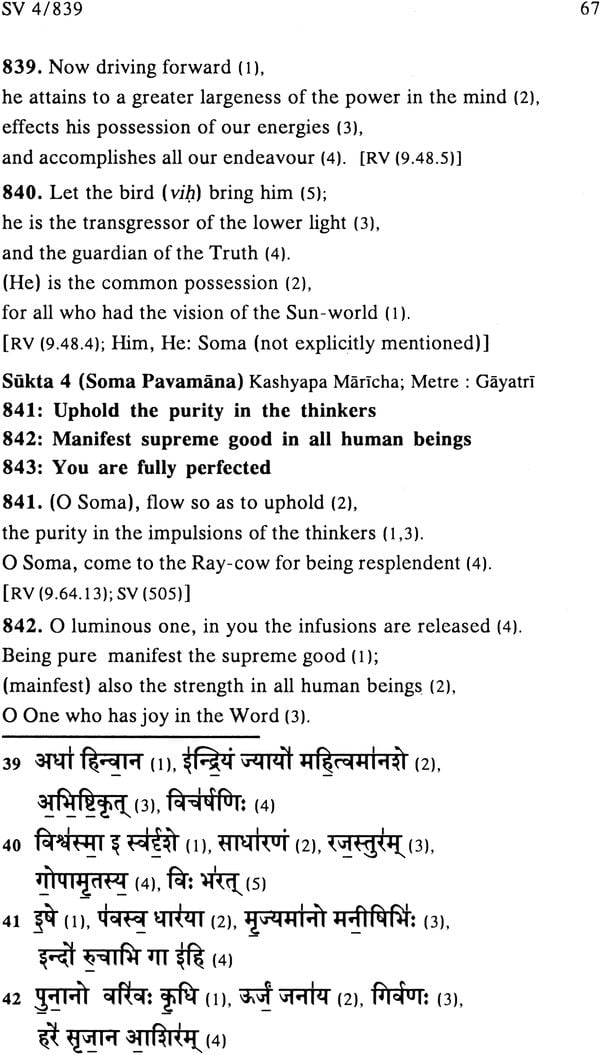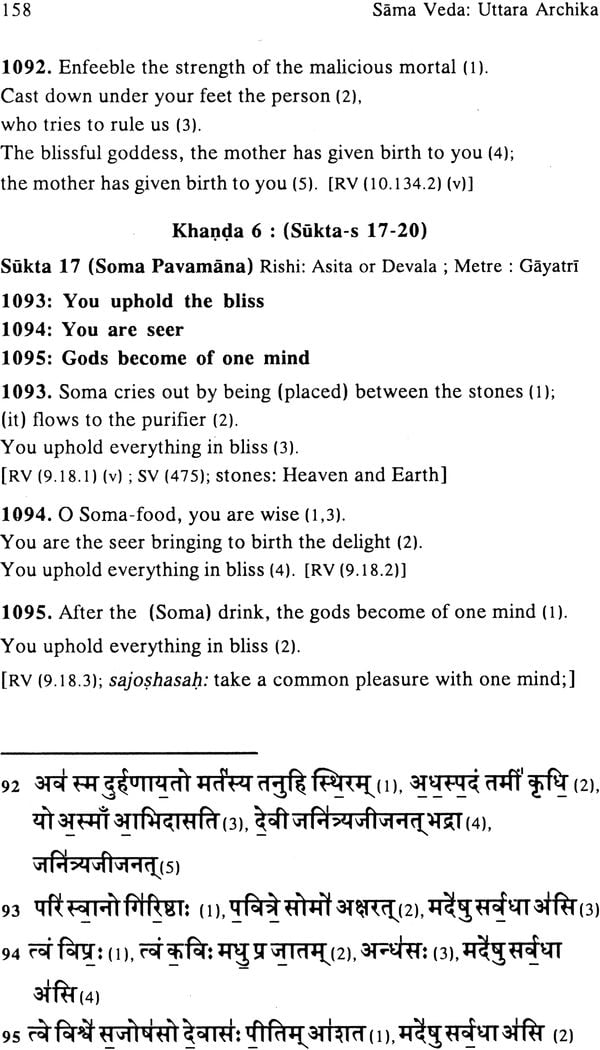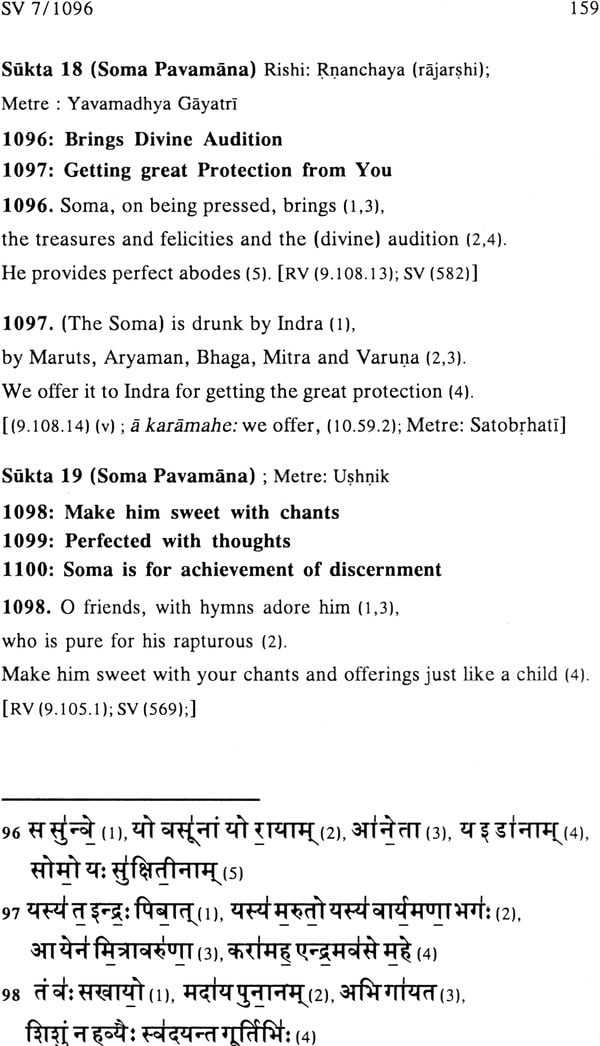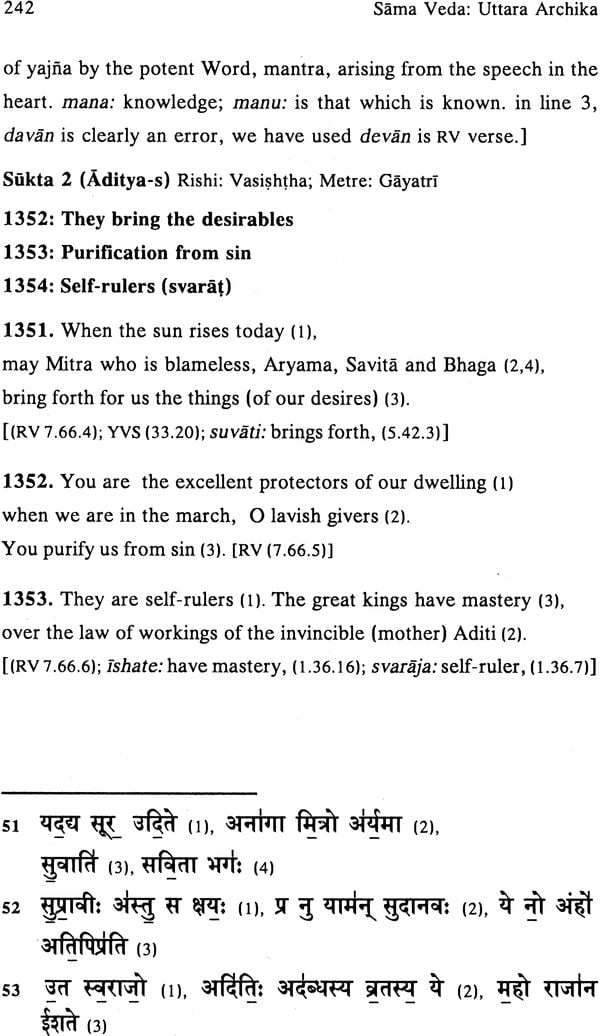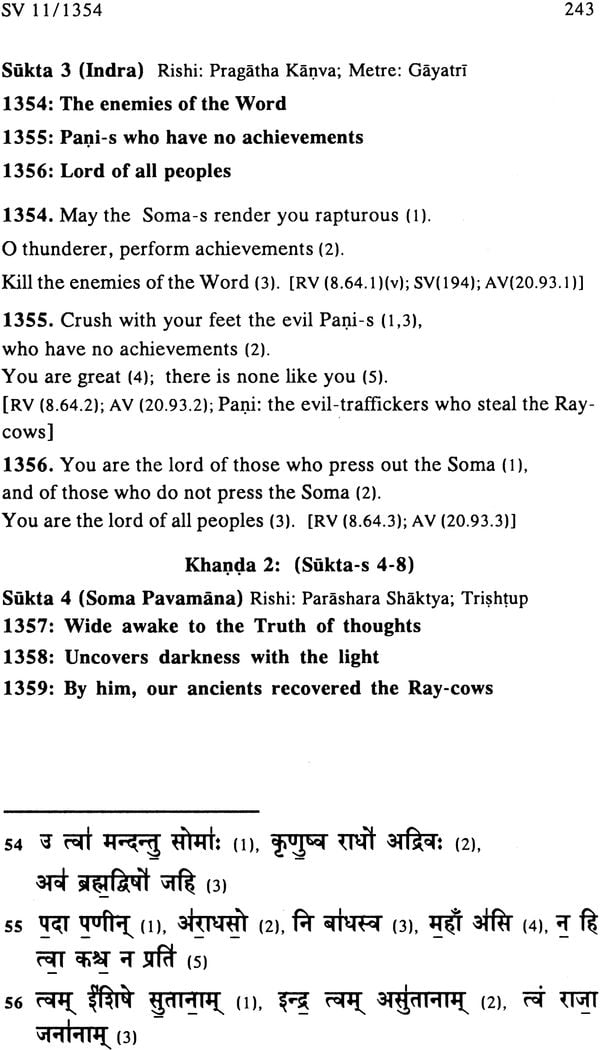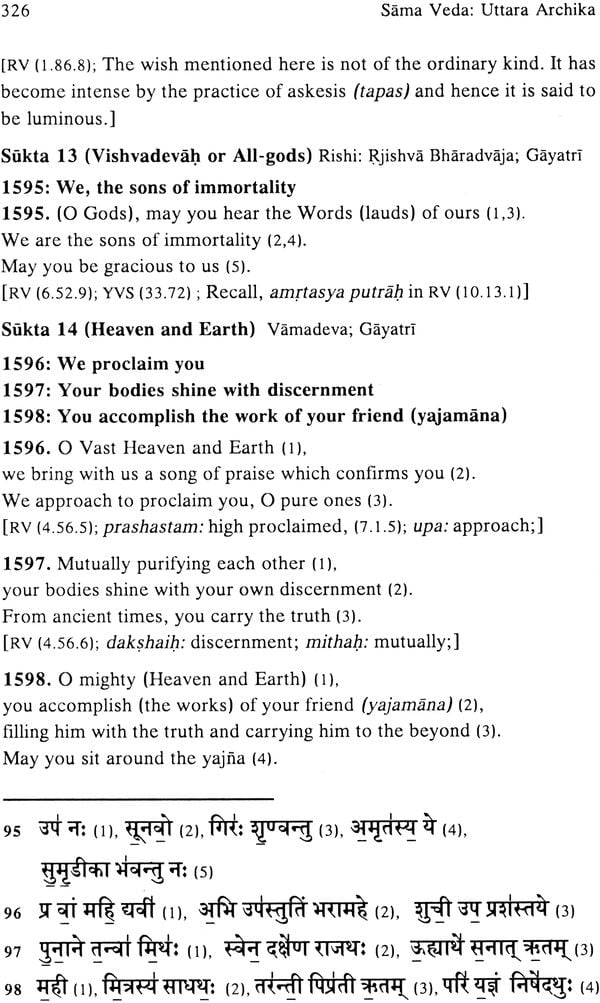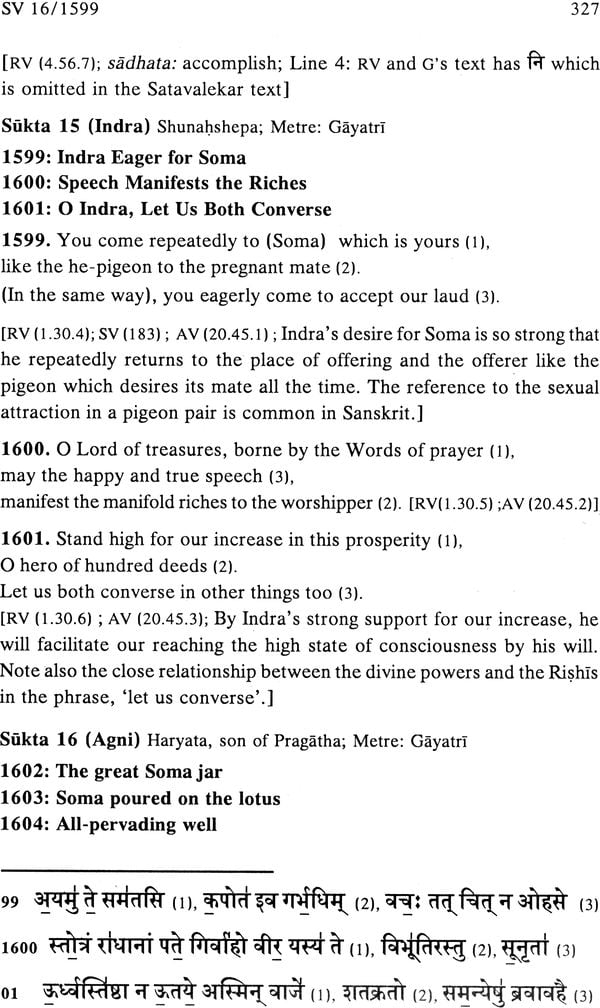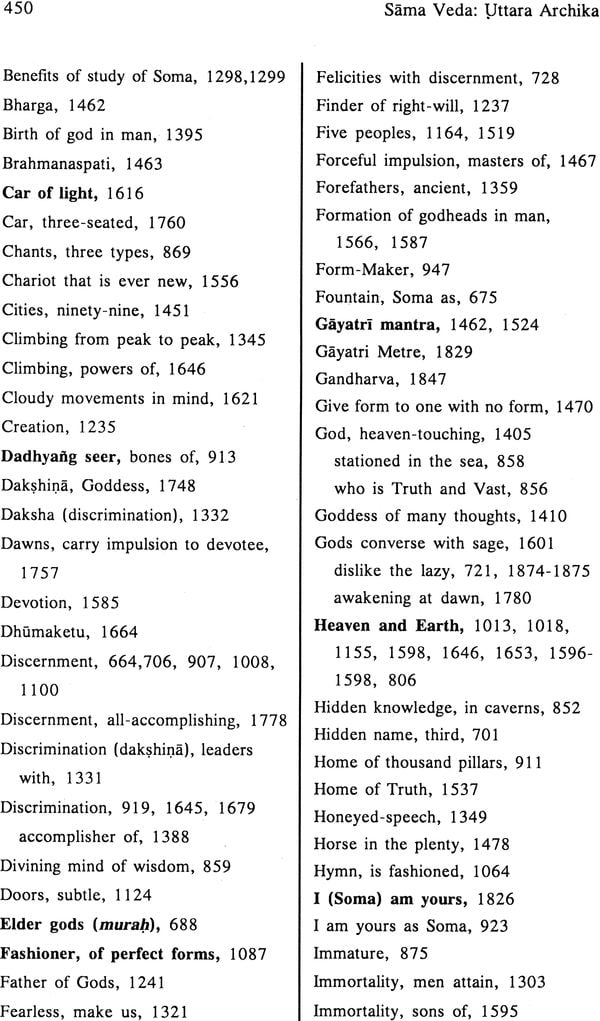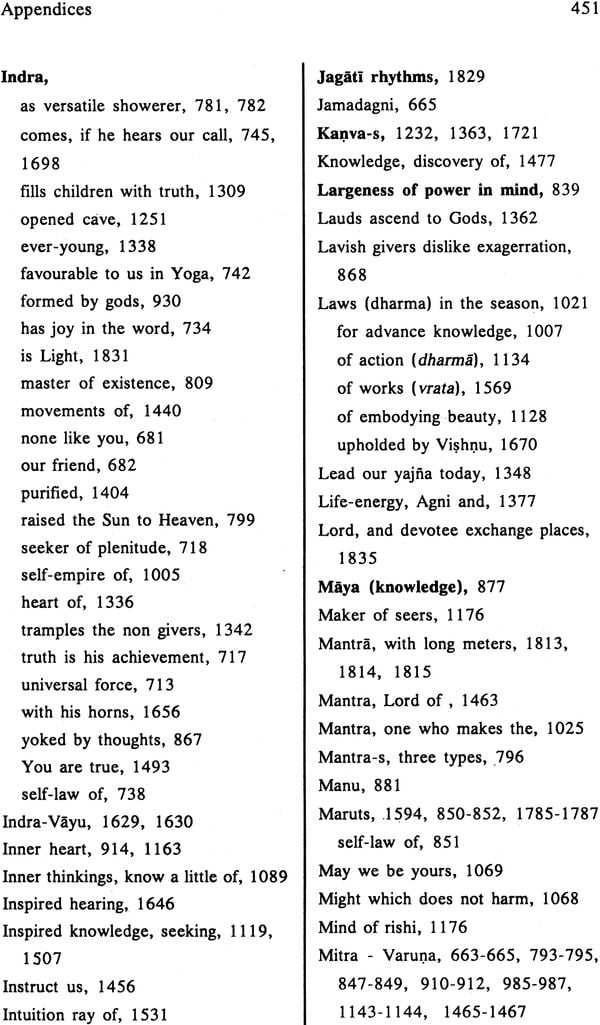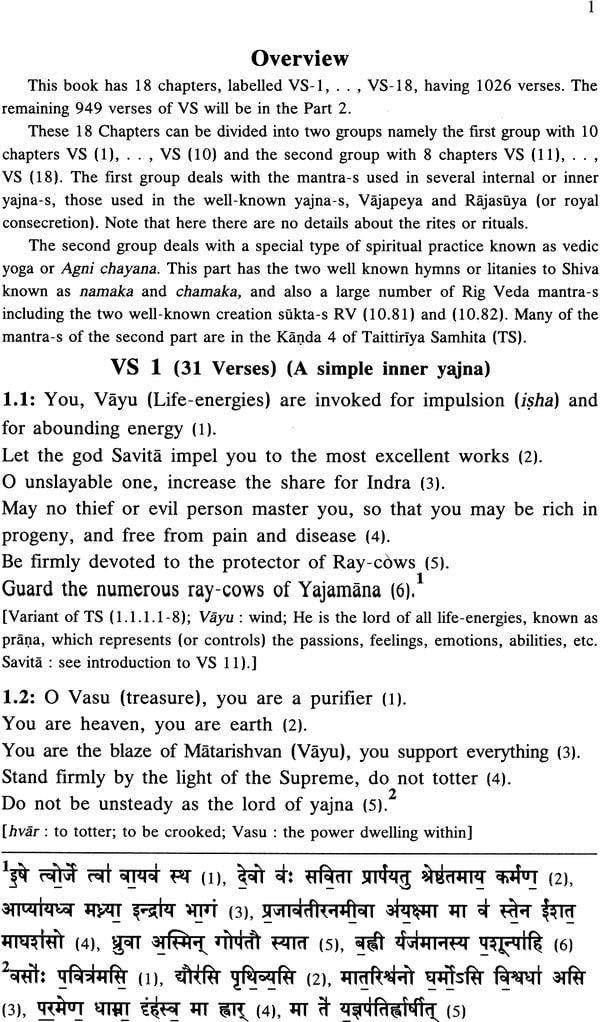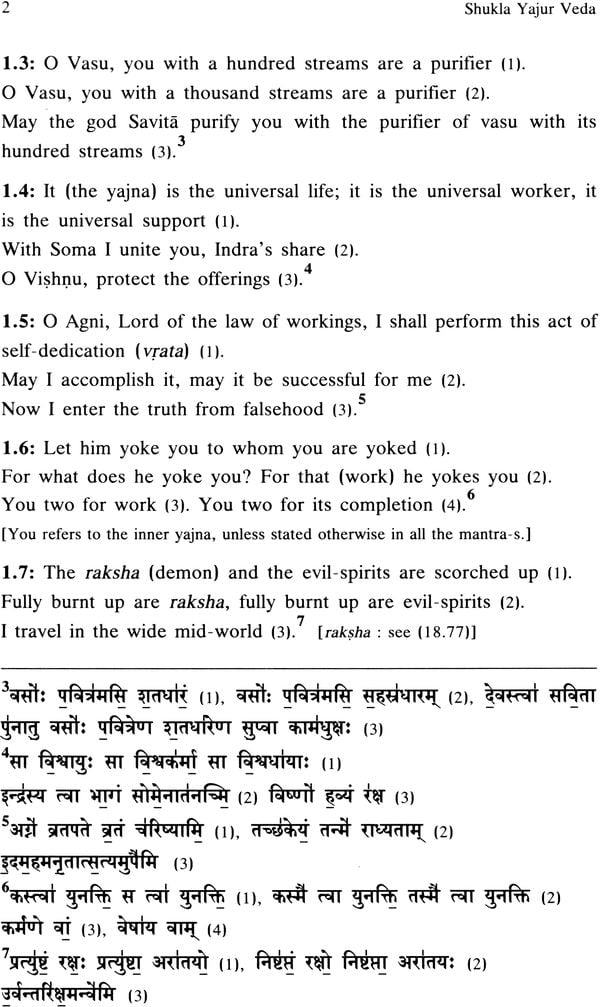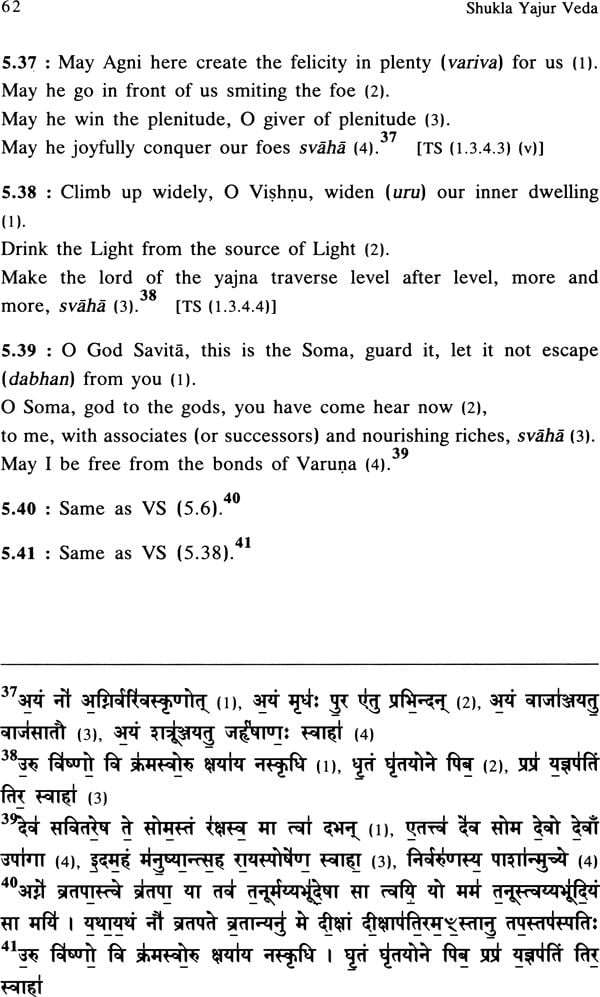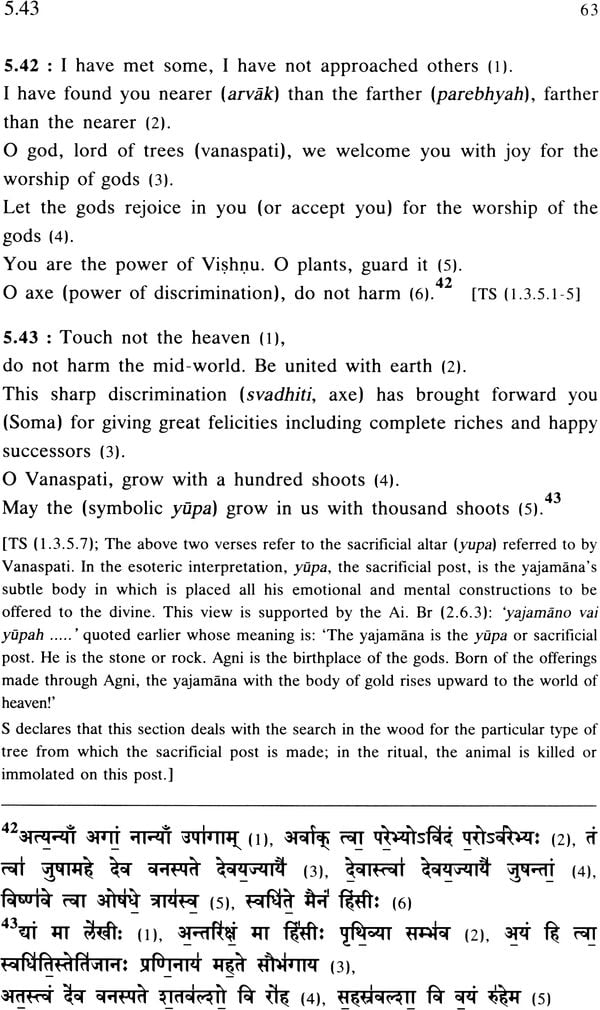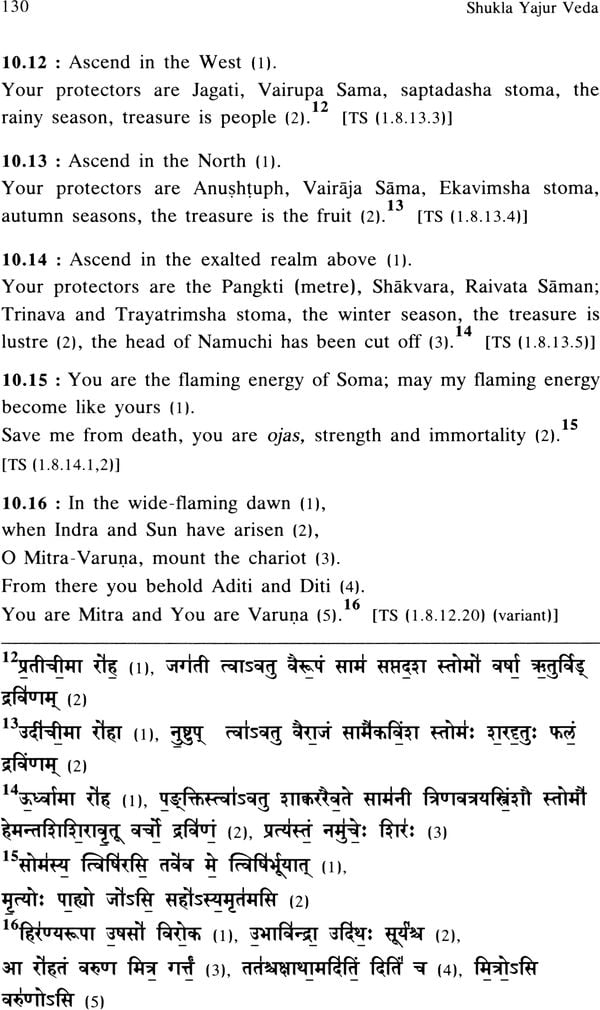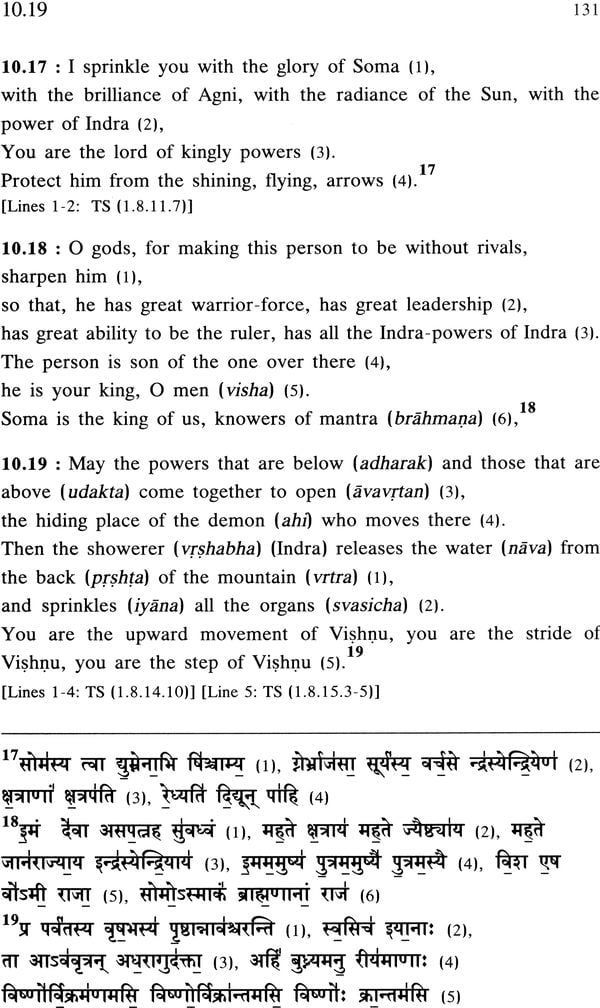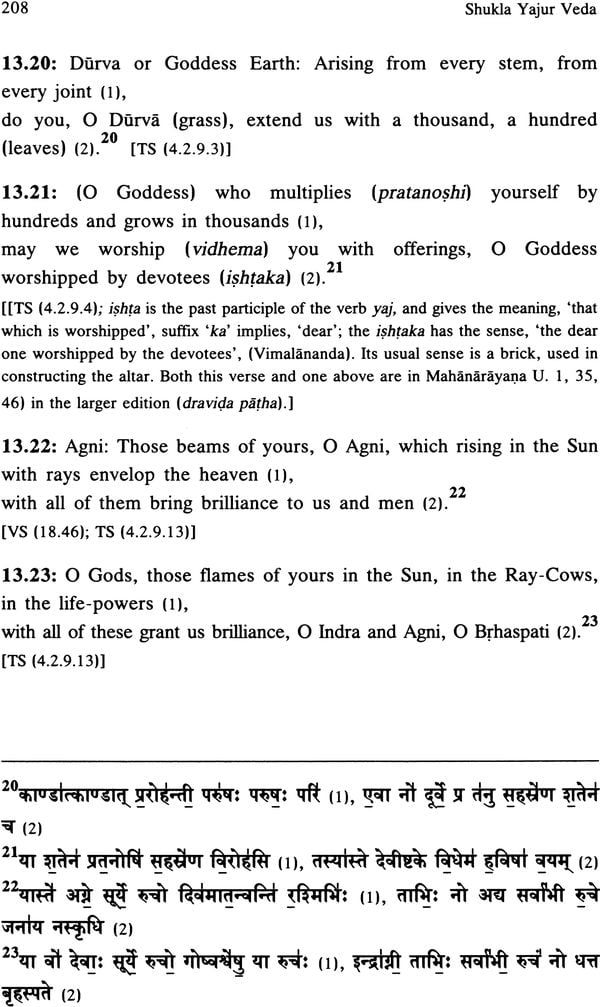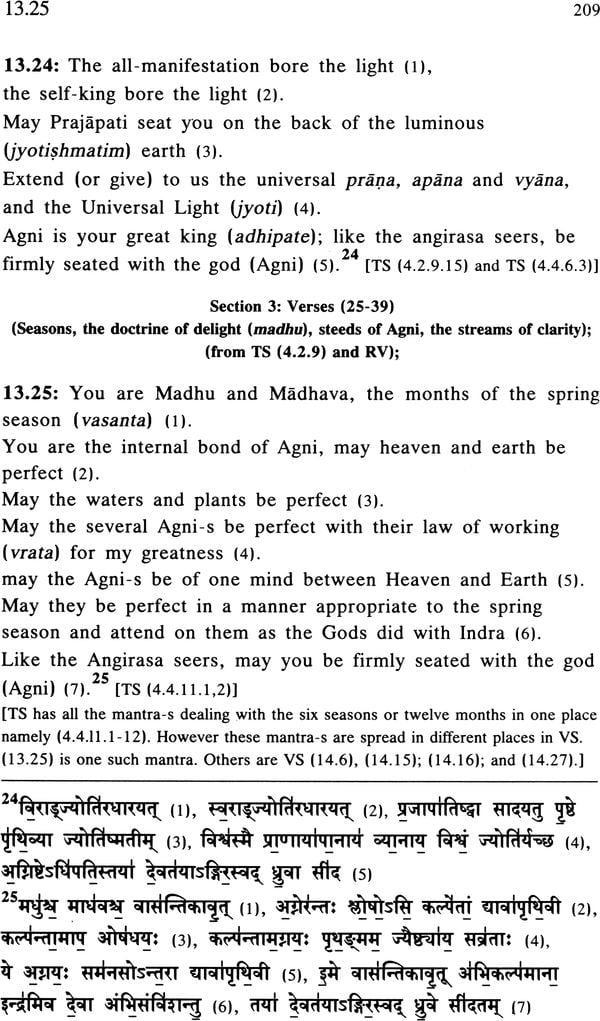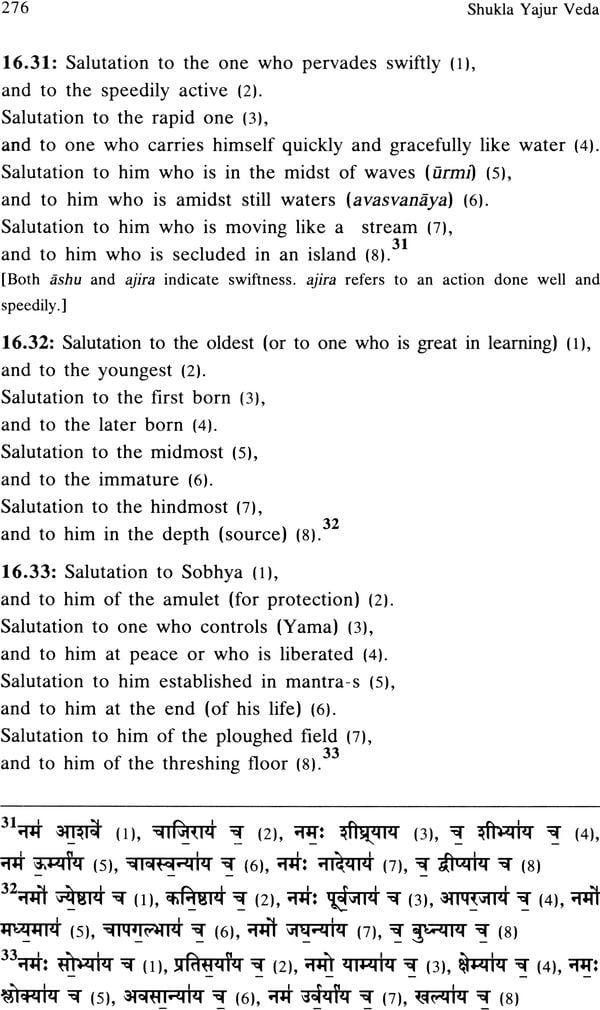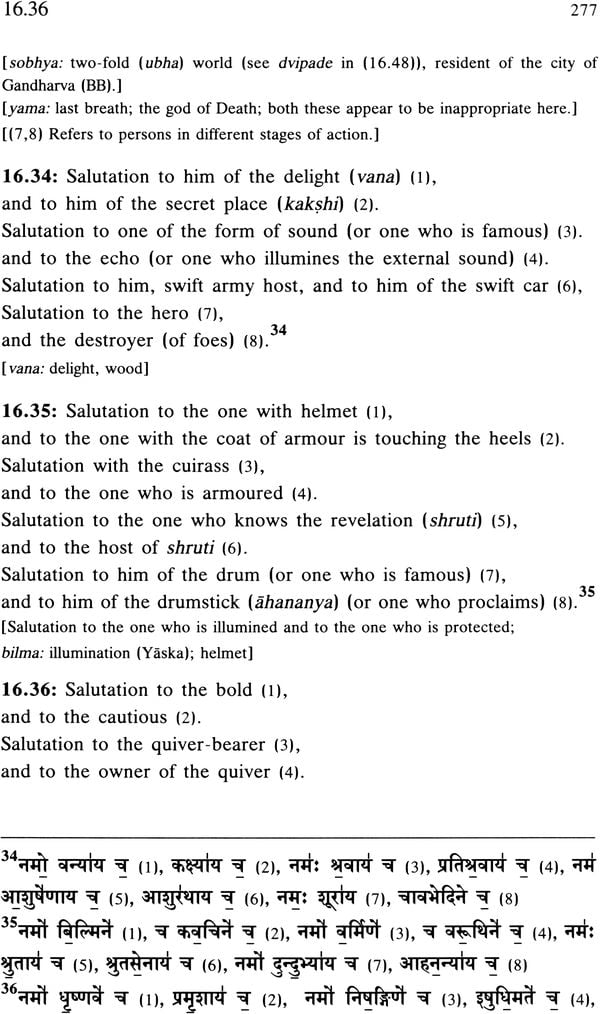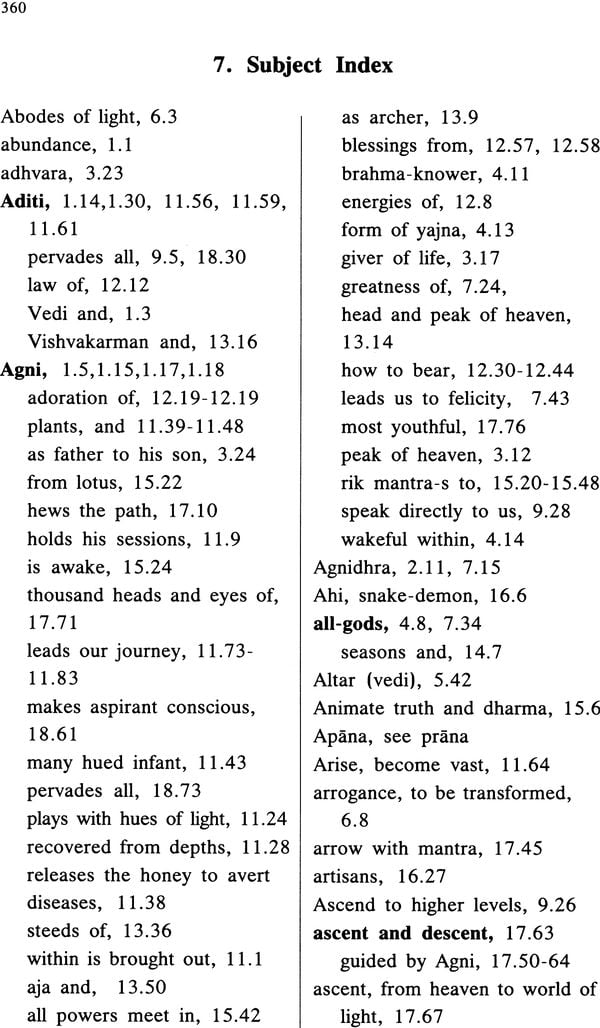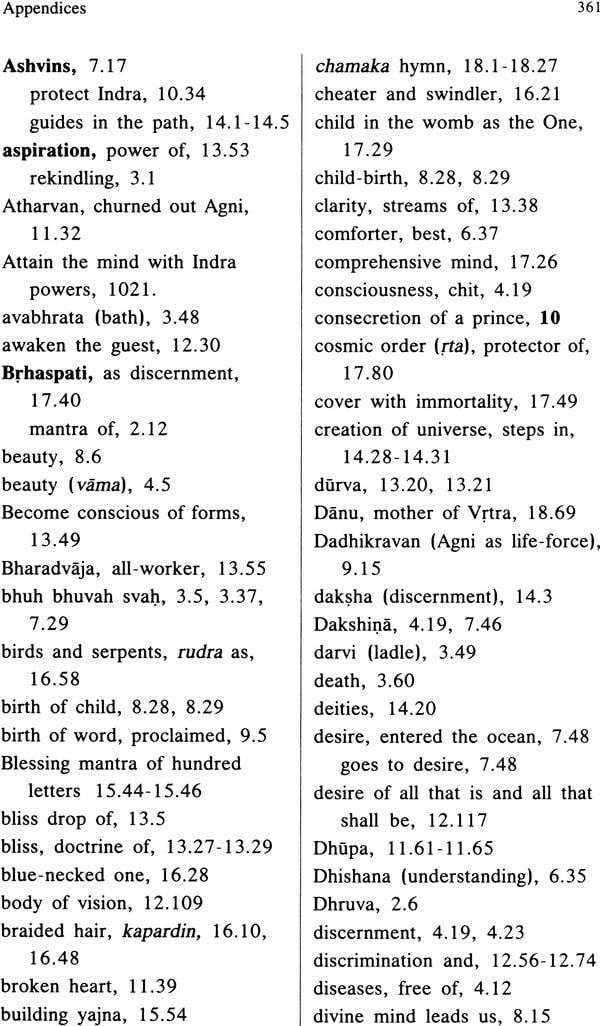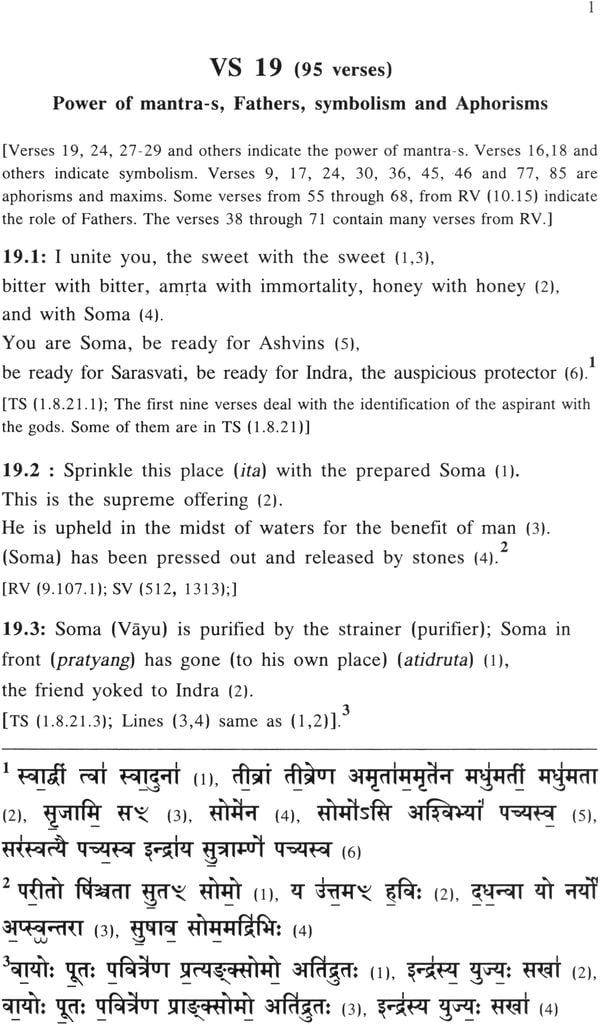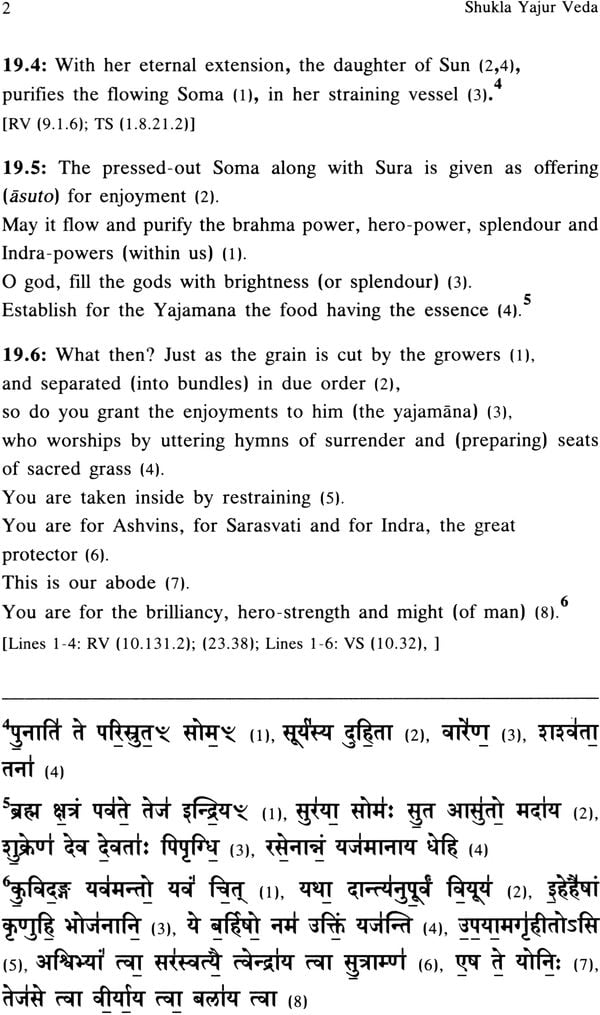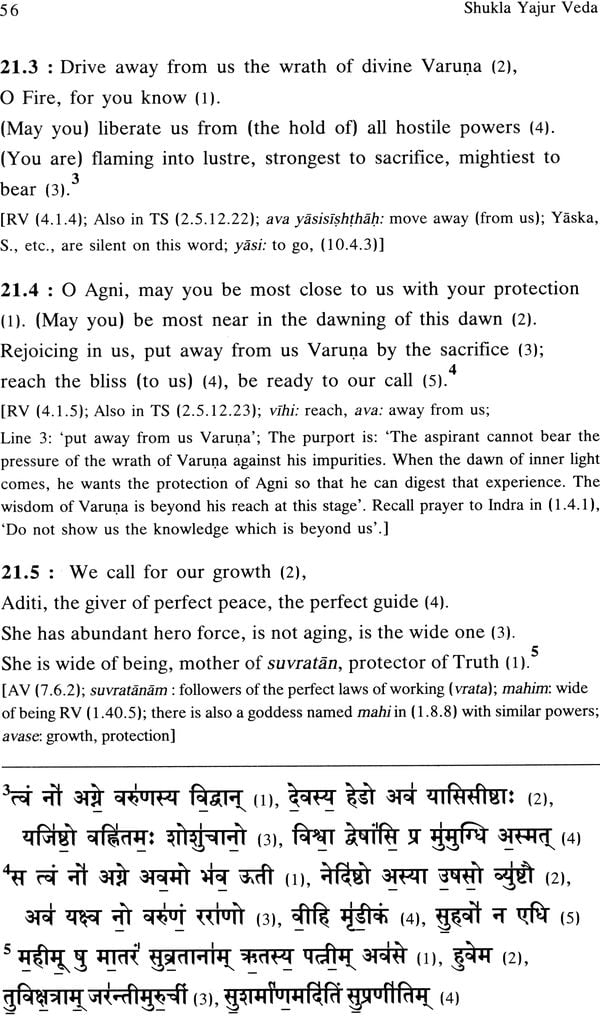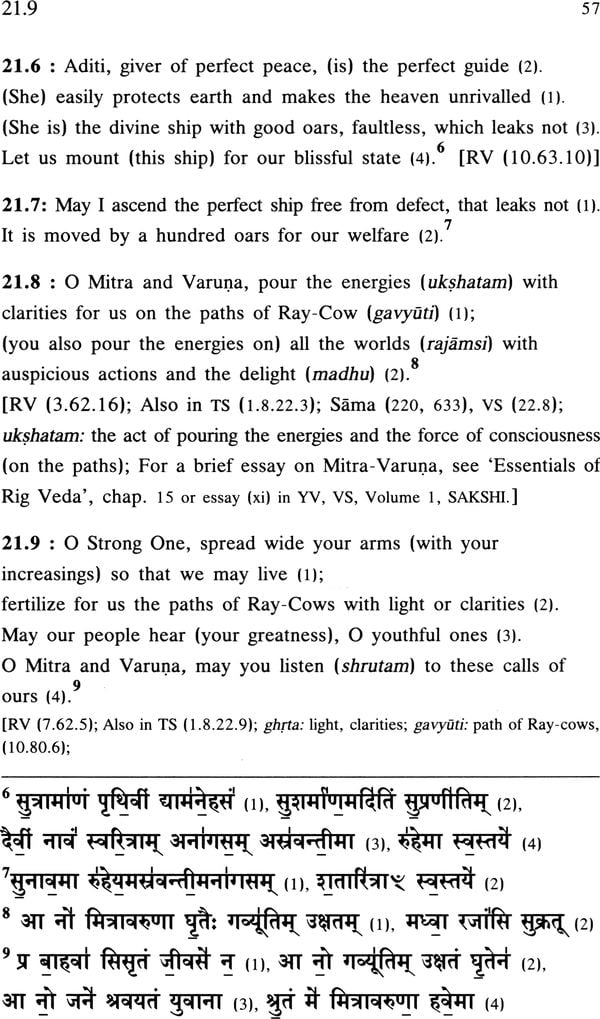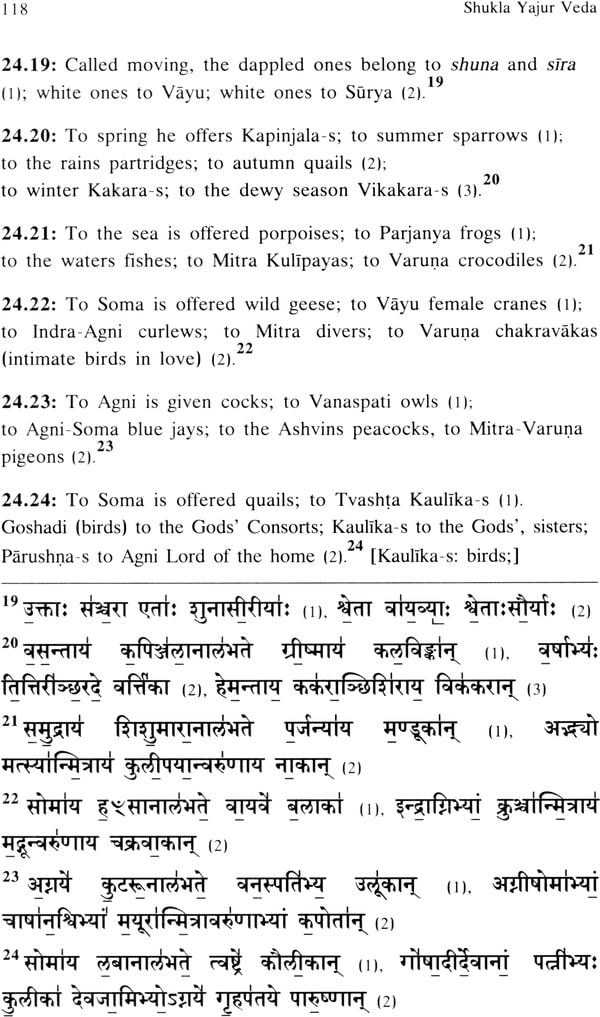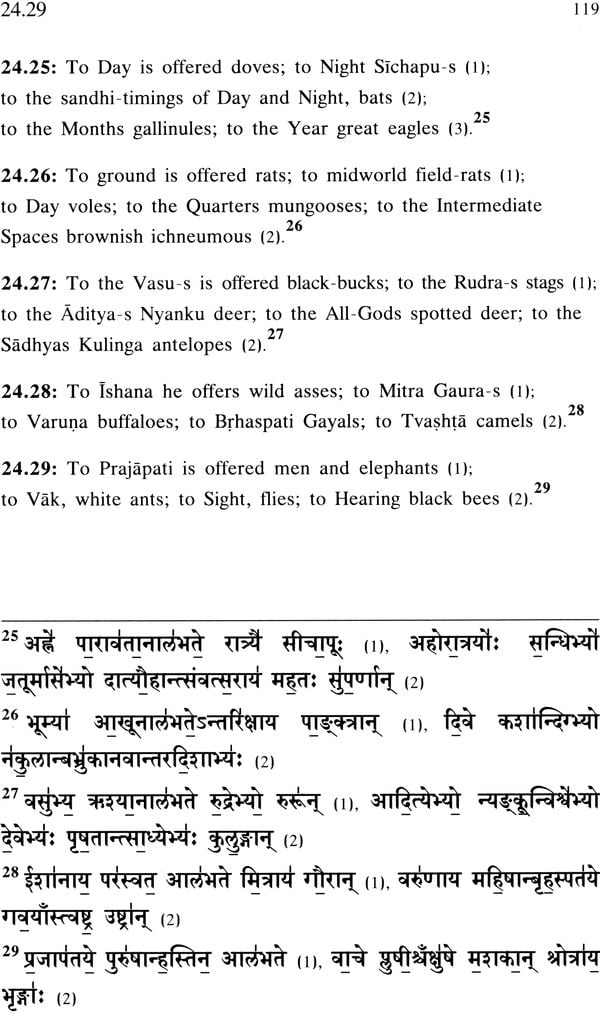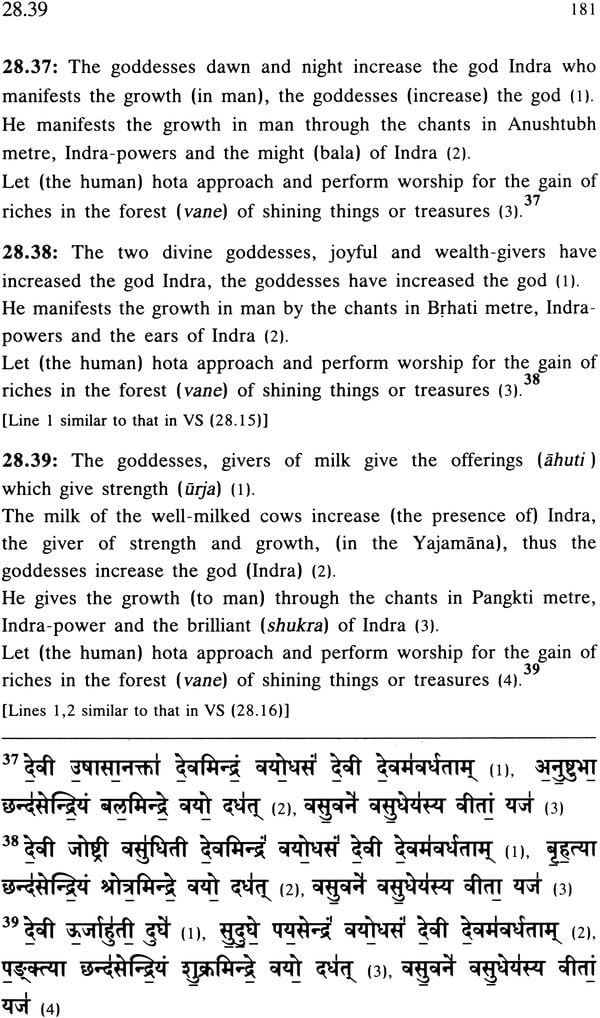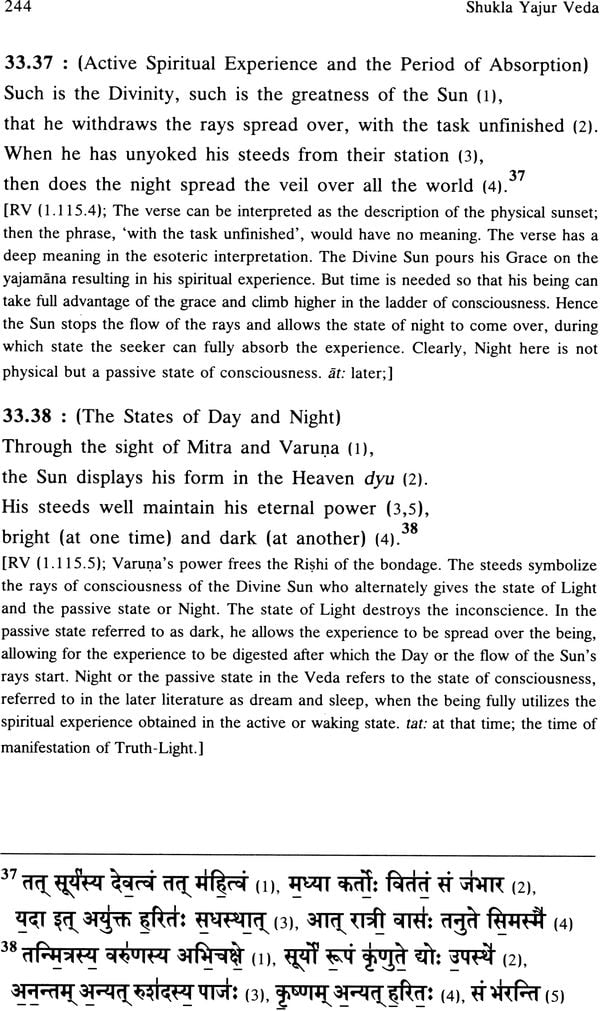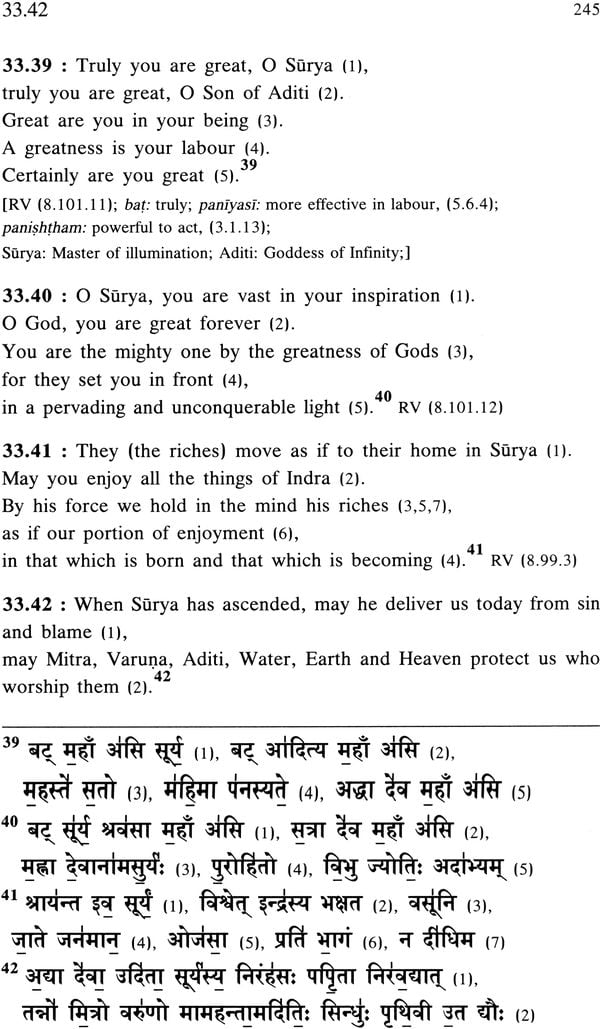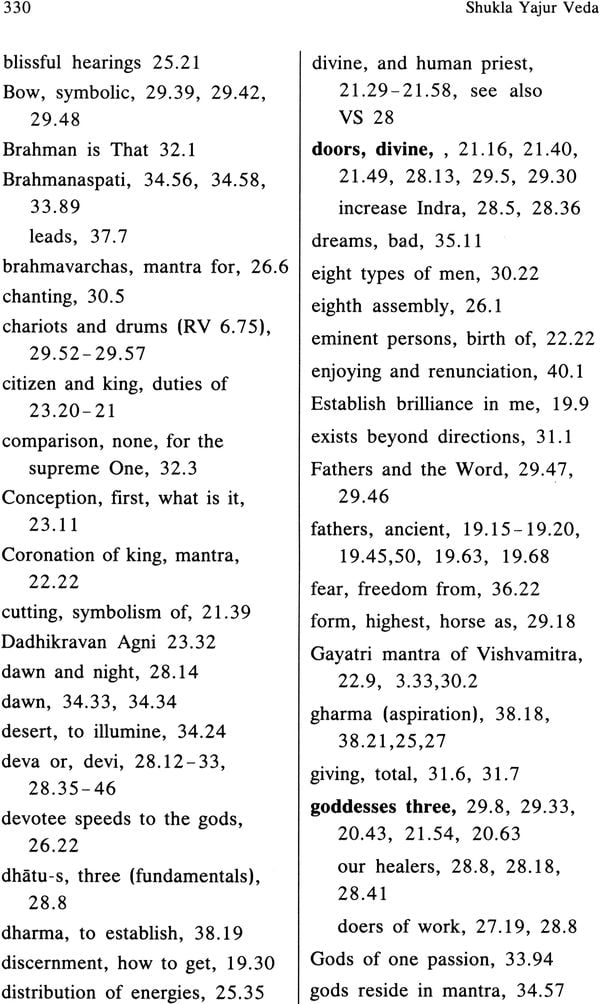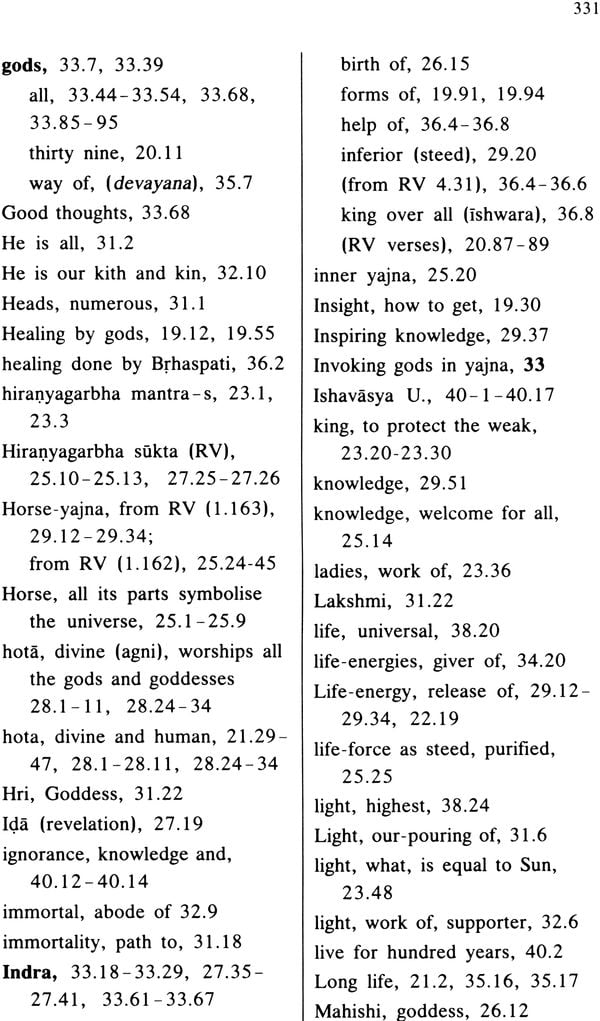
The Four Vedas with Spiritual Translation (Set of 22 Volumes) - Sanskrit Text with English Translation
Book Specification
| Item Code: | NAG696 |
| Author: | R.L. Kashyap |
| Publisher: | Sri Aurobindo Kapali Sastry Institute of Vedic Culture |
| Language: | Sanskrit Text with Translitration and English Translation |
| Edition: | 2022 |
| Pages: | 8342 |
| Cover: | Hardcover/Paperback |
| Other Details | 8.5 inch X 6.0 inch |
| Weight | 10.40 kg |
Book Description
ISBN
Mandala 1 (Part I): 8179940853
Mandala 1 (Part II): 817994087X
Mandala 1 (Part III): 8179940837
Mandala 2: 8179940675
Mandala 3: 8179940594
Mandala 4: 9788179940587
Mandala 5: 8179940284
Mandala 6: 8179940578
Mandala 7: 8179940624
Mandala 8: 8179940799
Mandala 9: 8179940845
Mandala 10: 97881799405328
Dr. R. L. Kashyap is Professor Emeritus of Electrical and Computer Engineering at Purdue University, Lafayette, Indiana in USA. He had his Master's degree from Indian Institute of Science, Bangalore and obtained Ph.D. from Harvard University. He is the recipient of many International awards. In 2003 he has received Vedanga Vidvan award instituted by Maharshi Sandipani Vedavidya Pratishthan (Ujjain), an autonomous body of HRD, Govt. of India and 'Jnana Keerti' award instituted by Harsha Kriya Foundation, Bangalore.
He has authored more than 350 research articles of which 220 are published in scholarly journals and the rest were presented at conferences. He has guided over 50 doctoral students.
He has written extensively on veda. Some of his widely read books on Veda are: 'Krishna Yajur Veda Taittiriya Samhita' (3 Volumes),' Rig Veda Samhita - (12 volumes) 'Why Read Rig Veda', 'Rudra mantras', 'Essentials of Rig Veda', 'Essentials of Yajur Veda', 'Essentials of Sarna Veda', 'Essentials of Atharva Veda', 'Work Enjoyment & Progress'.
He is the Honorary Director of Sri Aurobindo Kapali Sastry Institute of Vedic Culture, Bangalore.
I am indeed happy to pen this 'Foreword' to the Rig Veda Samhita: First Mandala (Part One), published by SAKSI.
Many of you all know that Sri Aurobindo Kapali Sastry Institute of Vedic Culture (SAKSI) is primarily engaged (among other objectives) in disseminating the Vedic (traditional) knowledge to the common man for harmonizing both the spiritual and worldly aspects of life in a humble way. As of now the number of their publications has crossed 130.
The important aspect to be noted here is that the target reader is the common man and-not the well-read scholar. Further the institution has drawn inspiration from the great spiritual savants and scholars like Sri Aurobindo, Sri Kapali Sastry and the like, all of whom were the strong advocates of enabling the most as the most of the hour.
We, at the Academy of Sanskrit Research, Melkote, (which is also engaged in similar tasks and has to its credit of over 75 publications) take pride in associating with the noble task of SAKSI through our contribution in the form of printing the research/translation works of the Professor Emeritus Vedanga Vidwan Dr. R. L. Kashyap related to different 'Samhitas' of Rig & Yajur Vedas in English & Kannada to begin with.
This book contains the text and translation and notes on all the mantra-s in the first fifty sukta-s of the First Mandala of Rig Veda Samhita. These 599 mantra-s introduce the main topics in the entire Rig Veda. The basis of Kashyap's work is the well known Bhashya in Samskrt on these 50 sukta-s with the title, Siddhanjana, by Sri T. V. Kapali Sastry. I am sure this publication will be well received by the readers who have inclination to join the great spiritual movement individually and collectively.
For the kind information of the readers of the series, we wish to inform that it is our joint endeavour that all the 10 Mandalas will be released one by one. There are several interesting essays in this book dealing with the symbolism of the Gods, Yajfia and the overview of Rig Veda based on the ideas of Sri Aurobindo.
There was without doubt a good reason for Dr. Kashyap to have planned this publication. While books a.ti Vedas are flooding the market, wisdom in most of these books is conspicuous by its absence. The discernable approach in them is mainly intellectual, savoured generously by critical and analytical tendencies. They treat the Vedas as merely literary pieces or as little more than aids to reconstruct a bygone age; the language has been studied, the narration has been pressed for historical or cultural information, and the religious or philosophical overtones have been noted. But the most distinguishing feature of the Vedas has largely been missed: the Vedas by their very intent are coded documents of mystic visions. The one modern authority that emphasized this aspect of Vedic study was Sri Aurobindo: and the one saintly scholar who commented in Sanskrit on the Veda-s, inspired by Sri Aurobindo, is T.V. Kapali Sastry. Dr. Kashyap has here undertaken to present to the English- knowing world the approach of Sri Aurobindo and Kapali Sastry, which is not only characteristically Indian but in close conformity with the visions of the seers themselves.
The present publication has been planned meticulously. It presents the first esbtek» of Rig Veda Samhita for which Kapali Sastry prepared his excellent commentary known as 'Siddhetiien« '. After an elaborate, erudite and insightful introduction, individual mantra-s have been taken up: the text has been given in the original (with svara-markings), the words have been separately translated in English, and a running translation of the entire mantra based on Kapali Sastry's Sanskrit commentary has been appended. The significance of special words used in the mantra is also indicated. But the most useful guide to the reader here is the title which prefaces the running translation of each mantra. Short, cryptic and appropriate, the title suggests the general import, the hidden meaning and the essential spirit. The book therefore is a valuable contribution towards understanding the Vedic wisdom aright. It may not be improper here to recall briefly the esoteric framework in which Kapali Sastry's commentary becomes relevant, for this is the principal justification for the present publication. The appended essay entitled, "Spiritual Interpretation of the Veda: an Introduction" is based on the Sanskrit work of T.V. Kapali Sastry entitled bhiimika to his commentary siddhfiiijana. I have also expressed the key ideas in the form of thirty Sanskrit aphorisms Vedagiidiirthabodha siitriil).i using Kapali Sastry's own words. An English translation of three aphorisms is also included in this essay. It remains for me to express once again my sincere appreciation for the present publication, planned and prepared by Dr. R.L. Kashyap, and which will greatly benefit the earnest students and the discerning scholars and which aims to reveal the mystic teaching of the Veda as discovered by Sri Aurobindo in the words of Kapali Sastry.
This book contains the translations of all the 727 mantra-s of the fifth Mandala of Rig Veda along with brief explanations. As in our earlier SAKSI publications, the focus is on spiritual/psychological meaning of the mantra-s in the framework of Sri Aurobindo's thought. The primary aim of our translation is to make the meaning of the mantra-s accessible to all lovers of Veda from all walks of life who are not necessarily experts in English literature.
In the available books on Rig Veda, the translation of a mantra or verse is given as a single sentence with 40 to 50 words; sometimes the sentence may be divided into two parts with a semicolon. Most of the modern English prose readers are used to sentences with a word-count of 15 to 20. Long sentences are clearly a great barrier for the beginners in the Veda, since most of the readers have no idea about the depth of the vedic thought.
In this book, we have taken a major step in increasing the ease of readability, without ignoring the vedic tradition. Every mantra of the Rig Veda is in one of several metres (chhandas), the most popular being the Trishtup. Nearly forty percent of all Rig Veda mantras are in this metre. This metre has 44 syllables (ak$hara-s) and the associated verse (mantra) is divided into 4 parts, each having 11 akshara-s. A mantra is a divine revealation received by a rishi who expressed it in a metrical form with four parts (pada or feet) almost independent of one another a~ for as meaning is 'concerned. In the ancient days, it was not uncommon for a person ta chant the mantra, pada by pada and recapitulate the meaning of each pada as it was being recited. For verses in shorter metres like Gayatri with 24 syllables, there are only 3 pada, each of 8 akshara-s.
Thus in this book, the text of each mantra in Samskrt is given in the Devanagari script in three or four parts, each part corresponding to a pada, using the pada-pathaof mantra wherever necessary. The translation of each mantra is given in 4 separate lines, each numbered with 1,2, etc. Thus each line of the translation has only six to twelve words making it easily readable.
The shorter sentences clearly help us to focus on their meaning. Many of the lines indicate wisdom needed in the spiritual practice. These gems are easily lost in the summary translations of the mantra-s produced in the earlier times.
To illustrate the differences between the four-part translation expressing the psychological point of view and the summary translation of each verse by Wilson (or Griffith), we give two examples. We give only the translations, which are in the Section V.
Mantra (5.66.1)
Wilson's translation:
Man, endowed with intelligence, (adores) the two deities, the performers of good deeds, the destroyers of foes; offer (oblations) to the adorable accepter of (sacrificial) food, to Varuna, whose form is water.
Our translation:
O mortal who wakes to knowledge (chikitana) (1), call the two godheads who are perfect in will (sukratu) and destroyers of your enemy (2),
Direct your thoughts to Varuna of whom Truth is the form (3).
(Direct your thoughts) to the great Delight (4).
In our translation, the essence of the mantra is clear. It is meditation. The mantra implies that since they (Mitra and Varuna) are perfect in will, they have the power of giving the will-power to the human seeker. We translate kratu everywhere as 'will' unlike Sayana or Wilson who give a dozen meanings for it in the translations of different mantra-s.
Note that the clear instruction in the lines 3 and 4 of our translation have escaped the attention of Wilson. It/is true that if one reads the translation of Wilson, one feels that Veda is pedestrian, devoid of wisdom. But the fault lies in the translation, not in the original text.
We will give another example.
Mantra (5.66.2)
Wilson's translation:
In as much as you two are possessed of irresistible and asura-subduing strength, therefore has holy sacrifice has been established among men as the sun (has been placed) in the sky.
Our translation:
When they (Mitra and Varuna) manifest their entire mightiness (2), and their undistorted force (1),
then shall the humanity become as if the workings of these gods (3).
It is as if the visible heaven of light were founded (in the humanity) (4).
The translation of Wilson is vague, to say the least. There appears to be no connection between the two halves of the sentence; the analogy of the Sun and sacrifice is again vague. The words, "sveme' and rta' are arbitrarily translated by him as 'Sun' and 'holy sacrifice: For rta occurring in other places, he assigns twenty other meanings following-Sayana. For details see Purani [21].
In contrast our translation is coherent. We translate svarna as the 'visible heaven of light', svar having the meaning of heaven. The word in parenthesis 'humanity' in line 4 is not inserted arbitrarily. In line 3, humanity (manusham) is explicitly mentioned. Clearly it is implicit in line 4 also. In Sri Aurobindo's translation, rte has the fixed meaning of Right, the Truth-in-movement in all its thousand and more occurrences in the Veda.
Unlike Sayana Acharya, we do not resort to Puranic legends to explain the mantra-so We just give two examples of Sukta 5.2 and 5.61 to show that the connection between the Sukta-s and the associated legends is tenuous.
This book is designed to satisfy the needs and curiosities of a variety of readers, not limited to academics or scholars. It .responds to a strong need felt by many lovers of Veda for a translation of Rig Veda which focuses on the psychological/ spiritual messages contained in it. In particular the translation of a mantra refers to mantra-s elsewhere having a similar message echoing the saying, 'Rig Veda reveals its own secrets'.
The English translation is accessible to one who may not know Sanskrit at all. The innovation in this third edition is to recognize that every Veda mantra in Sanskrit can be divided into 3 or 4 parts known as pada-s; usually each pada has its own well-defined share of the meaning of the mantra. What is done in this edition is to number the pada-s in each mantra and give the separate translation of each pada separately. Moreover the translation of each pada is done so that it takes no more than one line of the page. Thus the translation of each mantra has a sort of poetic structure with three or four lines, without any rhyme. The text of the mantra in devanagari script is displayed in its numbered parts. An interested person can connect the Sanskrit text and translation, since each pada has four or five words or less, and one can figure out to see the meaning of the various words in the pada.
In the earlier editions, the pada structure was not recognized, and the word by word meaning was given.
This book has several essays which introduce the contents of Rig Veda to the beginner, but is of great help to the proficient also.
The essay (v) has been an eye-opener to many persons. Rig Veda was regarded as a book of rituals by some so-called traditional scholars who read the Veda casually. Professor S.K. Ramachandra Rao's essay (v) highlights the reasons for regarding Rig Veda as a preeminently spiritual document or revelation. The next essay (vi) gives 30 aphorisms which crisply state the secrets in the Veda. In framing the Samskrta aphorisms, S.K.R. is using the language used by T.V. Kapali Sastry in his Siddhanjana, mentioned below in the essay (xv). The aphorisms in Samskrta are given in the appendix 2 at the end of the book.
The essay (vii) gives a brief overview of Rig Veda clarifying the roles of devata and metre. Essay (x) details the role of rishi-s and those occurring in this book. Essays (xi)and (xii) give an overview of the prinicpal gods orcosmic powers of Rig Veda, as delineated by Sri Aurobindo and Kapali Sastry. For a serious understanding of Rig Veda as a book of psychological and spiritual wisdom a minimal understanding of the powers of Gods is absolutely necessary. Needless to say that these Gods should not be confused with their namesakes in the Purana books. Essays (xiii-xiv) discuss briefly the some keywords in Rig Veda.
The format of the book is designed to be user-friendly. Every sukta is assigned a title. Every mantra is assigned a title to reflect its content. All the titles of sukta-s are given in essay (viii).
For many verses, there is a section entitled, "Details", which gives more information on the meaning of some of the phrases in the translation, comparison with other translations and the reason for assigning the particular meanings to words in the verse.
Regarding the methodology of assigning the meanings of words, we refer to the book, 'Semantics of Rig Veda' (SAKSI).
The list in essay (ix) groups the sukta-s, by deity. Thus a reader who is interested in Agni can go directly to the relevant sukta-s. Moreover at the end of each Sukta, we give the pathway to the next Sukta of the same deity.
In this book we have used certain English words omitted in today's abridged dictionaries. For instance consider the word, 'summon', i.e., 'to call a person'. The person who summons is summoner; however this word is absent in today's dictionaries. Similar words used are chanter (one who chants), showerer (one who showers gifts) etc.
This book has 597 mantra-s of the Mandala One. The work on the remaining 1409 mantra -s of Mandala is in two books, 'Rig Veda Samhita, Mandala One (part two)' and 'Rig Veda Samhita, Mandala One (part three).'
Vedic Wisdom The hymns or mantras of the Veda are records of the multiple experiences of the seers and Rishis of the early ages and they touch upon the life of man and Gods at several points of their convergence. In the vision and the .journey of these inspired poets, the universe is a cosmos governed by a Law of Truth, executed by the Gods who are the divine functionaries in charge of this manifestation of the Supreme One. The hymns speak of the material prosperity of the society, the dynamic adventures of the heroes, the mental development of the seers who could see beyond time and space. They speak more of the systematic spiritual ascent ofthe man towards the world of all-sided perfection, climbing step by step. The mantras reveal the part played by the various Gods assisting him on the way, opening closed doors on new horizons and breaking down the obstructions with their shining occult weapons.
The Present edition has translation of all the 841 mantras in the 104 Suktas of the seventh Mandala of Rig Veda Samhita. Its focus is on the knowledge of the various deities, both individually and as a collective. One of its Suktas, the so-called peace Sukta (7.35) invokes the peace and well-being for all of us. This Mandala describes the power of 26 deities in some detail having at least one Sukta for each deity. This feature makes this Mandala somewhat special and also highly useful. This Mandala has several mantras indicating some details of social life.
| I | Foreword by the Revered Bhashyam Swamiji | V |
| II | Acknowledgements | VI |
| III | The uniqueness of this book | VII |
| IV | Foreword by Prof. S.K. Ramachandra Rao | IX |
| V | Spiritual Interpretation of Veda: An introduction (Prof. S.K.R.) | X |
| VI | The Secret of the Veda in Aphorisms | XVI |
| VII | Overview of Rig Veda | XIX |
| VIII | Titles of Sukta-s: 1-50 | XXIII |
| IX | Deities in Sukta-s: 1-50 | XXIV |
| X | Rishis of the Sukta-s: 1-50 | XXV |
| XI | Overview of the 50 Sukta-s | XXVII |
| XII | Overview of the powers of the Gods | XXX |
| XIII | Symbolism of the Gods | XXXII |
| XIV | Yajna | XXXIII |
| XV | The sources of this translation | XXXVI |
| XVI | Some Common Words | XXXVII |
| XVII | Abbreviations | XXXX |
| I | Text, Translation and Notes for 599 mantra-s | ||
| Section | Sukta-s | Rishi | Page |
| I | 1-11 | Madhuchchhanda and Jeta | 1 |
| II | 12-23 | Medhatithi | 78 |
| III | 24-30 | Shunahshepa | 143 |
| IV | 31-35 | Hiranyastupa | 185 |
| V | 36-43 | Kanva | 228 |
| VI | 44-50 | Praskanva | 271 |
| II | Appendices | ||
| 1 | References | 309 | |
| 2 | Aphorisms | 313 | |
| 3 | Subject Index | 315 | |
| 4 | Index of Sanskrit Words | 336 | |
| 5 | Note on Transliteration | 341 | |
| 6 | Concordance with Other Veda Samhitas | 343 |
| I | Foreword by the Revered Bhashyam Swamiji | V | |
| II | Acknowledgements | VI | |
| III | Note to the Readers | VII | |
| IV | Titles of Sukta-s: 51-121 | VIII | |
| V | Deities in Sukta-s: 51-121 | XI | |
| VI | Rishis of the Sukta-s: 51-121 | XI | |
| VII | Overview of the 71 Sukta-s | XII | |
| VIII | Symbolism of the Gods | XVI | |
| IX | Some Common Words | XVIII | |
| X | Abbreviations | XX | |
| I | Text, Translation and Notes for 771 mantra-s | ||
| Section | Sukta-s | Rishi | Page |
| VII | 51-57 | Savya | 1 |
| VIII | 58-64 | Nodha | 42 |
| IX | 65-73 | Parashara | 84 |
| X | 74-93 | Gotama | 124 |
| XI | 94-115 | Kutsa and others | 226 |
| XII | 116-121 | Kakshivan | 351 |
| II | Appendices | 403 | |
| 1 | References | 406 | |
| 2 | Subject Index | 407 | |
| 3 | Index of Sanskrit Words | 412 | |
| 4 | Note on Transliteration |
| I | Acknowledgement | VI | |
| II | Titles of the Sukta-s | VII | |
| III | Sukta-s for various deities | VIII | |
| IV | Note to the Readers | IX | |
| V | Overview of this book | X | |
| VI | Rishis in this book | XII | |
| VII | Symbolism of the Gods | XIV | |
| VIII | More on Gods | XVI | |
| a | Vedic gods | XVI | |
| b | Indra, the Divine Mind | XVI | |
| c | Agni, the Divine Will | XVIII | |
| d | Ashvins, the Lords of Bliss and Healipg | XVIII | |
| e | Maruts, the Life-powers and the thought-forces | XXI | |
| IX | MeaningsofSome important words | XXIII | |
| X | Abbreviations | XXV | |
| I | Text, Translation and Notes on 636 Mantras | ||
| Anuvaka | Sukta | Mantras | Page |
| 18 | 122-126 | 55 | 1 |
| 19 | 127-133 | 60 | 24 |
| 20 | 134-139 | 40 | 58 |
| 21 | 140-156 | 119 | 80 |
| 22 | 157-164 | 123 | 139 |
| 23 | 165-179 | 124 | 206 |
| 24 | 180-191 | 115 | 267 |
| II | Appendices | ||
| 1 | Refernces | 314 | |
| 2 | Note to Transliteration | 315 | |
| 3 | Subject Index | 317 |
| I | Acknowledgements | |||
| II | Note to the Readers | VI | ||
| III | Titles of the 43 Suktas | VII | ||
| IV | Suktas for the various deities | VIII | ||
| V | Rishi Grtsamada | IX | ||
| VI | Text of the mantras and their metres | IX | ||
| VII | Mandala Two: An overview | X | ||
| VIII | Brhaspati and Brahmanaspati | XII | ||
| IX | Overview of the powers of gods | XIV | ||
| X | Symbolism of the gods | XVII | ||
| XI | Some common words | XIX | ||
| XII | Abbreviations | XX | ||
| I | Text , Translation and Notes on 429 Mantras | XXI | ||
| Section | Suktas | Deities | Mantras | Page |
| 1 | 1-10 | Agni | 1-89 | 1 |
| 2 | 11-22 | Indra | 90-215 | 40 |
| 3 | 23-26 | Brhaspati | 216-259 | 100 |
| 4 | 27-32 | Adityas & Others | 260-320 | 126 |
| 5 | 33-37 | Rudra, Maruts & Others | 321-377 | 154 |
| 6 | 38-43 | Savita, Ashvins, Soma Pushan& Other | 378-429 | 183 |
| II | Appendices | |||
| 1 | Frequently asked questions on Veda | 206 | ||
| 2 | Spiritual Meaninga of Some Words | 213 | ||
| 3 | References | 215 | ||
| 4 | Note on Transliteration | 217 | ||
| 5 | Subject Index | 218 |
| I | Titles of the 62 Suktas | VI | |
| II | The Suktas for the various deities | VII | |
| III | Note to the Readers | VII | |
| IV | Rishi Vishvarnitra | VIII | |
| V | Special features of the Mandala Three | XII | |
| VI | Symbolism of the Gods | XIII | |
| VII | Some common words | XIV | |
| VIII | Acknowledgements | XV | |
| IX | Abbreviations | XVI | |
| I | Text,Translation and Notes on the 617 Mantras (62 Suktas) | ||
| Anuvaka | Suktas | Number of Mantras | Page |
| 1 | 1-12 | 140 | 1 |
| 2 | 13-29 | 118 | 45 |
| 3 | 30-38 | 128 | 76 |
| 4 | 39-53 | 123 | 114 |
| 5 | 54-62 | 108 | 151 |
| II | Appendices | ||
| 1 | The Basic ideas in Rig Veda | 186 | |
| 2 | Insight into the journey of inner yajna | 189 | |
| 3 | Explanation of the Vishvamitra- Vasishtha confrontation | 192 | |
| 4 | Variants of Gayatri mantra | 193 | |
| 5 | The greatness of Surya-Savitri as given in | 195 | |
| 6 | Meditation using the Gayatri mantra: Hints of Brh U. | 197 | |
| 7 | Gayatri mantra and Rejuvenation: Brh. U | 198 | |
| 8 | Gayatri Mantra for Bhaga Savitri | 200 | |
| 9 | Spiritual Meanings of Some Words | 202 | |
| 10 | Highlights of this translation | 204 | |
| 11 | References | 207 | |
| 12 | Note on transliteration | 208 | |
| 13 | Subject Index | 210 |
| I | Titles of the 58 Suktas | VI | |
| II | The Suktas for the Various Deities | VII | |
| III | Note to the Readers | VII | |
| IV | Special feature of the Mandala Four | VIII | |
| V | Greatness of Rishi Vamadeva | XII | |
| VI | Symbolism of the Gods | XIII | |
| VII | Some Common Words | XV | |
| VIII | Acknowledgements | XV | |
| IX | Abbreviations | XVI | |
| I | Text,Translation and Notes on the 589 Mantras (58 Suktas) | ||
| Anuvaka | Suktas | Number of Mantras | Page |
| 1 | 1-10 | 132 | 1 |
| 2 | 11-21 | 120 | 43 |
| 3 | 22-32 | 146 | 81 |
| 4 | 33-45 | 91 | 116 |
| 5 | 46-58 | 100 | 154 |
| II | Appendices | ||
| 1 | Basic ideas of Rig Veda | 192 | |
| 2 | Understanding the secrets in Rig Veda (Details of Inner Yajna) | 195 | |
| 3 | Subconscient of an individual | 210 | |
| 4 | The Seven chakras and their meaning | 211 | |
| 5 | Colours : Psychological interpretation | 213 | |
| 6 | Seven Worlds, Lights and Five Peoples | 213 | |
| 7 | Spiritual Meanings of Some Words | 217 | |
| 8 | Highlights of this translation | 218 | |
| 9 | References | 221 | |
| 10 | Note on transliteration | 222 | |
| 11 | Subject Index | 224 |
| I | Prolegomenon: Divinizing Life | V |
| II | Foreword (Prof.S.K.Ramachandra Rao) | XII |
| III | Foreword (Dr. Prof. Bhashyam Swamy) | XXII |
| IV | Preface | XXIII |
| V | Overview of the seven Sections (I-VII) | XXVIII |
| VI | Overview of the Power of Gods | XXX |
| VII | Symbolism of Gods | XXXII |
| VIII | Yajna | XXXIV |
| IX | Some Common Words | XXXVII |
| X | Abbreviations | XXXIX |
| Text, Transliteration and Translation | ||
| I | Agni, the Divine Will and Seer: [Sukta-s 1-28) | 1 |
| II | Indra, the Lord of Divine Mind and Action: [Sukta-s 29-40) | 118 |
| III | The Collectivity of All-Gods: [Sukta-s 41-51) | 181 |
| IV | Maruts, the Thought-Gods: (Sukta-s 52-61) | 238 |
| V | Mitra and Varuna: [Sukta-s 62-72) | 291 |
| VI | Ashvins, the Gods of Bliss and Healing: [Sukta-s 73-78) | 327 |
| VII | Usha, Savita and Other Deities | 350 |
| 1 | Usha, the Divine Dawn: (Sukta-s 79-80) | 351 |
| 2 | Surya -Savita: (81) | 361 |
| 3 | Bhaga-Savita: (82) | 369 |
| 4 | Parjanya: The Lord of the Rains: (83) | 376 |
| 5 | Prthivi (Earth): (84) | 380 |
| 6 | Varuna: (85) | 382 |
| 7 | Indra and Agni: (86) | 389 |
| 8 | Evayamarut: (87) | 391 |
| D | Appendices | |
| 1 | References | 398 |
| 2 | Brief Overview of Text of Rig Veda | 402 |
| 3 | Note on Transliteration Scheme | 409 |
| 4 | Index for Sections (I-VII) | 411 |
| I | Titles of the Suktas | VI | |
| II | The Suktas for the Various deities | VII | |
| III | Note to the Readers | VII | |
| IV | The Basic Ideas in Rig Veda | XI | |
| V | Special features of the mandala 6 | XIII | |
| VI | Rishi Bharadvaja | XV | |
| VII | Symbolism of the Gods | XVII | |
| VIII | Acknowledgements | XIX | |
| IX | Abbreviations | XX | |
| Text, Translation and Notes on the 765 Mantras (75 Suktas) | |||
| Anuvaka | Suktas | Number of Mantras | Page |
| 1 | 1-15 | 125 | 1 |
| 2 | 16-23 | 137 | 40 |
| 3 | 24-43 | 117 | 79 |
| 4 | 44-49 | 139 | 119 |
| 5 | 50-61 | 129 | 158 |
| 6 | 62-75 | 118 | 193 |
| II | Appendices | ||
| 1 | Anecdote of Bharadvaja | 236 | |
| 2 | References | 236 | |
| 3 | Note on transliteration | 237 | |
| 4 | Subject Index | 239 |
| I | Titles of the 104 Suktas | VI | ||
| II | The Suktas for the Various deities | VIII | ||
| III | Note to the Readers | VIII | ||
| IV | Rishi Visishtha | IX | ||
| V | Mandala Seven : An Overview | XIII | ||
| VI | Overview of the Power of gods | XV | ||
| VII | Symbolism of the Gods | XXI | ||
| VIII | Some common words | XXIII | ||
| IX | Acknowledgements | XXIII | ||
| X | Abbreviations | XVI | ||
| Text, Translation and Notes on the 841 Mantras (104 Suktas) | ||||
| Section | Deities | Suktas | Mantras | Page |
| 1 | Agni | 1-17 | 145 | 1 |
| 2 | Indra, Birth of Vasishtha | 18-33 | 161 | 59 |
| 3 | All-gods, Savitr, Bhaga Peace | 34-45 | 106 | 123 |
| 4 | Rudra, Vastoshpati, Waters, Rbhu, Maruts | 46-59 | 90 | 164 |
| 5 | Surya, Usha, Mitra, Varuna Ashvins | 60-89 | 223 | 204 |
| 6 | Vayu, Sarasvati, Brhaspati | 90-98 | 58 | 296 |
| 7 | Vishnu, Parjanya | 99-104 | 58 | 327 |
| II | Appendices | |||
| 1 | Basic Ideas of Rig Veda | 354 | ||
| 2 | Spiritual Meanings of Some Words | 357 | ||
| 3 | References | 359 | ||
| 4 | Note on the Text of Mantras Given Here | 360 | ||
| 5 | Note on Transliteration | 361 | ||
| 6 | Subject Index | 363 |
| I | Acknowledgements | VI | |
| II | Deities in each Anuvaka | VII | |
| III | Note to the Readers | VII | |
| IV | Mandala 8: An Overview | VIII | |
| V | Rishis of Mandala 8 | XI | |
| VI | The Deities and their Sukta-s | XIII | |
| VII | Symbolism of the Gods | XIV | |
| VIII | More on Gods | XVI | |
| A | Vedic Gods | XVI | |
| B | Indra, The Divine Mind | XVI | |
| C | Agni, the Divine Will | XVIII | |
| D | Ashvins, the Lords of Bliss and Healing | XIX | |
| E | Maruts, the thought Forces and Life-Power | XXI | |
| IX | Some Important words | XXIII | |
| X | Abbreviations | XXV | |
| I | Text, Translation and Notes on 1716 Mantra-s | ||
| Anuvaka | Sukta-s | Mantra-s | Page |
| 1 | 1-5 | 160 | 1 |
| 2 | 6-12 | 177 | 56 |
| 3 | 13-20 | 173 | 111 |
| 4 | 21-30 | 186 | 169 |
| 5 | 31-42 | 171 | 231 |
| 6 | 43-48 | 171 | 293 |
| Valakhilya | 49-59 | 80 | 346 |
| 7 | 60-69 | 159 | 377 |
| 8 | 70-80 | 149 | 429 |
| 9 | 81-93 | 149 | 475 |
| 10 | 94-103 | 141 | 524 |
| II | Appendics | ||
| 1 | References | 574 | |
| 2 | Note on Transliteration | 575 | |
| 3 | Subject Index | 577 |
| I | Foreword by Prof. Bhashyam Swamyji | V | |
| II | Acknowledgements | VI | |
| III | Note to the Readers | VII | |
| IV | Titles of the 114 Suktas | VIII | |
| V | Overview of Mandala 9 | XI | |
| VI | Soma: Misconceptions and its Secret | XII | |
| VII | some, the delight in work | XVI | |
| VIII | Soma and Truth(rta) | XVIII | |
| IX | Soma, Seers and Sun | XX | |
| X | Legend of Soma and Falcon | XXII | |
| XI | Soma Yajna or Sacrifice: Inner and Outer | XXIV | |
| XII | Rishis of Mandala 9 | XXVI | |
| XIII | Some Important Words in this Mandala | XXVIII | |
| XIV | Symbolism of the Gods | XXXII | |
| XV | Abbreviations | XXXIV | |
| I | Text, Translation and Notes of 1108 Mantras | ||
| Anuvaka | Suktas | Mantras | Page |
| 1 | 1-24 | 204 | 1 |
| 2 | 26-60 | 194 | 65 |
| 3 | 61-67 | 222 | 129 |
| 4 | 68-85 | 118 | 186 |
| 5 | 86-96 | 129 | 240 |
| 6 | 97-103 | 117 | 292 |
| 7 | 104-114 | 124 | 335 |
| II | Appendices | ||
| 1 | Wisdom of Veda (O Indu, flow to Indra) | 380 | |
| 2 | 1000 epithets to Soma | 381 | |
| 3 | References | 394 | |
| 4 | Note on Transliteration | 395 | |
| 5 | Subject Index | 397 |
| I | Acknowledgements | VI | |
| II | Note to the Readers | VII | |
| III | The Sukta-s for Various Deities | X | |
| IV | Highlights of the Sakshi Translations | XI | |
| V | How to Read this Book? | XV | |
| VI | Overview of this Book (Mandala 10) | XVI | |
| VII | Rishi-s of this Mandala | XVIII | |
| VIII | Overview of the Powers of the Gods | XIX | |
| IX | Overview of Agni | XXI | |
| X | Symbolism of the Gods | XXII | |
| XI | Common Words as Symbols | XXIV | |
| XII | Titles of the 191 Sukta-s | XXV | |
| XIII | Abbreviations | XXVIII | |
| I | Text, Translation and Notes on 191 Sukta-s (1754 Mantra-s) | ||
| Anuvaka | Sukta-s | Number of Mantra-s | Page |
| 1 & 2 | 1-29 | 148+146 | 1 |
| 3 & 4 | 30-60 | 145+168 | 91 |
| 5 & 6 | 61-84 | 129+135 | 181 |
| 7 & 8 | 85-99 | 142+143 | 264 |
| 9 & 10 | 100-128 | 142+146 | 356 |
| 11 & 12 | 129-191 | 144+169 | 443 |
| II | Appendices | ||
| 1 | The Format of this Book | 544 | |
| 2 | The Classes of Readers | 545 | |
| 3 | Principles Behind this Translation | 546 | |
| 4 | Other Commentaries and Translations | 550 | |
| 5 | Spiritual Meanings of Some Words | 559 | |
| 6 | The Date of Rig Veda | 561 | |
| 7 | Achievement of Sakshi | 563 | |
| 8 | References | 569 | |
| 9 | Note on Transliteration | 572 | |
| 10 | Boxes | 574 | |
| 11 | Subject Index | 576 |
ISBN
Kanda –s 1 to 4: 9788179940129
Kanda –s 5 to 7: 9788179940105
Kanda –s 8 to 10: 9788179940105
Kanda –s 11 to1 4: 8179940918
Kanda –s 15 to 19: 9788179940082
Kanda –s 20: 9788179940075
Dr. R.L. Kashyap
Dr. R.L. Kashyap is Professor Emeritus of Electrical and Computer Engineering at Purdue University, Lafayette, Indiana in USA. He had his Master's degree from Indian Institute of Science, Bangalore and obtained Ph.D. from Harvard University. He is the recipient of many International awards. In 2003 he has received Vadanga Vidvan award instituted by Maharshi Sandrpani Vedavidya Pratishtan (Ujjain), an autonomous body of HRD Govt. of India and 'Karnataka Rajyotsava Award' in the year 2012.
He has authored more than 350 research articles of which 220 are published in scholarly journals and the rest were presented at conferences. He has guided over 50 doctoral students.
He has written extensively on Veda. Some of his widely read books on Veda are Krishna Yajur Veda Taittiriya Samhita (4 Volumes) Rig Veda Samhita (12 volumes) Atharva Veda (6 volumes.) Sarna Veda (2 Volumes.) Why Read Rig Veda Rudra mantras Essentials of Rig Veda Essentials of Yajur Veda Essentials of Sarna Veda Essentials of Atharva Veda Work Enjoyment & Progress
He is the Founder and the Honorary Director of Sri Aurobindo Kapali Sastry Institute of Vedic Culture, Bangalore.
Welcome to this book giving the text and translation of all the 914 mantra-s contained in 142 sukta-s of the first four Kanda-s of Atharva Veda Samhita. With this book, our plan to translate all the 5987 mantra-s of A V in six volumes has been completed with the grace of Veda Purusha. Thus this book will be labelled as Volume I and all other five books labelled accordingly.
Traditionally, the first volume must contain some introductory essays. I felt that translating all the mantra-s of A V would give me a better grasp to write the introductory essays. Thus these four Kanda-s were translated at the end.
Even at a first glance, the variety of topics III it draws our attention. This idea is expanded in the essay (iv], 'The Overview of the entire A V'. The topics can be conveniently labeled as belonging to at least eight categories, titled as: (1) Spiritual, dealing with Brahman, Atman, Primeval Creation, the support of all this manifestation, (2) The cosmic powers, Gods and Goddesses such as Agni, Indra, Aditi, (3) Education, (4) Family, Love, Marriage, Children, Home, Food, Guests and associated topics, (5) Longevity, Health and healing, Herbs for curing diseases, antidotes to poison, worms, and the use of the protective devices, professions, (6) Polity, the establishment and reestablishment of a king, battles, foes, the nonphysical hostile forces, (7) Happiness, fearlessness, overcoming sin, (8) other topics such as Time, Yajna, Cows and their symbolism. The basic idea in all of them is their interconnection. All the aspects of universe including human beings, animals, cosmic powers are regarded as being connected by a web, the web of truth or yajna, (Rtasya tantu). The web is supervised as it were by the Supreme being who has become everything. Recall the saying of Upanishad, 'Everything is Brahman
For most Hindu-s, only Upanishads are the sources of the wisdom. There are at least 108 Upanishads, among which 12 or 13 are called as major Upanishads. If we bound them in a single book, it will be half the size of Rig Veda or less. In these books, which appeared much later than the Veda-s, the aim of human life was regarded as the realization of the highest spiritual idea, Brahman or atrnan. One should not spend much time on the worldly things. A barrier was set up between the so called worldly life and spiritual life.
The four Veda books were viewed as dealing with only ritual acts known as outer yajna (as contrasted with the inner yajna). The Atharva Veda was censured as being, "most worldly' 'dealing with black magic'. We do not go here about how these views originated or how they became entrenched. Thus to get some benefit from the Atharva Veda, we have to understand the fundamental axioms or ideas on which it is based. These basic axioms are explored in the essay [iii], 'How to read the Atharva Veda', P. x. There are several commentaries in Sanskrit on the four Veda-s, and several English translations of all the four veda-s, some done in the twentieth century. I have discussed them in some detail in the appendix entitled, 'The other commentaries and Translations', 111 the Sakshi book, 'Rig Veda Samhita Tenth Mandala
The commentary of Sayana Acharya (1315-1387 CE) has been very helpful in my work. I have highlighted its contribution in the above mentioned book. The shortcomings of the Sayana work has been well documented in the works of Sri Aurobindo and T.V.K; however T.V.K. has great regard for Sayana's work. The books of translation of A V hymns in Kannada done by Sesha Navarathna has been useful to me as mentioned in the section, 'Acknowledgement
Recall that Veda-s have a great hold on Indian mind. There is a book on the so called black magic known Kaushika Sutra-s which quotes the use of the A V mantra-s in some of these occult acts Sayan a Acharya in his A V commentary mentions that some A V mantra-so are mentioned in these Kaushika sutra-s. Sayana does not say that A V mantra-s mention black magic. The western translators of Atharva Veda of nineteenth century focused entirely on these ideas and magnified them declaring that Atharva Veda ,is full of black magic. For more details, see the essay in appendix 3 of this book, Are Sorcery and Witchcraft mentioned in Atharva Veda (p. 290).
The possibilities of translating some hymns or Sukta’s from all the Veda’s from the spiritual" and psychological view has been On my mind for more than three decades. The publishing work of these translations in handwritten form started in 1987 with the establishment of the SAKSI Charitable Trust Following Sri Aurobindo and Kapali Sastry, I believe that the ideas of Veda are clarified by the Veda itself.Afterall the total number of verses in the four Veda’s is more than 20,000. Again all books we know such as Purana-s, are much later than Veda-s by thousands of years. My work does not refer to the Purana’s or Brahmans books whose sanctity I do not deny. I have been posed with questions again and again about how I started these translations. I am not a professional Sanskrit person. I have been a Professor and Researcher in the field of Pattern Recognition and Computer Vision for 3 decades at Purdue university (USA). So how did I learn Sanskrit or Veda? For many orthodox persons, study of Veda can be done only after initiation.
Spirituality is not a high intellectuality, not idealism, not an ethical turn of mind or moral purity and austerity, not religiosity or an ardent and exalted emotional fervor, not even a compound of all these excellent things Spirituality is in its essence an awakening to the inner reality of our being, to a spirit, self, soul which is other than our mind, life and body, an inner aspiration to know, to feel, to be that, to enter into contact with the greater Reality beyond and pervading the universe which inhabits also our own being. (SA)
How was I initiated? I answer all these questions and related topics in the essay Sakshi Bhashya on the four Veda-s (Background, Challenges and my contributions} This essay is the Appendix 1 in this book, p. 268-283. All the appreciative Forewords written to the various volumes and also the reviews done by eminent scholars are reprinted in the book [21].
The translation follows the same format used by us in the Rig Veda translations namely recognizing the four Padas (or quarters) in each mantra and translating each Padas separately. The primary aim of our books is to make the translation understandable to all lovers of Veda in all walks of life, not limited to academics or experts in English language, or those who know Sanskrit. For more details on the assumptions behind my translation, see the essay in appendix 3 of the SAKSHI book, 'Rig Veda Samhita Tenth Mandala', (with the text, translation and notes) 2007 Second Edition, 2012.
It is needless to say that the meanings of many words in the mantra-s, assigned by Sri Aurobindo are quite different from those found in the commentary of the great scholar Sayana or the translations of Enologists. Sri Aurobindo made a deep study of the Sanskrit of the Veda mantra-s which is quite different from the classical Sanskrit. This study coupled with his intuition regarding the secrets in the Veda helped him to reveal the correct meanings of some of words in Rig Veda. For more on this topic of assignment of meanings for the Sanskrit words, one may consult the SAKSHI book, Semantics of Rig Veda' [10] Appendix 4 has the meanings of some of some important words in the mantra-s (p. 293).
For an overview of the entire A V, our book, 'Essentials of Atharva Veda second edition (2010) [9] may be useful.
Welcome to this book giving the text and translation of all the 1116 mantra-s in the three Kanda-s, five, six and seven of Atharva Veda Samhita. You may kindly recall of our plan was to publish the text and translation of all the mantra-s of Atharva .Veda Samhita in six books. The first book containing the mantra-s in Kanda-s eleven through fourteen was published in September 2010. These four Kanda-s were selected because of the importance of the topics contained in them such as the issues of environment, hymn to Earth, the ideals of student in Vedic times, the ideals of a marriage, the Sun and others.
With this book, five of the SIX books have come to light. The remaining book containing the Kanda-s one through four is in preparation and will be published before March 2012, thus completing our plan to translate all the 5987 mantra’s of Atharva Veda.
The translation follows the same format used by us in the Rig Veda translations namely recognizing the four Padas (or quarters) in each mantra and translating each Padas separately. The primary aim of our book is to make the translation understandable to all lovers of Veda in all walks of life, not limited to academics or experts in English language.
The original text of the mantra’s is Devanagari script follows the conventions used earlier. Since we had to indicate the four Padas separately, which are numbered, some Sanskrit words had to be divided into their components following the sandhi rules and the traditional Padas Patha text. Moreover every word having more than eight syllables (Akshara-s) has also been split up so as to help our readers who may not be experts in Sanskrit. Thus our Sanskrit text is a combination of the traditional samhita text and Padas Patha text; so as to be user-friendly.
It is needless to say that the meanings of several words in the mantra-s, assigned by Sri Aurobindo are quite different from those found in the commentary of the great scholar Sayana or the translations of Enologists. Sri Aurobindo made a deep study of the Sanskrit of the Veda mantra-s which is quite different from the classical Sanskrit. This study coupled with his intuition regarding the secrets in the Veda helped him to reveal the correct meanings of the words given here. For more on this topic of assignment of meanings for words, you may consult the Sakshi book, Semantics of Rig Veda'. In section (vii], we mention the meanings of some of the important words in the mantra-s
Welcome to this book giving the text and translation of all the 945 mantra-s in the three Kanda-s, 8 through 10. The translation of the 1116 mantra-s in Kanda-s 5, 6 and 7 will be published at the end of December 2011. The remaining 914 mantra-s in Kanda-s 1 through 4 will be published in April 2012, thus completing the task of translating all 5976 mantra-s of Atharva Veda, in six volumes.
The translation follows the same format used by us in the Rig Veda translations namely recognizing the four Padas (or quarters) in each mantra and translating each Padas separately. The primary aim of our book is to make the translation understandable to all lovers of Veda in all walks of life, not limited to academics or experts in English language, or those who know Sanskrit.
It is needless to say that the meanings of many words in the mantra-s, assigned by Sri Aurobindo are quite different from those found in the commentary of the great scholar Sayana or the translations of Enologists. Sri Aurobindo made a deep study of the Sanskrit of the Veda mantra-s which is quite different from the classical Sanskrit. This study coupled with his intuition regarding the secrets in the Veda helped him to reveal the correct meanings of the words given here. For more on this topic of assignment of meanings for words, you may consult the Sanskrit book, Semantics of Rig Veda'. In section (vii}, we mention the meanings of some of the important words in the mantra-s
Welcome to the first of the volumes of translations of the Atharva Veda Mantra Samhita. It has 20 Kanda-s with about 6,000 mantra-s mostly metrical Riks.
Sri Aurobindo has stated that the business of the ancient rishi was not only to know God, but also to know the world and life and to express it in a format useful and accessible to the people. The Indian idea of the World, of Nature and of existence is not physical, but psychological and spiritual. Atharva Veda is perhaps the earliest book documenting these ideas in a poetic format.
Our plan is to bring out the translation of Atharva Veda in Six volumes, each book having about 900 to 1000 mantra-so The present book has all the mantra-s from the four Kanda-s, eleven through fifteen. This book has well known Sukta’s suchas the Bhumi-sukta (Hymn to the Earth), the Sukta on vedic education (or Brahmacharya), the sukta’s on food offering or Dana viewing odana as a cosmic person.
The translation follows the same format used by us in the Rig Veda translations namely recognizing the four Padas (or quarters) in each mantra and translating each Padas separately. The primary aim of our book is to make the translation understandable to all lovers of Veda in all walks of life, not limited to academics or experts in English language.
It is needless to say that the meanings of many words in the mantra-s, assigned by Sri Aurobindo are quite different from those found in the commentary of the great scholar Sayana or the translations of Enologists. Sri Aurobindo made a deep study of the Sanskrit of the Veda mantra-s which is very different from the classical Sanskrit. This study coupled with his intuition regarding the secrets in the Veda helped him to reveal the correct meanings of the words given here. For more on this topic of assignment of meanings for words, you may consult the SAKSHI book Semantics of Rig Veda'. In section (ix), we mention the meanings of some of the important words in the mantra’s
Welcome to this book giving the text and translation of all the 1099 mantra-s in the five Kanda-s, 15 through 19. With this SAKSHI book, the translation of the entire second half of Atharva Veda with its ten Kanda-s or 3001 mantra-s is available with the format and guidance suggested in other SAKSHI volumes of translations. The 2986 mantra-s in the first half of Atharva Veda will be translated and published in three volumes during 2011 and 2012, completing the task of translating all 5987 mantra-s of Atharva Veda.
The translation follows the same format used by us in the Rig Veda translations namely recognizing the four Padas (or quarters) in each mantra and translating each Padas separately. The primary aim of our book is to make the translation understandable to all lovers of Veda in all walks of life, not limited to academics or experts in English language.
It is needless to say that the meanings of many words in the mantra-s, assigned by Sri Aurobindo are quite different from those found in the commentary of the great scholar Sayana or the translations of Enologists. Sri Aurobindo made a deep study of the Sanskrit of the Veda mantra-s which is quite different from the classical Sanskrit. This study coupled with his intuition regarding the secrets in the Veda helped him to reveal the correct meanings of the words given here. For more on this topic of assignment of meanings for words, you may consult the Sakshi book Semantics of Rig Veda'. In section (ix), we mention the meanings of some of the important words in the mantra’s.
Sri Aurobindo has stated that the business of the ancient Rishi was not only to know God, but also to know the world and life and to express it in a format useful and accessible to the people. The Indian idea of the World, of Nature and of existence is not physical, but psychological and spiritual. Atharva Veda is perhaps the earliest book documenting these ideas in a poetic format. It has 20 Kanda-s with about 6,000 mantra-s, mostly metrical Riks. Welcome to the translation of the 20th Kanda of Atharva Veda Mantra Samhita. Our plan is to bring out the translation of Atharva Veda in six volumes. each book having about 900 to 1000 mantra-so The volume of AV having all the mantra-s from the four Kanda-s, eleven through fifteen has already been published [13]. The volume of Atharva Veda containing the translation of Kanda-s, fifteen through nineteen is in press. Thus the complete translation of the second half of Atharva Veda is in the process of completion.
The remaining three volumes containing translations of Kanda-s one through ten, will be completed by 2012.
The translation follows the same format used by us in the Rig Veda translations namely recognizing the four Padas (or quarters) in each mantra and translating each Padas separately. The primary aim of our book is to make the translation understandable to all lovers of Veda in all walks of life. not limited to academics or experts in English language.
A special feature of this Kanda 20 of A V is almost all of its mantra-s appear in the Rig Veda Samhita, almost verbatim. Thus in preparing this translation, we have freely used the translation of the Rig Veda mantra-s of all the 10 Mandala-s published by SAKSI in twelve volumes [12]. To do this task, we had to first identify the exact Rig Veda mantra which matches each Atharva Veda mantra. The existing commentaries such as that of Sayana or translations done by enologists like Whitney have not attempted this concordance. It has been an uphill task, but has rendered our translation task very easy.
It is needless to say that the meanings of many words in the mantra-s, assigned by Sri Aurobindo are quite different from those found in the commentary of the great scholar Sayana or the translations of Enologists. Sri Aurobindo made a deep study of the Sanskrit of the Veda mantra-s which is very different from the classical Sanskrit. This study coupled with his intuition regarding the secrets in the Veda helped him to reveal the correct meanings of the words given here. For more on this topic of assignment of meanings for words, you may consult the SAKSI book, 'Semantics of Rig Veda'. In section (vii) and appendix 2, we mention the meanings of some of the important words in the mantra-so
| (I) | Acknowledgements | V |
| (II) | Note to the Reader | VI |
| (III) | How to the Reader | X |
| (IV) | Overview of the entire Atharva Veda | XV |
| (V) | Overview of the Kanda's 1 through 4 | XXI |
| (VI) | The Rishi's of Atharva Veda | XXII |
| (VII) | Overview of the Powers of the Gods | XXIII |
| (VIII) | Symbolism of the Gods | XXV |
| (IX) | Common Words as Symbols | XXVII |
| (X) | Abbreviations | XXVIII |
| I | The Text Translation and Notes on 914 Mantra's |
| Kanda | Sukta's | Nimber of mantra's | Page | |
| 1 | 35 | 153 | 1 | |
| 2 | 36 | 207 | 43 | |
| 3 | 31 | 230 | 98 | |
| 4 | 40 | 324 | 168 |
| II | Appendices | |
| 1 | Sakshi Bhashya on the four Veda's (Back ground, Challenges and my Contributions) | 268 |
| 2 | Achievements of Sakshi | 284 |
| 3 | Are Sorcery and Witches mentioned in A V | 290 |
| 4 | Spiritual meanings of Some Words | 293 |
| 5 | Note on Transliteration | 295 |
| 6 | References | 297 |
| 7 | Subject Index for the entire A V (Vols 1 to 6) | 299 |
| (I) | Acknowledgements | V |
| (II) | Note to the Reader | VII |
| (III) | Overview of Artharva Veda | VII |
| (IV) | Overview of Kanda's 5.6 and 7 | XI |
| (V) | Overview of the Power of the Gods | XII |
| (VI) | Symbolism of the Gods | XIV |
| (VII) | Some Common Words | XVI |
| (VIII) | Abbreviation | XVI |
| I | The Text Translation and Notes on 1116 Mantra's |
| Kanda | Sukta's | Number of Mantra | Page | |
| 5 | 31 | 376 | 1 | |
| 6 | 142 | 454 | 97 | |
| 7 | 118 | 286 | 223 |
| II | Appendices | |
| 1 | Spiritual Meanings of Some Words | 308 |
| 2 | Note on Transliteration | 310 |
| 3 | References | 312 |
| 4 | Subject Index | 313 |
| (I) | Acknowledgements | V |
| (II) | Note to the Reader | VII |
| (III) | Overview of Artharva Veda | VIII |
| (IV) | Overview of Kanda's 5.6 and 7 | XI |
| (V) | Overview of the Power of the Gods | XV |
| (VI) | Symbolism of the Gods | XVII |
| (VII) | Some Common Words | XIX |
| (VIII) | Abbreviation | XIX |
| 1 | The Text Translation and Notes on 955 Mantra's |
| Kanda | Sukta's | Number of Mantra | Page | |
| 8 | 10 | 293 | 1 | |
| 9 | 10 | 302 | 80 | |
| 10 | 10 | 350 | 170 |
| II | Appendices | |
| 1 | Spiritual Meanings of Some Words | 263 |
| 2 | Note on Transliteration | 265 |
| 3 | References | 267 |
| 4 | Subject Index | 268 |
| (I) | Acknowledgements | IV |
| (II) | Note to Reader | V |
| (III) | Overview of Atharva Veda | VI |
| (IV) | Overview of the 4 Kanda's | VIII |
| (V) | The Titel of the Sukta's | XIX |
| (VI) | Rishi's of the Sukta's | xx |
| (VII) | Overview of the Power of the Gods | XX |
| (VIII) | Symbolism of Gods | XXII |
| (IX) | Some Common Words | XXIII |
| (X) | Abbreviations | XXIII |
| I | The Text Translation and Notes on 944 Mantra's in 21 Sukta's |
| Kanda | Sukta's | Number of Mantra | Page | |
| 11 | 10 | 313 | 1 | |
| 12 | 5 | 304 | 103 | |
| 13 | 4 | 188 | 210 | |
| 14 | 2 | 139 | 270 |
| II | Appendices | |
| 1 | Topics Covered in Atharva Veda | 314 |
| 2 | Some Frequently asked Question on Veda | 319 |
| 3 | Spiritual meanings of Some Words | 324 |
| 4 | Note on Transliteration | 326 |
| 5 | References | 328 |
| 6 | Subject | 330 |
| (I) | Acknowledgements | V |
| (II) | Note to the Reader | VI |
| (III) | Overview of Artharva Veda | VI |
| (IV) | Overview of Kanda's 15.16 and 17 | X |
| (V) | Overview of Kanda's 18 | XIII |
| (VI) | Overview of Kanda's 19 | XVI |
| (VII) | Overview of the Power of the Gods | XX |
| (VIII) | Symbolism of the Gods | XXII |
| (IX) | Some Common Words | XXIV |
| (X) | Abbreviation | XXIV |
| I | The Text Translation and Notes on 1099 Mantra's |
| Kanda | Sukta's | Number of Mantra | Page | |
| 15 | 18 | 230 | 1 | |
| 16 | 9 | 103 | 37 | |
| 17 | 1 | 30 | 59 | |
| 18 | 4 | 283 | 69 | |
| 19 | 72 | 453 | 162 |
| II | Appendices | |
| 1 | Spiritual Meanings of Some Words | 297 |
| 2 | Note on Transliteration | 299 |
| 3 | References | 301 |
| 4 | Subject Index | 302 |
| (I) | Acknowledgements | V |
| (II) | Note to the Reader | VI |
| (III) | Overview of Artharva Veda | VII |
| (IV) | Overview of Kanda's 20 | IX |
| (V) | Overview of the Power of the Gods | XIII |
| (VI) | Symbolism of the Gods | XV |
| (VII) | Some Common Words | XVII |
| (VIII) | Abbreviation | XVII |
| I | The Text Translation and Notes on 811 Mantra's in 133 Sukta's | XVII |
| Mantra-s | Page | ||
| Anuvaka | 1: Sukta's 1-13 | 64 | 1 |
| 2:Sukta's 14-19 | 34 | 20 | |
| 3:Sukta's 18-33 | 99 | 33 | |
| 4:Sukta's 34-37 | 56 | 63 | |
| 5:Sukta's 38-66 | 157 | 86 | |
| 6:Sukta's 67-71 | 67 | 127 | |
| 7:Sukta's 72-90 | 83 | 164 | |
| 8:Sukta's 91-96 | 80 | 195 | |
| 9:Sukta's 97-126 | 124 | 220 | |
| Sukta's 137-143 | 47 | 265 |
| II | Appendices | |
| 1 | Seven Worlds | 281 |
| 2 | Spiritual Meanings of Some Words | 285 |
| 3 | Note on Transliteration | 287 |
| 4 | References | 289 |
| 5 | Subject Index | 290 |
ISBN
Purva Archika: 8179940659
Uttara Archika: 9788179941019
Dr. R. L.. Kashyap is professor Emeritus of Electrical and Computer Engineering at Purdue University, Lafayette, Indiana in USA. He had his Master’s degree from Indian Institute of Science, Bangalore and Obtained Ph.D. from Harvard University. He is the recipient of many International recipient of many International awards. In 2003 he has received Vedanga Vidvan award instituted by Maharshi Sandipani Vedavidya Pratishthan (Ujjain), an autonomous body of HRD, Govt. of India.
He has authored more than 350 research articles of which 220 are published in scholarly technical journals and the rest were presented at conferences. He has guided over 50 doctoral students.
He has written extensively on Veda. Some of his widely read books on Veda are: ‘Krishna Yajur Veda Taittiriya Samhita’ (3 Volumes), ‘Rig Veda-first Mandala’, ‘Rig Veda- Third Mandala’, ‘Rig Veda-fourth Mandala’, ‘Rig Veda-Fifth Mandala’, Rig Veda- Sixth Mandala,’ ‘Rig Veda-Tenth Mandala’, ‘Ehy Read Rig Veda’, ‘Rudra Mantras’, ‘Essentials of Atharva Veda’, ‘Essentials of Yajur Veda’, ‘Work Enjoyment and Progress’ etc.
He is the Honorary Director of Sri Aurobindo Kapali Sastry Institute of Vedic Culture, Bangalore.
Volume 1
This book contains the first 650 mantras of the Sama Veda Samhita along with their text and translation. These mantras constitute the Purva Archika or the first part. The remainin g 1225 mantras constituting the second part or Uttara Archika will be published separately.
Chhandogya Upanishad is a well-known Upanishad associated with Sama Veda. It gives the following meaning for the word Saman.
“Om, Surely, the meditation on the whole saman is good (or perfect)
(1); anything that is perfect, people call as saman (2); anything that is not good, as asaman (3);
An important feature of the Sama Veda is that many mantras are repeated verbatim. Specifically 257 verses in the first part are found in the second part. Thus the number of distinct mantras in the Sama Veda Samhita is only 1610.2 In the entire book, the number of verses which occur in three places is four.
The repition of mantras occurs in other Samitas also. For instance the RV mantra ‘Shunam huvema’ occurs in 14 similarly RV occurs in 7 RV suktas. It is SV(76).
As declared in SV (198) (same as RV)or SV(471), there are three types of mantras in the Veda namely, rk, yajus and saman. A rk mantra is material, expressed in one of the mantra is meant to be sung. The Rig Veda Samhita has only RK mantras. Yjur Veda Samhita, both the Shukla and Krshna recensions, have both yajus and mantras. Sama Veda Samhita has only Sama mantras. Atharvana Veda has mostly RK mantras.
There are least 214 mantras in Sama Veda which are common to Rig Veda and Yajur Veda, namely Shukla or Krshna (with some minor variations).3 Many of these mantras are in Atharva Veda also. The complier of the Sama Veda perhaps felt that these 214 mantras need special study. The listing of these mantras is in Appendix two.
All the SV mantras, except for 102 of them can be traced to a rk mantra of the currently available Rig Veda Samhita, the so-called Shakala recension.4 The Sama mantra is often a variant of the corresponding Rig Veda mantra could differ in a word or the word ending could be modified. Among the 102 mantras, five are repeated ; ten of them which are in the Mahanamni Archika (SV 641-650) are quite similar to the corresponding verses in the Mahanamni sukta of rig Veda Khila. The Khila has the mantras from other Rig Veda Shakhas such as Bhaskala, now lost.. Eleven of them are in the current Atharva Veda; 4 in the shukla Yajur veda, 2 both in Shukla Yajur Veda and Atharva Veda and one in the Taittiriya Upanishad. Thus we have accounted for 33 verses. Thus 1806 mantras of sama Veda can be traced to other Veda Samhitas. For the 69 remaining verses, there are no correspondences with mantras in other Veda Samhitas.
Volume 2
Even though this book contains only the 1225 Mantra –s of sama Veda constituting its second part or the Uttara Archika, we will consider in this essay the entire Sama Veda with both the parts.
All the mantra –s of SV except for 102 mantra-s (66 in purnaarchika and 36 in uttara archika) are in Rig Veda. Is it one compilation or are there two compilations here? The Purva Archika with its 650 mantra-s is divided 5 kand-s: all the mantra-s in the same Kanda are usually attributed to the same deity; there is no division of a kanda into sukta-s. on the other hand, the Uttara archika is divided into 22 adhyaya-s or chapters, each chapter having several sukta-s, each sukta having usually three mantra-s, all mantras coming from the same sukta in RV. There are 400 sukta-s in the Uttara archika. Thus Sama Veda is made of two different compilations. What is the logic behind each compilation? This question is answered in the essay in section (iii).
Viewing the Sama Veda as made up of two independent compilations answers an important question. Out of the 650 mantra-s of purva Archika, 257 are repeated in Uttara archika. This repetition does not make sense if SV is regarded as very important; thus their presence was necessary in both the compilations, especially since the persons who compiled them were (probably) the same. Again 12 mantra-s of Uttara Archika are repeated in itself. About 4 mantra-s occur thrice in SV.
It is often said that sama Veda is the foundation for Indian classical music. It is said that seven swara-s in the Indian music with the names such as Madhyama, Gandhara are related to the seven svara-s of SV indicated by the accent marks in the text of Sama Veda. Whereas Rid Veda, Yajur Veda and Atharva Veda mantra-s are chanted in a special way following certain special rules, only the Sama Veda verses are sung. The song associated with each mantra is Known as Samagana. The text for the Samgana verse is derived from the text of the associated Sama Veda mantra, known as Samagana. The text for the Samagana verse is derived from the text of the associated Sama Veda mantra. Known as yoni or source mantra, following certain rules, so as to make the Samgana source mantra, following certain rules, so as to make the samgana musical. For instance ‘Agane’ become ‘o gna I’ for the Same Sama Veda source mantra, there could be more than one Samgana verse. Some frequently quoted mantra-s from Taittiriya Upanishad dealing with anna (food)have also their Samgana versions, indicating their power. One of these Upanishad mantra-s is SV (594). The essay. ‘Samagana’, in section (vii) gives more information.
Even from the ancient times, there were strong differences of opinion among the followers of rig Veda and Yajur Veda. But hundreds of Mantra-s are common to both Rig Veda and Yajur Veda. The teachers who wanted to foster harmony wanted a single book.where these common mantra-s are placed. Sama Veda has also served this purpose. Sama Veda and Shukla Yajur Veda (Vajaseneya recension) Many of these are also in Krishma Yajur Veda (Taittriya). Some of them are also in Atharva Veda. See the appendix one for a listing of these SV mantra-s. Sama Veda has 406 mantra-s from Atharva Veda listed in Appendix 2. There are 93 mantra-s common to all the four Vedas. The essay (vi), ‘Pride in One’s shakha and the common mantra-s’ has more relevant information.
For the 1773 mantra-s of SV which are in Rig Veda, their associated rishi-s are well known. They are roughly 294 in number. Among them, the ridhi-s of the lineage of Angiras are prominent, Also present in many mantra-s are the rishi-s of lineages of Kanva, Kashyapa, Vasishtha, Atri and Bhardavaja. For a listing of the names of the rishis with their lineages, see the Appendix 3. For the other 102 mantra-s, the rishi-s are not known.
Who are the Kandarshi-s or compilers of the various Kanda-s or adhyaya-s of SV? On special occasions, Samavedins remember the names of the following 13 Kandarshi-s known as samavargacharya-s: Ranayana, Shatyamugnya, Vyasa, Bhaguri, Aulandi, Gaulgulavi, Bhanumanau aupamanyaya, Karati, Mashakagargya, Varsha gavya, Kuthuma, Shalihotra, and Jaimini. Each of these sages grammarian Patanjali prepared a separate compilation. The great grammarian Patanjali refers to a thousand Shakha-s or recensions. Now we have only three recensions associated with the rishi-s, Kuthuma, Ranayana and Jiamini. According to the well-known scholar Damodar Satavalekar, there is no difference in the texts of the Ranayiniya and Kauthumiya but there are differences in the svara.
This (SAKSI) book is based on the Kauthumiya recension with its 1875 mantra-s with 1225 in the Uttara archika. According to Satavalekar, the Jaimini recension has only 1693 mantra-s, since it has only 1041 mantra-s in its Uttara archika. The purva archika is similar in the two cases.
Recall that Rig Veda has ten Mandala-s. Is their a pattern in the contributions of the different mandala-s to SV? Similarly is there a pattern in the contribution of the shukla Yajur Veda its forty chapters in the contribution in the separate essays; ‘The details of contribution made by RV and YV to Sama Veda,’ in section (iv). The intimate relationship between Sama Veda and Rig Veda has been mentioned even in the ancient Upanishads and SV’
We have mentioned that SV has many repetitions and it has taken verses from RV, YV, AV, and Upnaishads. Number of unique SV verses not in RV is 97. SV has 9 mantra-s from Rig Veda Khila (Kanda), 4 mantra-s from Shukla Yajur Veda (Vajasanaya) which are not in RV, eleven mantra-s from AV which are not in RV. There is one contribution SV (594) from Taittariya Upanishad. Thus the unique verses in SV which are not elsewhere is (97 minus 28) or 69. The details are found in Appendix 2 of the ‘Sama Veda: Purva Archika’ (SAKSI). In many cases SV mantra-s are not replicas of the corresponding Rig Veda mantra-s; they can be said to be minor variants. Usually tha variation is in the word ending. In some caes. Variant may be more appropriate than the original one as in SV 618. The edition of Ravi Prakash Arya- Griffith Points out the variations.
Now we can understand the deeper reasons behind the well known quotation of Bhagawad Gita (10.22) stating that, ‘among the Veda-s, sama Veda is supreme’. Sama Veda being a complitation makes all the Veda mantra-s accessible to many persons who may not have the time to read or recite an entire RV mandala. Secondly it stresses the commonality of the Veda-s and mentions the three hundred mantra-s common to Rig Veda, Yajur Veda and Sama Veda. The compilations are done so that the text is amenable to music.,p> For details on the Sanskrit texts used by us, the available translations etc., please see the appendix 5 of ‘Sama Veda: Purva Archika’ (SAKSI), 2008. There exist several Sama Veda texts in MS from with interesting overviews in Sanskrit which are not accessible. One such book is, ‘Prakriti (gramageya-veya) ganatmakah’ (1976) Which gives several gana texts for each mantra along with an excellent overview in Sanskrit. It is edited by Shri Shankaranarayana Shrouti and published by Shankara Math, Kanchi, 1976.
Volume 1
| i | Acknowledgements | vi |
| ii | Introduction | vii |
| iii | Sama Veda and Rig Veda: Connection | ix |
| iv | Message of the Veda | ix |
| v | Gods of the Veda and their Powers | xii |
| vi | The accent marks of Sama Veda and Sama gana | xv |
| viii | Rishis | xviii |
| viiii | Format of the meaning of the mantras in the book | xviii |
| ix | Contents of the Appendices | xix |
| x | Abbreviations | xx |
| I | Text and Translation of the Purva Archika (Mantras 1-650) | |
| 1 | Agneya Kanda: Agni | 1 |
| 2 | Aindra Kanda: Indra | 43 |
| 3 | Pavamana Kanda | 170 |
| 4 | Aranya Kanda | 212 |
| 5 | Mahanammi Archika | 238 |
| II | Appendices | |
| 1 | Mantras repeated verbatim in SV itself | 243 |
| 2 | Mantras coomon to other Vedas | 244 |
| 3 | More on the gods of the Veda | 246 |
| 4 | Deeper meanings of some words | 250 |
| 5 | Commentators, translators and editors | 253 |
| 6 | Highlights of this translation | 254 |
| 7 | Note on the Devanagari text of the mantras given here | 257 |
| 8 | Note non transliteration | 258 |
| 9 | Subject Index | 261 |
Volume II
| i | Acknowledgments | vi |
| ii | Introduction | vii |
| iii | Sama Veda viewed as two compilations | vi |
| iv | Details of contribution of RV, YV and AV | xiii |
| v | Sukta-s for the various deities | xv |
| vi | Pride in one's shakta and the common mantra-s | xvii |
| vii | Sama gana | xix |
| viii | Upanishads on the Sama Veda and its connections | xx |
| ix | Message of the Veda | xxii |
| x | God of the Veda and their powers | xxv |
| xi | Format of the expalnation of Mantra-s | xxvii |
| xii | Contents of Appendices | xxviii |
| xiii | Abbreviations | xxix |
| I | Text and Translation of Uttara Archika with 1225 mantra-s | |
| II | Appendices | |
| 1 | Mantra-s common to RV, SV, and YV | 420 |
| 2 | Mantra-s common to SV and AV | 425 |
| 3 | Rishi-s of Sama Veda | 431 |
| 4 | Agni, Indra and Soma | 434 |
| 5 | Deeper meanings of Some words | 439 |
| 6 | Highlights of Translation | 442 |
| 7 | Note on the Devanagari text | 445 |
| 8 | Note on tranliteration | 447 |
| 9 | Subject Index | 449 |
ISBN
Part 1: 9788179940242
Part 2: 9788179940259
Dr. R.L. Kashyap is professor emeritus of electrical and computer engineering at purude university Lafayette Indian in USA. He had his master degree from Indian institute of science, Bengaluru and obtained Ph. D. from Harvard University. He is the recipient of many international award. In 2003 he has received Vedanta Vidvan award instituted by Maharshi Sandipani body of HRD Govt. of India.
He has authored more than 350 research articles of which 220 are publishes in scholarly journals and the rest were presented at conference. He has guided above 50 doctoral students.
He has written extensively on Veda. Some of is widely read books on Veda are: Rig Veda Samhita (12 Volumes), Yajur Veda’ (4 Volumes), Sama Veda’ (2 Volume) Atharva Veda’ (6 Volumes), why read rig Veda Rudra Mantra essential of Rig Veda. Work enjoyment & progress.
He is the honorary director of Sri Aurobindo Kapila Sastry Institute of Vedic culture, Bangalore.
Volumes 1st
As is well known the Yajur veda Samhita has two well known recensions or versions namely Krishna and Shukla. This book is the first part of one recension of shukla Yajur veda known as vajaseneya madhyanadina denoted as Vs. VS has in all 40 chapters or adhyaya-s with 1975 verses having both metrical (riks) and non- metrical (prose Yajus). This book gives the text of the first eighteen chapter along with translation and notes having 1026 verses. It may be recalled that Sakshi already published the text and translation of one version of Krishna Yajur veda the so called Taittiriya Samhita having seven kanda-s.
The focus here is on the inner yajna which takes place in our subtle body. Of course there is close correspondence between the inner yajna involving the offering to the fire in the altar of ghee, fuel, soma juice along with the recitation of the rik and saman mantra.
The highlights of this book are the two well known litanies to Rudra namely the namaka in chap. 16 and the cahmaka in chap. 18. These two litanies are almost identical to the corresponding litanies occurring in the Krishna Yajur Taittiriya Samhita in its kanda 4 Prapathaka-s 5 and 7. This feature is one of he commonalities in the two Yajur veda versions.
All the mantra-s here are either metrical riks or the prose yajur many o the rik mantra (not all) are in the current Rig Veda samhita. The remaining rik mantra-s were either present in some version of Rig veda now lost: or they were revealed to the compilers of the Yajur Veda-s the important point is to become free of the misconception that Yajur veda has only yajus or prose mantra-s the second misconception is that Yjur veda gives the details of the various outer yajna-s or rites.
Yajur veda has no such detail. It does contain word occurring in the outer ritual like vedi (altar), Chamu (ladle) etc. but these words have spiritual meanings indicated by the mantra-s themselves in various places.
Another popular misconception is that a rik mantra occurring in both rig veda and yajur veda has different meaning. We do not agree with this view. Each rik mantra is made of three or four distinct pada-s or quarters. By and large each pada is a well defined sentence or a clause having only a small number or words and this sentence or a clause having only a small ideologist give a summary translation of the entire verse without indicating the quarters separately. Sometimes their own ideas come there which are not in the text. In our book we translate ach pada of mantra separately. Sanskrit is a rich language in which several completely different meaning are possible for the same verse. For instance see the verses quoted at the end of appendix 6 titled references.
Many of the translator of Yjaur veda have forced their own meanings on the verses implying animal sacrifice and other unseemly features. But this has been achieved by assigning arbitrary meanings to the words as we have demonstrated in our TS book. Summing up we do not claim the meaning we have assigned to each verse is only the true one. Other meanings re possible. But evidence has to be given for the assignment of the meanings of the words.
Many of the agni mantra-s occurring in this book are in Rig Veda for which Sri Aurobindo has given his translation. We have used translation with appropriate modification. All the translations of Rig veda mantra-s of this book are same as the translation occurring in our Rig Veda books published by Sakshi.
The entire VS book has been rendered into English by R.T.H. Griffith in 1899 [16] without giving the text. A summary translation is given for each verse without given for each verse without indicating the detail. The translation is based on the Sanskrit commentary of Uvata and mahindhara. Both these commentaries assume that the mantra-s of VS deals exclusively with the rites. Accordingly each chapter is given a title indicating the relevant outward rituals. For instance the first two chapter are entitled Darsha puranamasa mantra. The translator Griffith adds in his introduction books I and II contain text and the formulas required at the New and full moon sacrifice the regular performance of which is obligatory on the Brahmanical householder during his life time. What he calls as formula-s are the detail for the performance of the rik. For instance the verse (1.2) is said to deal with the fastening the strained made of Kusha or darbha grass on the hidden branch of shami tree. However the verse itself gives no such details. It has the word Pavitra translated as strainer or purifier.
The well known book shatapatha Brahmana (SB) does gives explanation for many mantra-s of the entire book. These explanation have great depth viewing the outer yajna from a deeper point of view. Of course it was suggested to us that we should give the explanation of SB also. S is not a small book its English translation is in 5 volumes. Including the explanations of SB would greatly increase the size of our book which is not small as it is we will explore the possibility elsewhere. Our book deals with the first 18 chapter of VS. we have divided in into 2 groups VS (1) VS and VS (II)- VS (18). The first group has several yajna-s including the soma yajna vajapeya and Rajasuya (mantra-s only). We label the entire second part as vedic yoga. All the 8 chapter develop this yoga VS (16) is the namaka hymn having the various epithets to rudra. Here we have attempted to provide a deeper or spiritual meaning to the epithets wherever possible. The entire chapter VS (16) is almost identical to TS (4.5). it has the famous mantra namaha shivaya. The eminent scholar and savant prof. S.K. Ramachandra Rao specifically appreciated the translation of the epithets he said that he had not seen anywhere the else such an attempt even though both the Namaka (VS(16)) and chamaka (VS (18)) are frequently recited, both at homes and in the yajna performance. The chamaka hymn (VS (18)) is viewed as the list of powers of gifts which flow to the yajna performer as a result have tried to give a deeper interpretation of the gifts requested.
Another interesting feature of VS is that several verse are repeated in other chapters. We have given the relevant Rig veda references wherever applicable; however it is not complete. If a verse is repeated in VS if it also occurs in Rig Veda and in TS and other places it must have some importance. Hence we can focus on these mantra-s at the first reading.
The yajus mantra-s here fall into 3 categories.
(i) A shorty pithy phrase like namah shivaya occurring in VS (16)
(ii) A phrase of 8 to 12 words
(iii) A long sentence with 40 or 50 words without any punctuation.
One of the contributions of this book to break up these long yajus mantra-s of type (iii) into 8 to 10 separate parts each having 6 to 10 words as in category (ii). Examples of this of this category is the widely quoted verse 9.21 (same as 18.29, 22.33) (with the phrase yajnena Kalpantam) which has 29words and 17 more words for a total of 46 words: consider (15.6) having 44 words or (5.10) (5.14) each having about 5 words or (13.53) having about 77 words.
Volume 2nd
This book contains the text and translation of all the 949 verses in the chapter 19through 40 of the shukla Yajur veda Vajasaneya samhita (VS). this book complement the book published by Sakshi in August 2012 containing the text and translation of 1026 verse of the VS titled part 1 having chapter 1 through 18. The current book is part 2. Together they cover the 1975 verses of SYV VS, having 40 chapters.
The twentytwo chapter here can be divided into two sections based on their contents. The first 12 chapters, VS 19 through VS 30 focus on the inner yajna which takes place in our subtle body. Of course there is close correspondence between the inner yajna and the outer yajna involving the offerings to the fire. This section including the famous Ashvamedha yajna meaning the intelligence (medha) of the life (Ashva). More on this topic a little later.
It is well known that the last chapter VS-40 is almost identical to the Ishavasya Upanishad the first name among the ten major Upanishadas. Since many traditionalists regarded all the veda samhita especially the Yajur veda s purely ritualistic they have declared that the last chapter is an anomaly or abnormality. This is incorrect. All the last 10 chapter VS 31 through VS 40 are philosophical can some of them appear in the list of 108 upanishads. For instance VS 31 is nothing but the well known purusha hymn which occurs with variation in all the four Veda samhita-s. this Upanishad and the Tadeva Upanishad (VS 32), along with isha and shatarudriya (VS 16) are including in the famous collection of sixty Upanishad entiled oupenkhat which was the first veda book to be translated into a foreign language namely Persian the translation being supervised by the famous scholar the Moghul prince Darashuko of seventeenth century CE. VS 34 has the famous Shvansankalpa stota of Upanishad.
VS 33 has 97 mantra-s mostly from RV. Here all the principal gods and goddesses such as Agni Indra, Surya are invoked one by one to manifest in the body of the aspirant and thus render the being whole of complete.
One usually assumes that Veda-s are ritualistic and hence it is assumed that no question are posed. It is said that the habit of posing question appears only in the Upanishad. But the question are posed in the Rig Veda and other veda-s many of these question and some original ones are present in VS 23. The posing of question is marked by humility. Rishi claims that he being ignorant is posing question to the wise he himself gives an answer also. An interesting question found here and also in RV is the question what is the limit of the Earth?
A widespread misconception among hindu-s is that shudra-s and omen are not eligible to read Veda-s this statement is totally false VS calls upon the rishis to teach veda for shudra a complete stranger women without any limitation. In VS the sag and king pray for pardon from the shudhra for showing disrespect. Similar vrses are there in atharva veda also.
Three chapter in VS, VS 23, VS 25 and VS 29 consider the rite of Ashvamedha (the intelligence medha associate with the life and TS the horse is said to symbolize all the aspects of the universe in VS (25.1 -25.9) as sri Aurobindo states ashva means originally being existence substance from the sense of speed and strength it came to mean a horse. The word ashva is therefore used to indicate material existence and the horse (the image conveyed by the name) is taken as the symbol of universal existence in the material sheath (annam) rig veda has two important sukta-s dealing with Ashvamedha namely RV (1.162) and RV (1.163). RV (1.162) is in the verse (25-45) of VS 25. RV (1.163) is in VS (29.12)-(29.34).
Volumes 1st
| (i) | Acknowledgement | VI |
| (ii) | Note to the Readers | VII |
| (iii) | Overview of Yajur Veda | XI |
| (iv) | The all pervading spirit and the supreme person | XII |
| (v) | Yajur Veda and rites | XIII |
| (vi) | Elements of inner yajna | XIV |
| (vii) | Vedic yoga | XVII |
| (viii) | Mantra-s and their power | XX |
| (ix) | Rishi-s | XXII |
| (x) | Overview of the power of Gods | XXIII |
| (xi) | Gods: their symbolism and power | XXV |
| (xii) | Common words as symbols | XXVII |
| (xiii) | Related Veda books | XXVII |
| (xiv) | Information in Appendices | XXVIII |
| (xv) | Abbreviations | XXX |
| I | The text translation and notes on 1026 mantra-s | |
| (i) | VS (I) VS (10) (430 Verses) | 1 |
| (ii) | VS (II) VS (18) (596 Verses) | 137 |
| (Details of I in next page) | ||
| II | Appendices | |
| 1 | Inner and outer Yajna: Concordance | 342 |
| 2 | Inner Yajna in the Upanishads | 345 |
| 3 | Prana of life energy | 349 |
| 4 | Refutation of some popular misconceptions of Yajur Veda | 350 |
| 5 | Spiritual Meaning of some words | 354 |
| 6 | References | 356 |
| 7 | Subject index | 360 |
| Details of Section I | ||
| VS 1 | A simple inner Yajna | 1 |
| VS 2 | Inner Yajna-2 Agni, Savita, Father | 11 |
| VS 3 | Rekindling the fire of aspiration | 21 |
| VS 4 | Inner soma Yajna-1 | 38 |
| VS 5 | Inner soma Yajna-2 | 50 |
| VS 6 | Inner soma Yajna-3 | 64 |
| VS 7 | Inner soma Yajna-4 | 76 |
| VS 8 | The conclusion of the inner soma yaga | 93 |
| VS 9 | Vajapeya yajna | 112 |
| VS 10 | Royal consecration | 125 |
| VS 11 | Developing the aspiration (inner fire) | 137 |
| VS 12 | Preparing the body of bearing the kindled inner fire | 169 |
| VS 13 | Development of subtle body Part 1 | 202 |
| VS 14 | Development of the subtle body Part 2 | 223 |
| VS 15 | Heaven within us and the sun world | 238 |
| VS 16 | Namak hymn to rudra-shiva | 262 |
| VS 17 | Maturing the body to hold the divine energies | 286 |
| VS 18 | Chamaka hymn and others | 316 |
| Tables | ||
| Table 1 | (Manifestation) | 222 |
| Table 2 | (Establishment of inner heaven) | 245 |
| Table3 | (Five Impellers) | 248 |
Volumes 2nd
| (i) | Acknowledgement | V |
| (ii) | Note to the reader | VI |
| (iii) | Overview of the power of the Gods | XI |
| (iv) | The cosmic power: their symbolism and power | XIII |
| (v) | Common words as symbols | XV |
| (vi) | Abbreviations | XV |
| I | The Text, translation and notes on 949 mantra-s | |
| VS 19 | Power of mantra-s father, symbolism and aphorisms | 1 |
| VS 20 | Saraswati, Ashvins, Indra and other Gods | 29 |
| VS 21 | Varuna, Agni, Aditi, Metres and Apri verses | 55 |
| VS 22 | Svaha to all the deities; Blessing mantra for a nation | 80 |
| VS 23 | Question and answers and Ashvamedha | 94 |
| VS 24 | Animal and their Deities | 112 |
| VS 25 | Ashvamedha and the manifestation of Bliss | 124 |
| VS 26 | Veda to be known by all | 145 |
| VS 27 | Agni, Vayu and Indra | 153 |
| VS 28 | The Divine and human hota; the gods and goddesses | 166 |
| VS 29 | Internal yajna | 185 |
| VS 30 | Universal Yajna (Persons appropriate to each task) | 206 |
| VS 31 | Purusha sukta | 214 |
| VS 32 | Tadeva Upanishads | 228 |
| VS 33 | Invoking the various gods in the internal yajna | 233 |
| VS 34 | Shivasankalpa and the gods of bliss | 262 |
| VS 35 | Pani-s Savita, Tree, Sun and Agni | 282 |
| VS 36 | Peace, Amity and Bliss | 288 |
| VS 37 | Makha and prayers for blessings | 296 |
| VS 38 | Prayers for various powers | 304 |
| VS 39 | Being conscious of all aspects | 314 |
| VS 40 | Ishavasya Upanishad | 319 |
| II | Appendices | |
| 1 | Spiritual meanings of some words | 327 |
| 2 | Subject index | 329 |
